Aliens in the land of the Maya 2012
(Most of the Maya Research Program people are aliens in Belize)
After 20 Years at Blue Creek Orange Walk District Belize I go to be a part of the forth session 2012.
The Site and Past Projects. Since 1992, research at the Maya center of Blue Creek has been MRP's flagship effort. Blue Creek was a wealthy polity with large monumental architecture. We have excavated much of the public and residential architecture, discovered one of the Maya area's largest caches of jade, and found a large-scale ancient agricultural system. (Click here for a brief site summary.) MRP has also been instrumental in documenting and protecting many Maya sites in northwest Belize. MRP's work at Blue Creek has produced an academic book, dozens of published papers, ten doctoral dissertations and over a dozen master's theses. Over 2200 students and volunteers have participated in the project in the past 20 years. The current Blue Creek project team includes faculty members and graduate students from over a dozen universities worldwide.
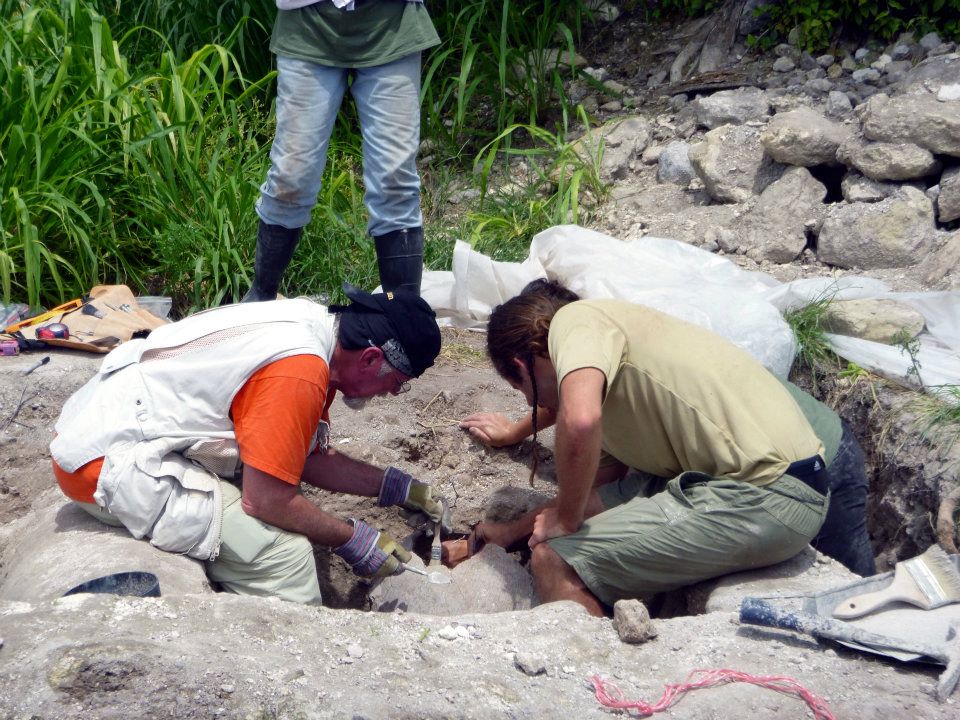 Olla (pronounced "Oh Yeah") being excavated from a 'bench' in a room.
Olla (pronounced "Oh Yeah") being excavated from a 'bench' in a room.
MRP's Maya Area Scholarly Imperative: Understanding the Classic Collapse. (Sublimation* seems to be a better term than collapse) What happened to Classic Maya civilization? Why did the entire society collapse -- region wide -- during a short crisis around 850 A.D.? Was it persistent warfare? Agricultural or environmental collapse? Overpopulation? Drought? Or some combination . . . of some other factors altogether? Because of the extent of the Blue Creek site (from 1000 - 300 B.C. to 800 - 925 A.D. collapse) and because of the length of time and extent of our studies, MRP is in a unique position to analyze a wealth of data that may provide critical insights into this mystery. This is an overarching focus of research over the coming years, into which all of our new projects will feed. This is at the vanguard of scholarship, impacting the debate about the Classic Maya collapse among scholars and institutions around the world.
Nojol Nah (South Place), Ixno' Ha (lady/ femal water) , and Grey Fox (purchased in 2011 but not worked in 2012). There are at least three additional major monumental site centers in our survey area west of the site of Blue Creek. There is much to be learned from these sites and they will be a focus of MRP's work at the Blue Creek Field Station for years to come. Mapping and excavation of the area began in the 2008 and will continue in 2012. Nojol Nah could be known as the place of many burials. Over 40 in two years discovered. Two burials were excavated at Tulix Muul in 2012 session 4.
*Sublimation is the process of transformation directly from the solid phase to the gaseous phase without passing through an intermediate liquid phase. Sublimation is an endothermic phase transition that occurs at temperatures and pressures below a substance's triple point in its phase diagram. that is from a solid to poof gone.....
the story begins.......
July 17th have not been dry since I landed. I am having fun but have an orientation meeting in a few and the internet service is slow. the pictures are from a site called Ixnoha (sp). we walked in and out of the site over a mile each way in the raid, had a cow herd escort. I am keeping hydrated. The showers feel really good. The area around the research station is beautiful. There is a great background story on Blue Creek community in Orange Walk District of Belize.
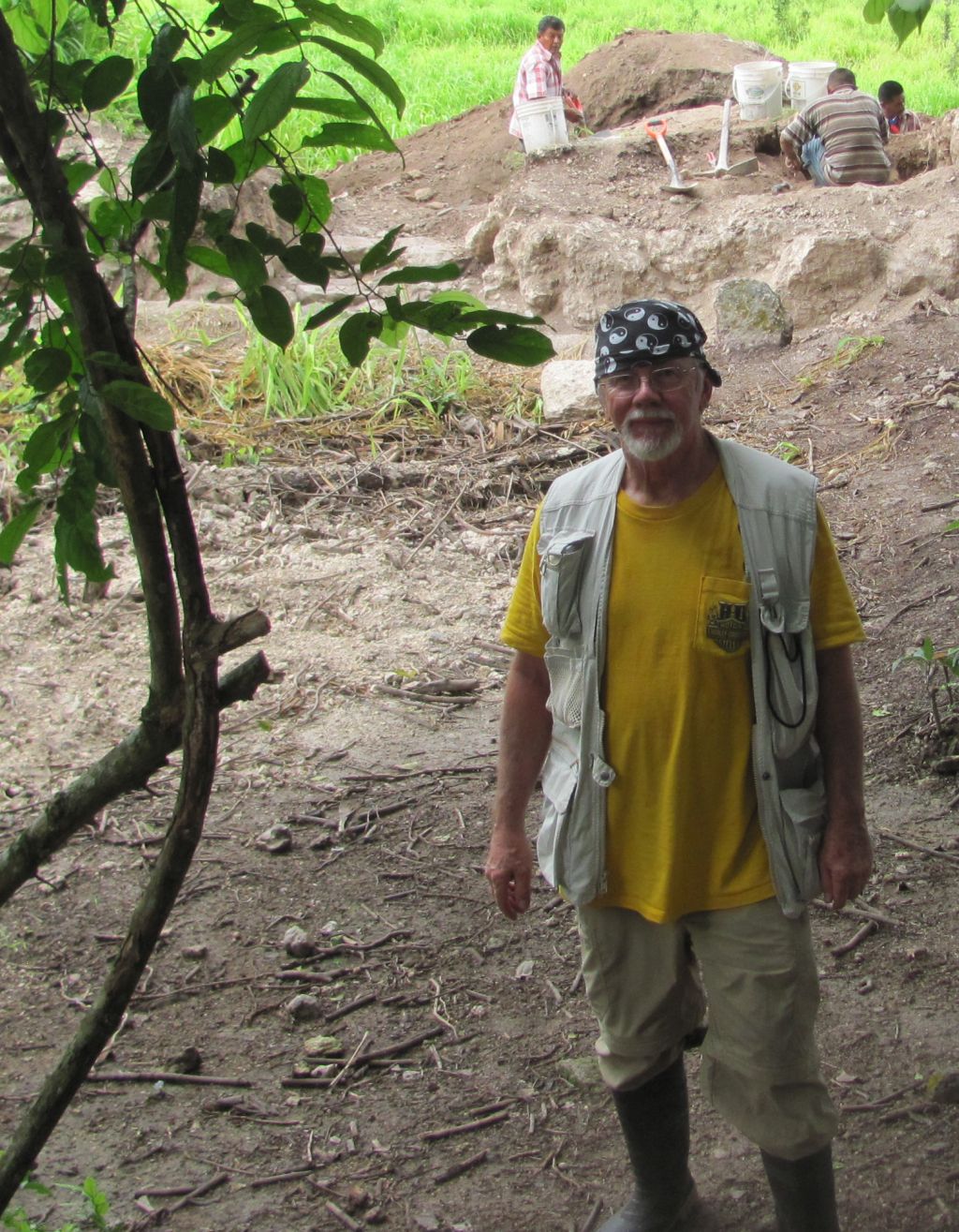 structure 9
structure 9 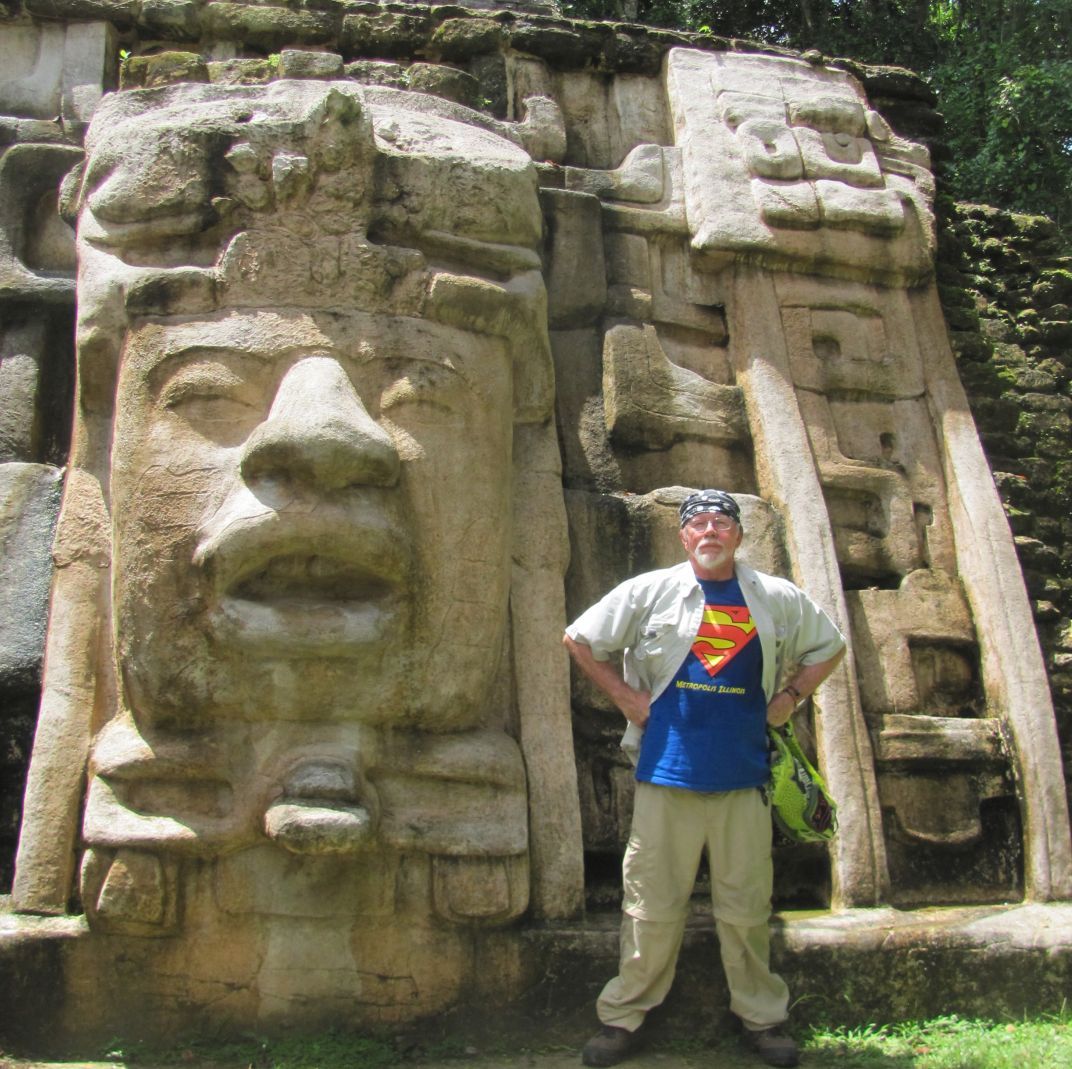 Lamani super dude...
Lamani super dude...
"Greetings from Belize. Where the current Belize population is about 250 thousand and in the time of the Maya population was nearly 1 million. There are literally occupation sites all over the land. Here in the Blue Creek area they have completed the Blue Creek occupation center and this year the teams have been working on ‘Ixnoha’ (means something like small female water / creek), which was a mile walk in and out. We walked in to look at it yesterday. I sent pictures of that site yesterday. Another team is working on ‘Nojoh Nah’ (south place).
I was chosen as the only new member of the Tulix Muul (dragon fly) elite residence team. The rest of the team had already been working there for two weeks so I was the newby. " I think it is Turix Muul but I am only reading the spelling.
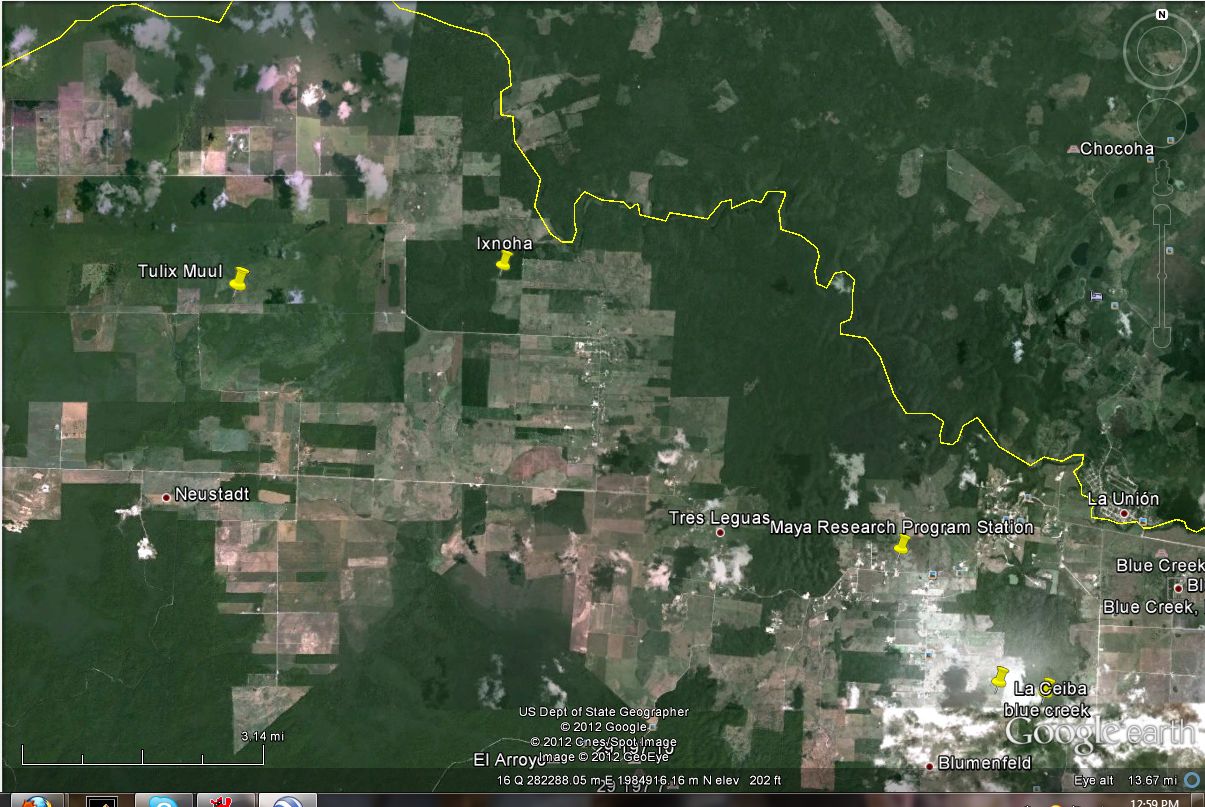
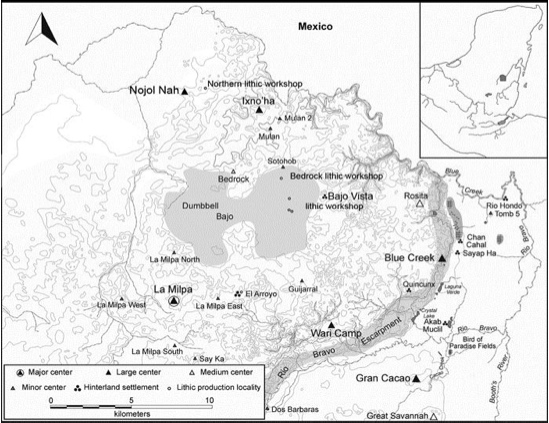 Here one can see the location of Nojol Nah in relation to Ixnoha.
Here one can see the location of Nojol Nah in relation to Ixnoha.
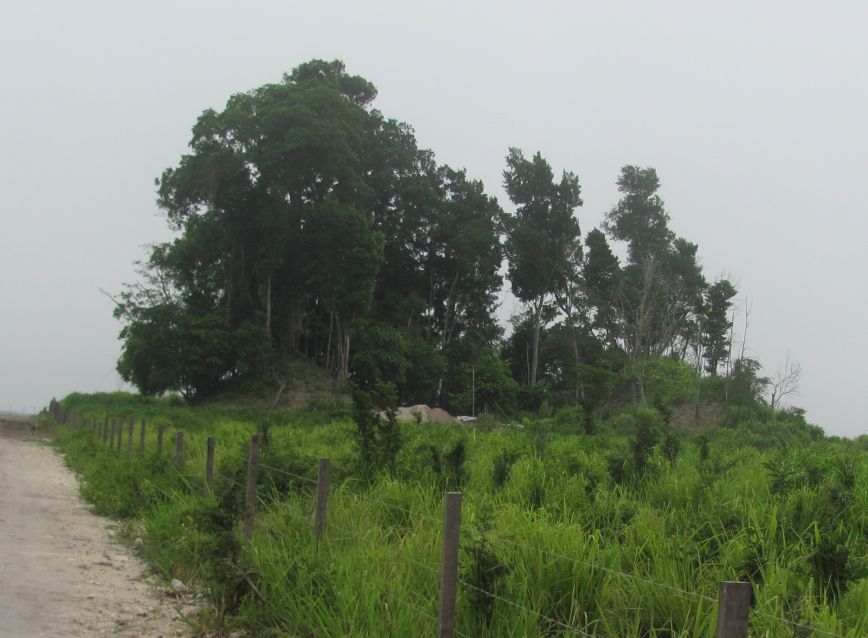 Tulix Muul (Turix Muul)
Tulix Muul (Turix Muul)
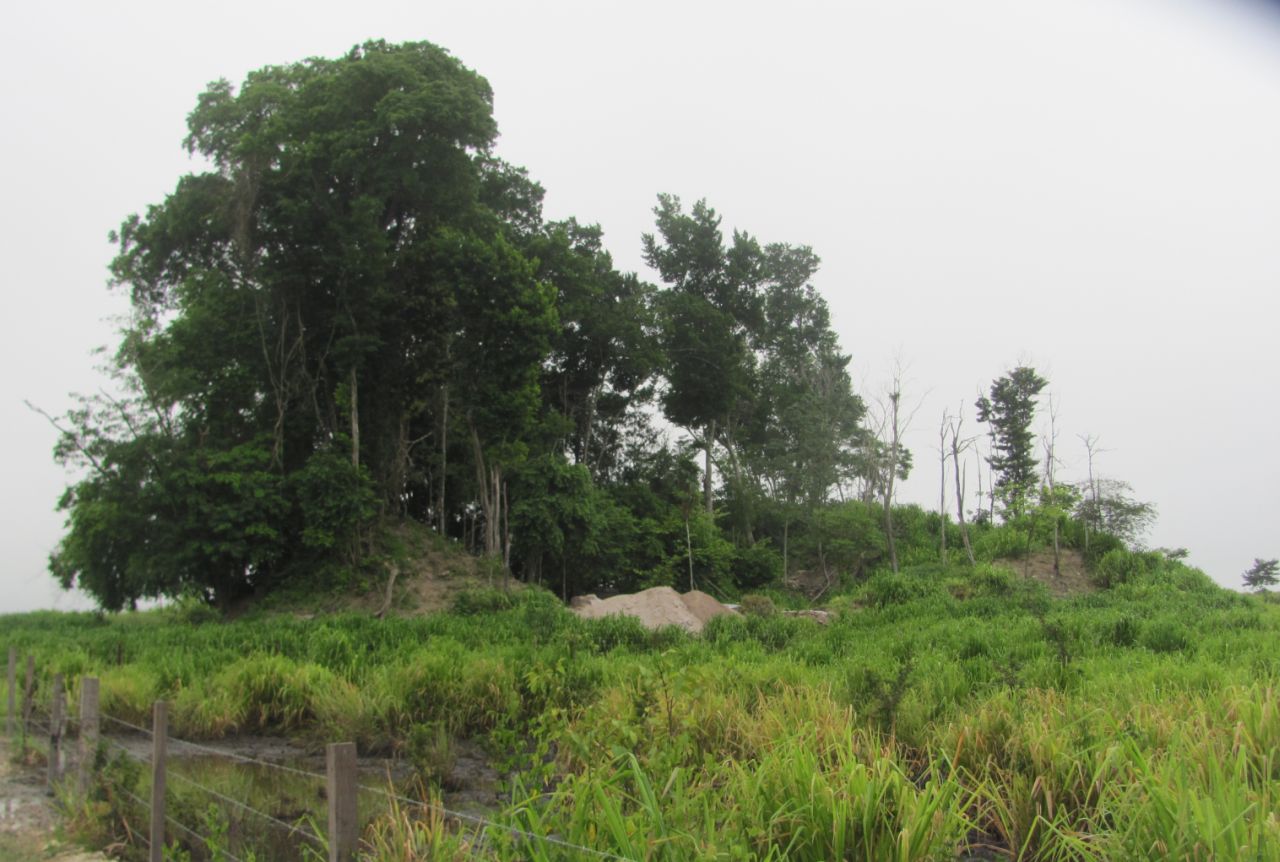
This is the South Side of Tulix Muul looking North. The fence is North South orientation. Structure 9 is just behind the pile of fill that was removed. Structure 2 is on the Left and a little of Structure 1 can be seen on the right. Orientation of Tulix Muul is about 17 degrees off of North or equal to the Latitude of the area. The Maya were obsessed with the calendar and the sun moon planets and as the Sun was a god to them the relation of their building to the sun was very important and may have let to the building sites that could have been orthogonal being aligned slightly to the Northeast on N -S walls.
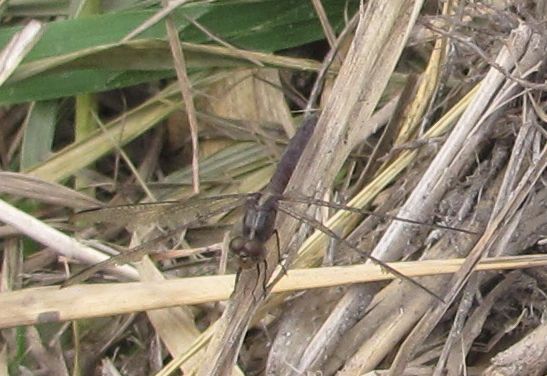
Lots of dragon flies. and a Grey Fox Ancient dragonflys in Kansas were giants
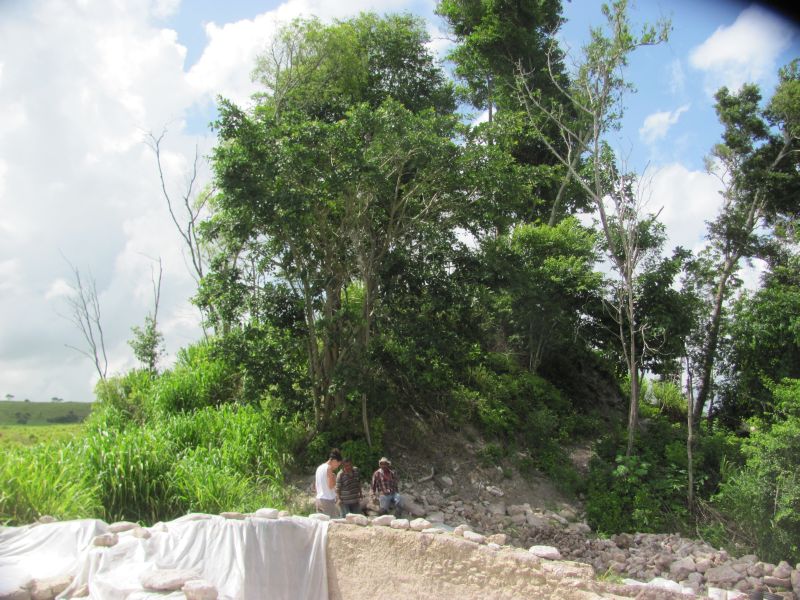
Looking SSW toward structure 1 over structure 6
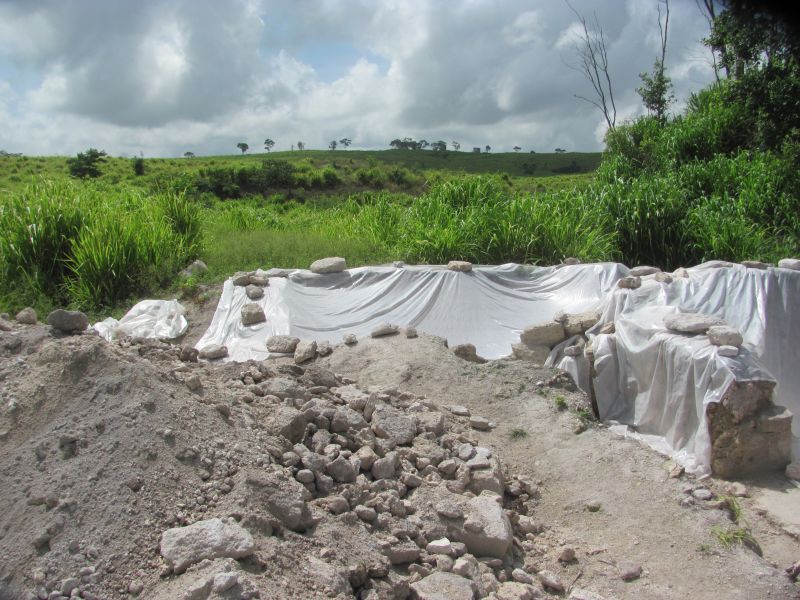
Looking directly West from Structure 6. Every mound you see is an occupation site. like under the grass in the center.
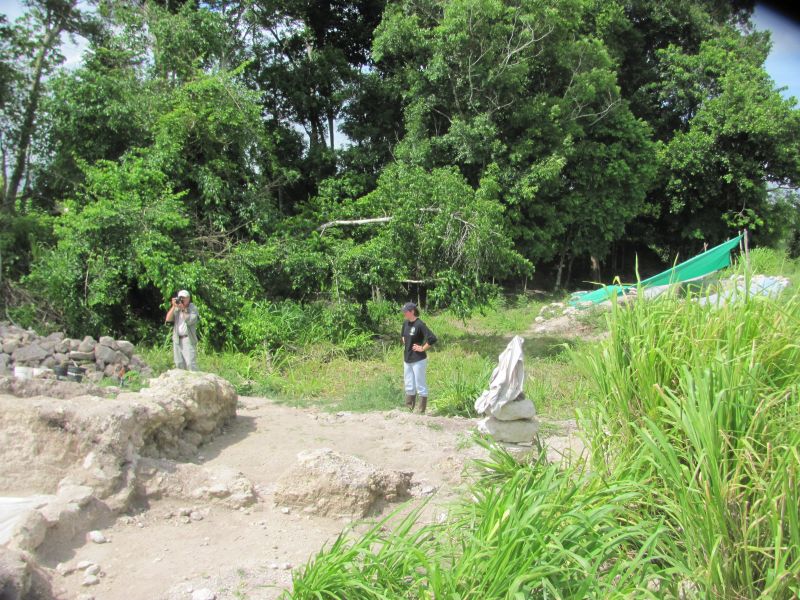
Looking south to structure 2
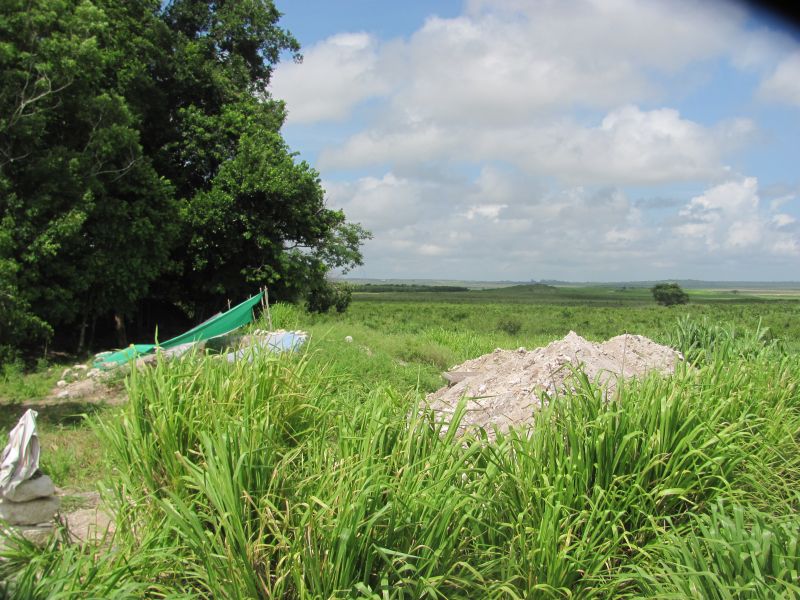
looking SSE toward Guatamala and other occupation sites from Tulix Muul
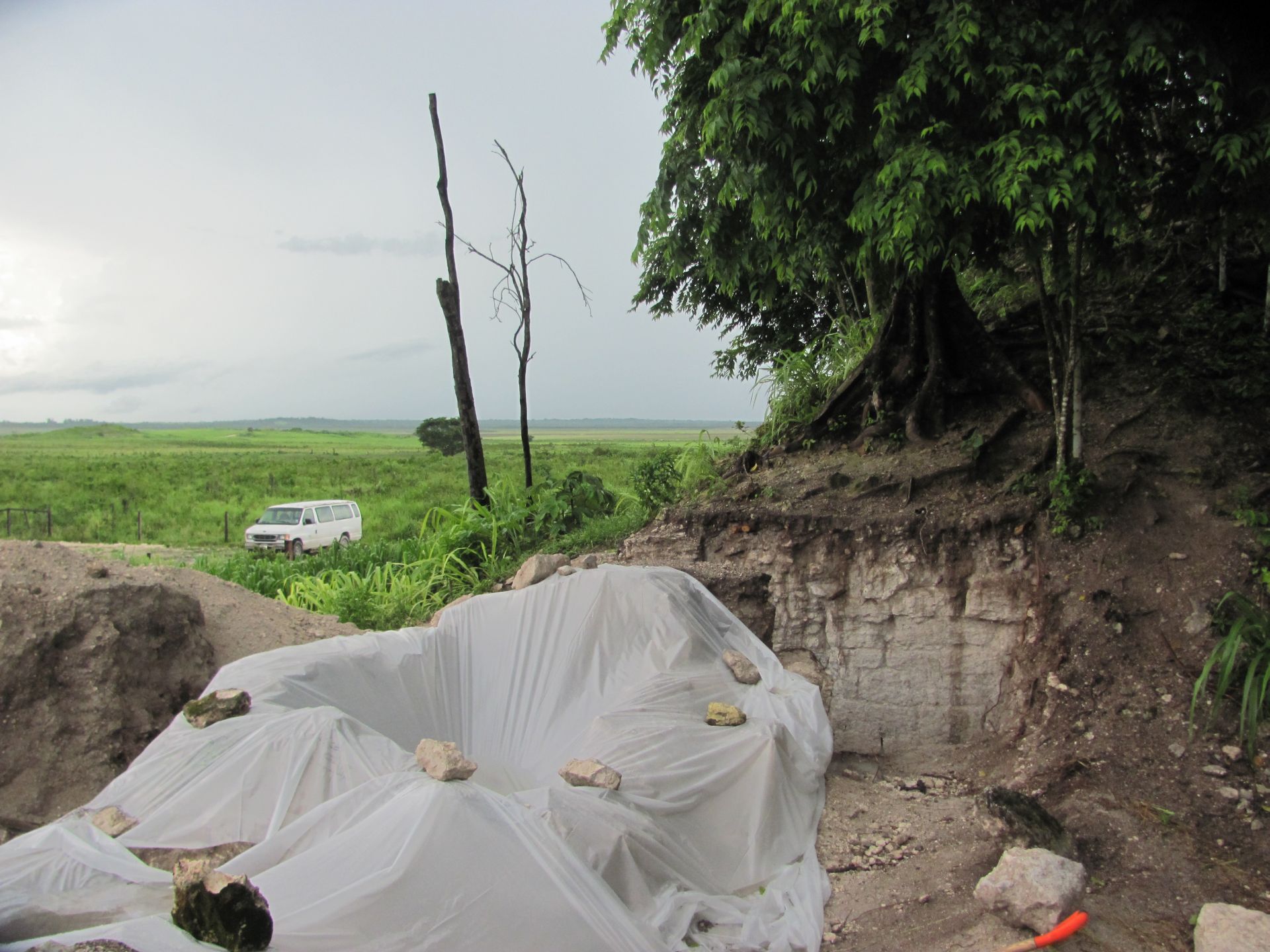
LOOKING SW TOWARD STRUCTURE 2 AND THE VAN IN THE FEED LOT
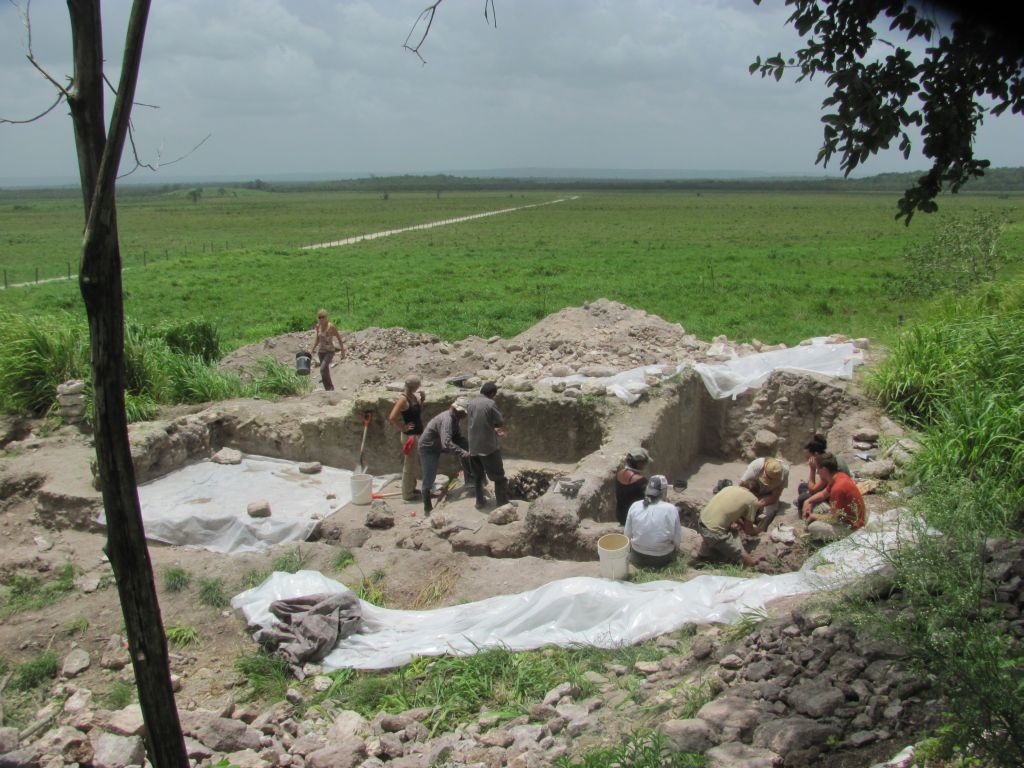
Best example of the site team working on Structure TM-6 sub op. B
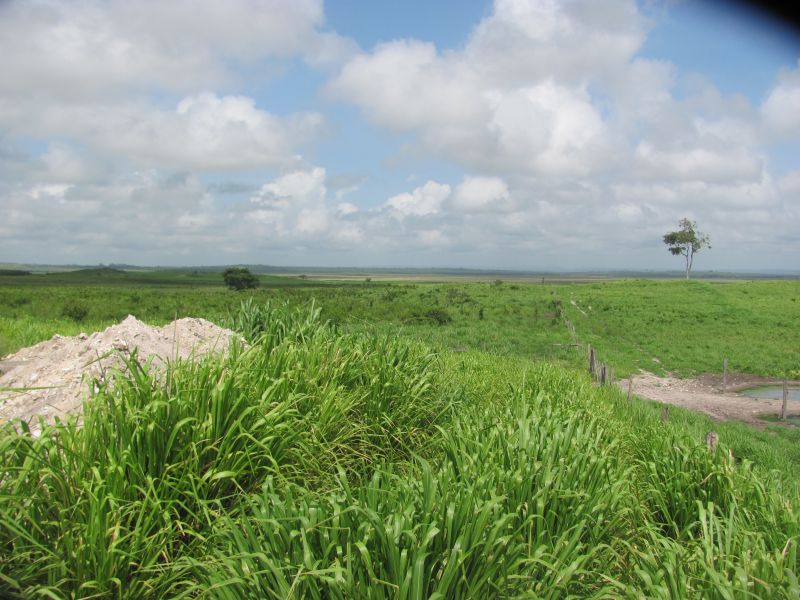
Straight West toward Mexico. There is a site under every tree standing.
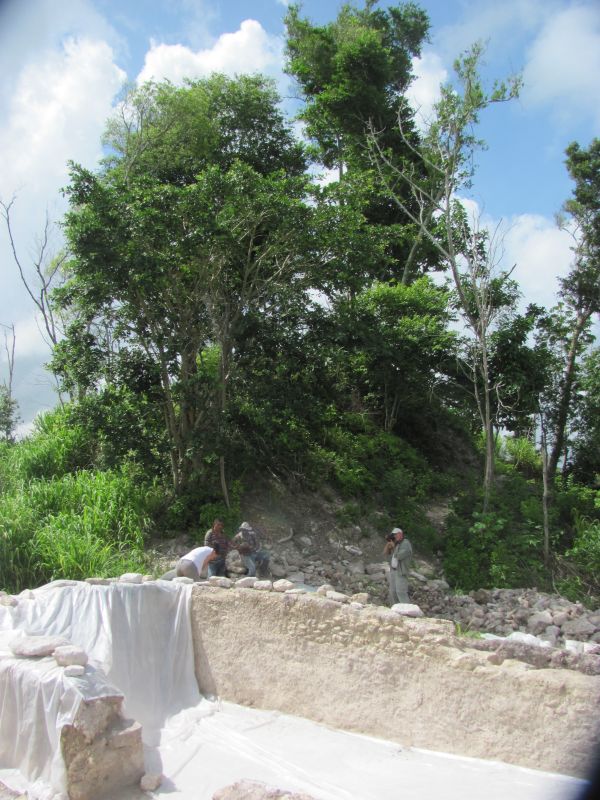
Looking over Structure 6 covered clean floor room toward structure 1
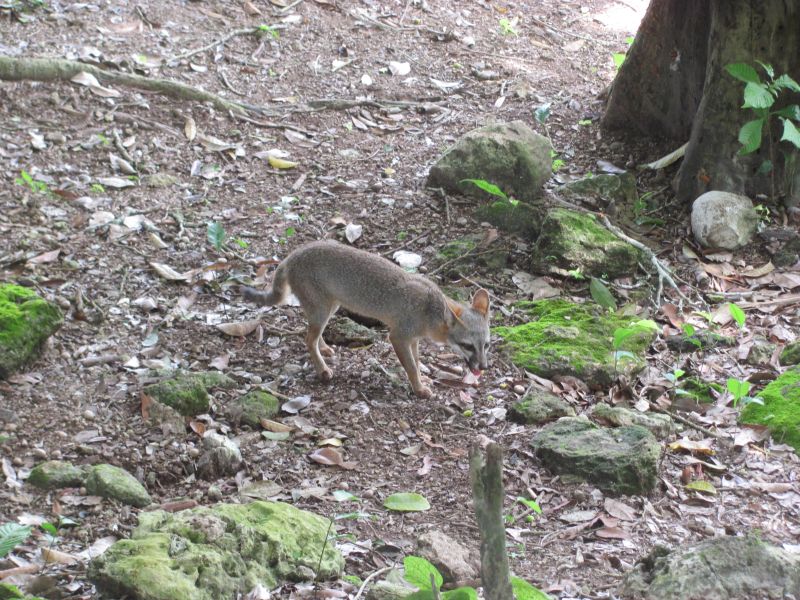
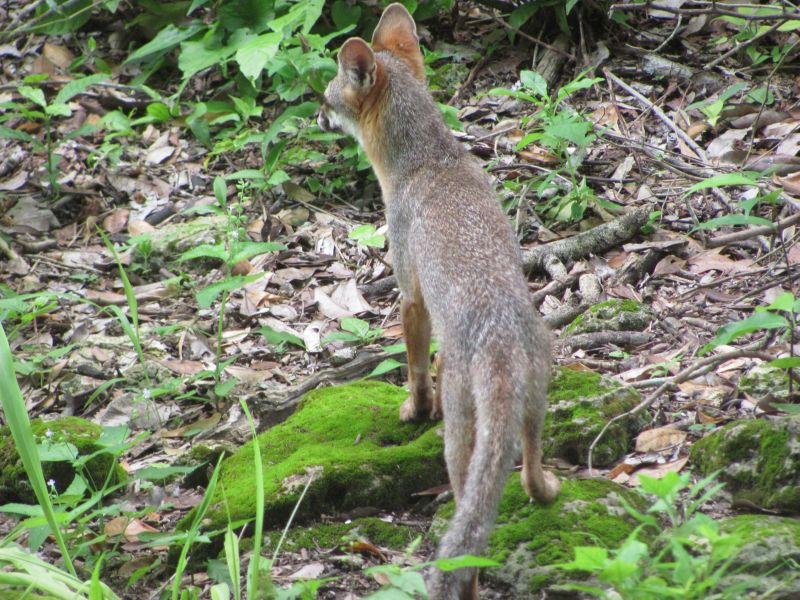
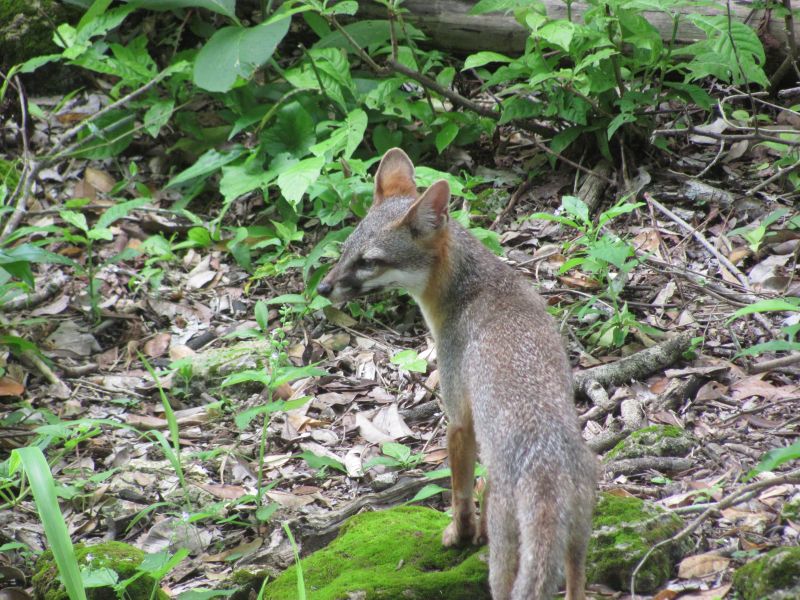
Grey Fox is the name of another site
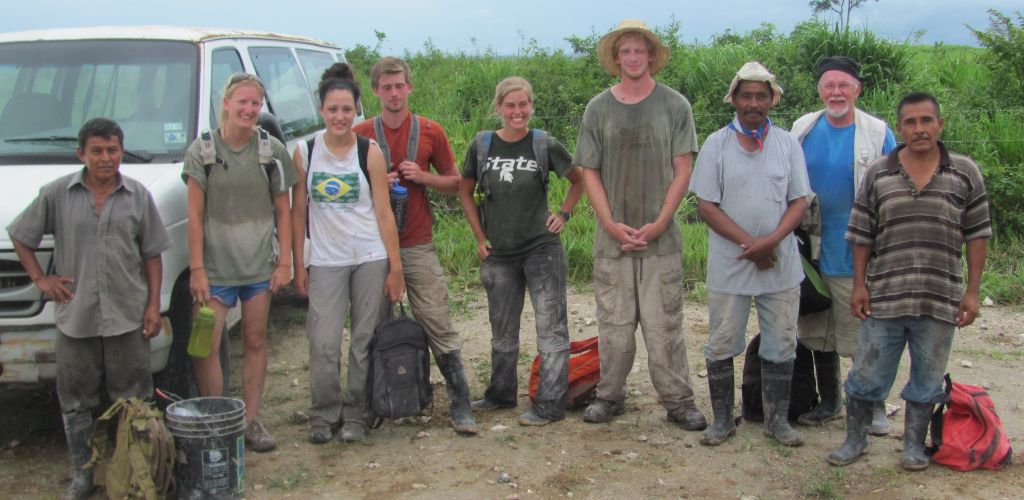
Pete, Hollie Lincoln, Alicia Statler, Philip Green, Heather McMullen, Ian LeMasters, Fidel, Norm and Simon Simon and his relative Alberta who works in the kitchen are Maya. It was a sweaty day, we were missing Trav Hildebrand and Gail Hammond who were back at the lab..

Dirty Girls Hollie and Heather... on the right is my muddy glove and I got water inside the Wellington Boots that day. This picture was taken in the feed lot... Later the scene of the great Cattle escape...
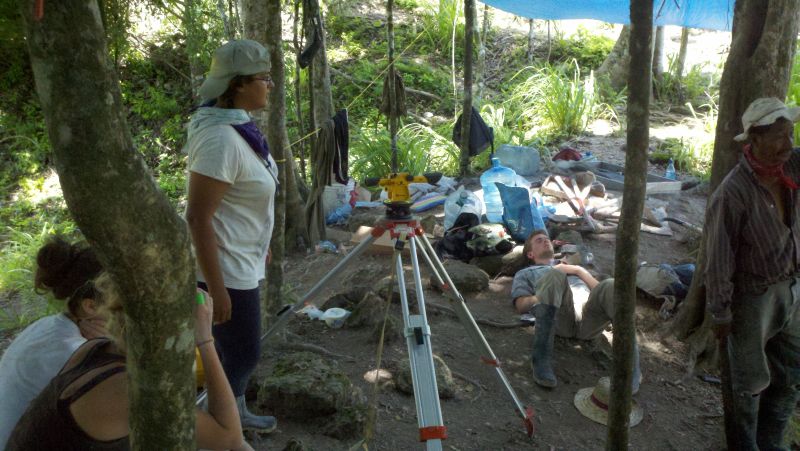
Gail Hammond taking elevations from the structure between structure 1 and 2.
The pictures I am sending are of our day Wednesday. The significant items not associated with the site and artifacts were the constant afternoon rain and the Africanized Bees (killer bees) picture attached. We had excitement when the killer bees flew low over the dig site. How low can you go.... I came on the day they began to dig into the ‘benches’ that were added to the Elite houses. The excitement was finding a very large pot (Olla pronounced Oh Yeah) under the bench closest to the east pyramid. We don’t have it excavated due to the rain, but tomorrow it is likely to be revealed.
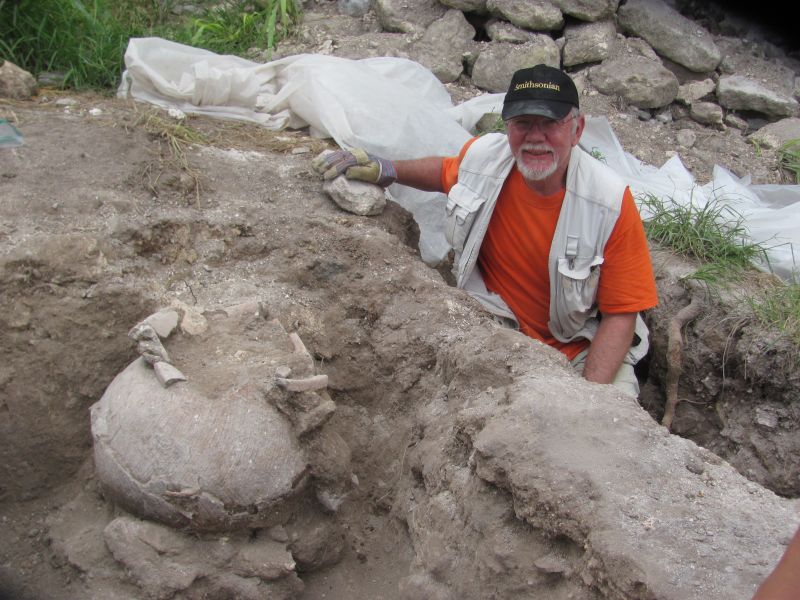
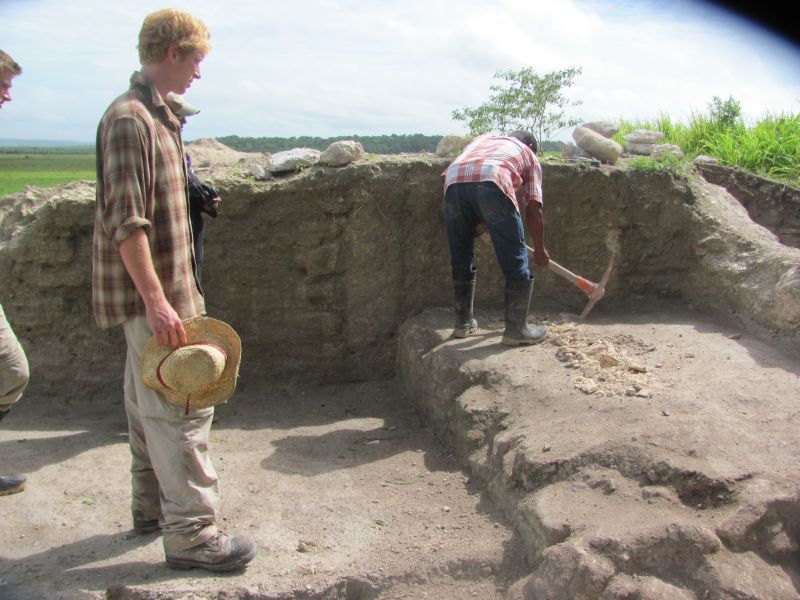
Picko Grande How you break through the plaster to get under the floor or the bench.
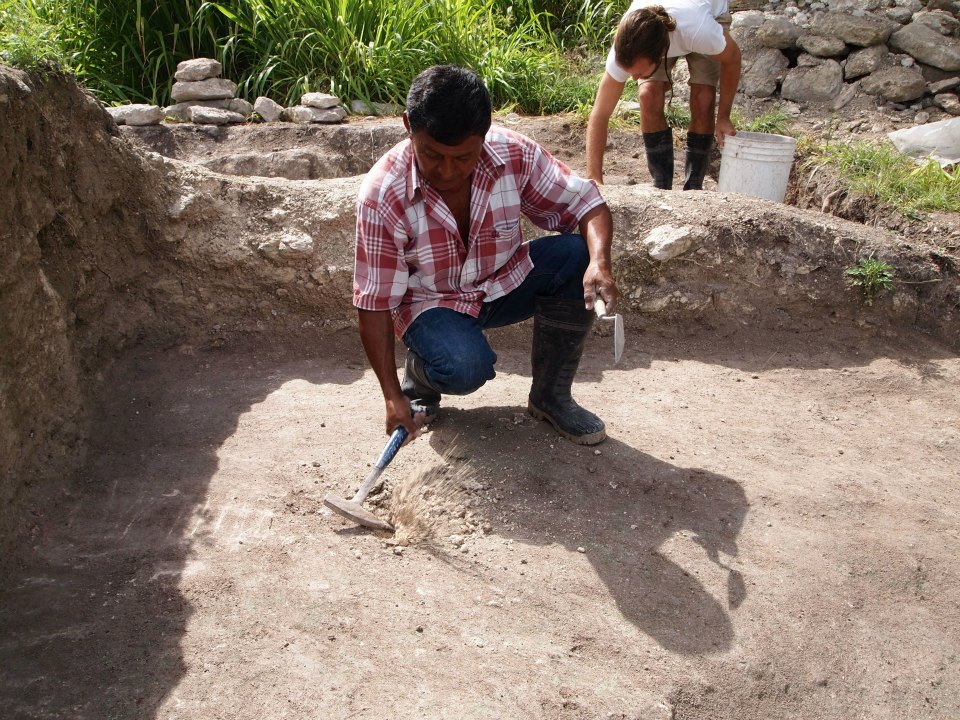 Picko Chico how you start a unit.
Picko Chico how you start a unit.
African bee picture taken on Structure 1... maybe I should have not stopped to take a picture.. they flew low over our dig site.....
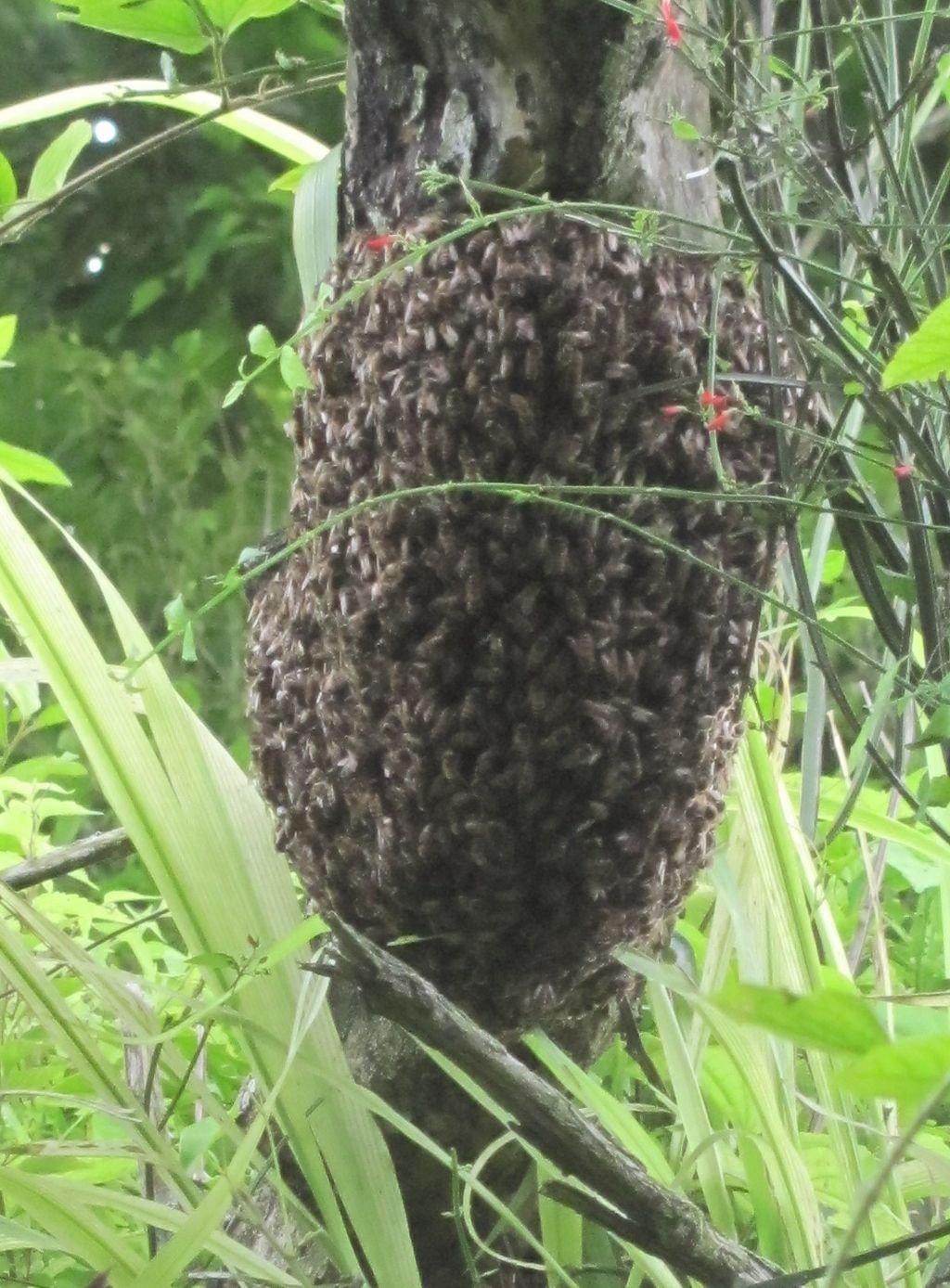
My smiling face in two views at Tulix Muul in knee boots

00 breaking into the bench (Maya labor)
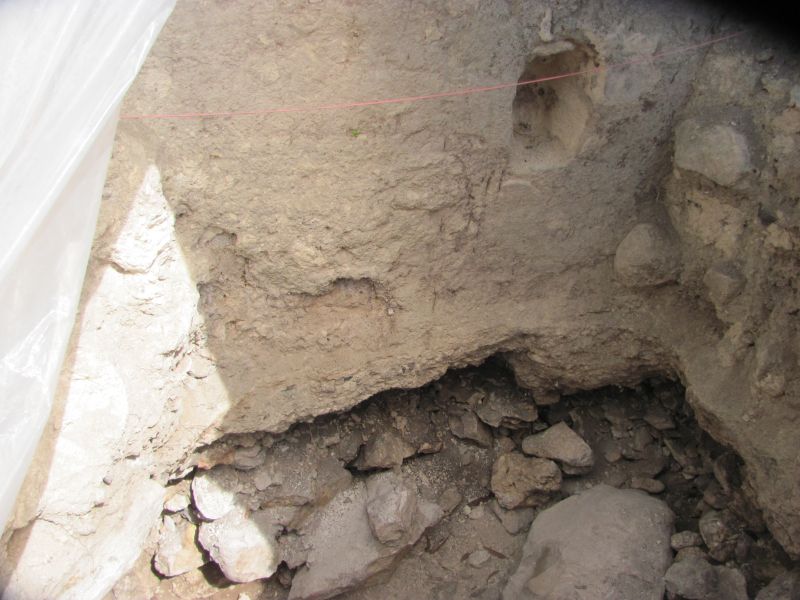
01 bldg. A floor excavation
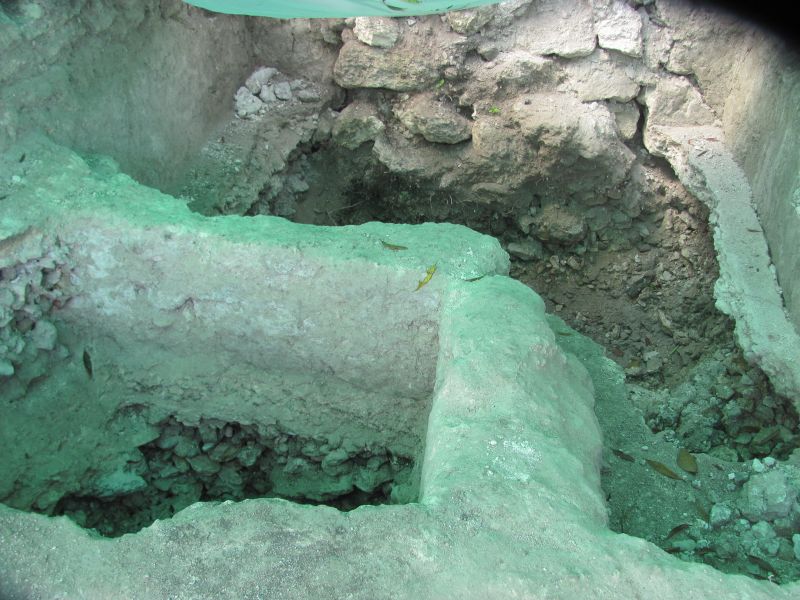
02 different view same room
Below is the finding and reveal of the Olla from Structure 6 sub op. TM 12-01
Friday was significant in getting all of the dirt and rocks out of the big pot and finding
a broken whistle at the bottom. So the crew chief gave the instruction to dig through the plaster
floor under the pot to look for a the burial. We finish tomorrow. The structure at the
other structure to the south has markings on the floor with black lines indicating a burial so
tomorrow they will be digging for that and we will finish 'screening' debri from
our excavation.
No rain today. Last night was hot and still to start but I had to
put the sheet on me in the morning. We take breaks when we need them. I am trying to
quit and take a break soon enough so I don't get dehydrated. It is cooler than Kansas and
between the pyramids the trees are very high and shade our rest area. I was up taking a
break when the male gray fox walked through the area picking up heberries and scraps from our
lunch garbage. He was a pup when they started seeing him a few seasons ago. Now he just looks
at you and walks by. Tropical birds are cool sounding. Lots of varieties at the site.
If you go to google earth and dial in the UTM coordinates you can see where out team site
is at. The hat on the rod is a bench mark for maping the structure. there are four rooms
on the structure we are working with two benches and the buried Olla (big pot).
Learning a lot about the Maya part of Blue Creek and Orange Walk district in general.
The pot type shows the pot was buried between 650 and 850 AD. Found a worked bi face
tool and a animal shape. Lots of pieces of pots of various ages but not many lithics.
An intern, Travis Hildebrand (facebook friend), found an obsidian blade under the pot before it
was removed in pieces. The same
intern has to put the pot back together. This old computer and the slow unit at the cafe across
the road suck so please excuse the mistakes.
I am learning to figure out what it costs to make a 'normal call' to Debbie. I guess it is about
six Belize bucks ($3) for however long we talk. I don't time the calls. It is great to have the
convenience of being able to call the states. It is hard to keep my feet dry as there is water
always sitting on the floor in the shower room. try to get your feet up dry them and put on underwear
and pants without getting your pants wet. The cold water only showers are OK in this environment.
The area around blue creek looks like the Ozarks with some paved roads and landscape with occational Palm trees
and rice fields in the Bajo (low areas). Out near the site the landscape and roads look like Eastern
Kansas country roads with pot holes. The cattle are called Brangus but look like Brahama (sp) cattle.
There are some goats and lots of chickens and one farm had little miniature deer. Beautiful country.
The mennonites do not like any government and work crimes themselves. Cattle rustling means
they found one of the rustlers who accidentily got his knee caps broken and revealed the
other two rustlers. The students are noisey and some are very young and act it. The staff
is professional and seem to handle the situations well.
I am making the team coffee for morning have remembered to do it every day so far . ha. Margaretha
has apple bananas and another variety out for breakfast so I just had one of the small bananas
like in the first day picture. It does have a slight apple flavor with the banana flavor.
Norm
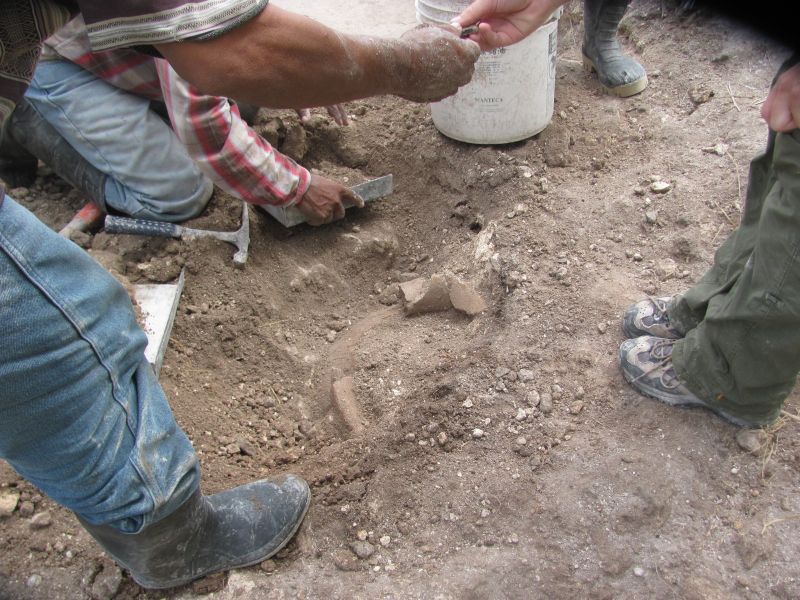
03 finding the top of the big pot (Olla) bldg. B sub op 6 TM 12-01
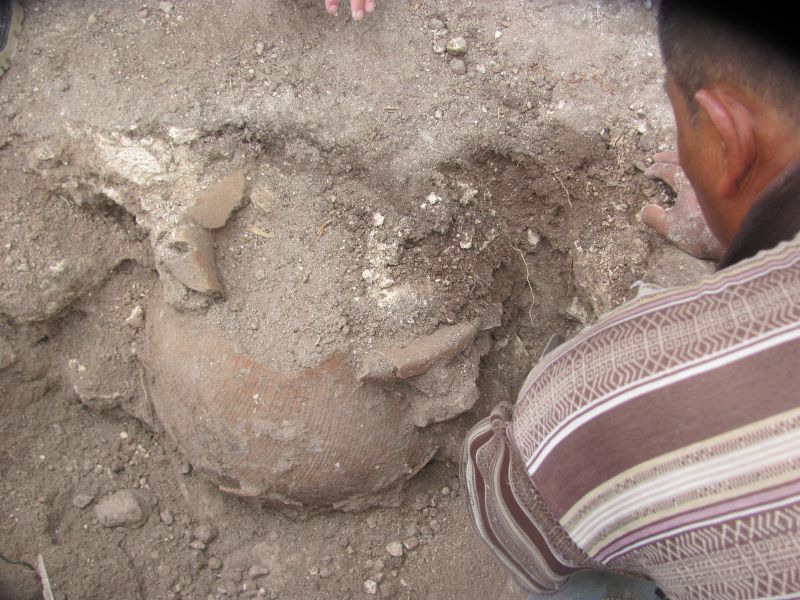
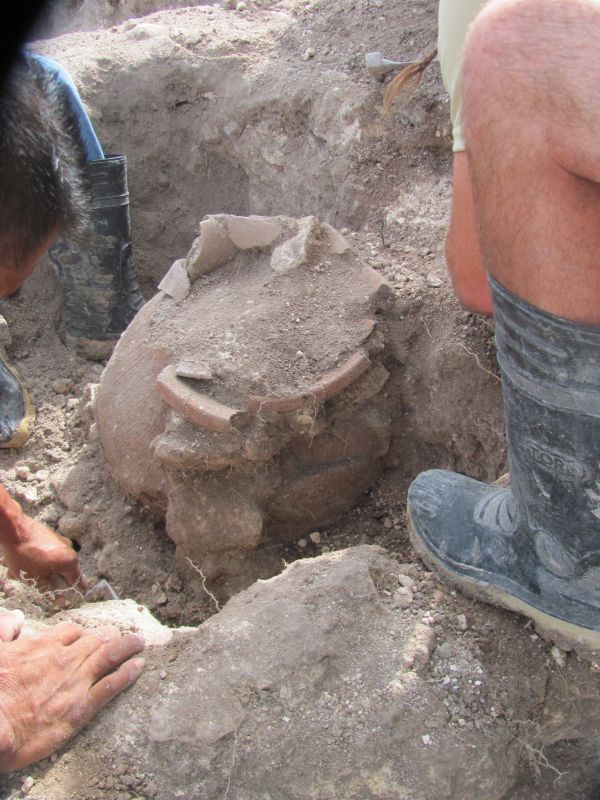
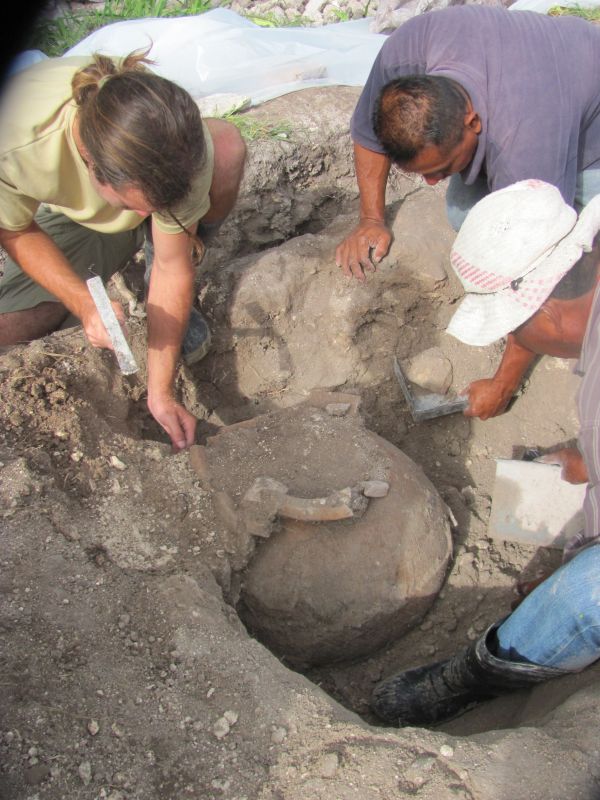
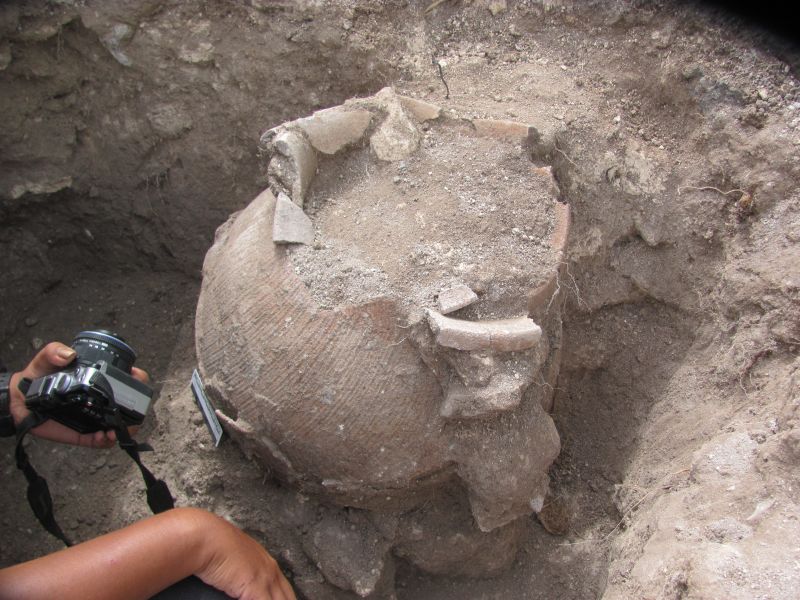
Notice the Thick Neck and later look how thin the wall of the Olla is lower down. This supports the Olla when it is inverted.
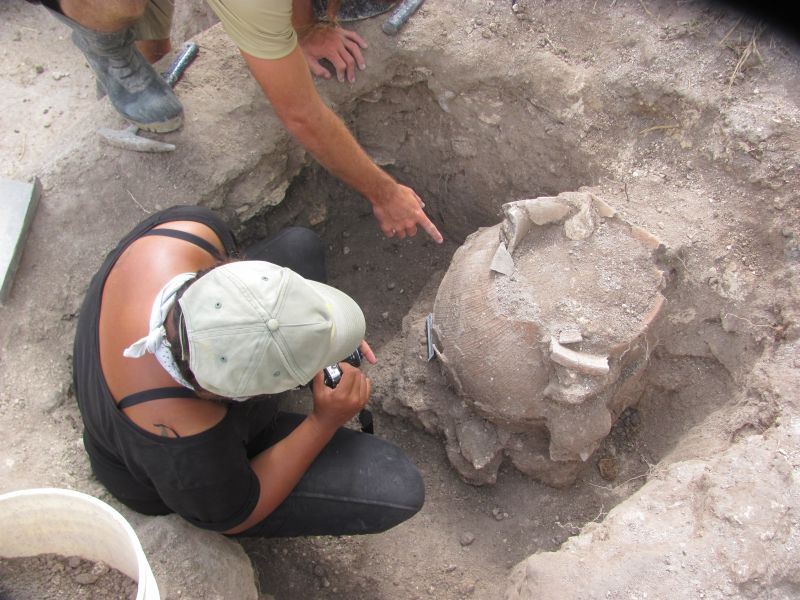
Gale getting the right aspect for the pictures
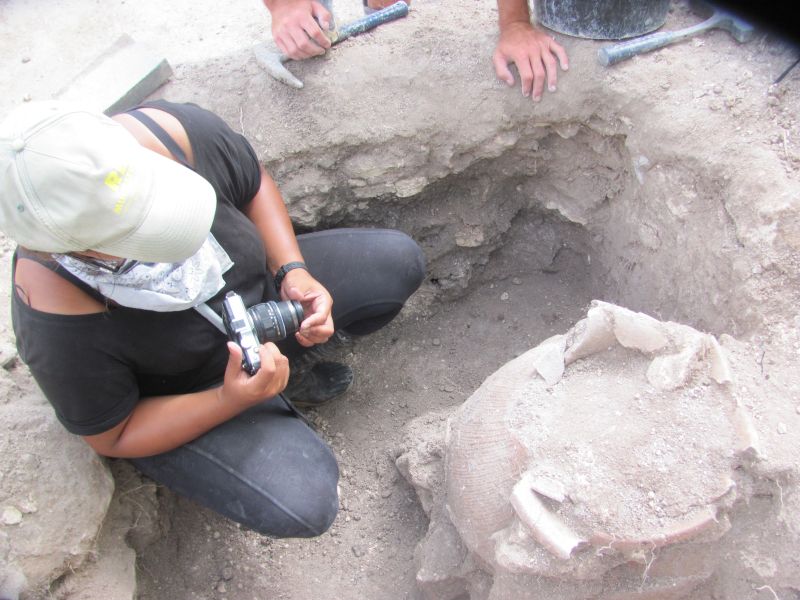
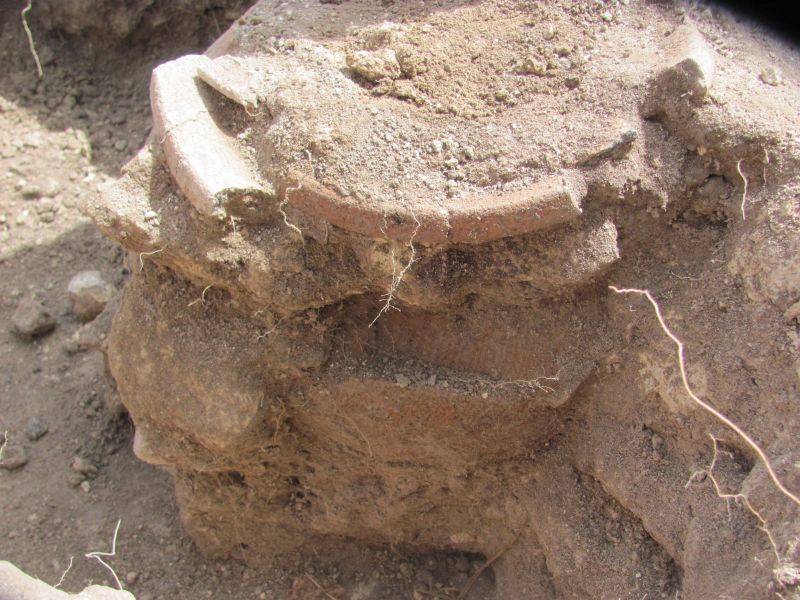
Really thick lips...
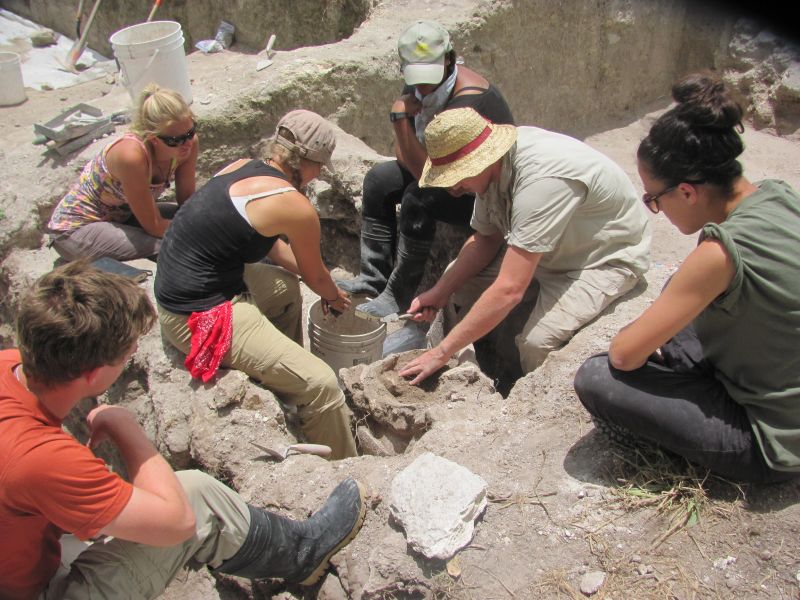

We know there is a pony in there somewhere...
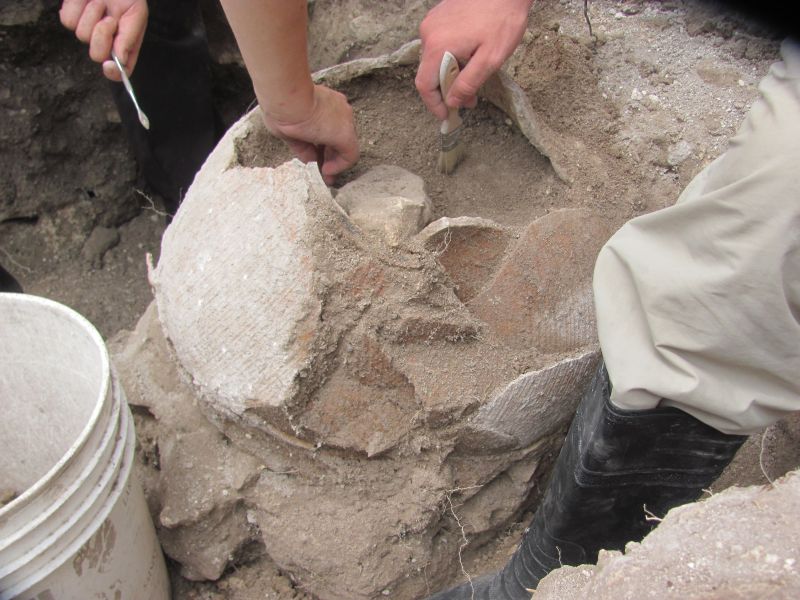
The Olla was filled with fine earth like material and small lime stones.
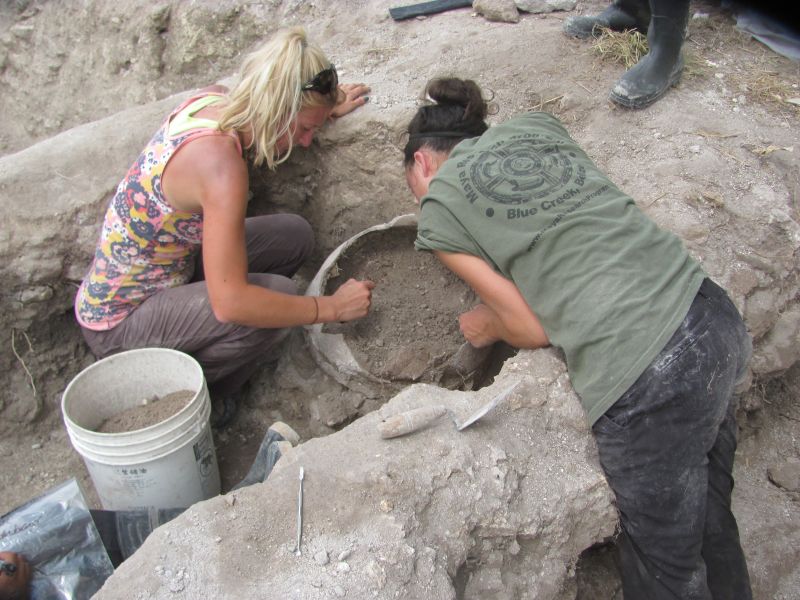
Simon at work on the Olla
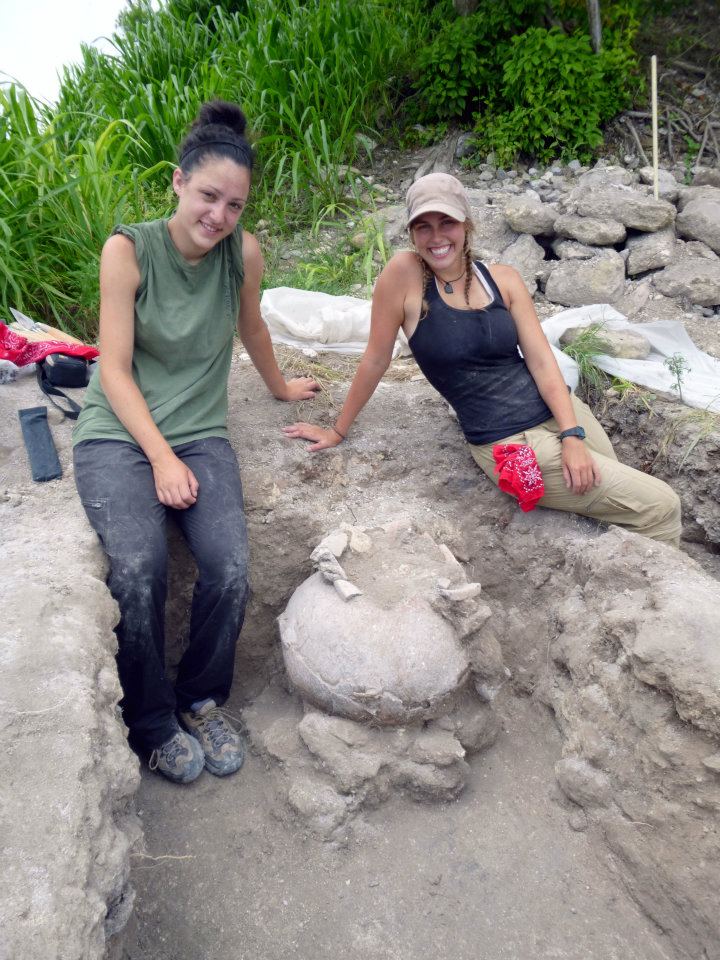
Alicia and Heather
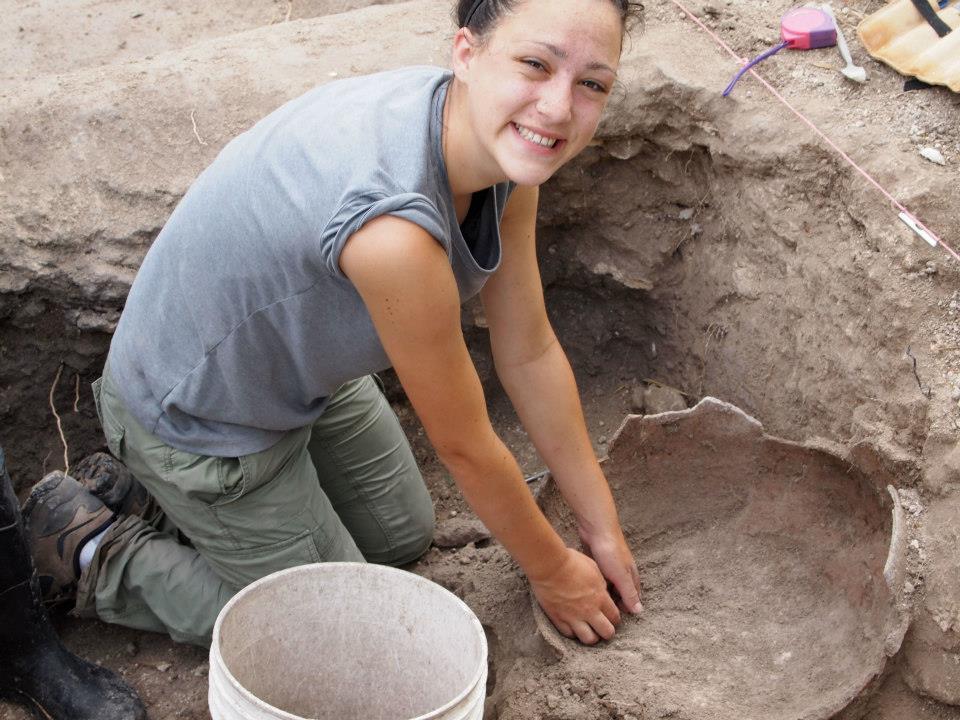
Hope that is not someones ashes in Alicia's hands....
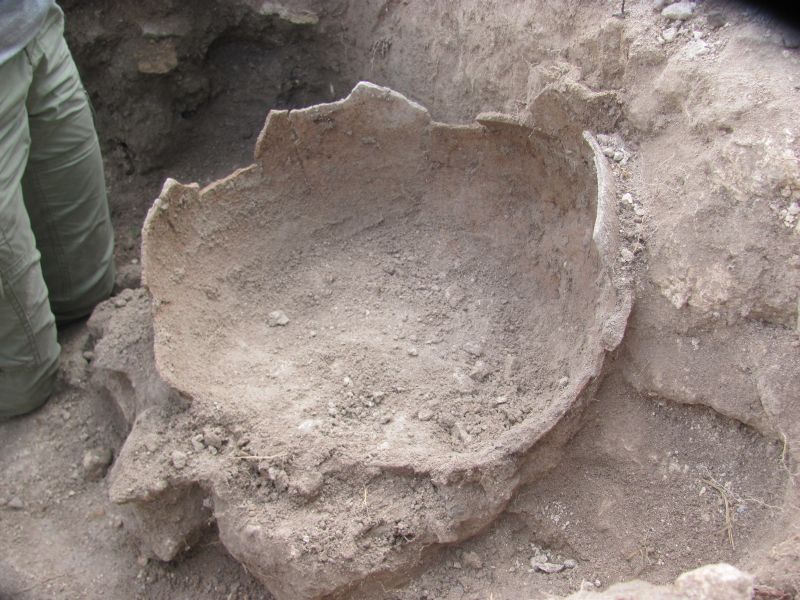
fine material all the way to the bottom
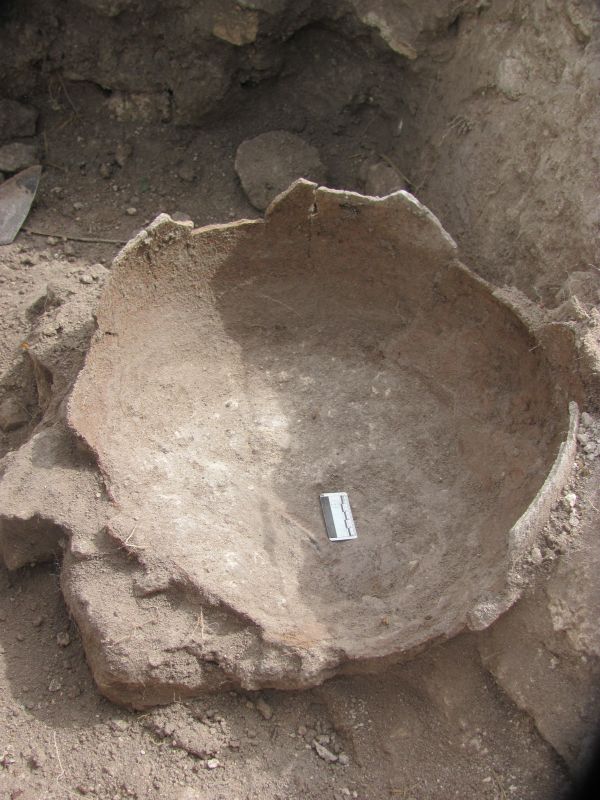
Notice how thin the wall is lower on the Olla
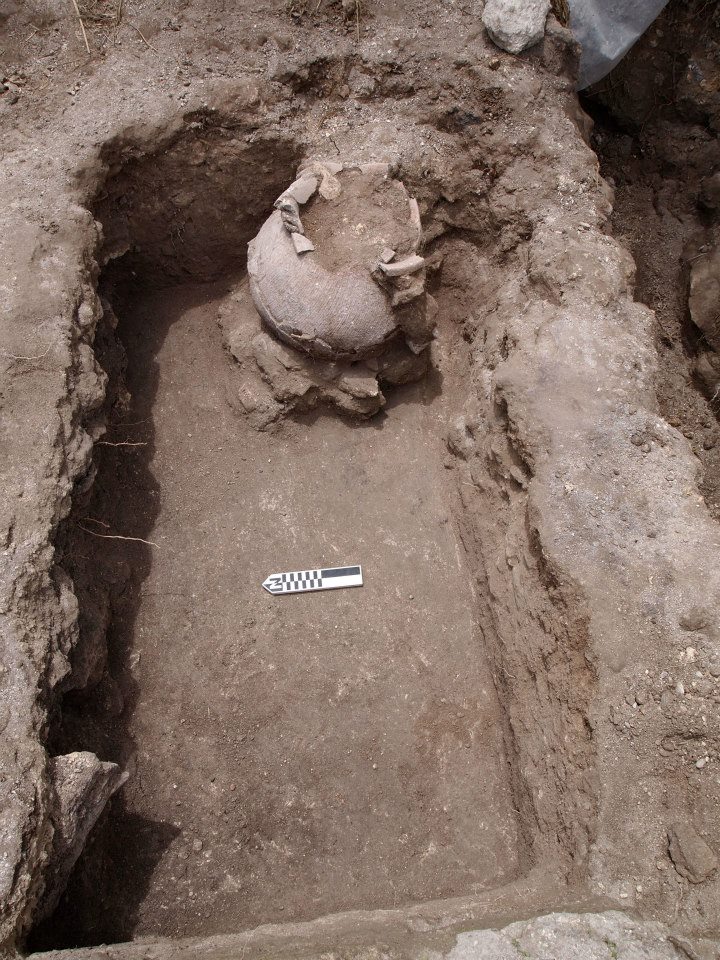
position in bench closest to structure 1 there were two plaster floors on this bench. One was very shallow like the benches in structure 9. 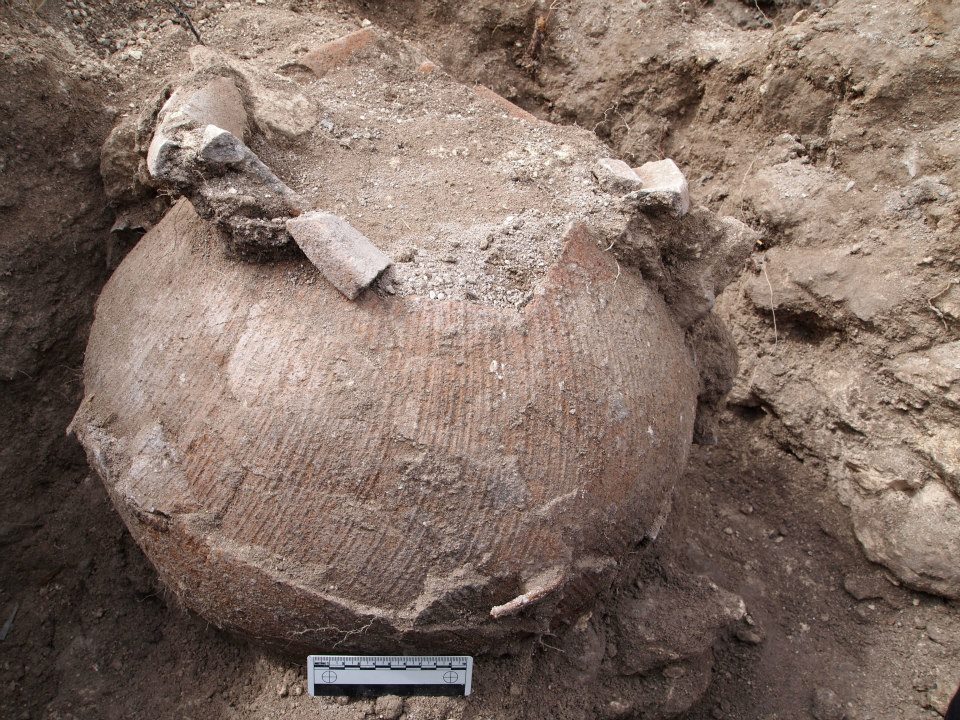
cord roughening different top to bottom
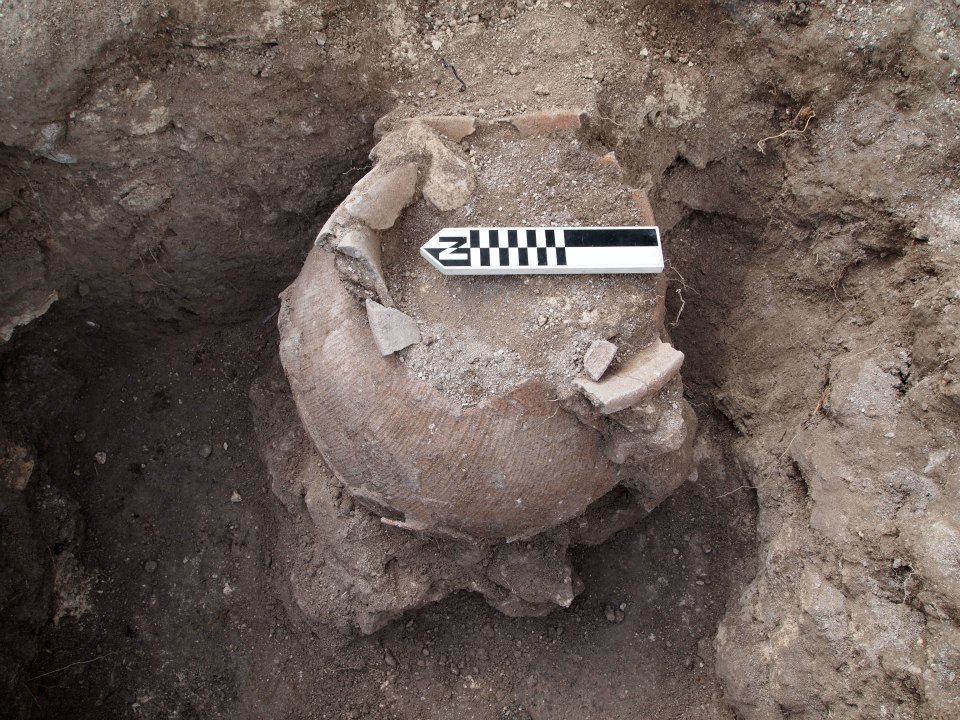
Travis found an Obsidian blade a the base of the Olla
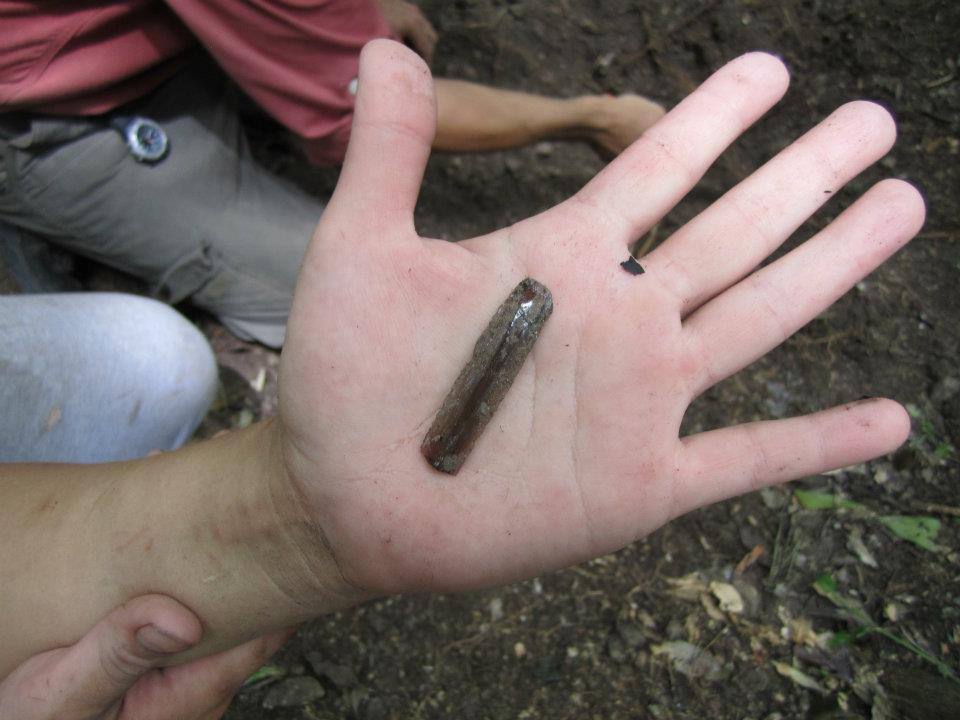
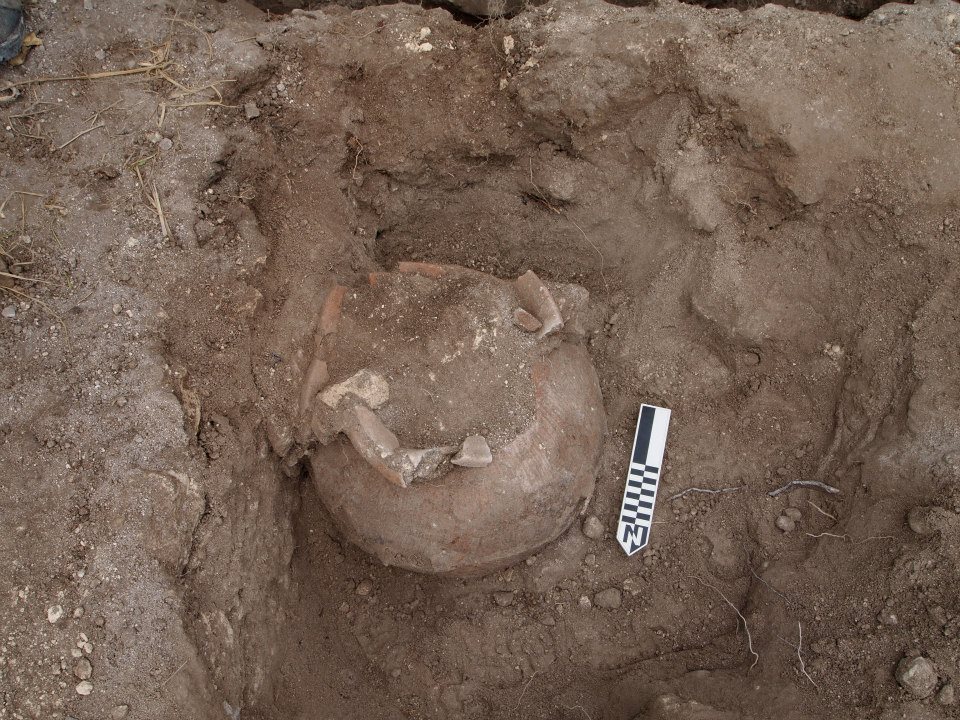
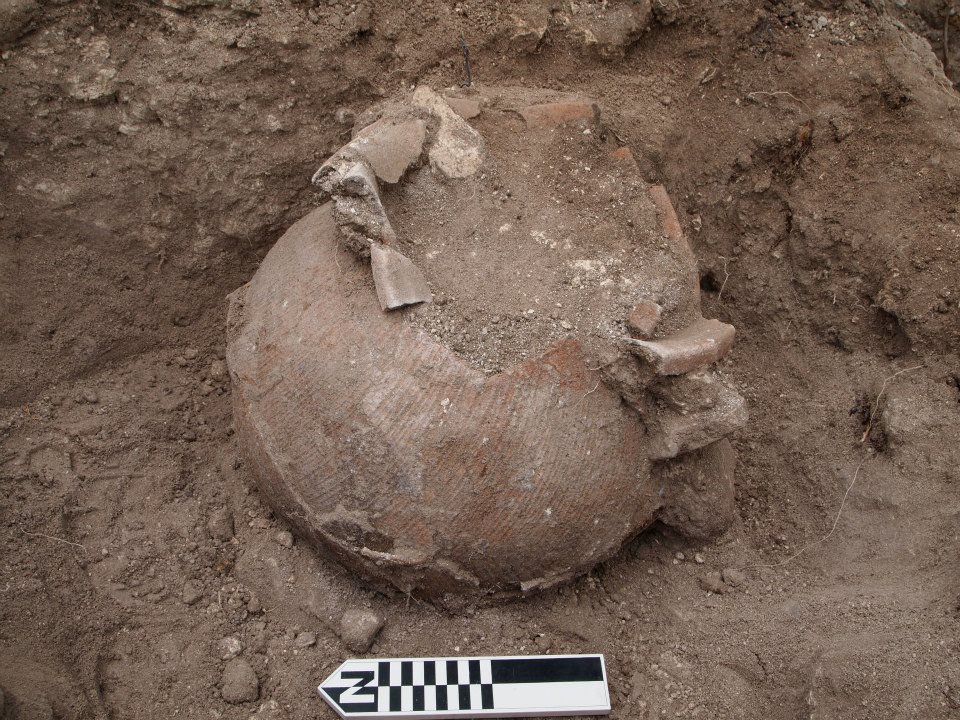
Saturday July 21 working but not getting overtime. belize 43 and 44 are the two pyramids looking toward the North and a little east as were on the road in the cattle pen where the van is parked in later pictures.
Today stated out continuing to dig the cobble and bolders out from under the double plastered floor of Structure 6 building b. From the pictures of the guys in the hold you can see what the cobble and rocks we removed looked like (46). Sort of like being on a chain gang moving rock. See the pile of rock we started with. The mounds are enormous as you see from other pictures looking at the pyramids. screening we found some small sherds of pottery but not much else in the fill. I took pictures of the d dragon fly the site is named for(48). The name means dragon fly hill. 49 is the room behind the ones we were working on and you can see the base of the pyramid in the bakckground. 50 is a better view of the structure 1 pyramid on the east side of the site. 55 shows how high the trees are on the pyramid. 51 is looking at sites that are not excavated to the east. 52 is the measurement team who came out to see what was needed to measure accurately the walls etc. 53 is looking southwest toward Guatamala. 2 years ago this was rain forest and the mennonites burned it making seeing the sites easy and giving them more room for cattle. 54 is looking straight west. 56 is a large flat rock found flat side down on the bedrock. Not sure what the lines are for. 58 is climbing out for pictures.
(belize 59) is the south excavation where I walked up a stair case that was uncovered by that group yesterday and it had been used by the Maya between 650 and 800 AD.(belize 59) they were covered in this picture. You can see our van in the crew pictures in the background. Vacaros were driving cattle in the field next to us south and you can see their heads in the grass belize 60. The big find today was a burial. see the end of a large leg bone on the right (belize61) and a dark (jade?) bead what looks like a flower pattern white disc about the size of a nickel and a white stone the shape of a keystone that must be burial good. Fidel found this about the time for us to quit so this was what it looked like. 62 and 63 are close ups of the artifacts. belize 64 shows the excitement with Fidel standing and beaming at his find. you can see how far down the bed rock was. the crew pictures are self explainatory.
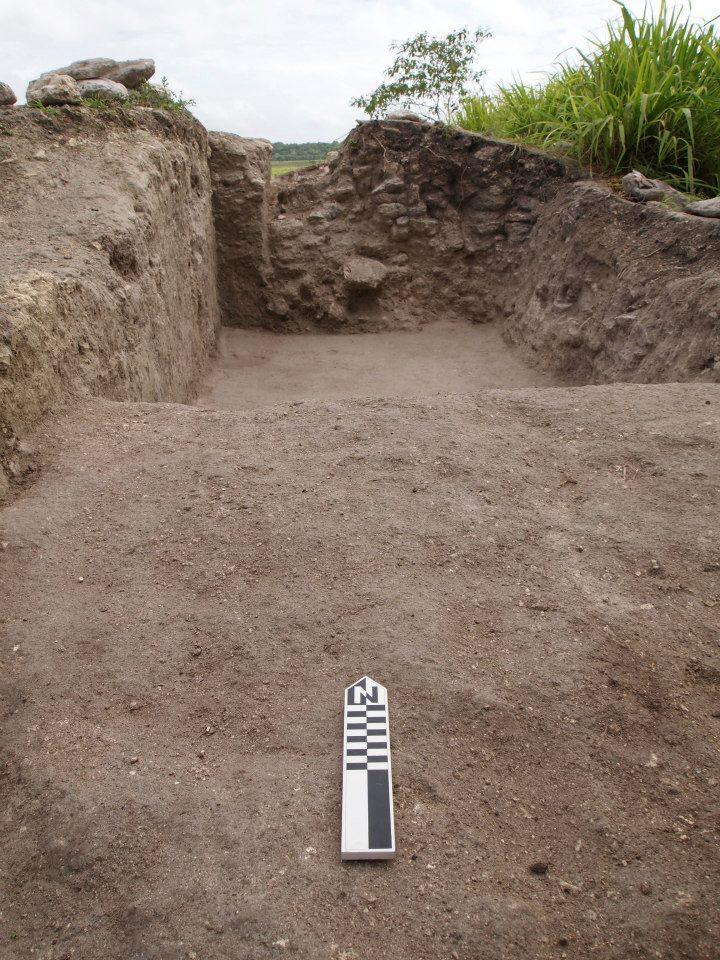
Olla room before digging out Olla showing the closed door to the room on the North that contained the biface in the wall
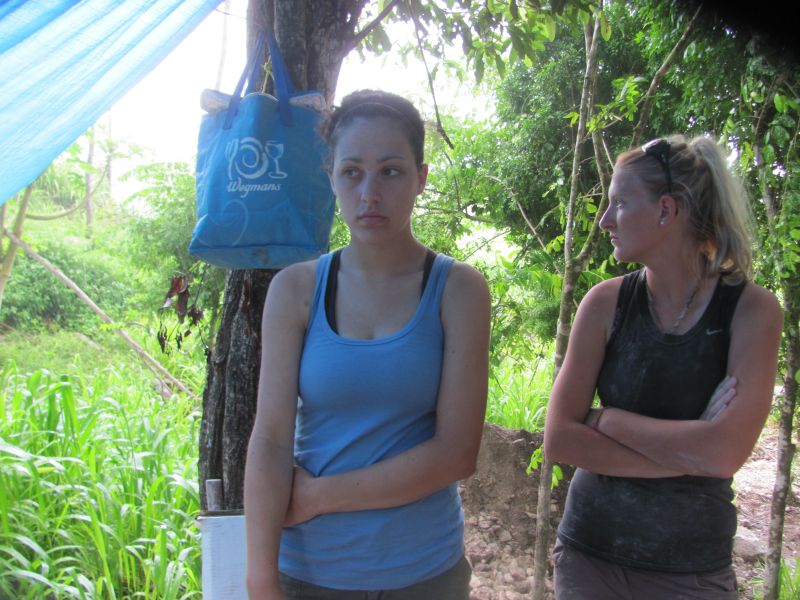
Alicia and Hollie waiting for the rain to stop... wet wet wet.
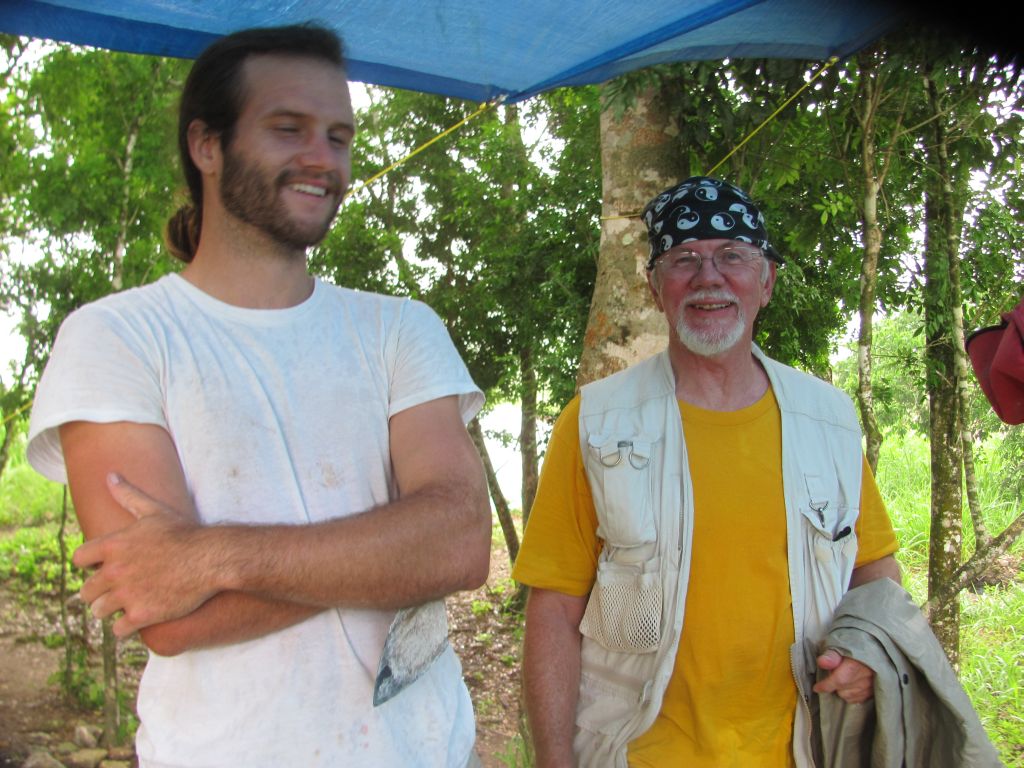
05 team members waiting for the rain to stop and that is a poncho in my left arm
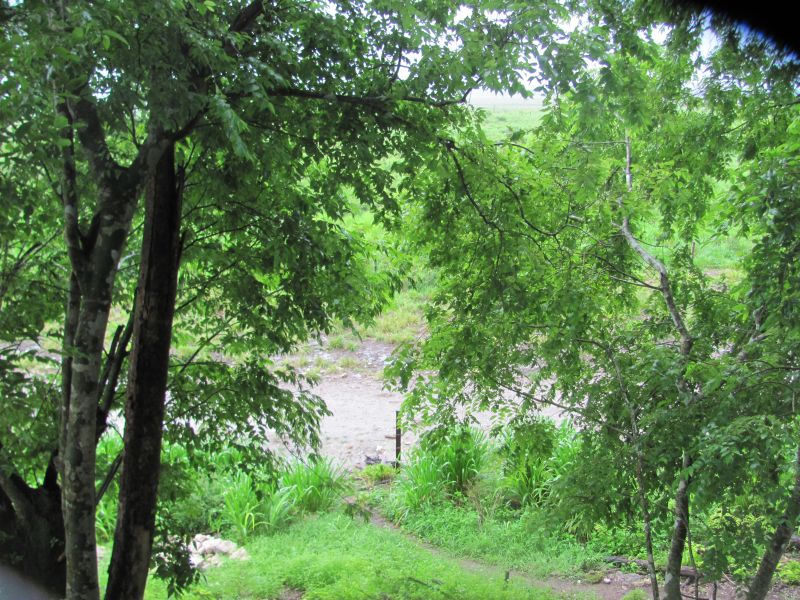
07 view west from the top of the structure 2
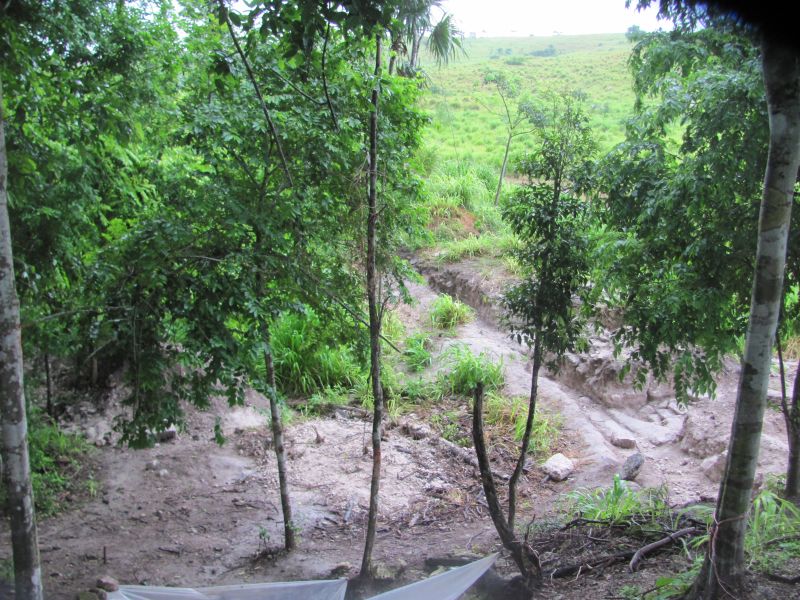
08 view looking south east from the top of Structure 2
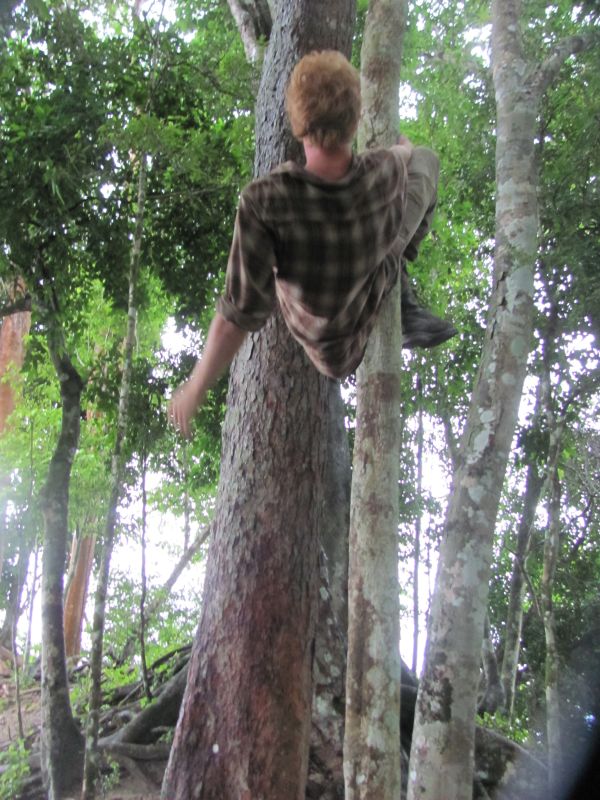
09 Ian climbing a tree on the wall between pyramids to clear the view for the transit elevation pictures.
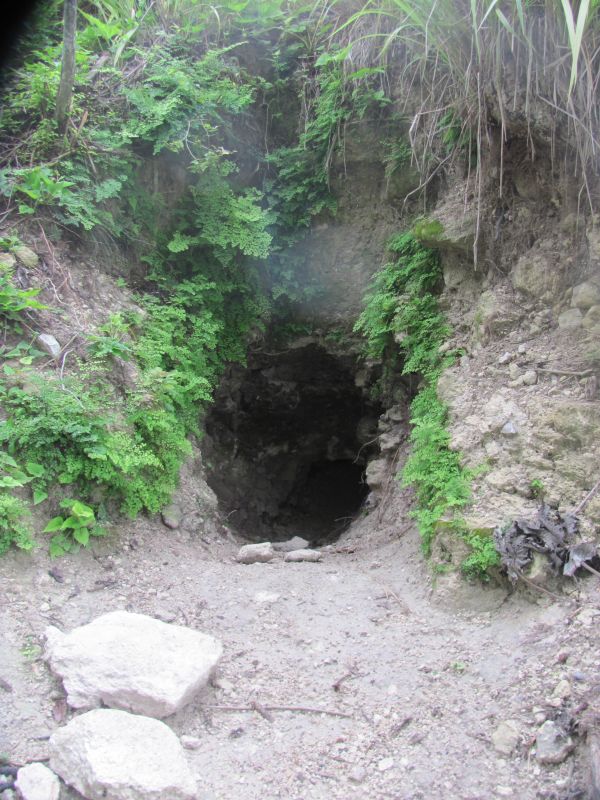
70 looters trench in the small pyramid (Guatemalan looters) crawling in revealed a room.
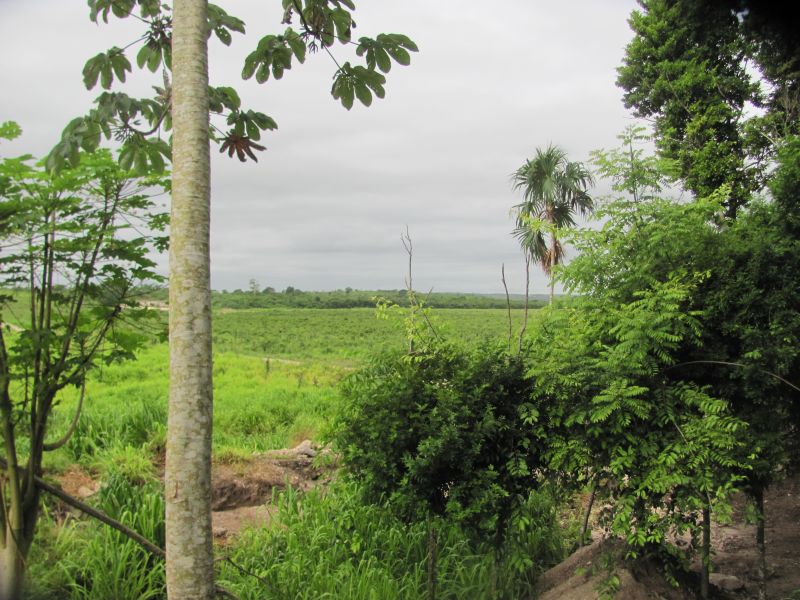
71 looking toward Nojol Nah in the tree line to the North
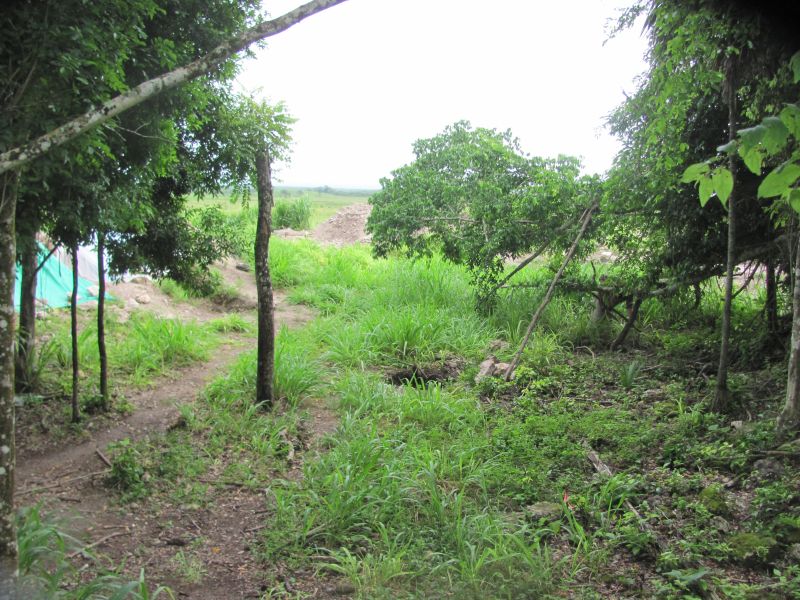
72 plaza between pyramids looking North toward structure 6 from the wall between structure 1 and 2.
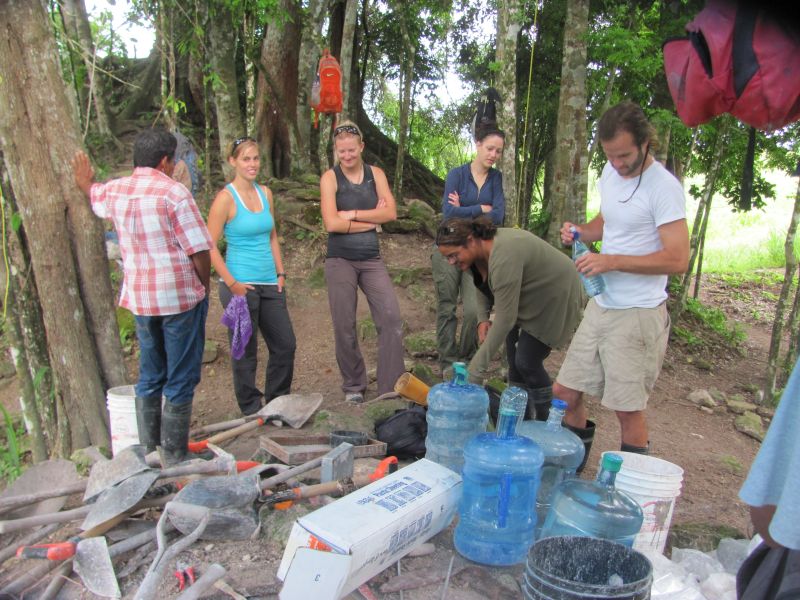
73 The team less two of the natives and me on the structure between structure 1 and structure 2.
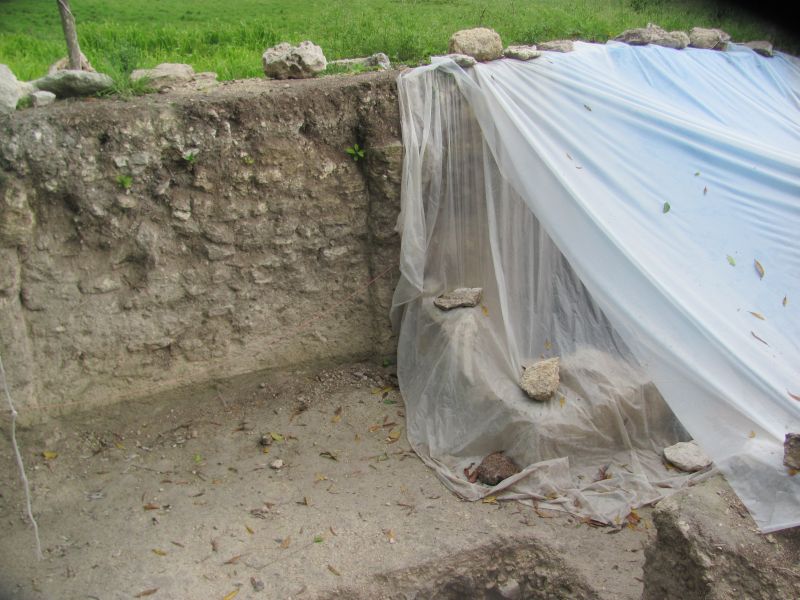
74 bldg A
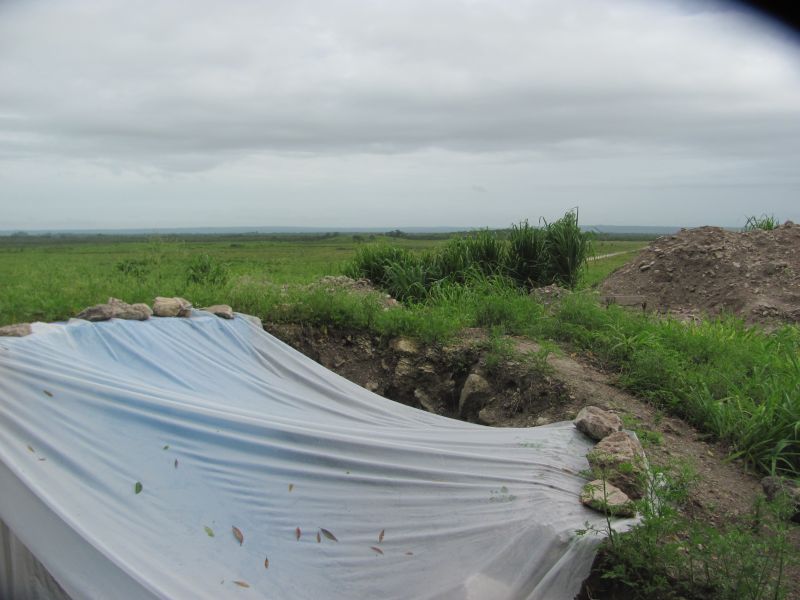
75 view over bldg A
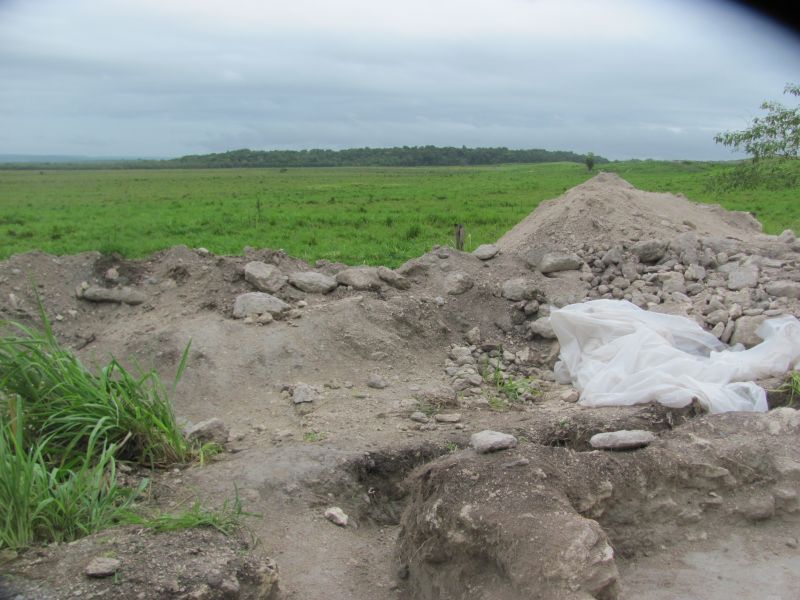
76 closer view of Nojol Nah forest canopy to the North
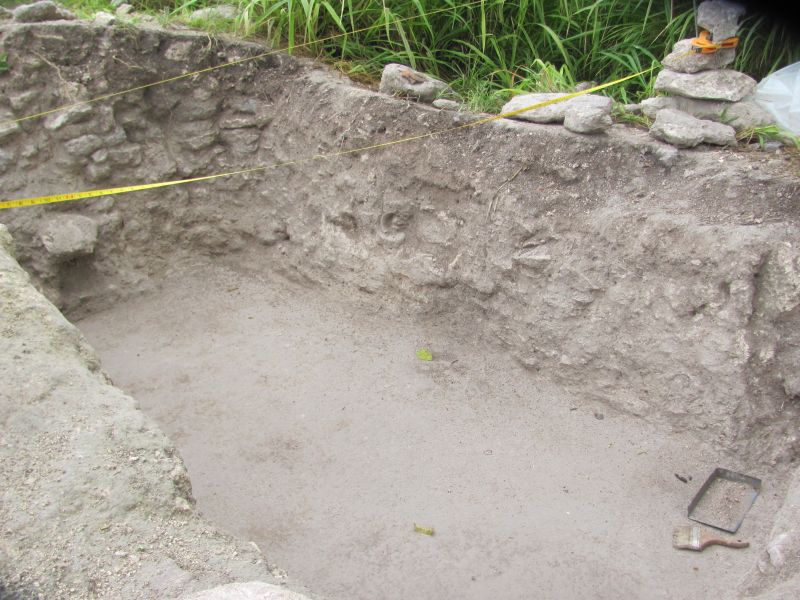
77 bldg B
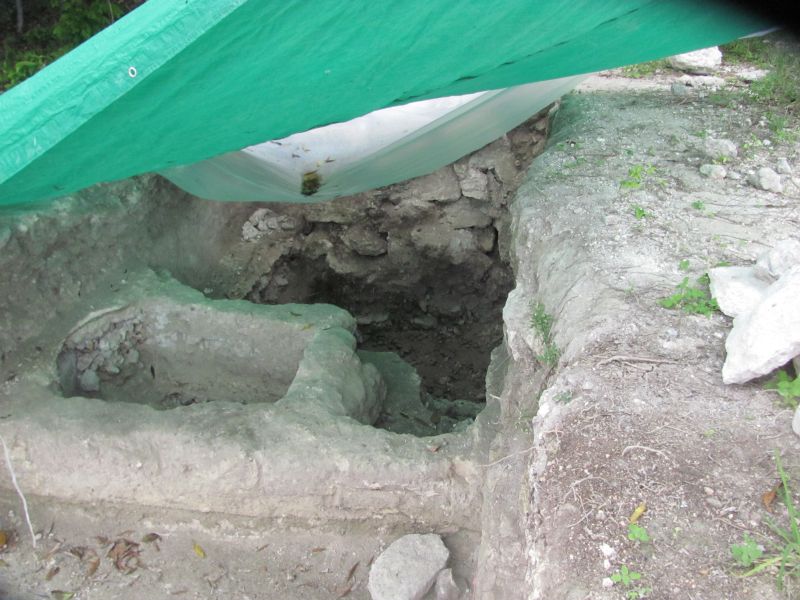
78 excavated bench and floor
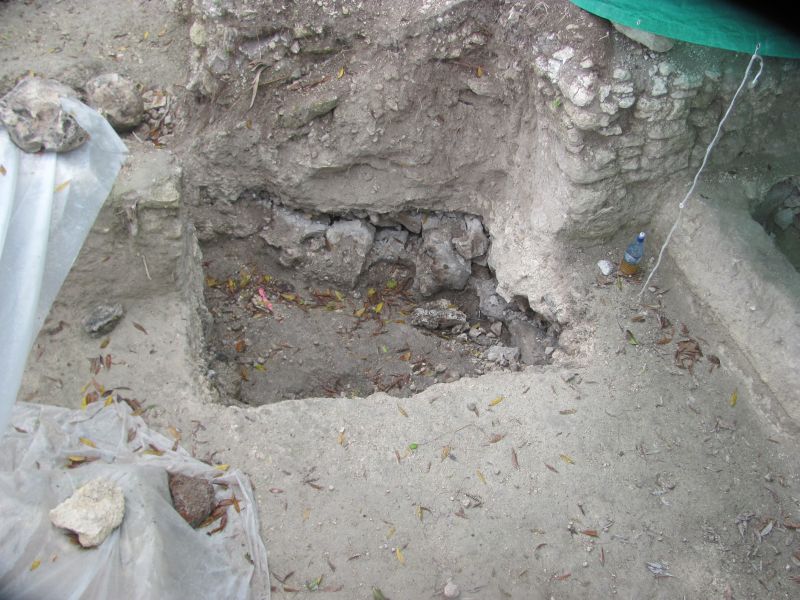
79 excavated floor to see what was at bedrock level
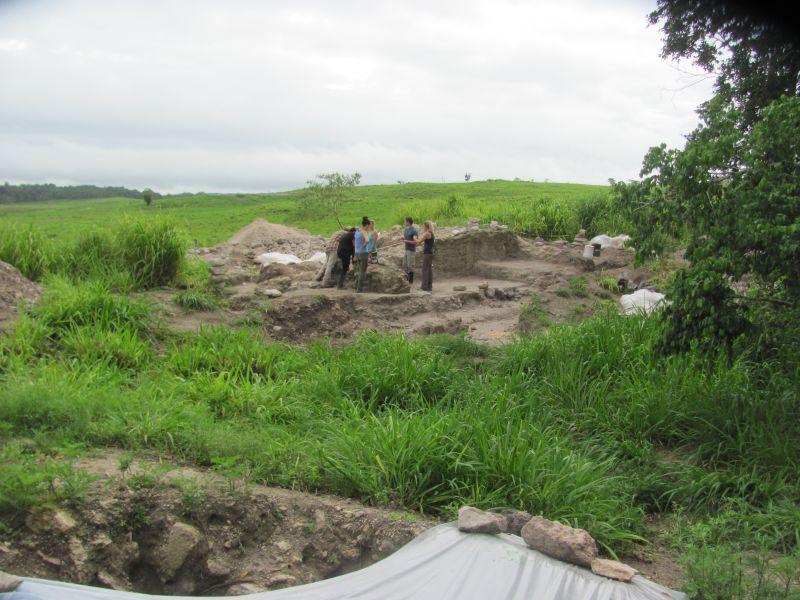
80 the team on bldg B
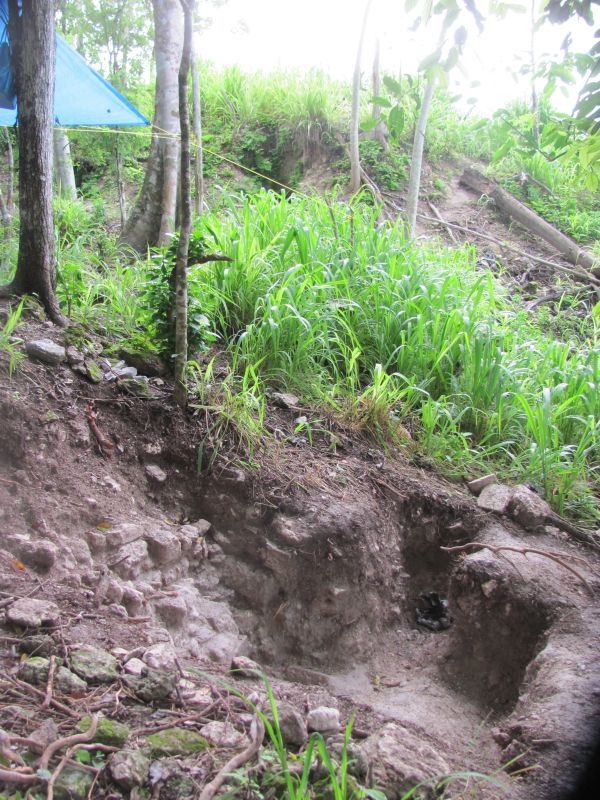
81 wall between pyramids and the east pyramid (structure 1) and looters trench above on structure 1
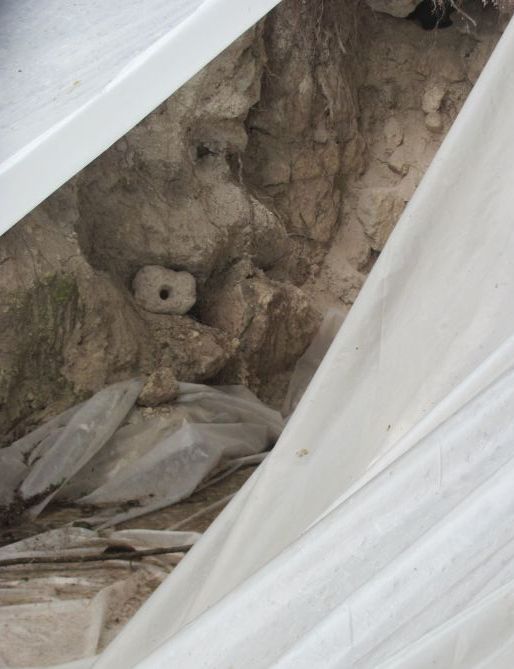
82 odd stone inside a cut into the west pyramid
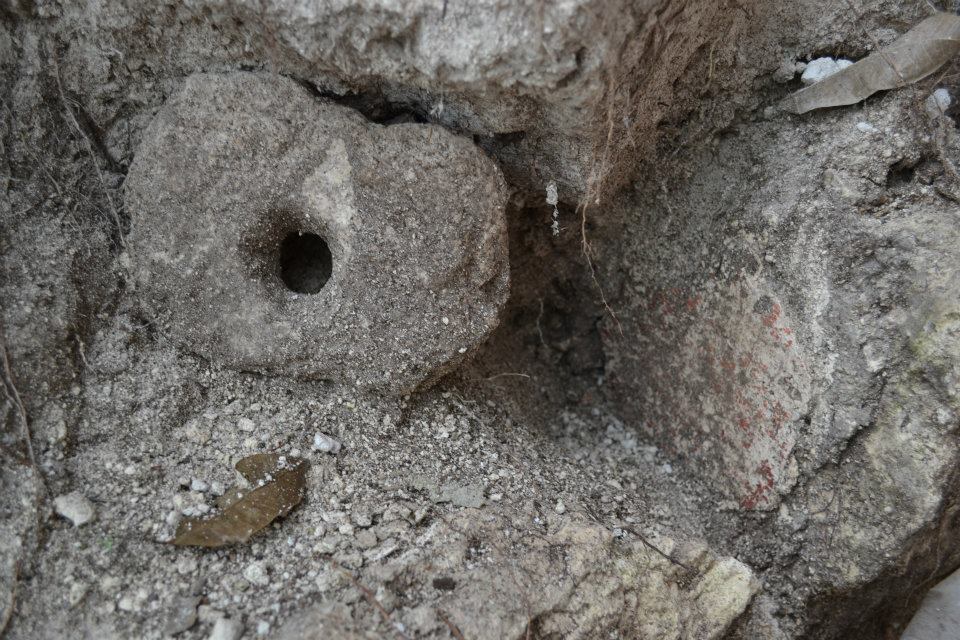
cool stone with a hole and a colored wall
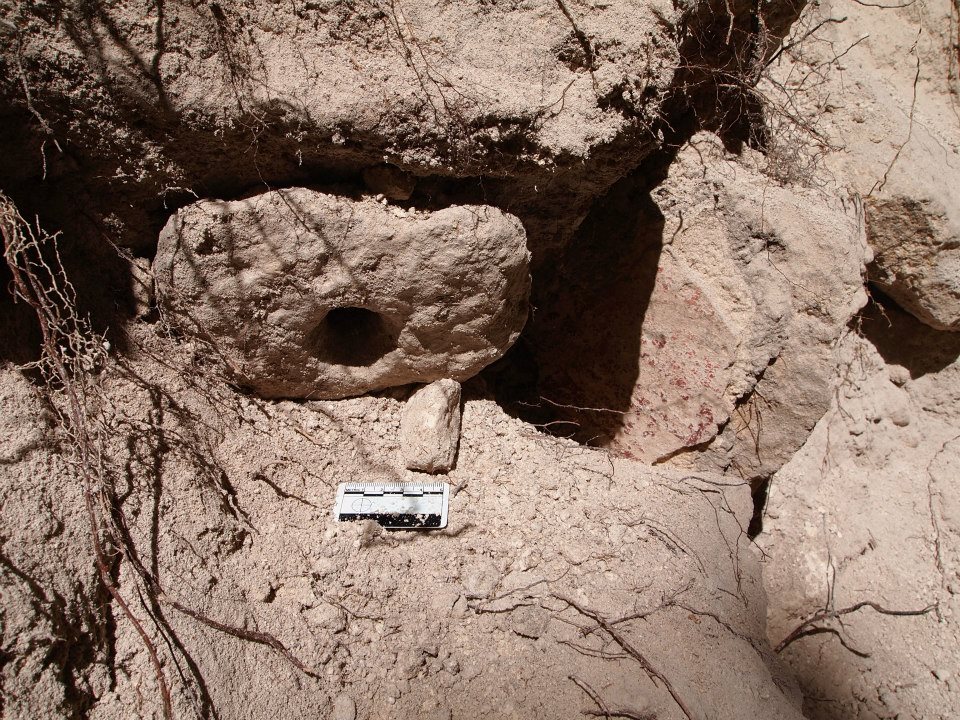
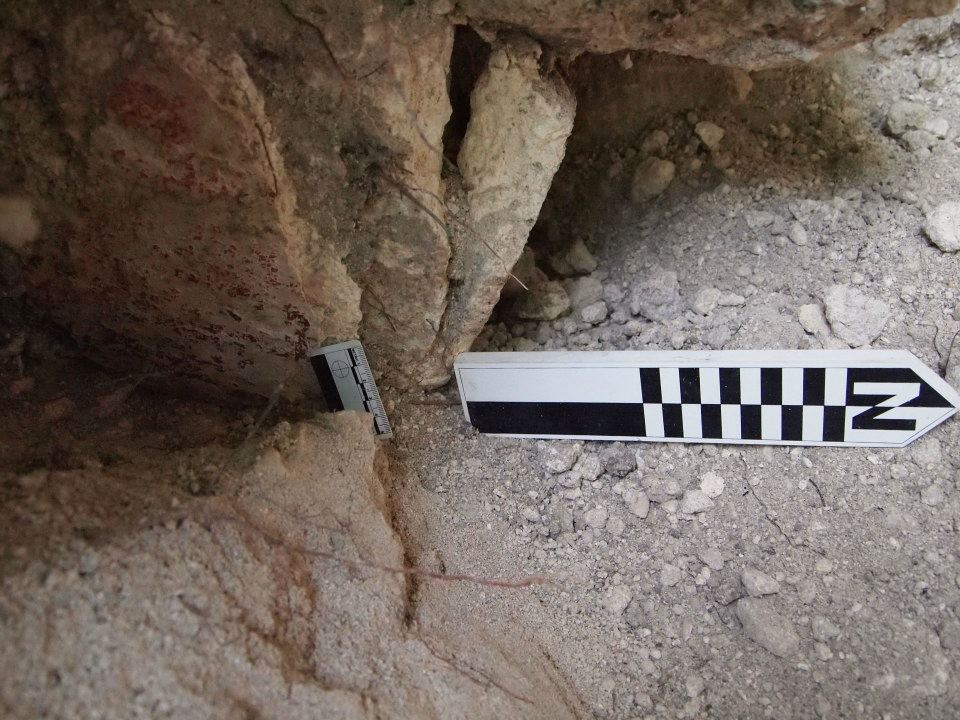
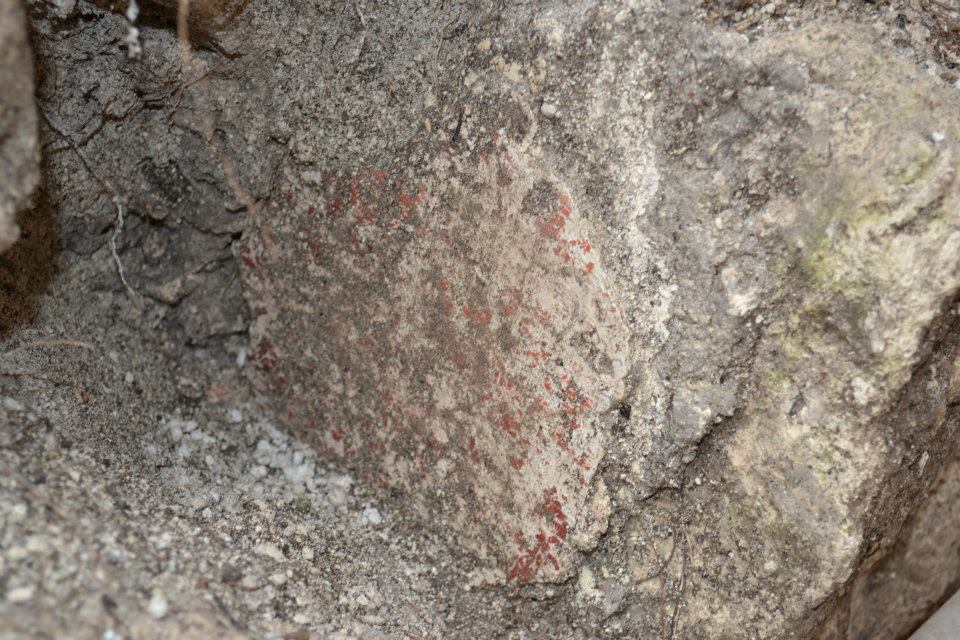
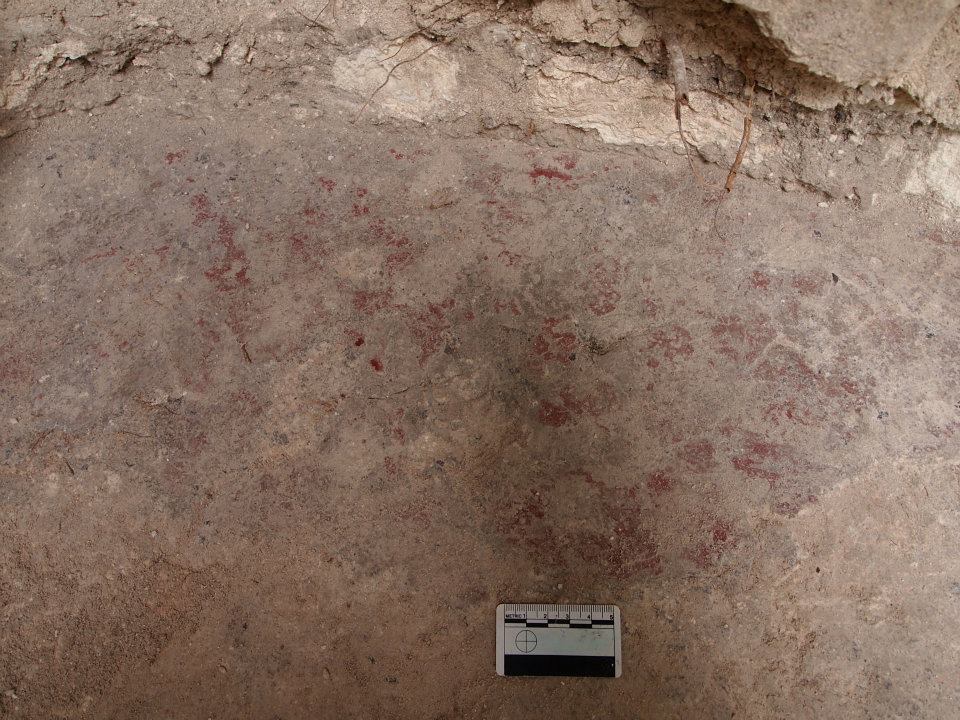
PAINT CAN STILL BE SEEN ON THE WALL IN STRUCTURE 2
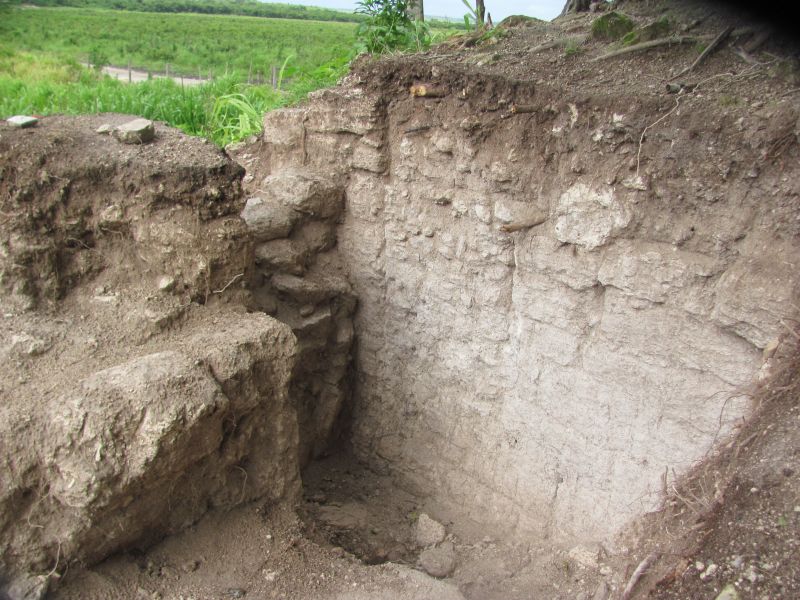
83 courtyard wall with a filled entrance. NEXT TO STRUCTURE 2
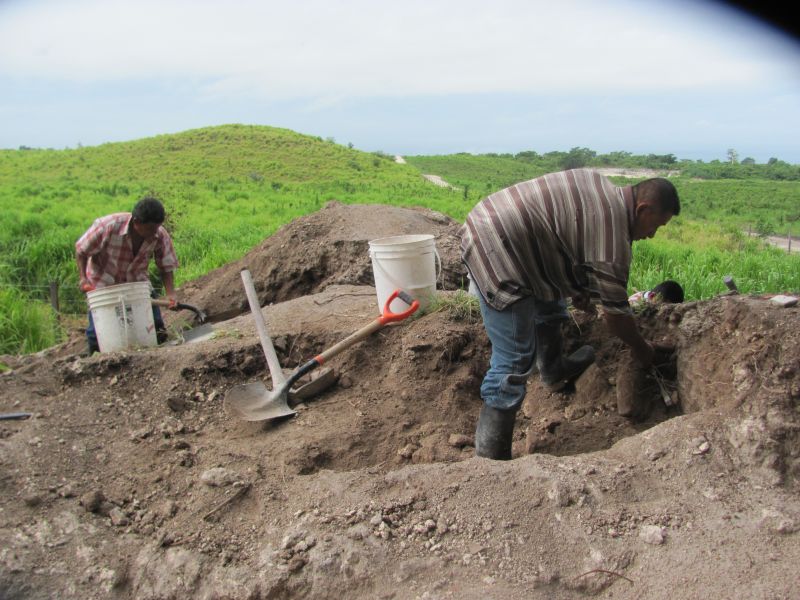
84 pete and Simon (Maya) with Fidel in the background who worked for MRP for 20 years. Shown here digging structure 9.
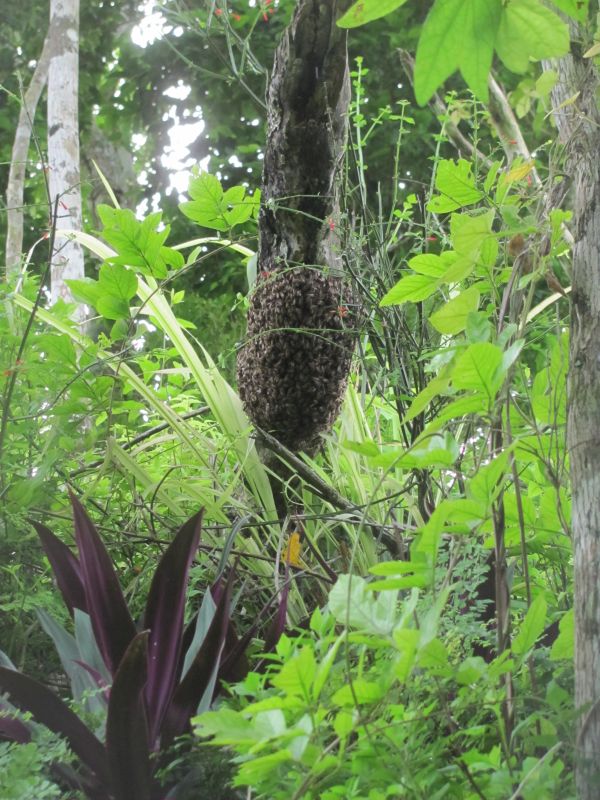
85 killer bees on structure 1.
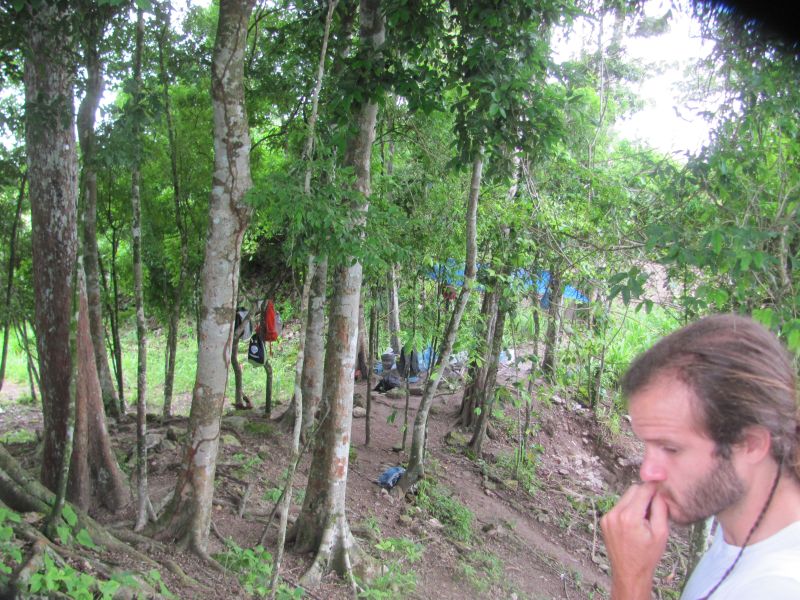
86 apparent wall between structure 1 and 2 appears to be more than a wall.
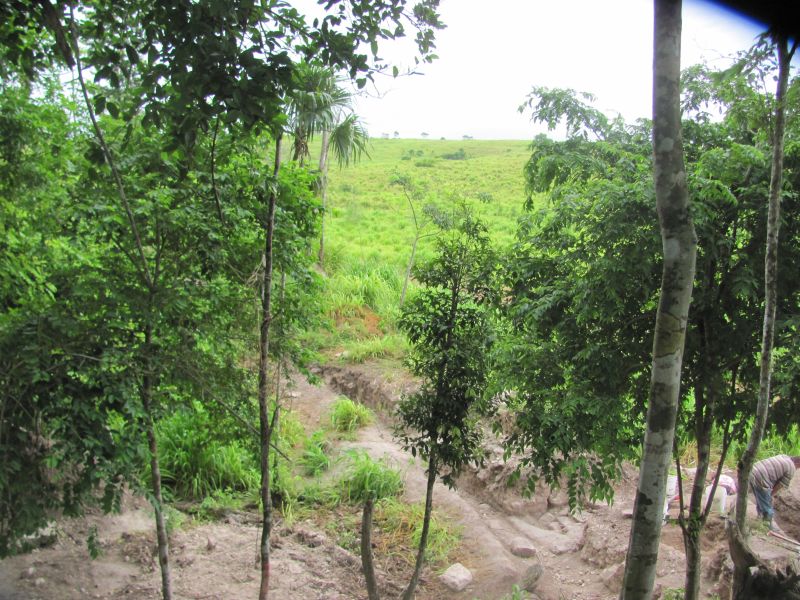
87 top of the east pyramid (structure 2) looking south east
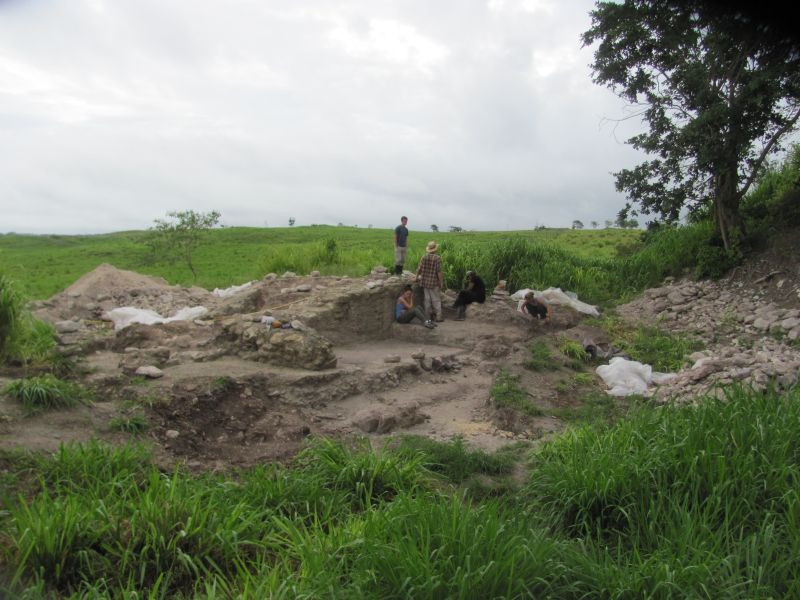
88 building B we are working on with residential mounds in the distance.
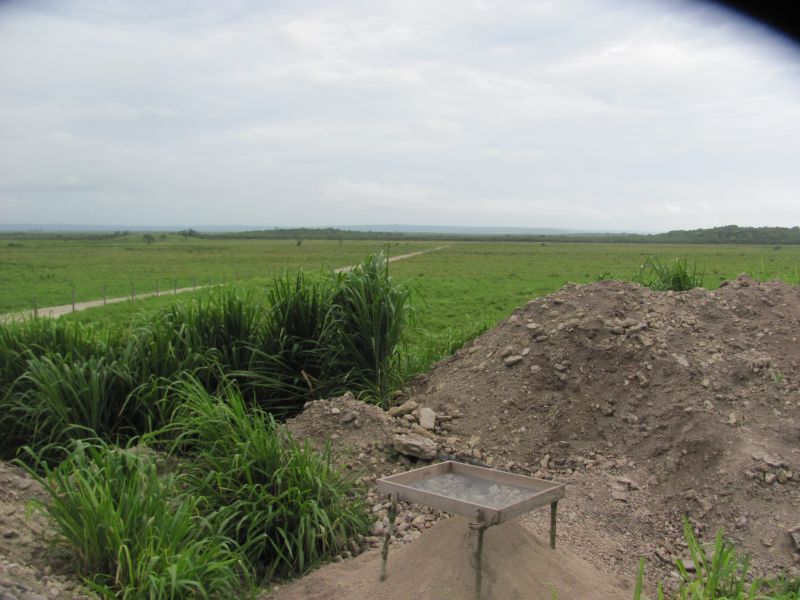
89 Mexico are the blue hills in the distance
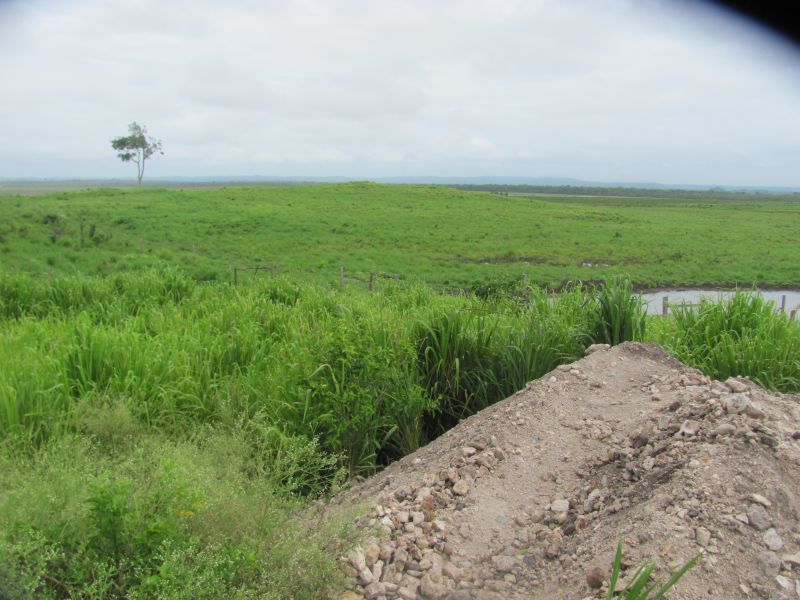
90 looking west those humps are occupation mounds
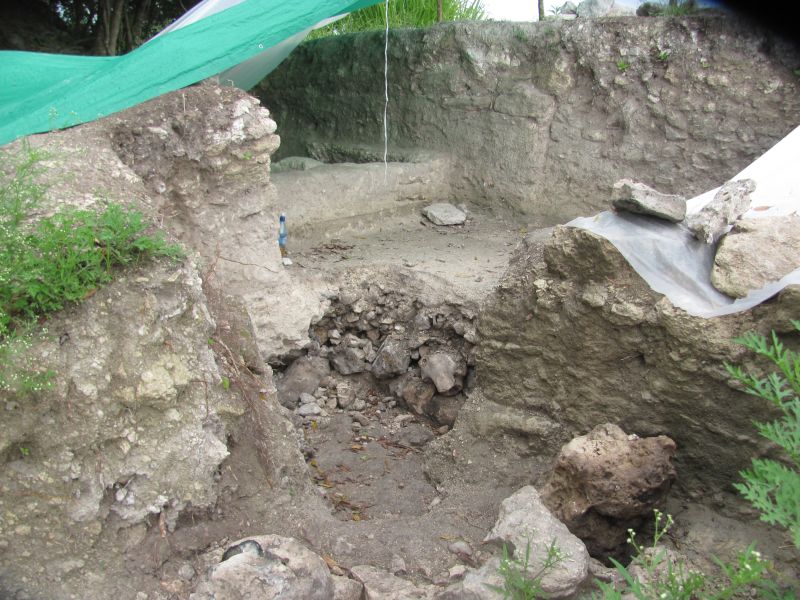
91 this building had a pot closure in a side wall very unusual
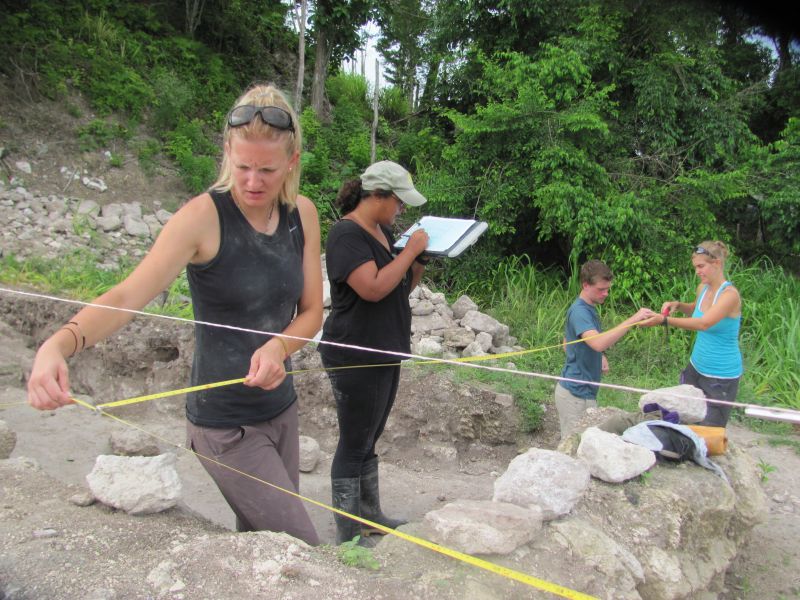
92 Hollie Lincoln holding the tape, leader Gail Hammond recording, Philip Green and Heather a the end of the tape.
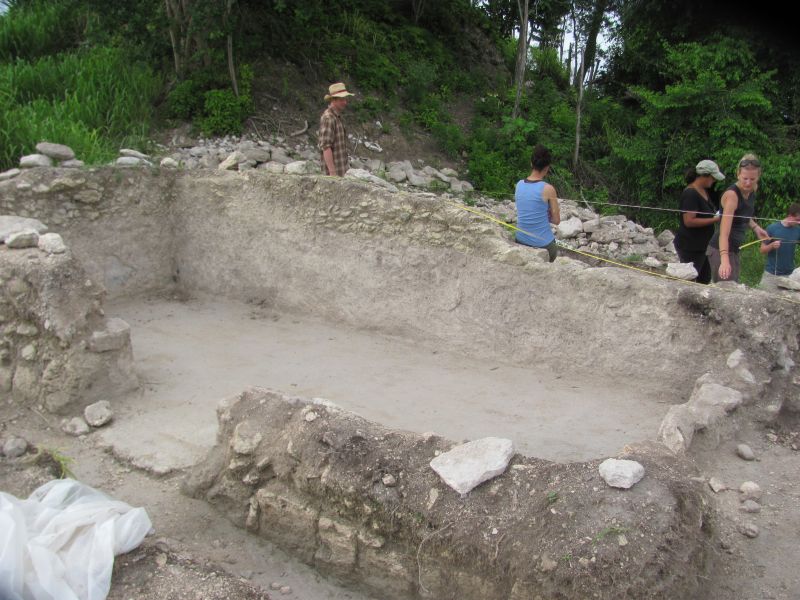
93 large plaster floor in this building.
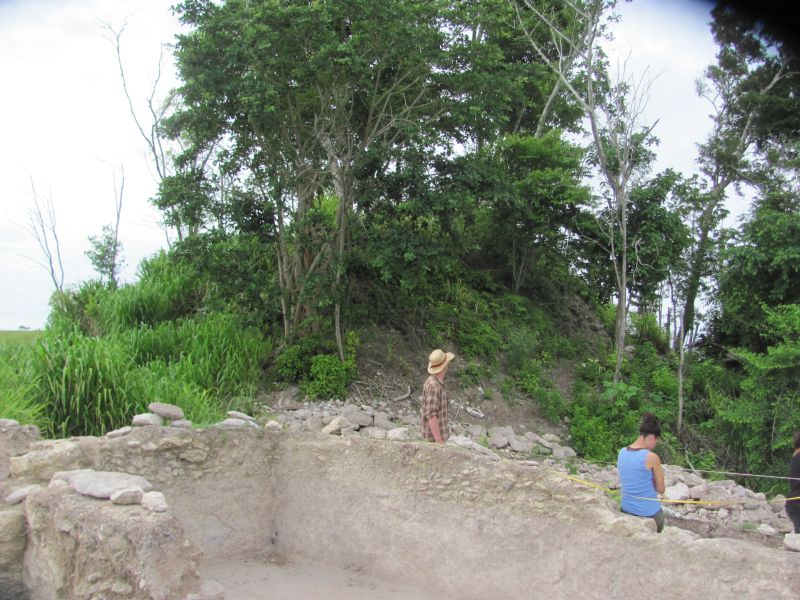
94 view from the building we are working to the east structure 1.
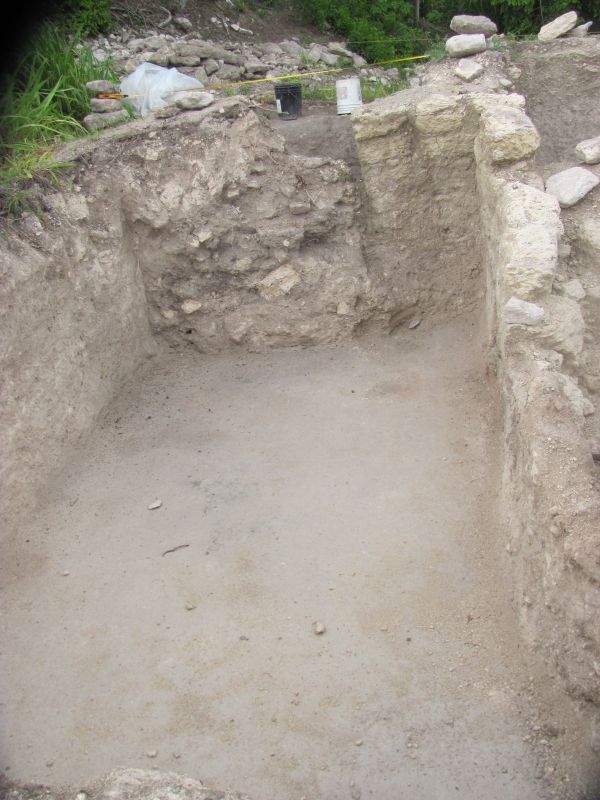
95 this room has a large biface in the floor
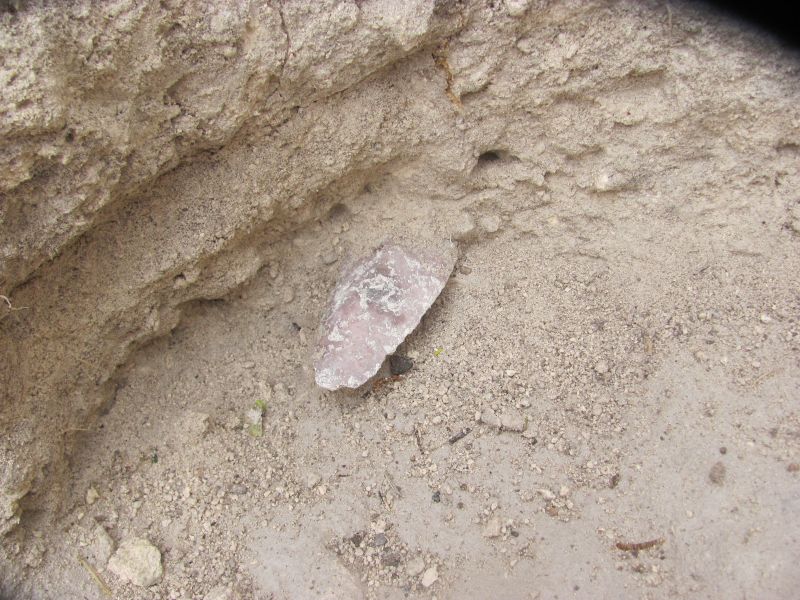
96 close up of the buried biface not yet removed
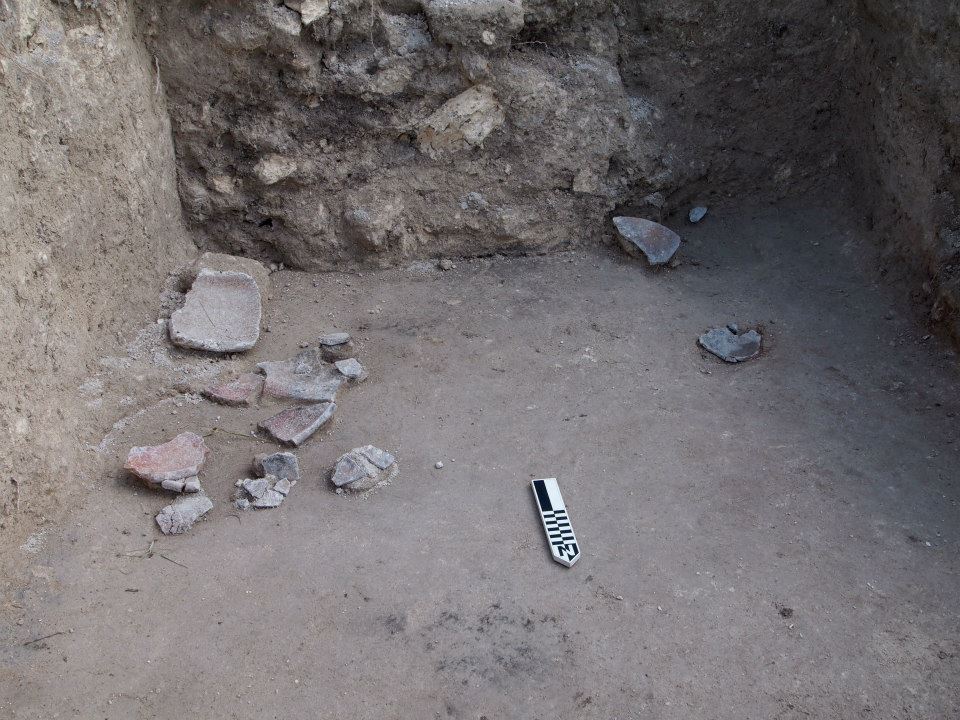
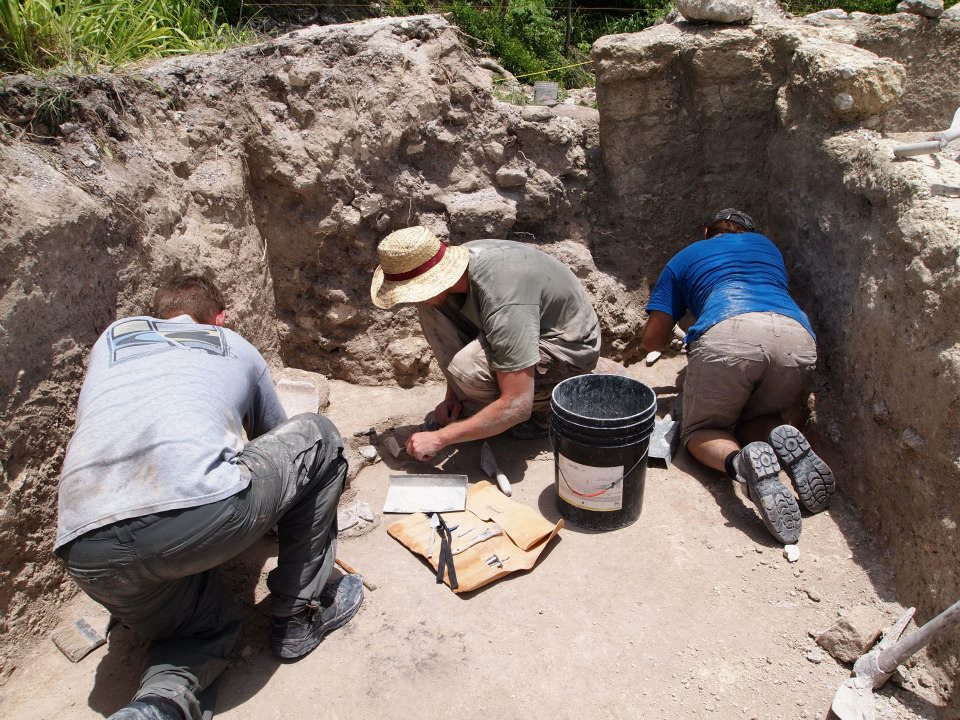
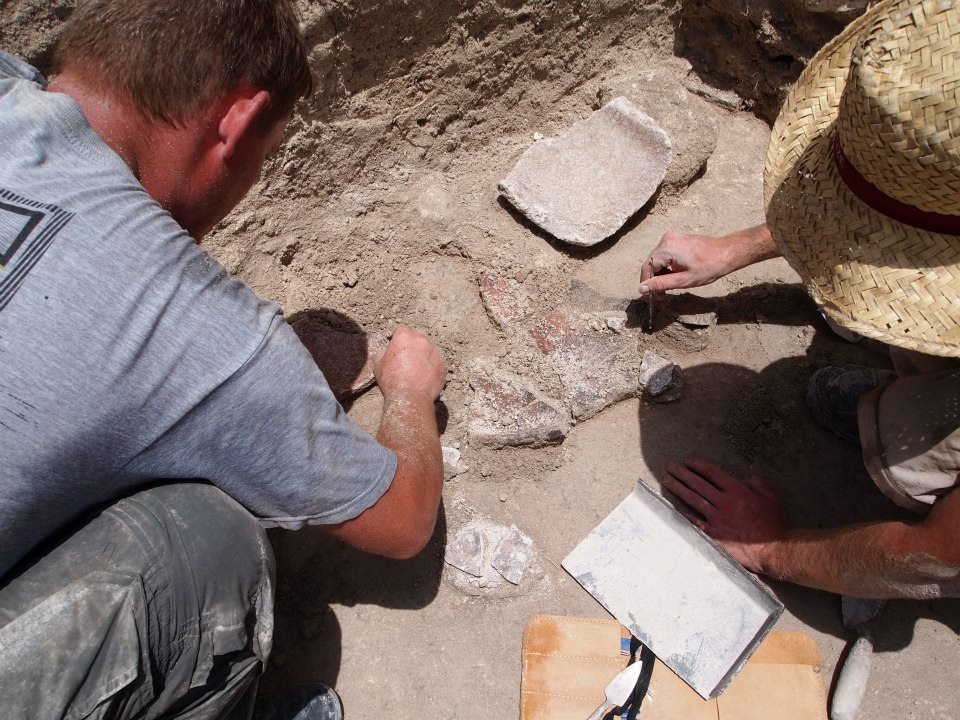
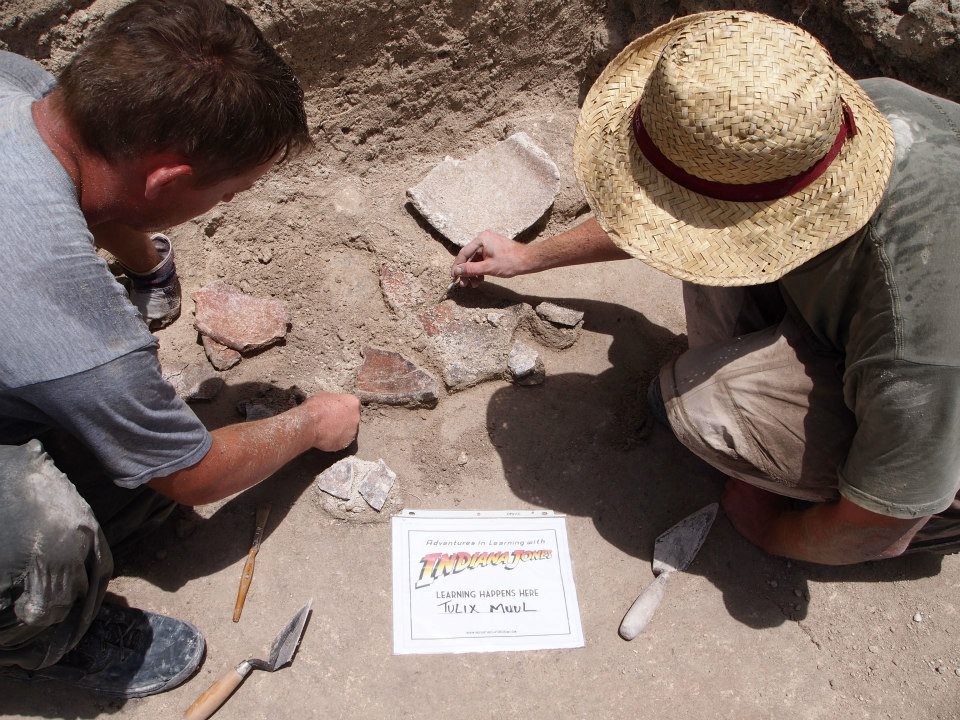
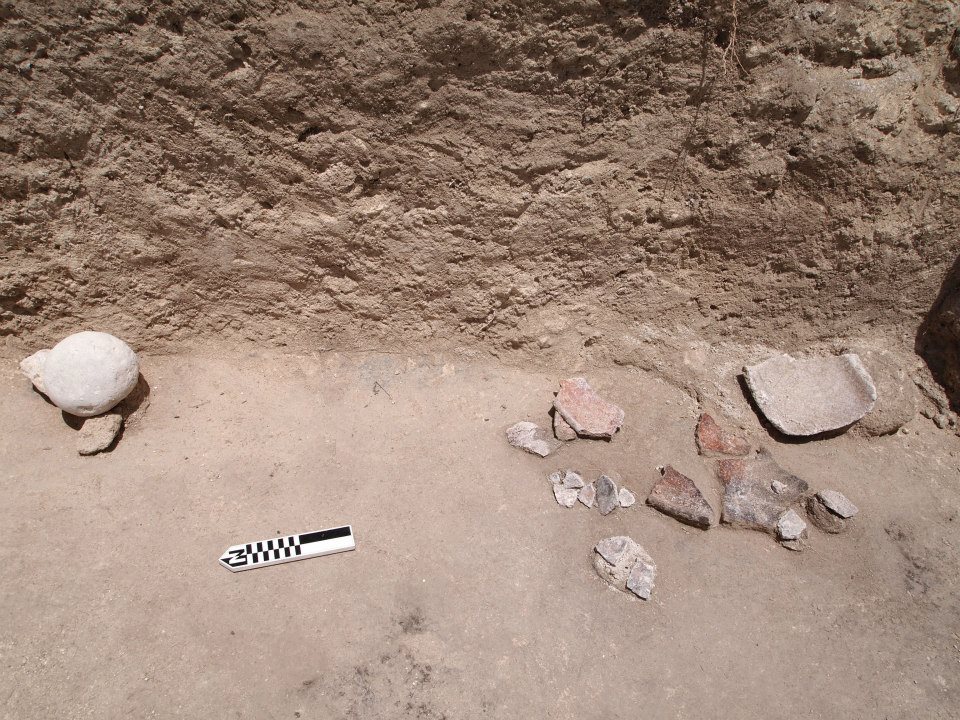
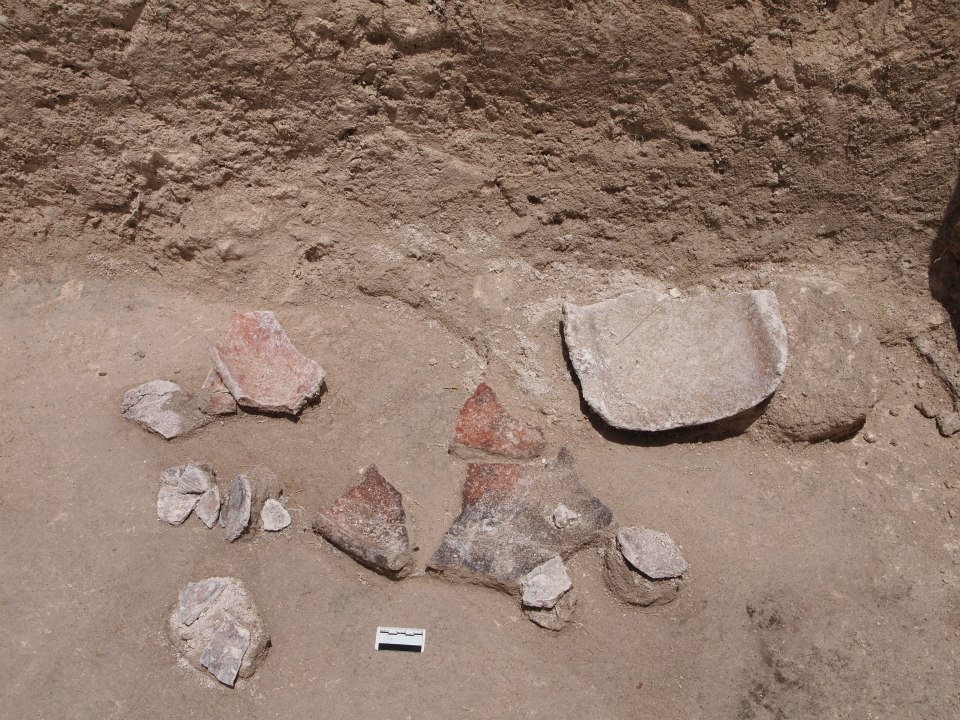
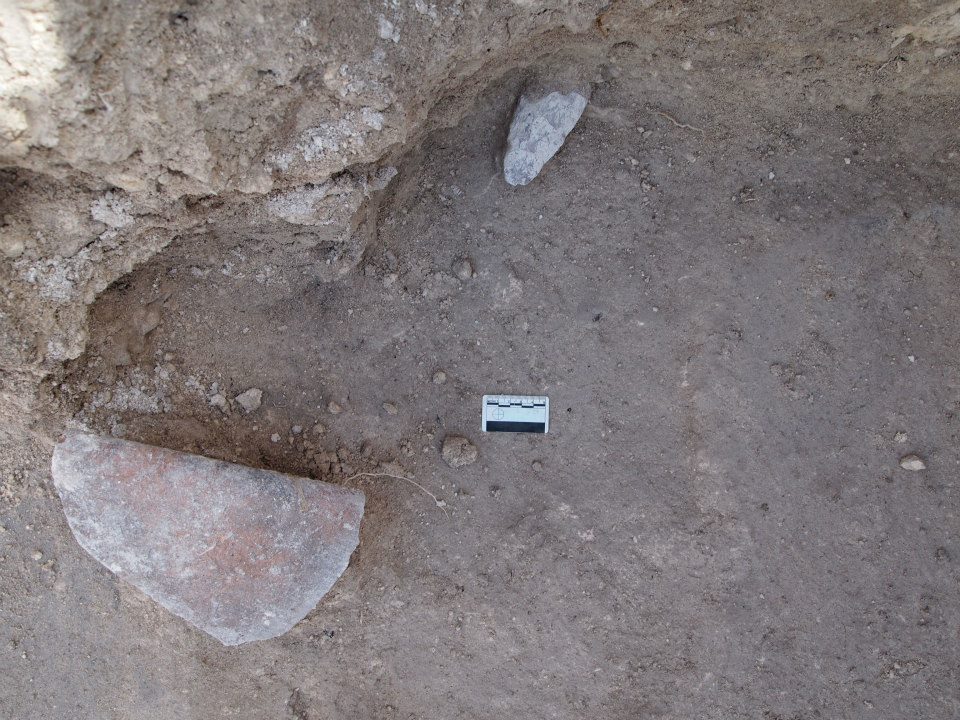
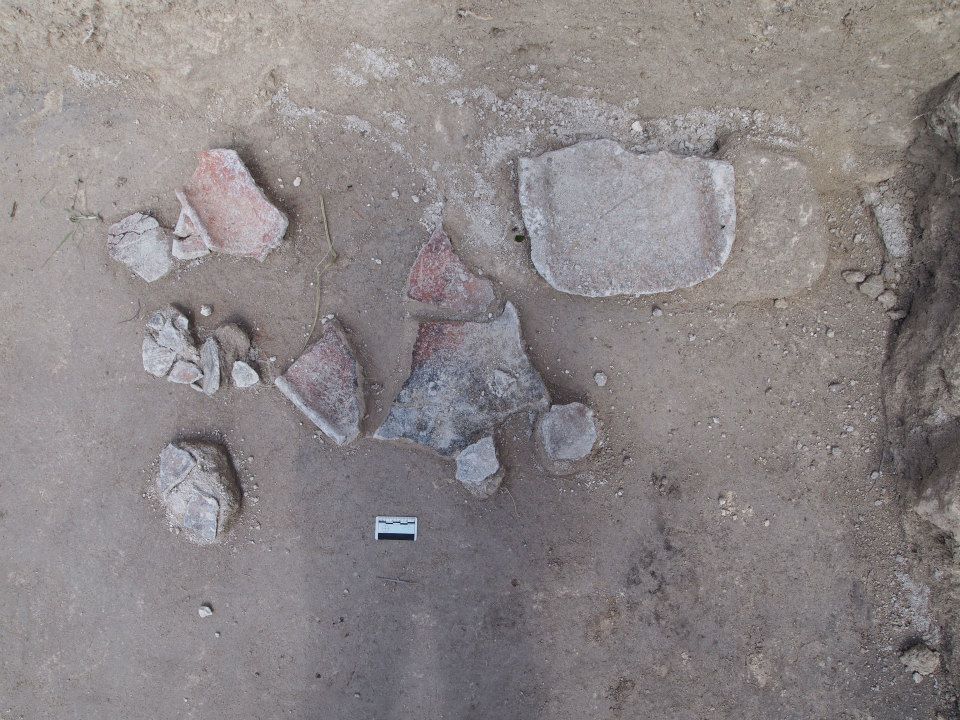
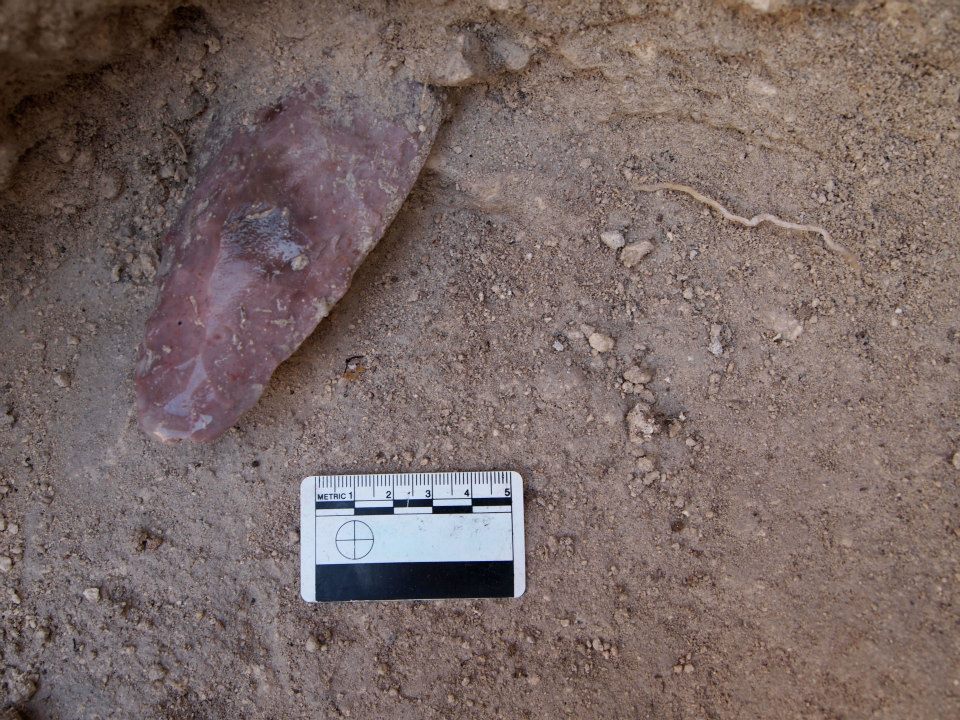
Excellent example of the bi face that was in abundance at the site this year.
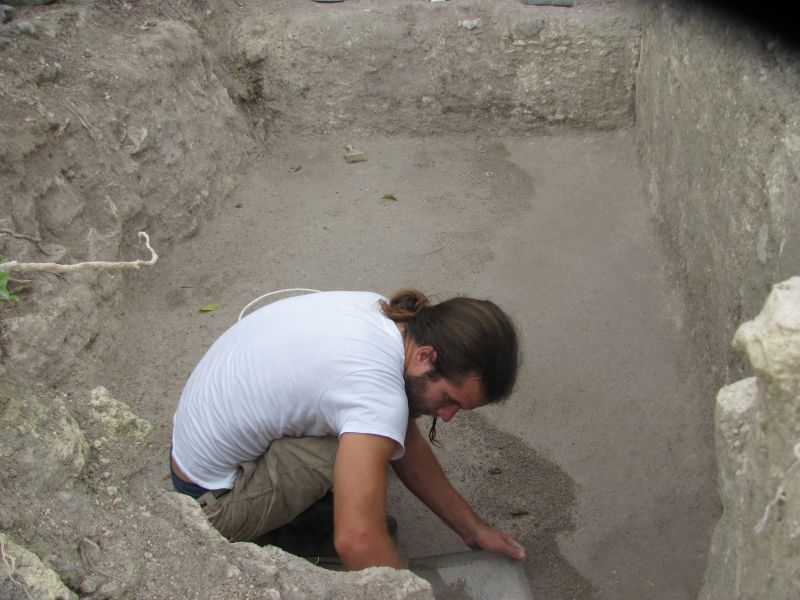
97 Travis Hildebrand cleaning the floor for pictures
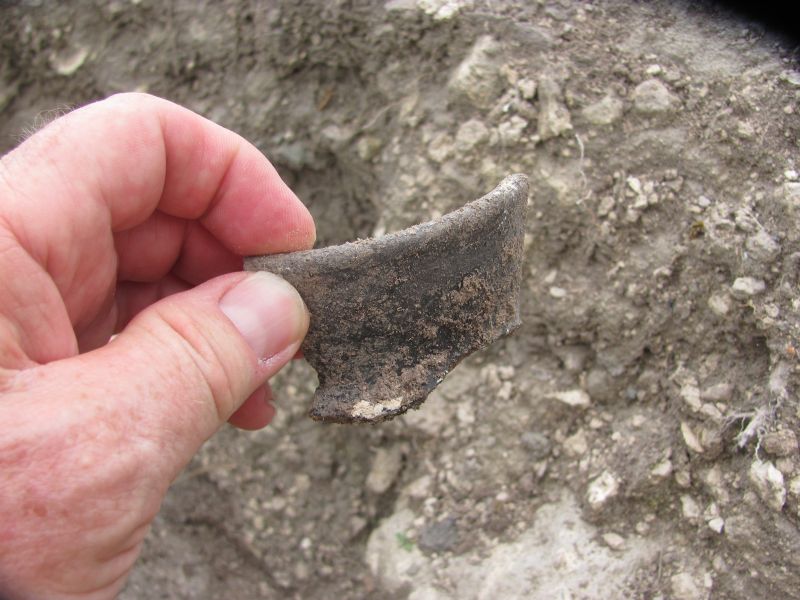
98 rid sherd found on top of a wall no provenience so it is scraped

Example artifacts to familiarize us during our orientation day.
Shifting locations to the Orientation the first day we were at Blue Creek
Trip to Ixnoha during Orientation

Belize 55 is a view from where we started about a 1 mile hike to Ixno ha.
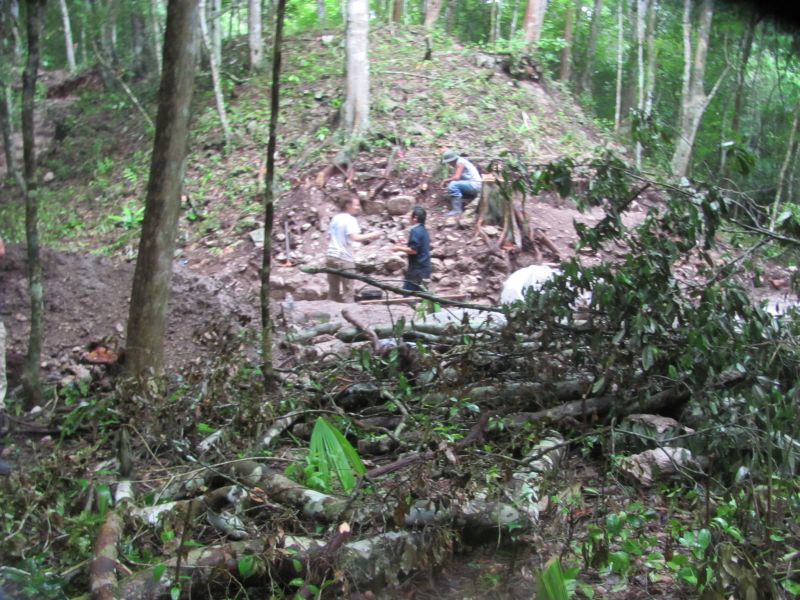
Ixnoha IH digging

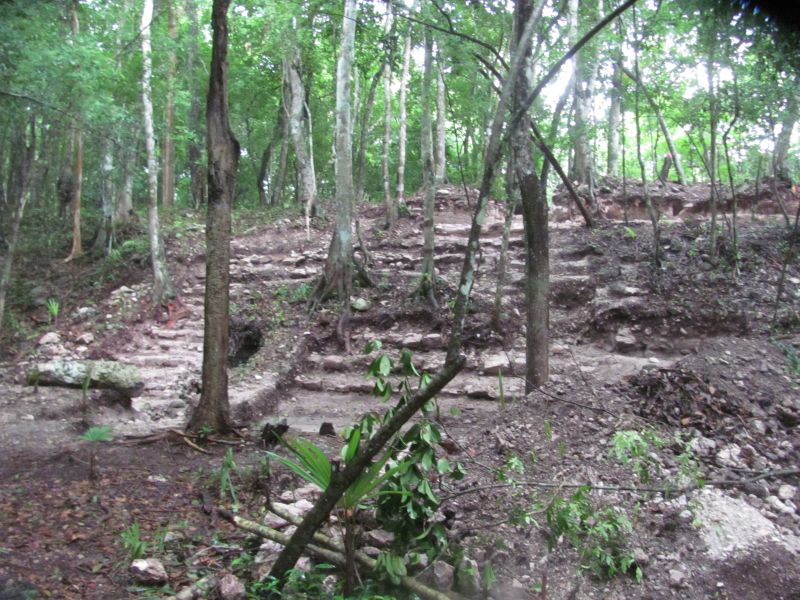
57 IH temple and fallen stele
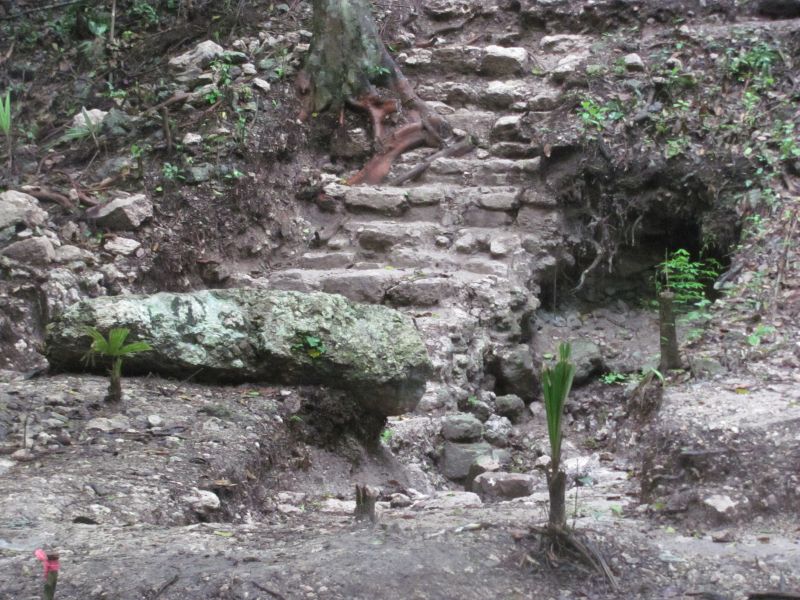
58 is the fallen stele near the looter tunnel
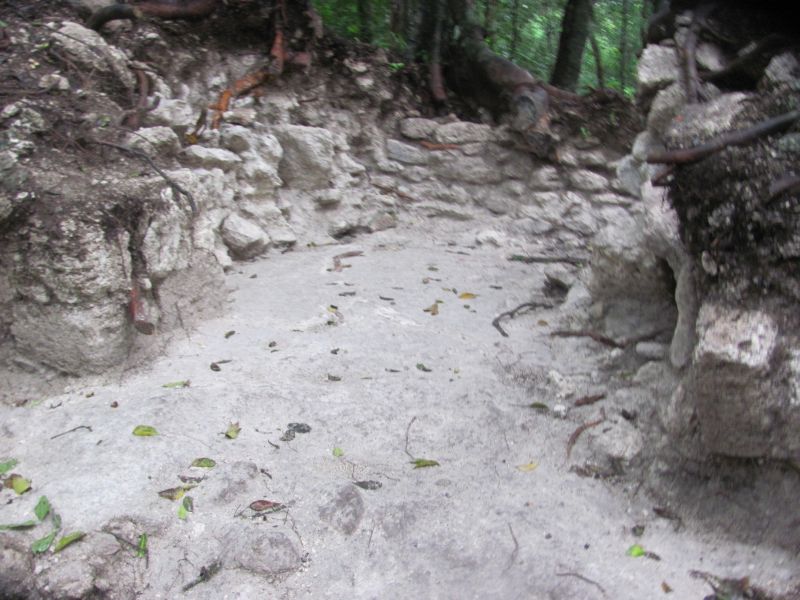
59 temple top building
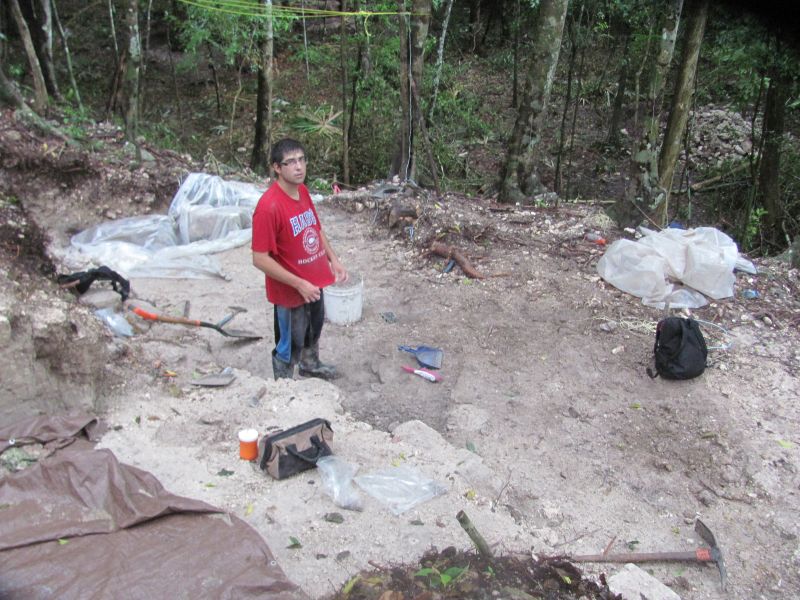
60 back side of the structure at Ixnoha with stairs to a rear plaza... unusual feature
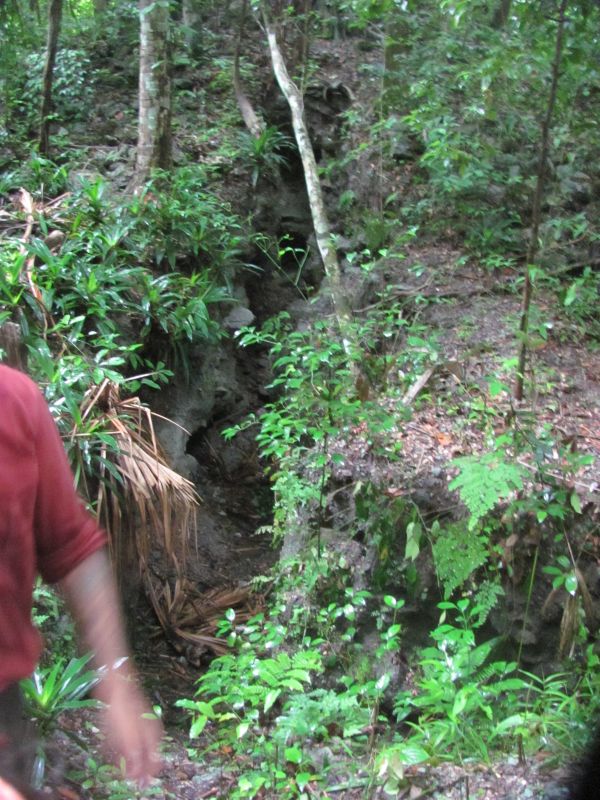
61 looters trench
62 closer view
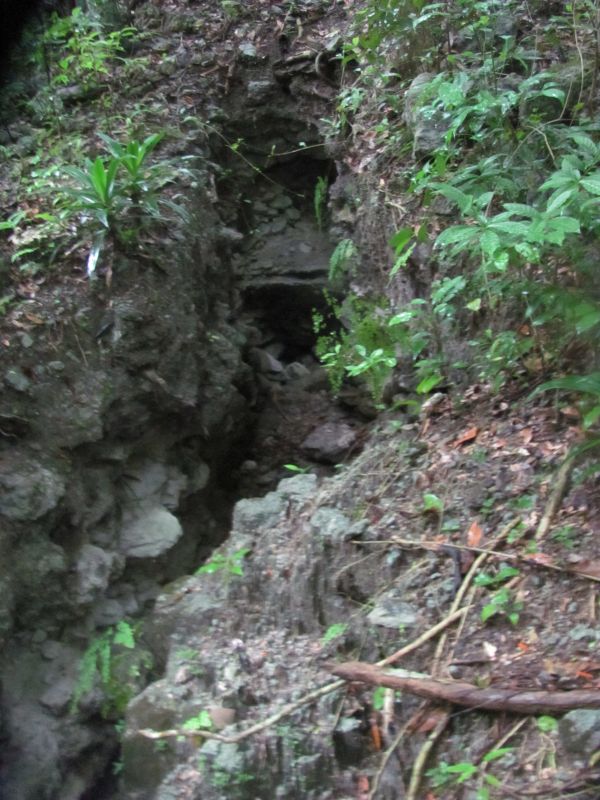
63 me and a structure before the heavy rain
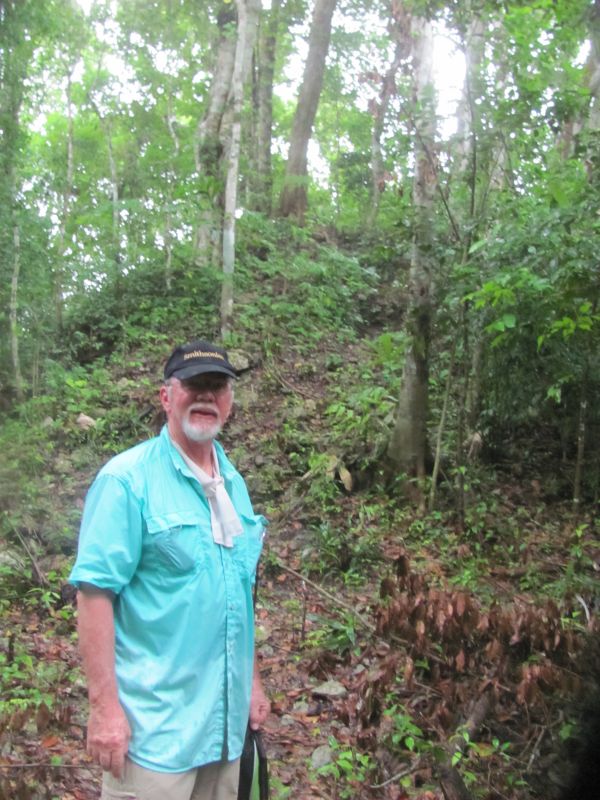
64 flower growing out of a tree root
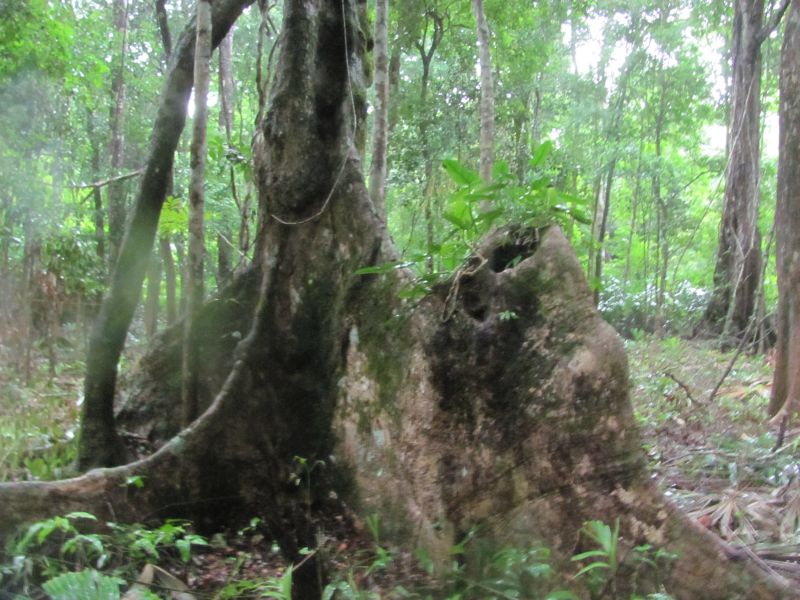
Day three and the second day at Tulix Muul site. The excitement was the swarm of killer bees flying over. The benches in the south and east rooms were dug out. The south room went down to bed rock about 7 feet without finding anything but large cobbles and a few pottery shards. Room 6 group continued to uncover the big pot (Olla). Friday we may find what is in the bottom of the pot. Rained a little today not like the last two days. The team ages go from 20 year old from Seattle to my next door cabana neighbor who helped from Tyler Texas working with staff. Beliken stout is OK but a little bland like the regular Beliken Beer. I was drinking lots of water.
Greetings from Belize
Friday was significant in getting all of the dirt and rocks out of the big pot and finding
a broken whistle at the bottom. So the crew chief gave the instruction to dig through the plaster floor under the pot to look for a burial. We finish tomorrow. The structure at the other structure to the south has markings on the floor with black lines indicating a burial so tomorrow they will be digging for that and we will finish 'screening' debris from
our excavation.
No rain today. Last night was hot and still to start but I had to put the sheet on me in the morning. We take breaks when we need them. I am trying to quit and take a break soon enough so I don't get dehydrated. It is cooler than Kansas and between the pyramids the trees are very high and shade our rest area. I was up taking a break when the male gray fox walked through the area picking up the berries and scraps from our lunch garbage. He was a pup when they started seeing him a few seasons ago. Now he just looks at you and walks by. Tropical birds are cool sounding. Lots of varieties of birds at the site.
The hat on the rod is a bench mark for mapping the structure. There are four rooms on the structure we are working with two benches and the buried Olla (big pot). I am learning a lot about the Maya part of Blue Creek and Orange Walk district in general. The pot type shows the pot was buried between 650 and 850 AD. Found a worked bi face tool and an animal shape. Lots of sherds of various ages, but not many lithics. Travis Hildebrand found an obsidian blade under the pot before it was removed in pieces. He gets to put the pot back together. This old computer and the slow unit at the cafe across the road suck so please excuse the mistakes.
It is hard to keep my feet dry as there is water always sitting on the floor in the shower room. The cold water only showers are OK in this environment.
The area around Blue Creek looks like the Ozarks with some paved roads and landscape with occasional Palm trees and rice fields in the Bajo (low areas). Out near the site the landscape and roads look like Eastern Kansas country roads with pot holes. The cattle are called Brangus but look like Brahama (sp) cattle. There are some goats and lots of chickens and one farm had little miniature deer. It is Beautiful country. The Mennonites do not like any government and work crimes themselves. Cattle rustling means they found one of the rustlers who accidentally got his knee caps broken and revealed the
other rustlers or so goes the story. The staffs is professional and seem to handle the situations well.
I am making the team coffee for morning have remembered to do it every day so far . ha. Margaret has apple bananas and another variety out for breakfast so I just had one of the small bananas like in the first day picture. It does have a slight apple flavor with the banana flavor.
Norm
Saturday July 21 working but not getting overtime. Belize 43 and 44 are the two pyramids looking toward the North and a little east as were on the road in the cattle pen where the van is parked in later pictures.
Today stated out continuing to dig the cobble and boulders out from under the double plastered floor of Structure 6 building b. From the pictures of the guys in the hole you can see what the cobble and rocks we removed looked like (46).
Sort of like being on a chain gang moving rock. See the pile of rock we started with. The mounds are enormous as you see from other pictures looking at the pyramids. While screening we found some small sherds of pottery but not much else in the fill. I took pictures of the dragon fly the site is named for. The name means dragon fly hill. 49 is the room behind the ones we were working on and you can see the base of the pyramid in the background. 50 is a better view of the structure 1 pyramid on the east side of the site. 55 shows how high the trees are on the pyramid. 51 is looking at sites that are not excavated to the east. 52 is the measurement team who came out to see what was needed to measure accurately the walls etc. 53 is looking southwest toward Guatemala. 2 years ago this was rain forest and the Mennonites burned it making seeing the sites easy and giving them more room for cattle. 54 is looking straight west. 56 is a large flat rock found flat side down on the bedrock. Not sure what the lines are for. 58 is climbing out for pictures.
(Belize 59) is the south excavation where I walked up a stair case that was uncovered by that group yesterday and it had been used by the Maya between 650 and 800 AD. (Belize 59) they were covered in this picture. You can see our van in the crew pictures in the background. Vaqueros were driving cattle in the field next to us south and you can see their heads in the grass Belize 60. The big find today was a burial. a dark bead what looks like a flower pattern white disc about the size of a nickel and a white stone the shape of a keystone that must be burial goods. Fidel found this about the time for us to quit so this was what it looked like. Belize 64 shows the excitement with Fidel standing and beaming at his find. You can see how far down the bed rock was. The crew pictures are self explanatory.
July 22 Lamani (submerged crocodile) archaeological site We spent the morning driving to Lamani on really bad roads. Dinner at the Lodge was fun, but only 6 of us ate there the rest had been and grabbed food in Spanish Church village near the lodge. Lamani is a big site and a hot long walk but enjoyable. The mild mannered archaeologist made an appearance as you can see at the Mask Temple. The Outpost Lodge at Lamani is very cool and I took a tour of the rooms. grass roof, wood sides with a fan in the center. They have hot and cold running water. Great views as you can see. Every Mennonite neighbor in town comes to the internet cafe on Sunday as nothing else seems to be open. It is a wild place on Sunday night
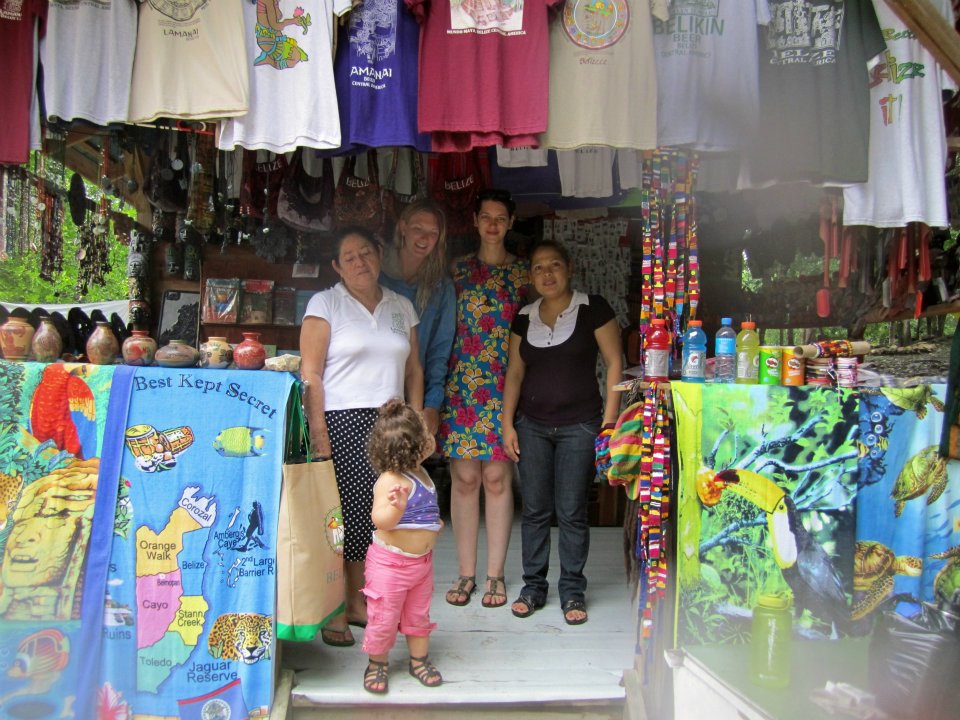
Ladies of Spanish Church village with Hollie Lincoln and Faithe Miller McCreery
to get in touch with the ladies

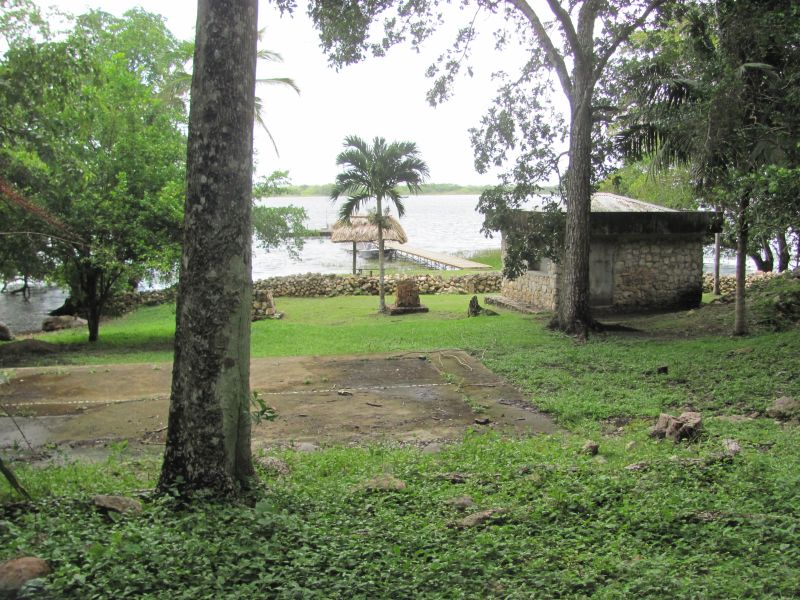
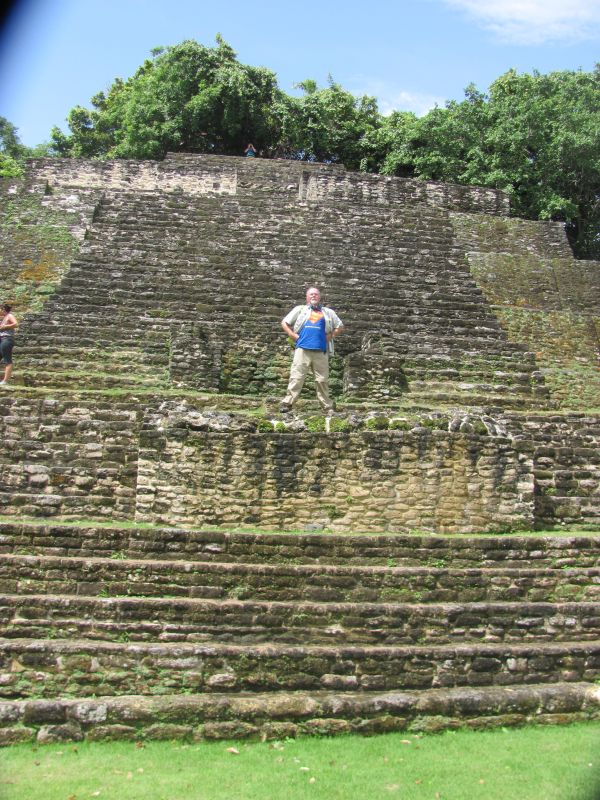
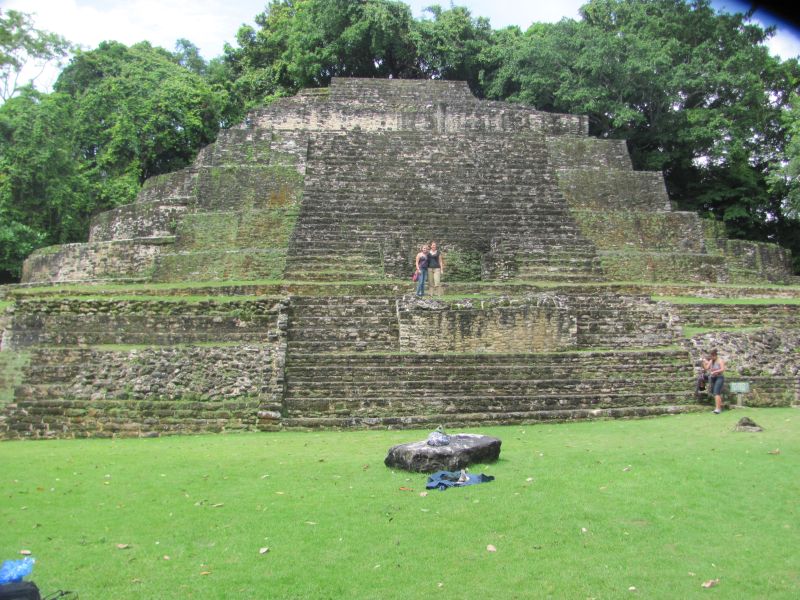
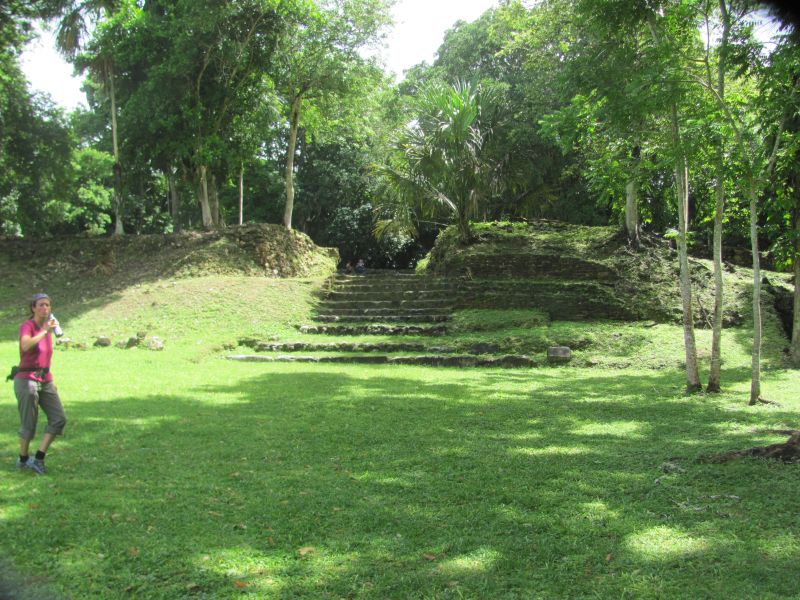
72312 Belize
It rained like a cow pi...ng on a flat rock last night. It rains every day but this was heavy. I was the only one with my shutter open and I paid the price with some we stuff. I think I am clever putting the poncho on a hook over the screen and a tee shirt on the other east window to keep the rain out but then nothing ever dries out here so a little rain on the stuff is OK. With the heavy rain it will be like Tuesday was getting into the sites. …Maybe even pushing the trucks out of the mud. We had 4 trucks broken down yesterday. The one I was going to the lodge in literally seized up for lack of transmission fluid and the radiator boiled over but it was only 1/4 mile to the lodge in the pictures. Getting to the lodge and having a cold Beliken and talking to the manager of the lodge about Mayan tradition was great. Then mango juice with ice for lunch with the food shown in yesterday’s pictures. All but the bread pudding' was very good. The MRP cook Margaret is excellent. I sweat more than I ever have but the diet here is high in fat with beans, rice, tortilla, avocado, papaya, mango for most meals. More native food than I have ever experienced.
73-75 are ceramics in the Lamani museum
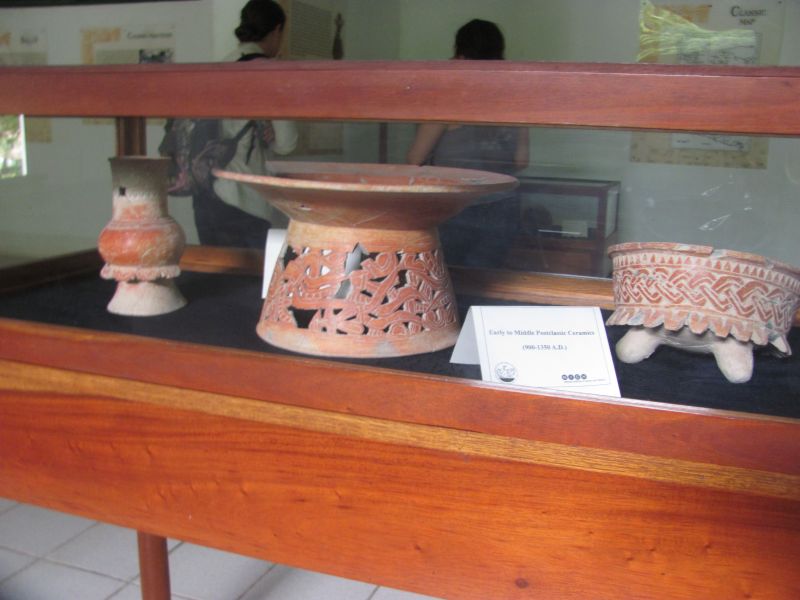
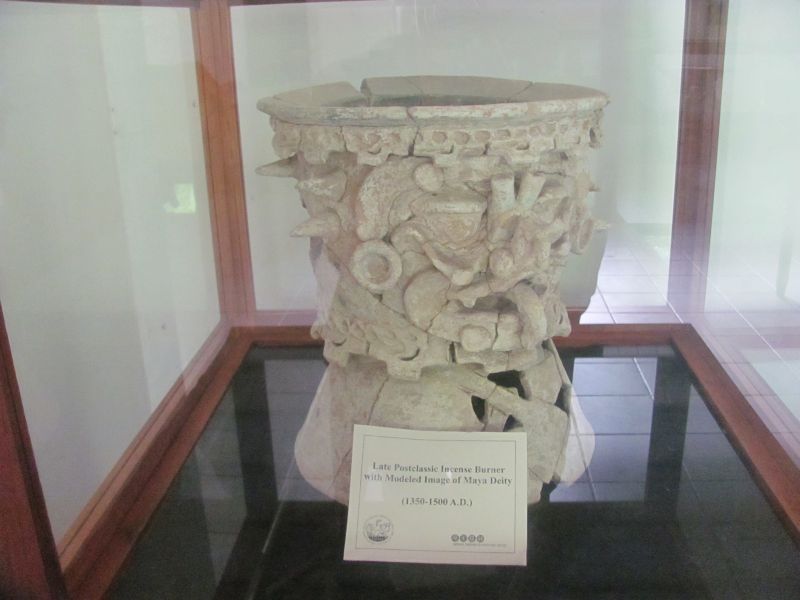
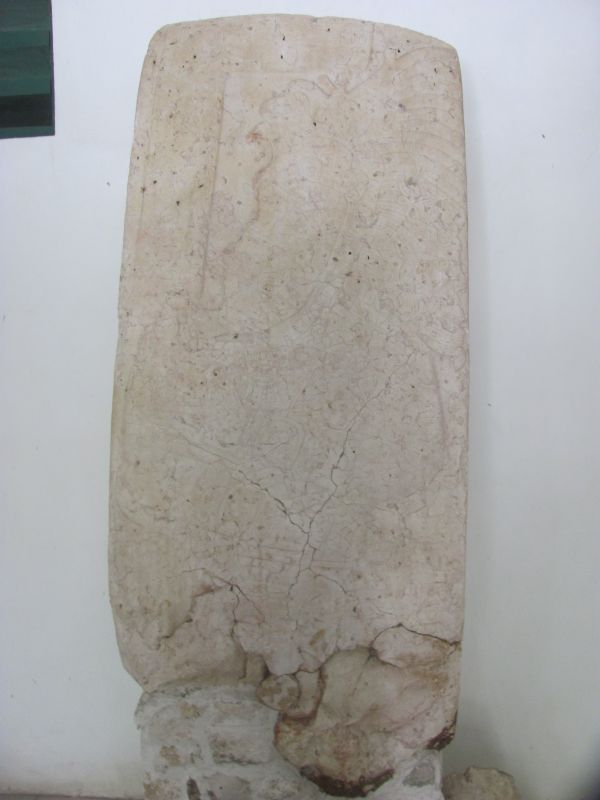
76 77 are chert eccentrics used for who knows what and deposited with burials
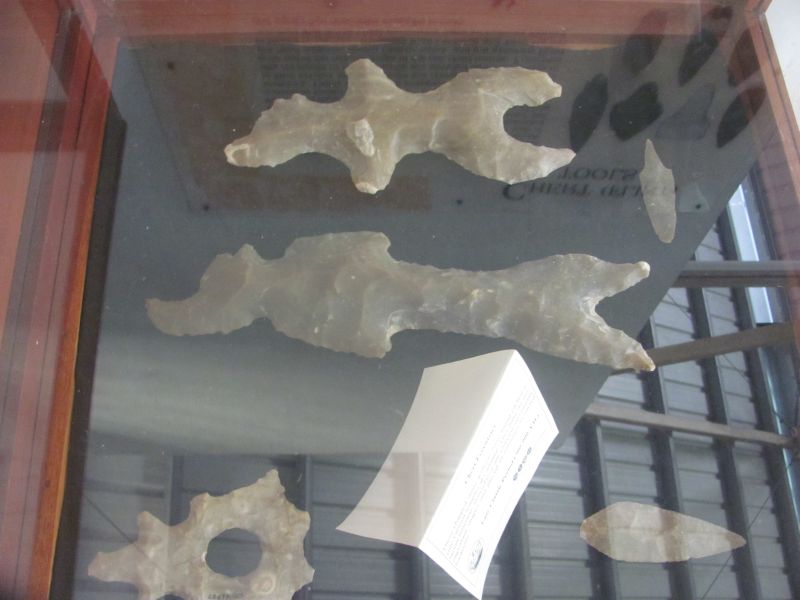
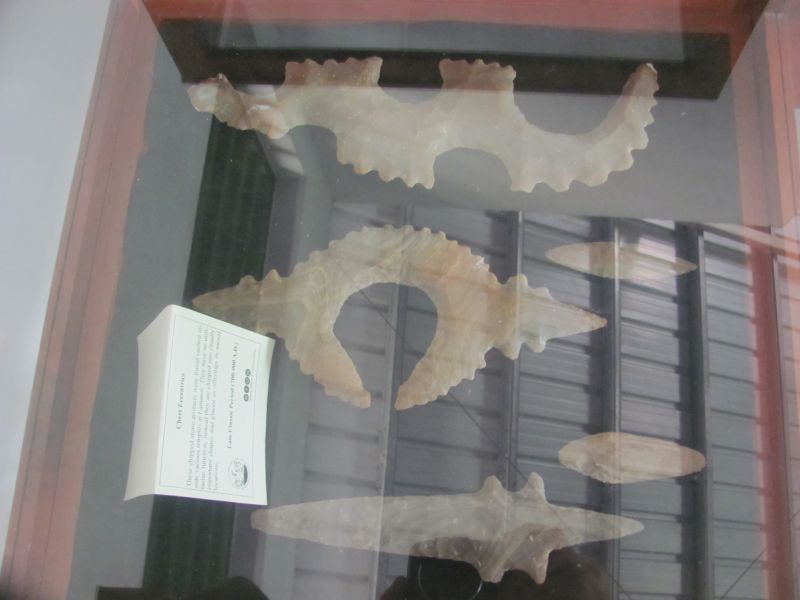
78-81 are more ceremics
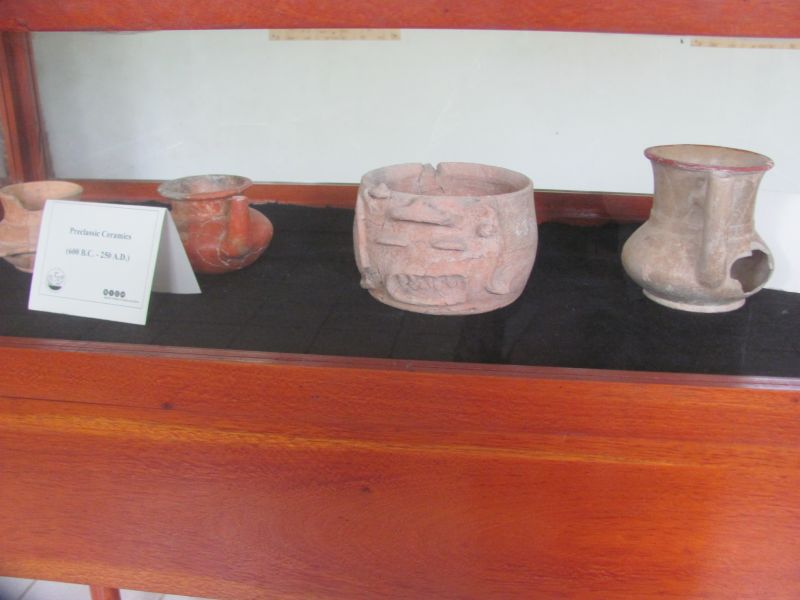
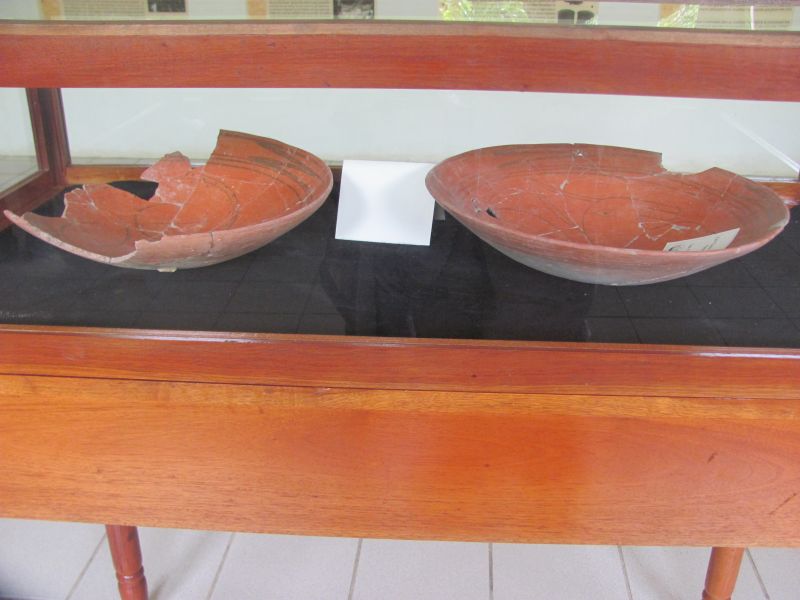
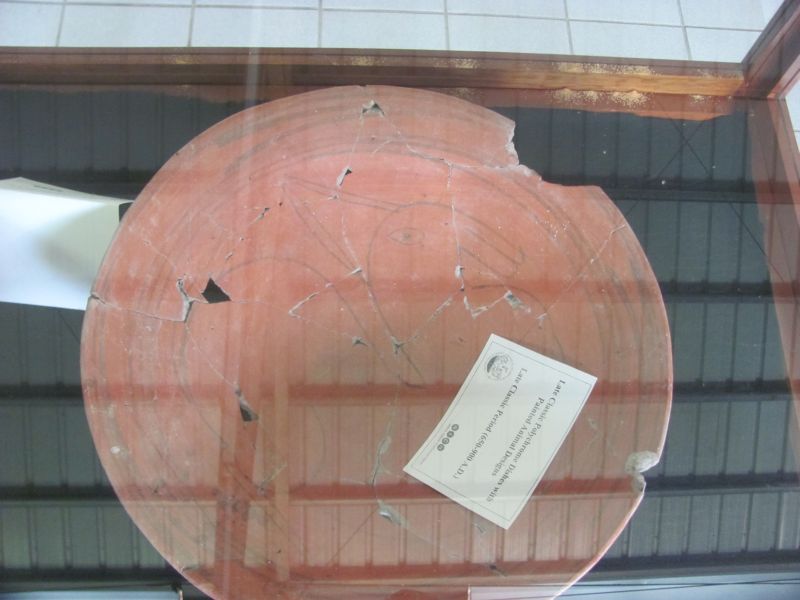
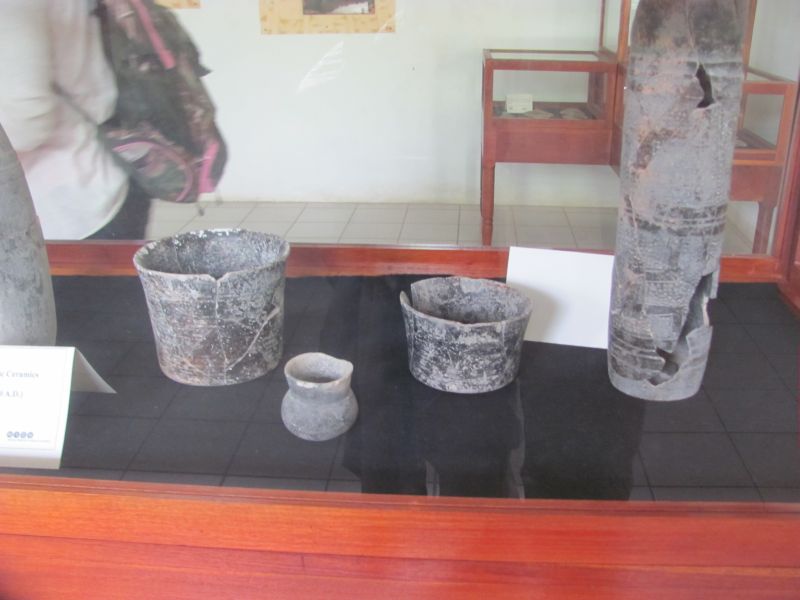
82 etc are pictures of the Jaguar temple
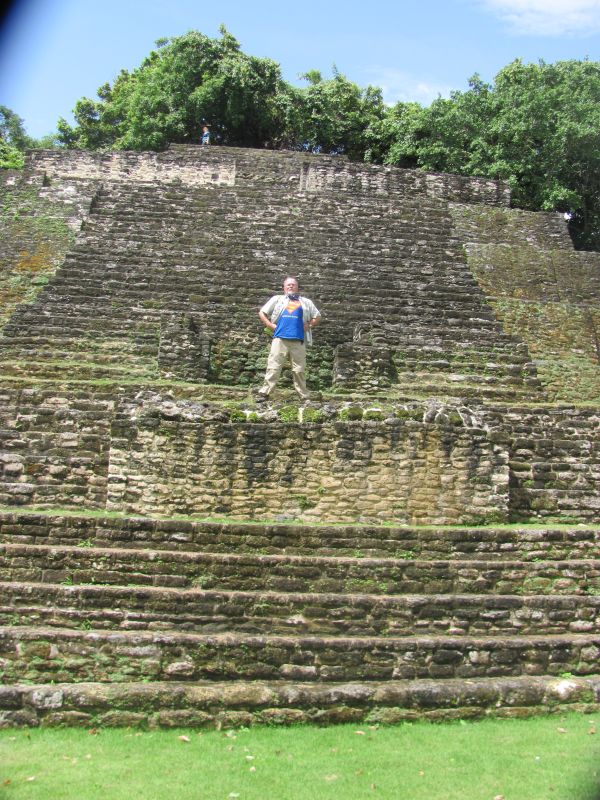

85-88 are pictures of an elite residence.. look at that stone work our guys used

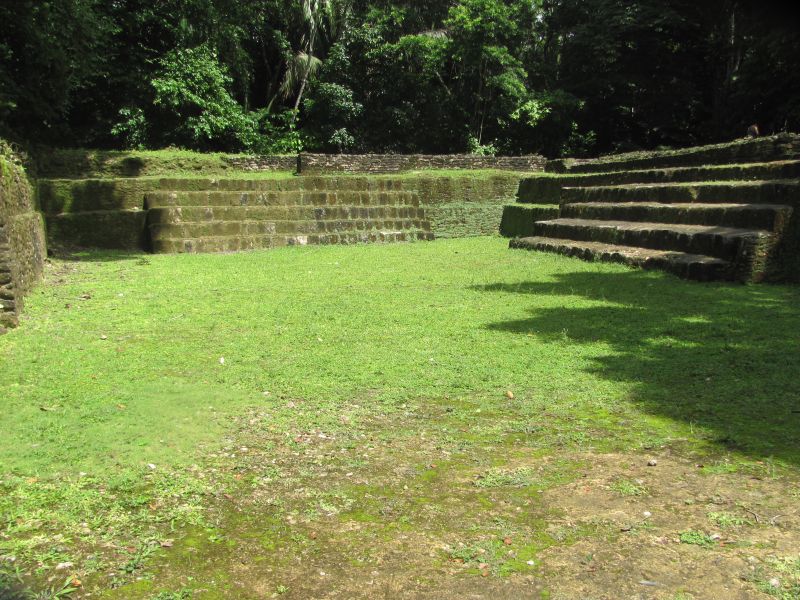
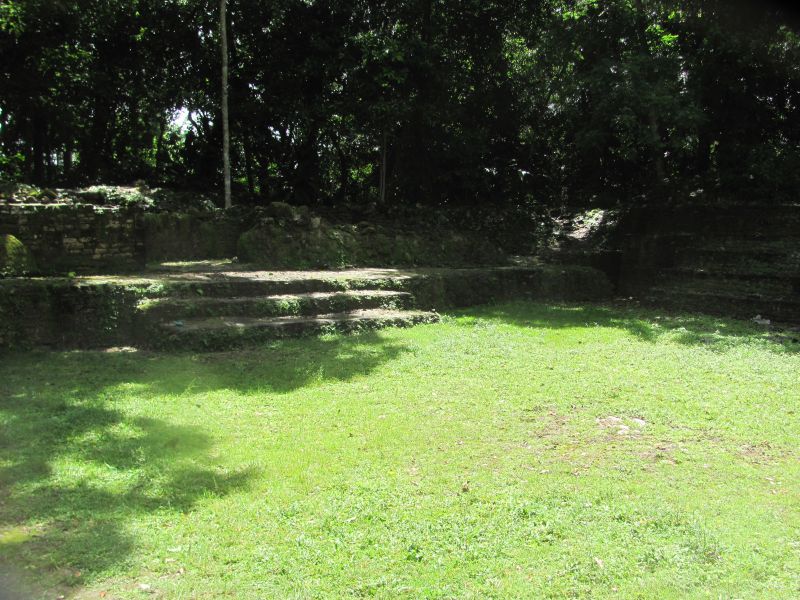
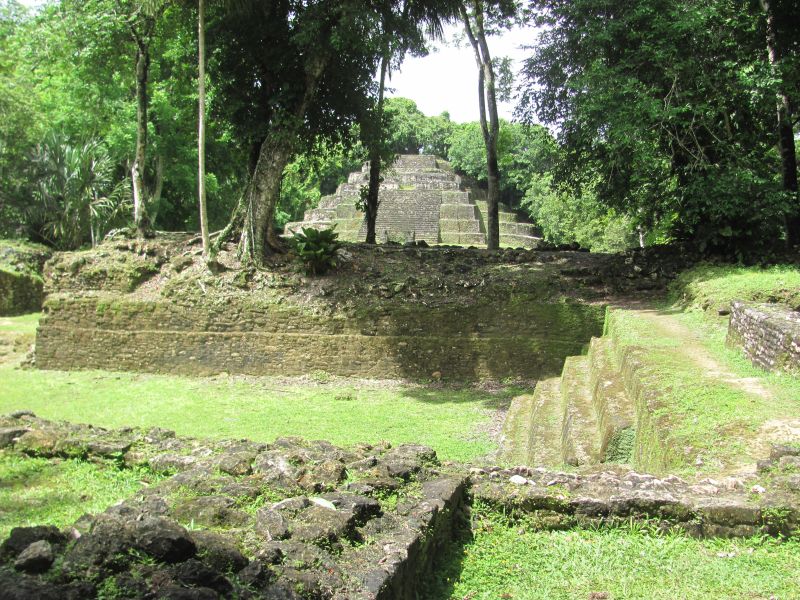
rough cut limestone and covered all of it with a thick coating of plaster.
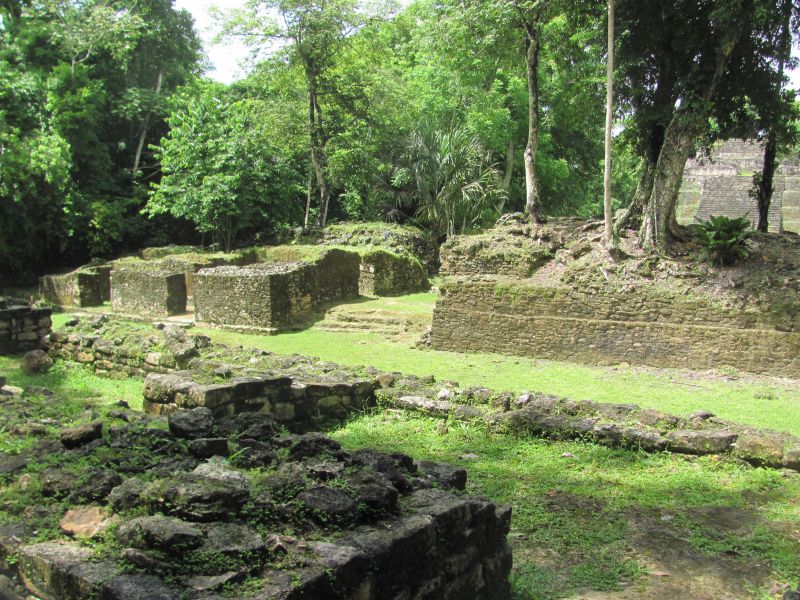
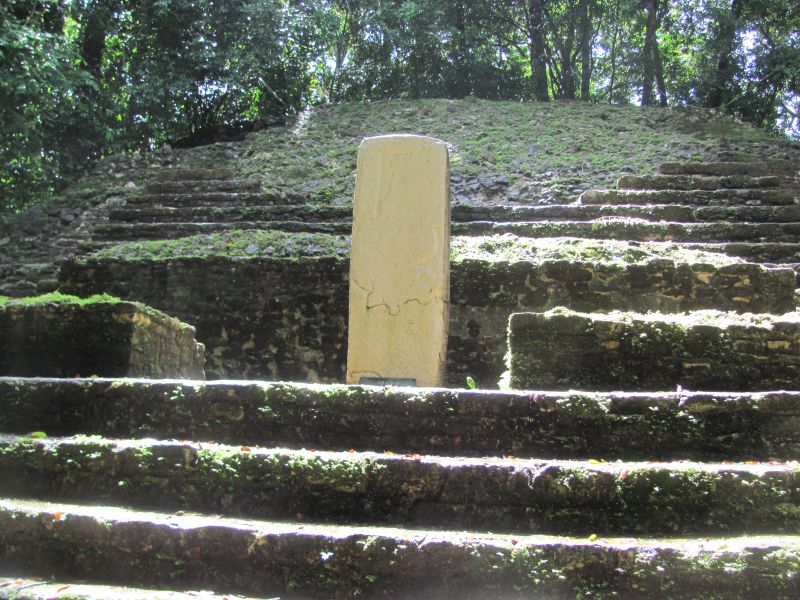
'stele 9'
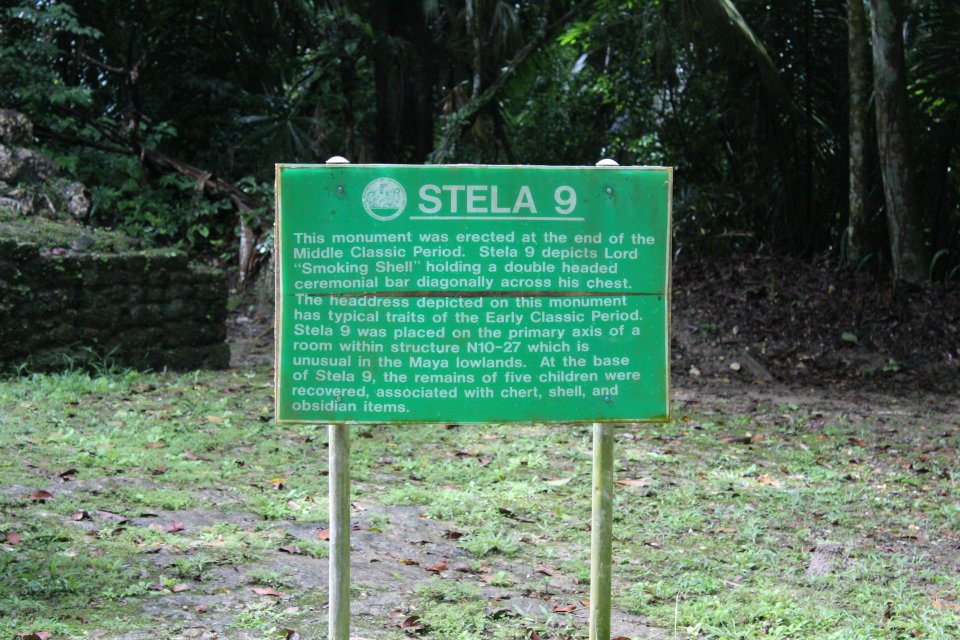
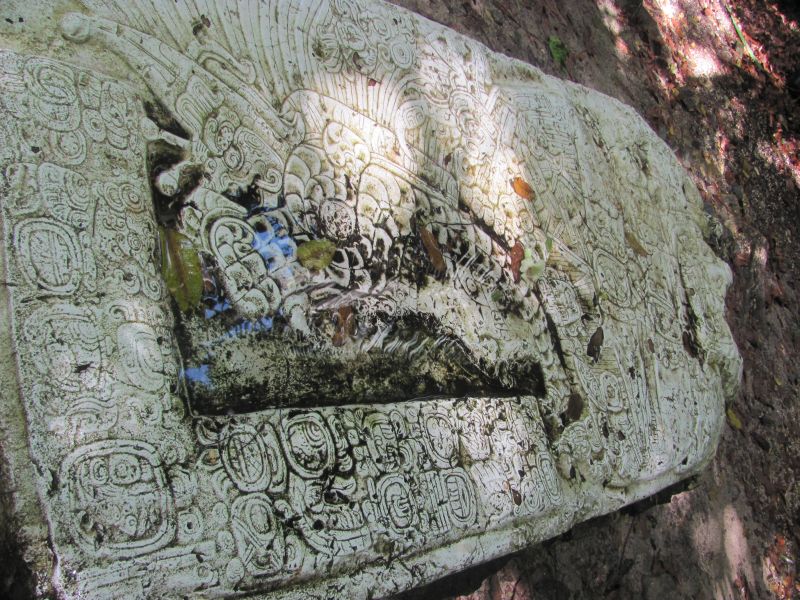
92 93 was an alter lying down in front of the structure
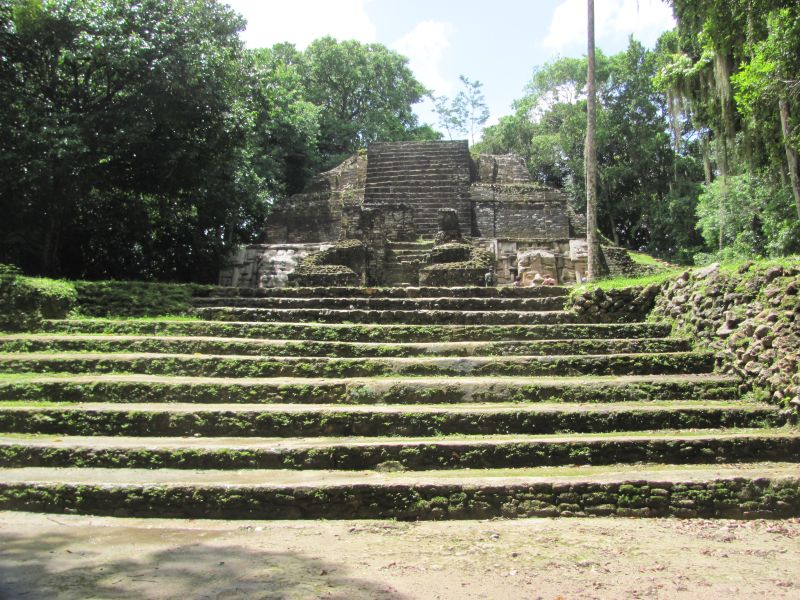
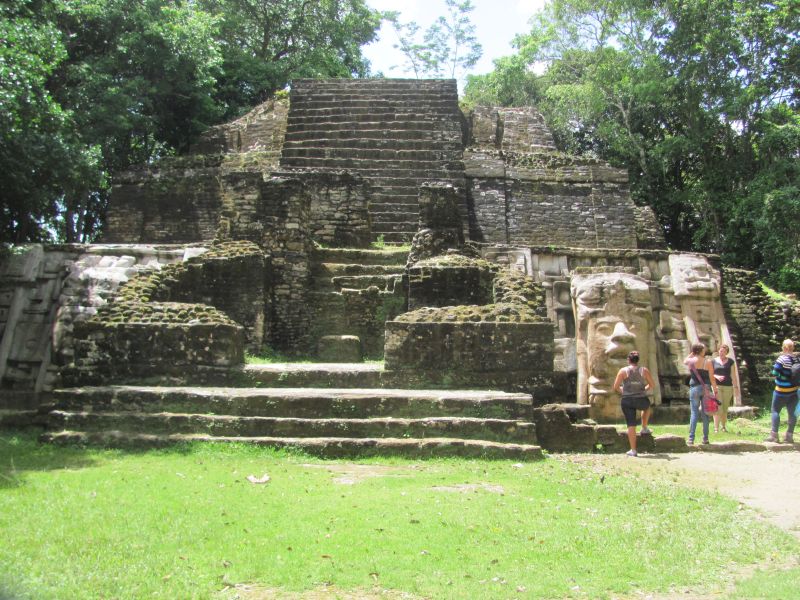
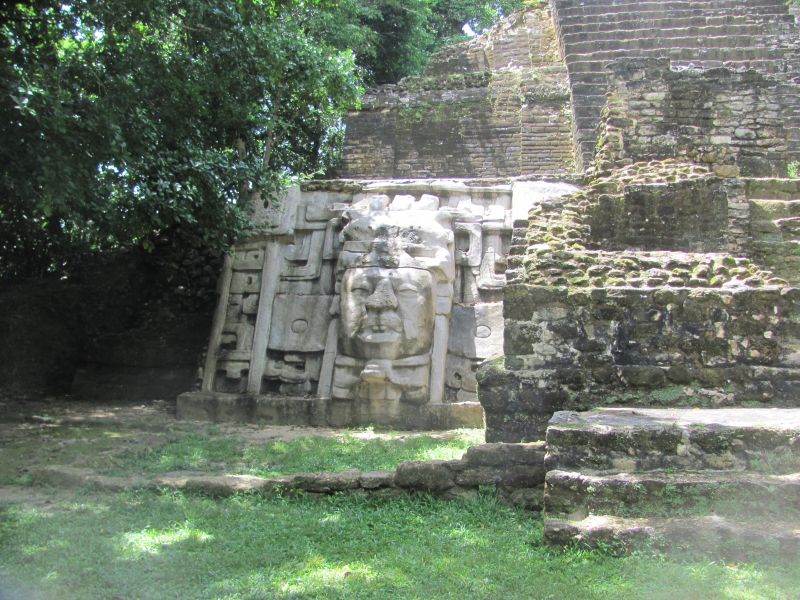
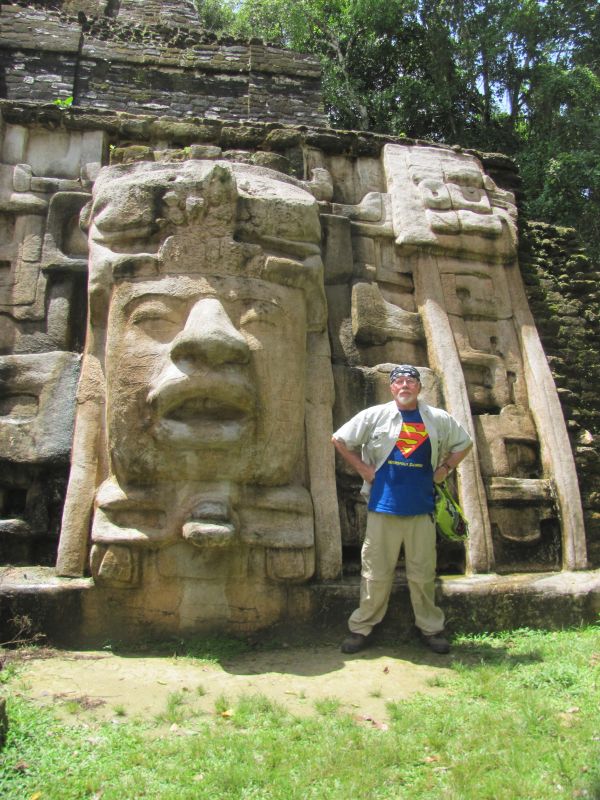
94 begins the series on the 'mask' temple. The masks have an Olmec style to them.
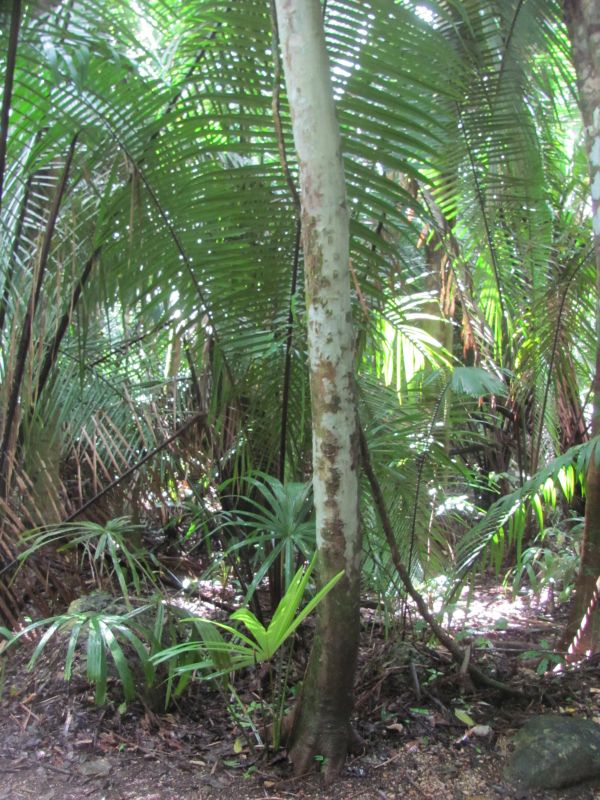
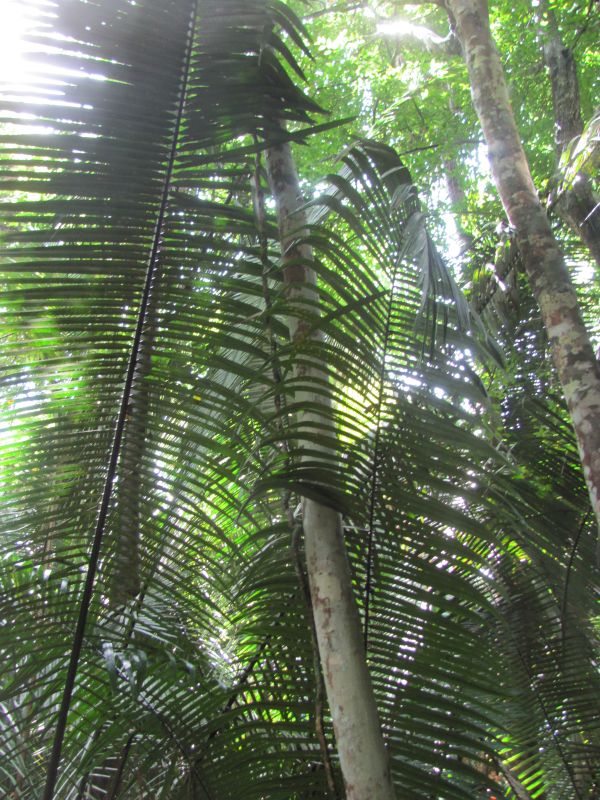
100 is a copal tree as is 101 only higher on the trunk this was used to get resin to burn. The end of this page shows my experiment burning Copal.
02 begins the series on the lake and lodge and lunch at the lodge. they bring
tourists from the North road (60 mile trip from here by road) to the lodge by airboats
in the picture.
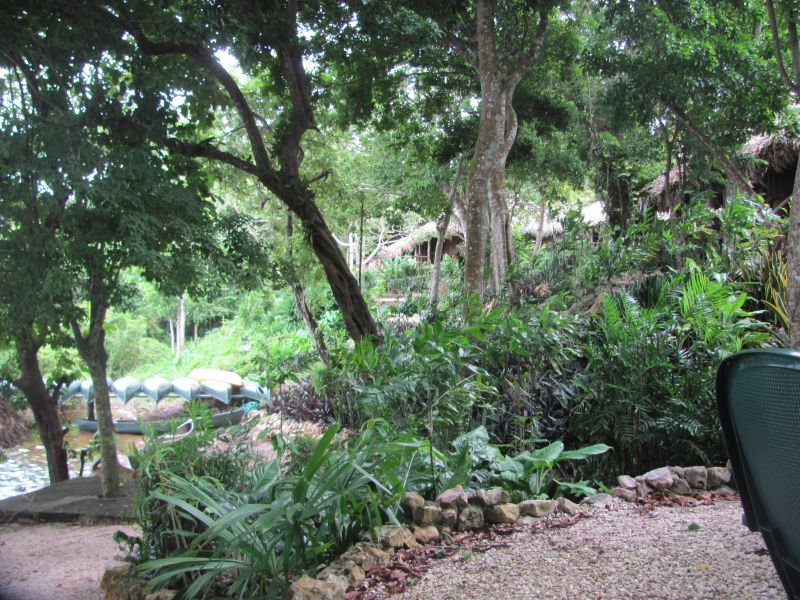
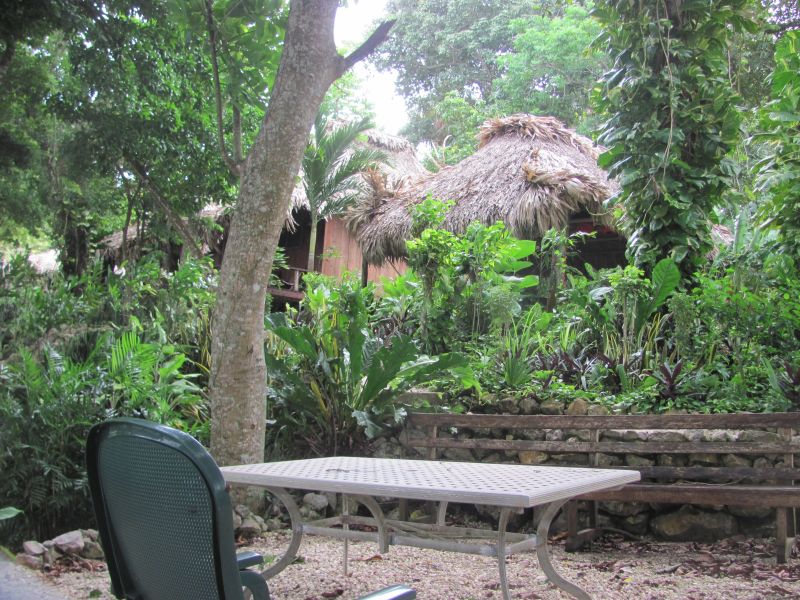
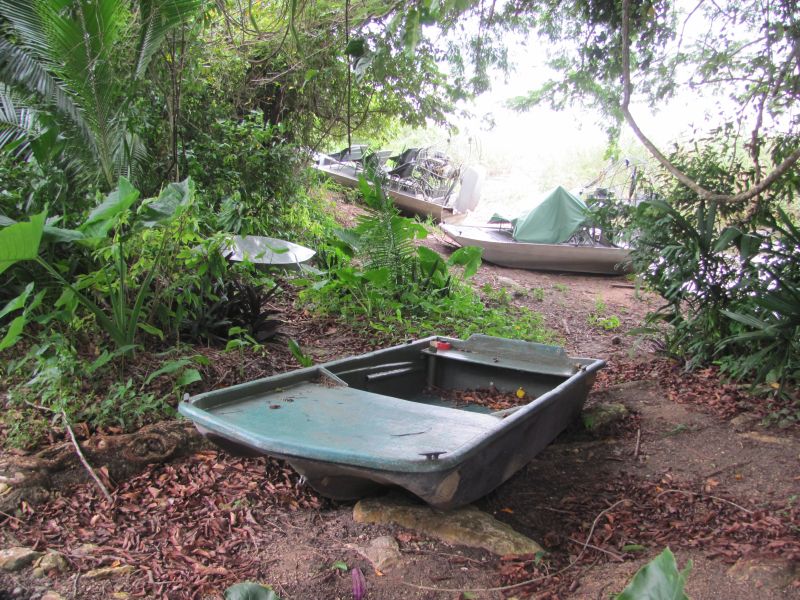
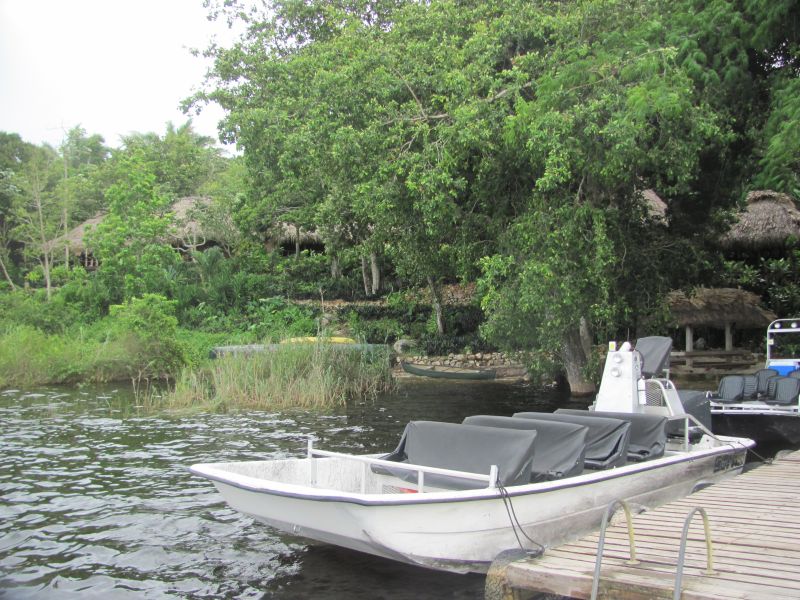
The lake on the New River at the Lamani Outpost lodge.
below on the road back from Lamani through San Felipe.

15 is a 'up scale' residence in San Felipe, Orange Walk district, Belize. San Felipe is where our workers live. This is
a large building but architecture is something better than most.
off to get ready to roll down that muddy road to adventure.
Today was eventful with the skeleton being exposed with about 20 or so bead of different shape being behind the skull. I got pictures up to that time and the camera mechanically malfunctioned and so it will be cell phone pictures from here out. Oh well. It rained and we stayed out in the rain so I had a rubber boot full of water. The poncho works to an extent but the pant legs will be wet all day tomorrow. Laundry goes out tomorrow for me. Gail crew chief is going to let me photograph the entire set of beads. One of the remaining teeth was incised as was the custom of upper class Maya. Most of the effort was spent digging out a room on the other side of the court yard that I took some pictures seen here. The rest was spent measuring the skeleton and preserving the bones for analysis and recovering the artifacts. Lots of pottery pieces and about 1/2 with red waxy finish. More later it is about dinner time. Hope the cafe is not as busy this evening. If it is this maybe a tuesday message.
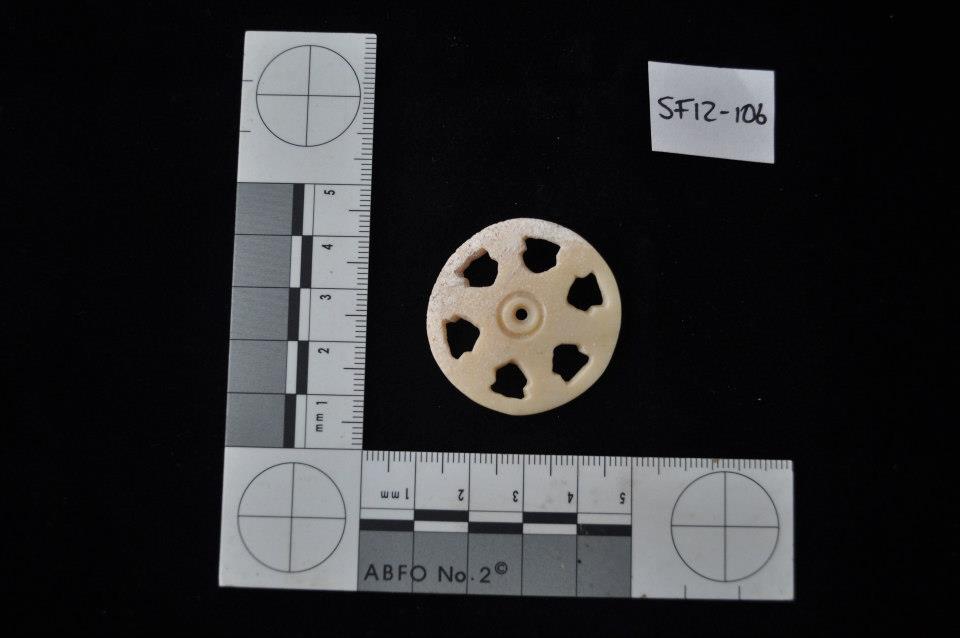
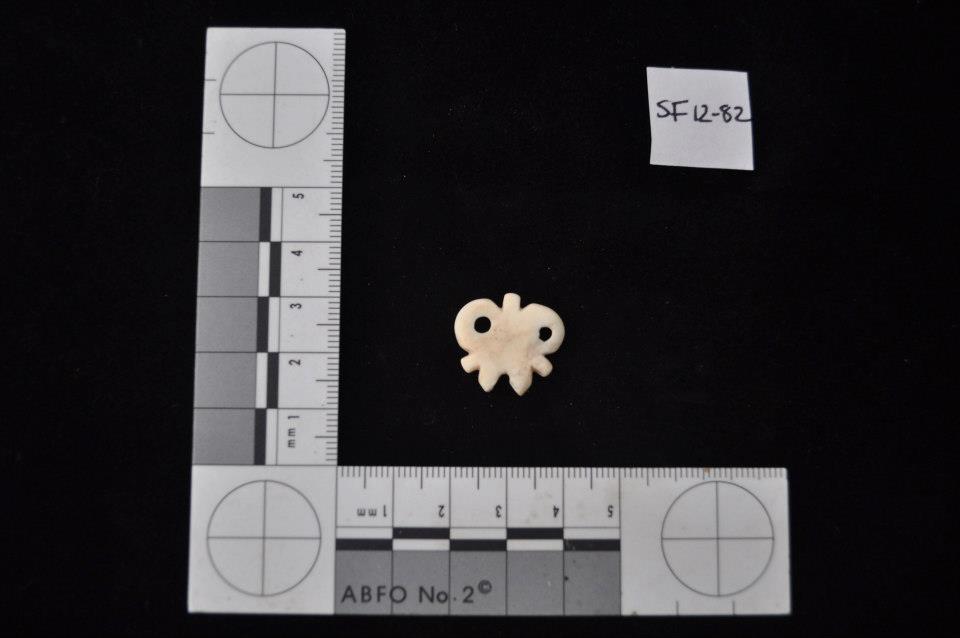
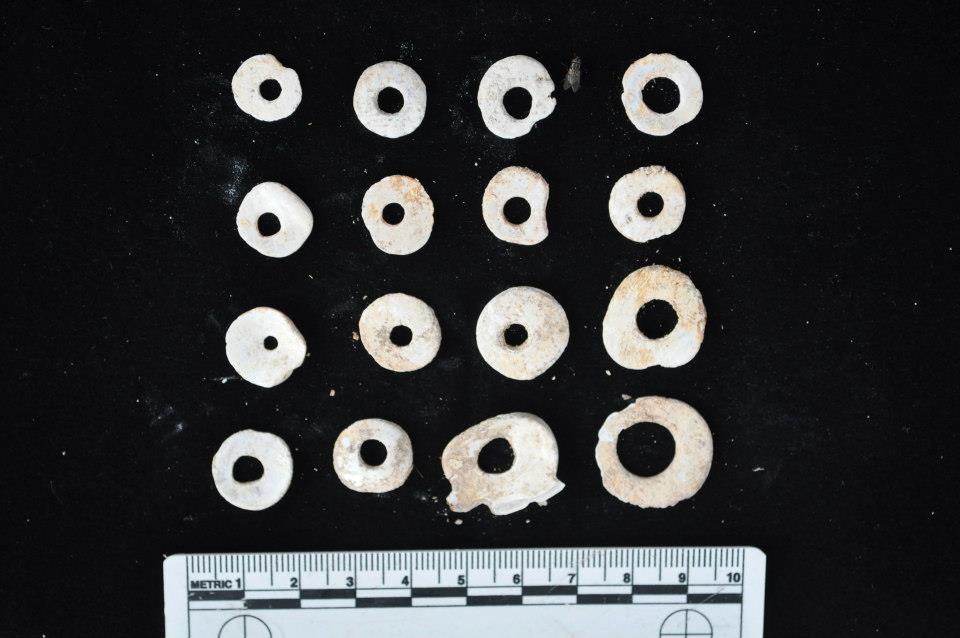

Here is an illustration showing similarity between the Ahau head-dress decorated with volutes shaped like an Ahaw glyph on Structure 9 at Blue Creek and SF12-82 shell artifact from Tulix Muul Structure 6 sub op B. I still am working to see if there is evidence that that assembly is more than 'beads'. Some of the pieces look like ear spool pieces and as I said before the dark ceramic piece looks like a gorget backing plate that supports shell decorations. The large discs seem more to be suited for a facing on a garment such as copied in drawings by Linda Schele. That made me think that this may have been sewn onto a fabric backing and worn or laid under the body.
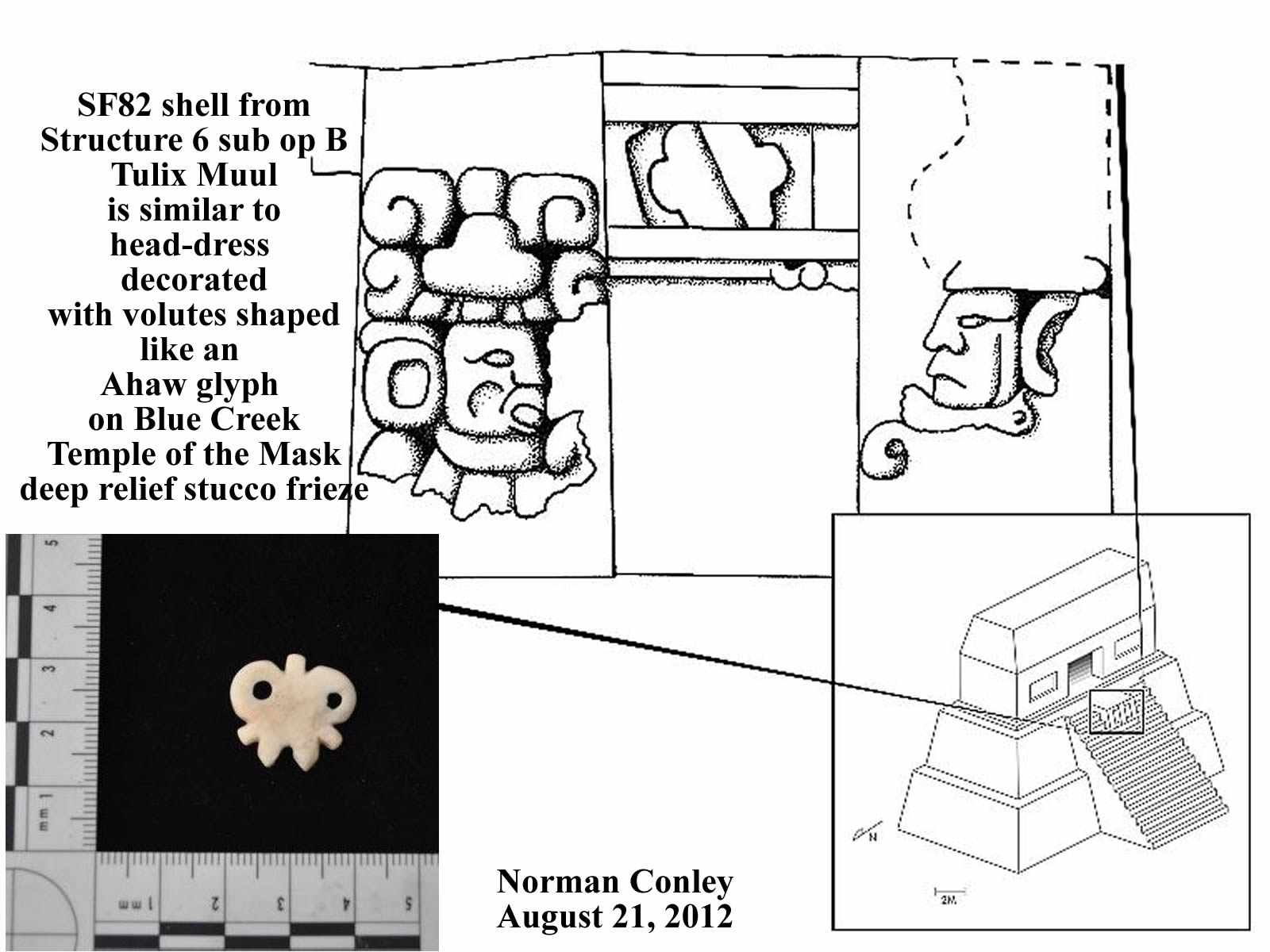
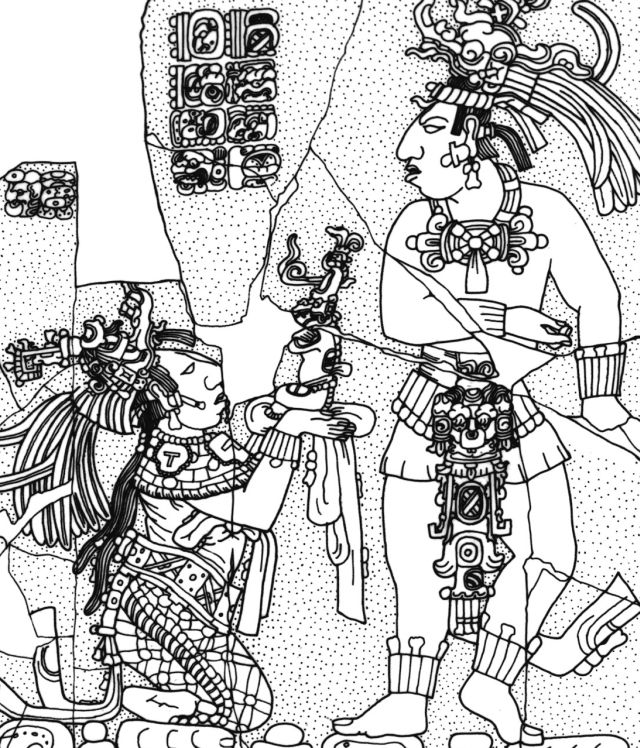
Linda Schele drawing from the Maya area showing deocrated clothes, breast plate and gorget decorations
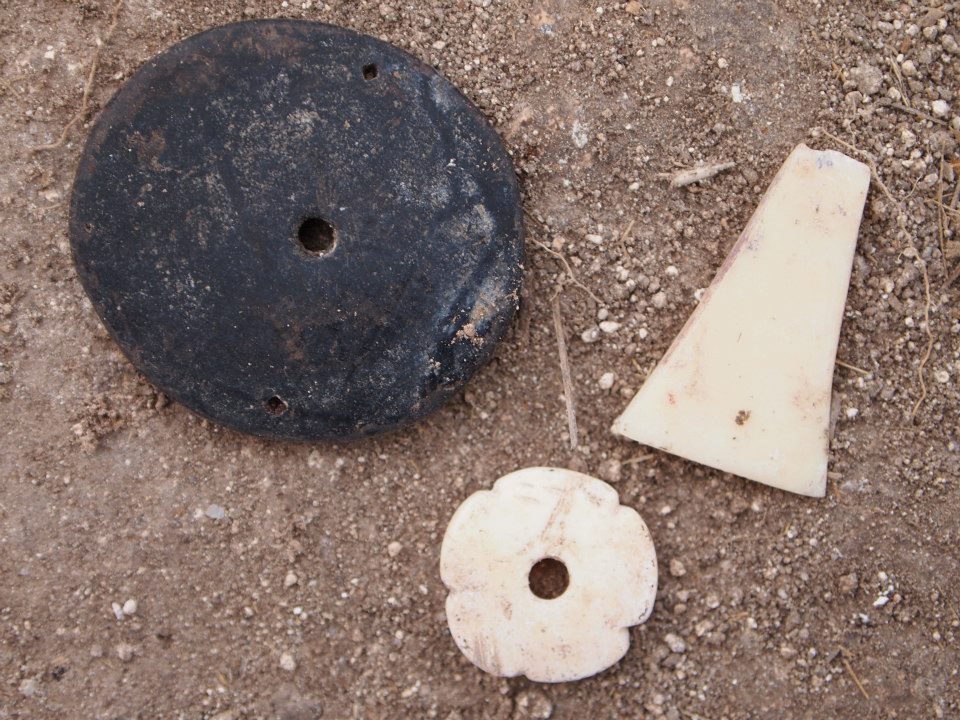
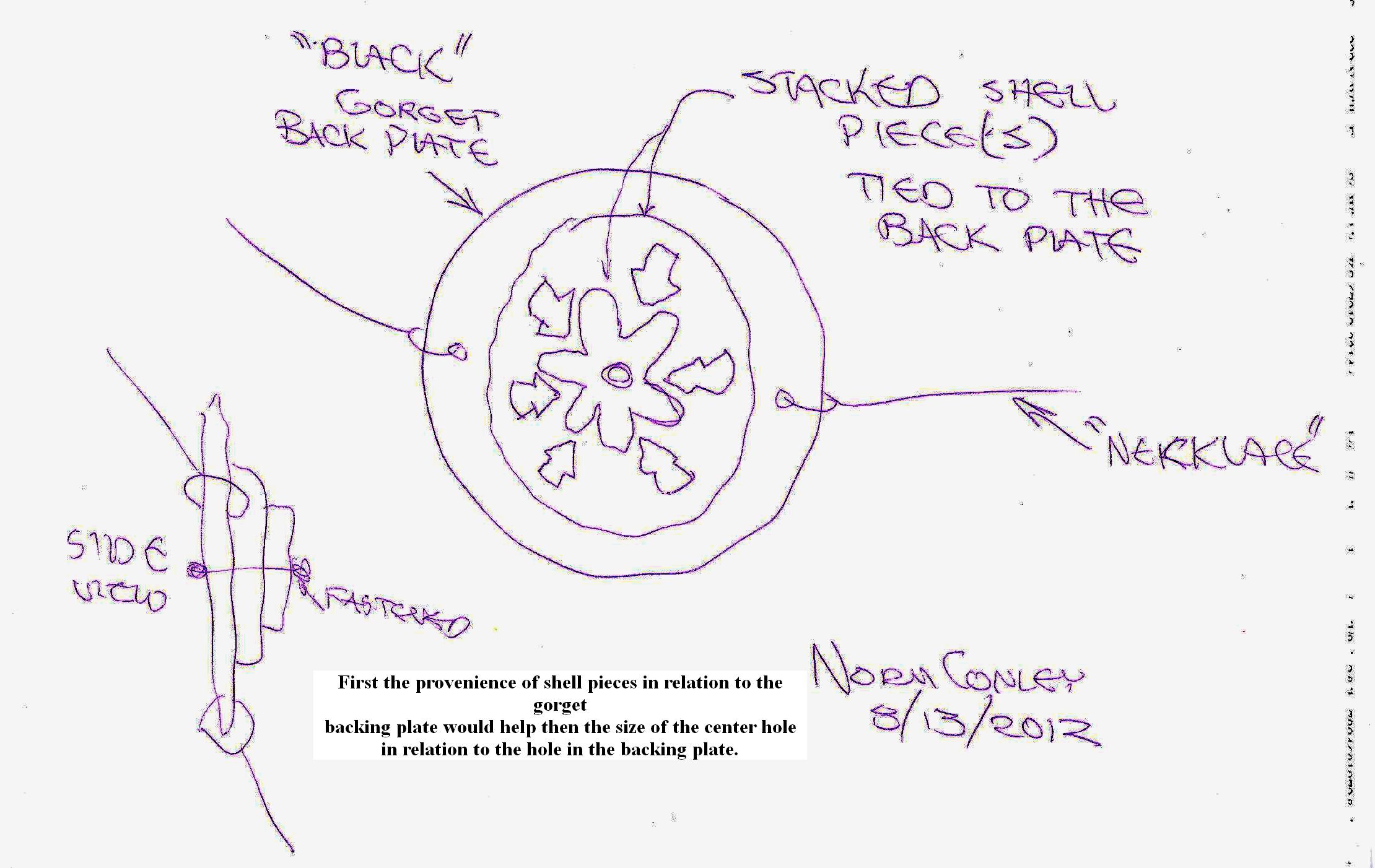
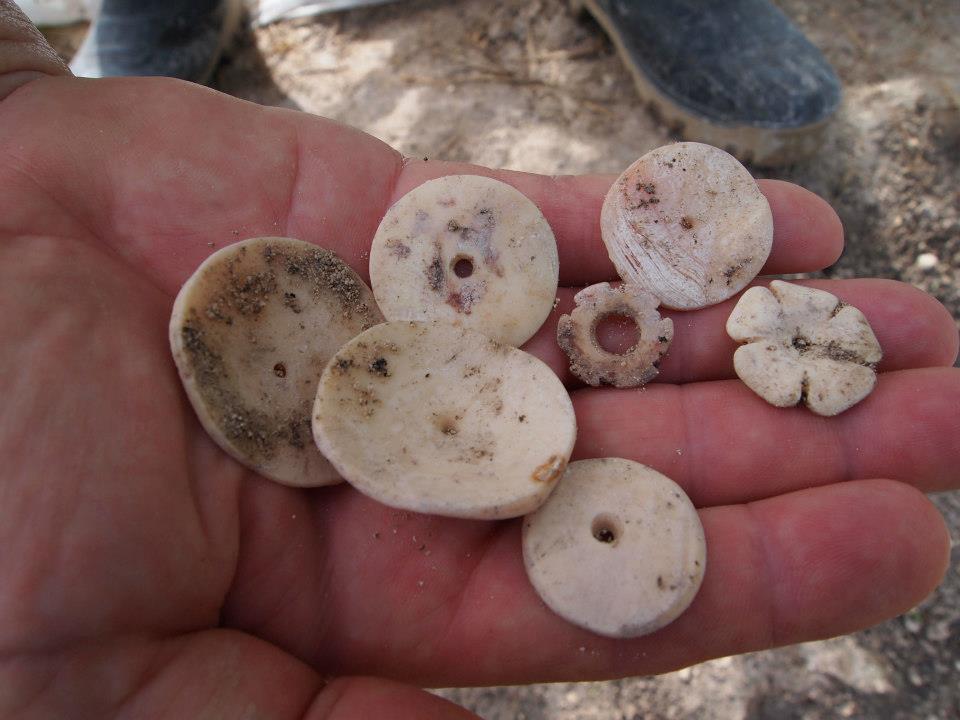
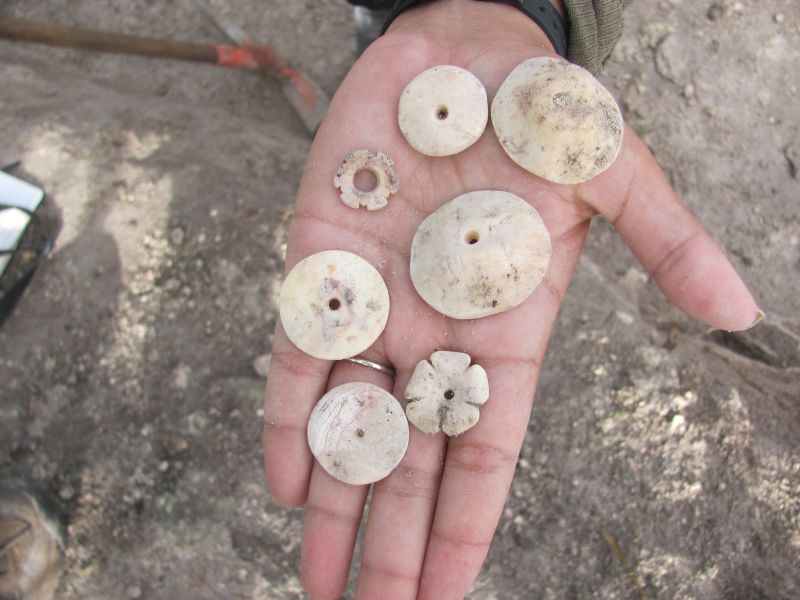
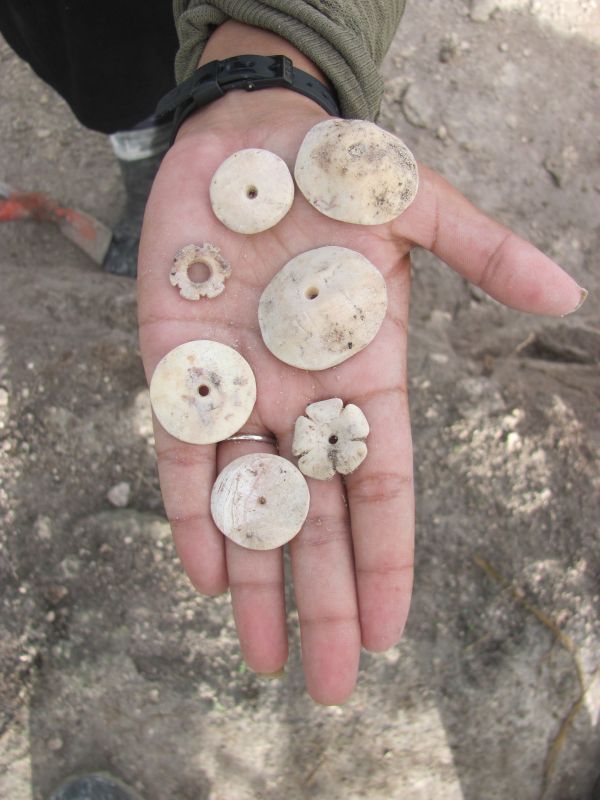
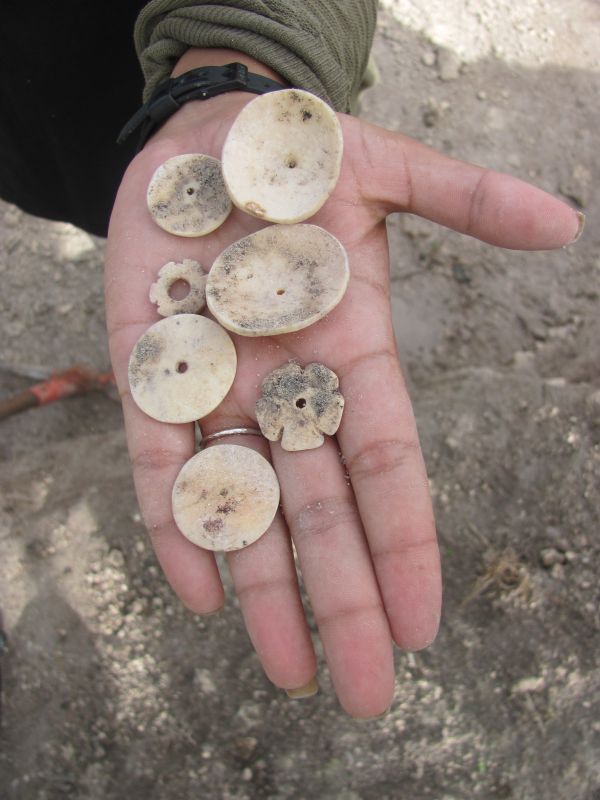
7/25 Belize continued with a picture of intern Sam Mclellan sitting in the lab at MRP working
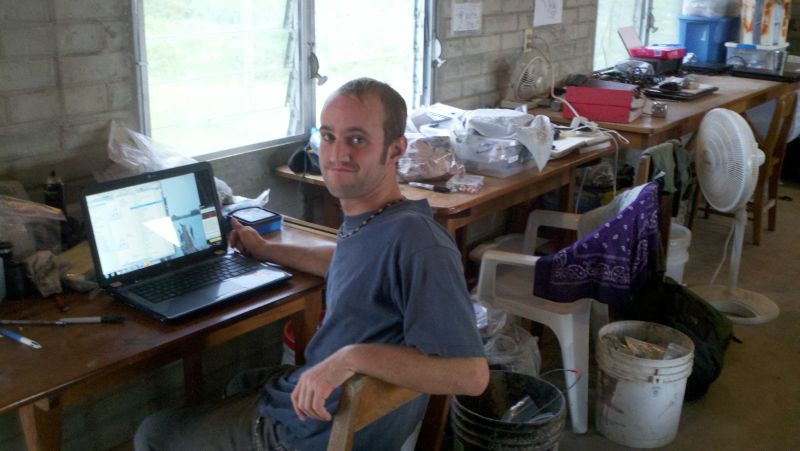
... muddy boots and digging out a skeleton. Then there are two foggy pictures. TM-6 sub op b workers revealed a second burial.
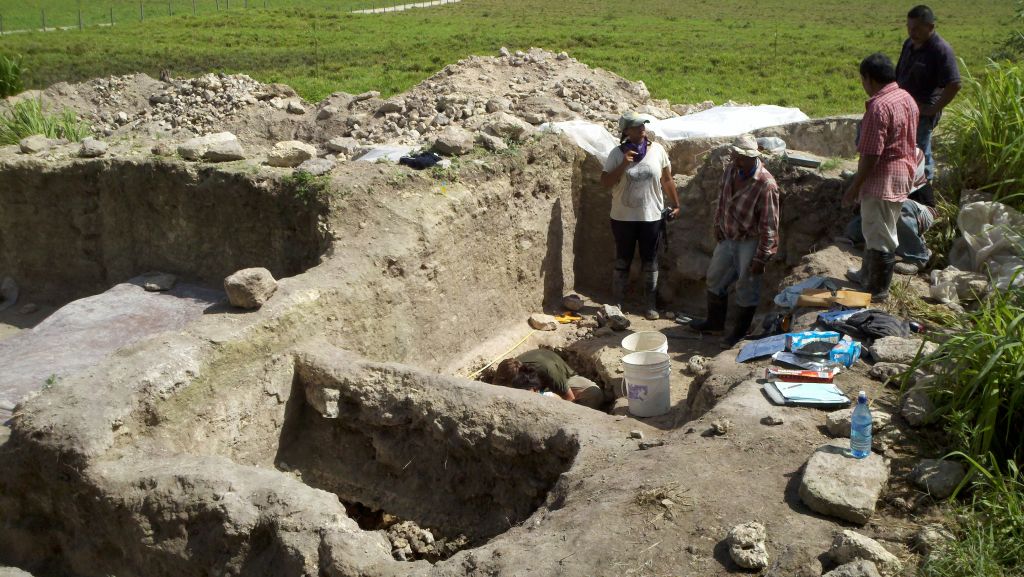
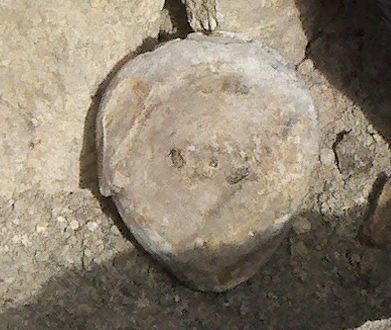 Odd piece of Chert that had a natural bowl shape found in context with the second burial.
Odd piece of Chert that had a natural bowl shape found in context with the second burial.
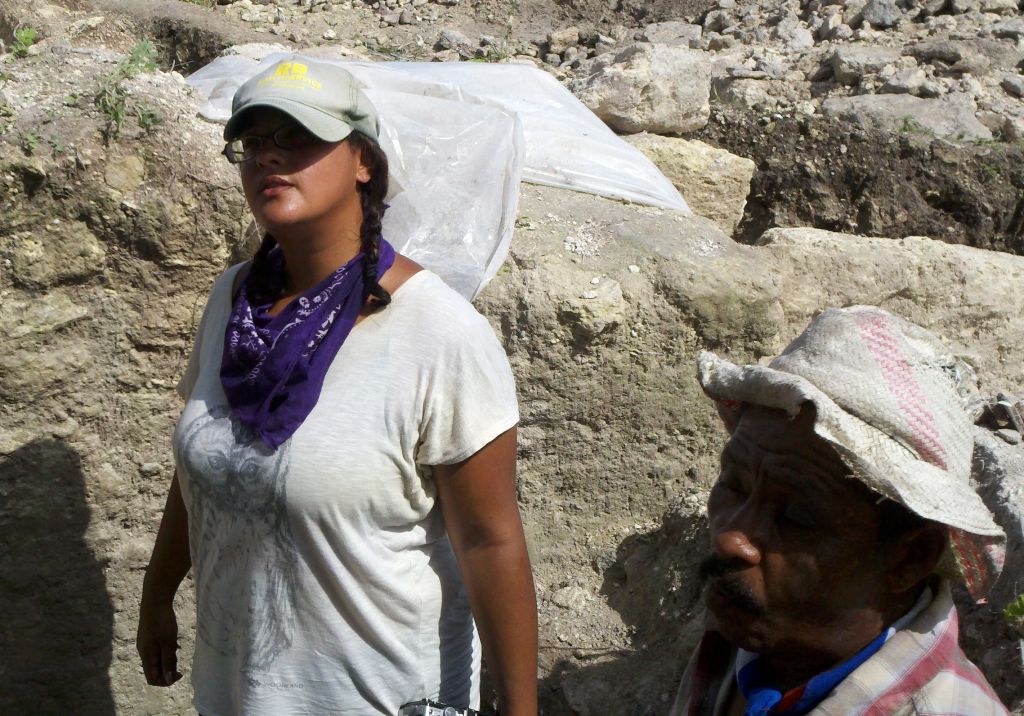
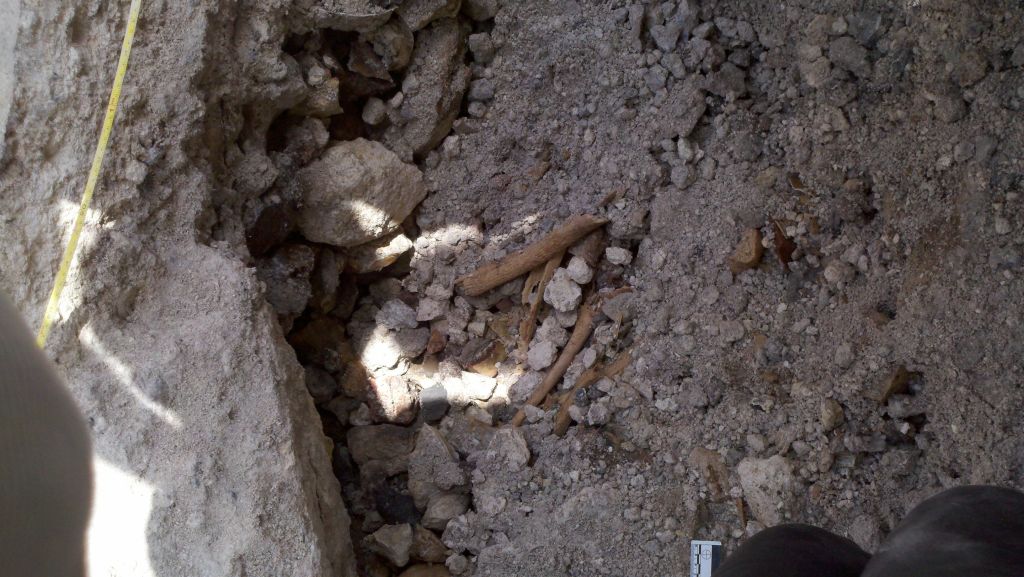
second burial found in a crypt
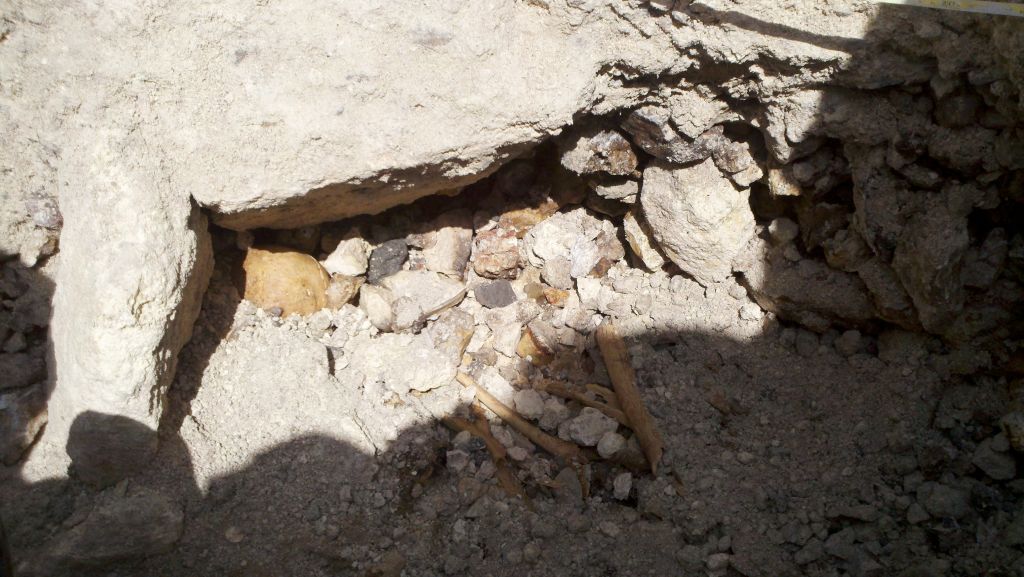
second burial
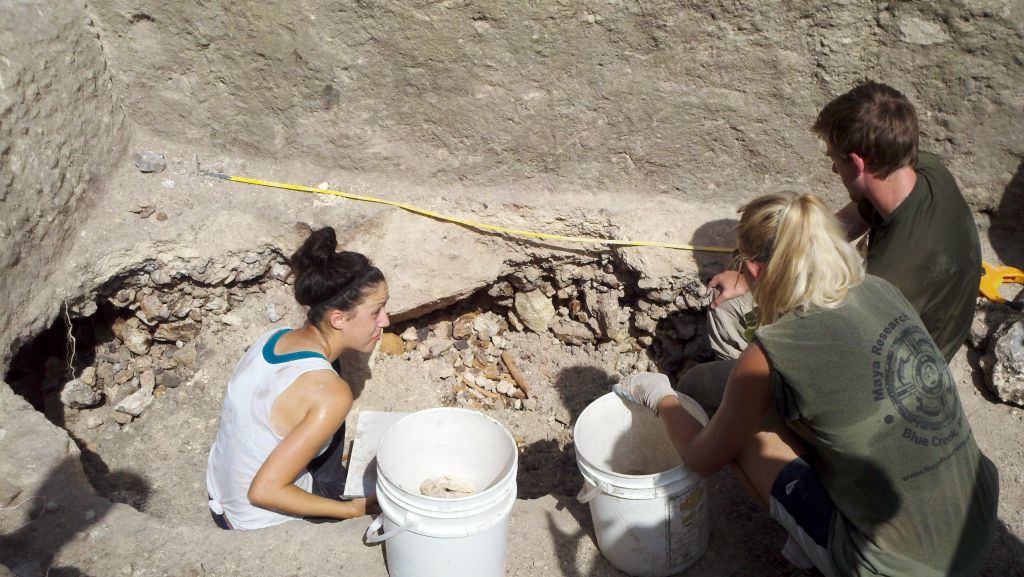
second burial in a crypt of sorts.
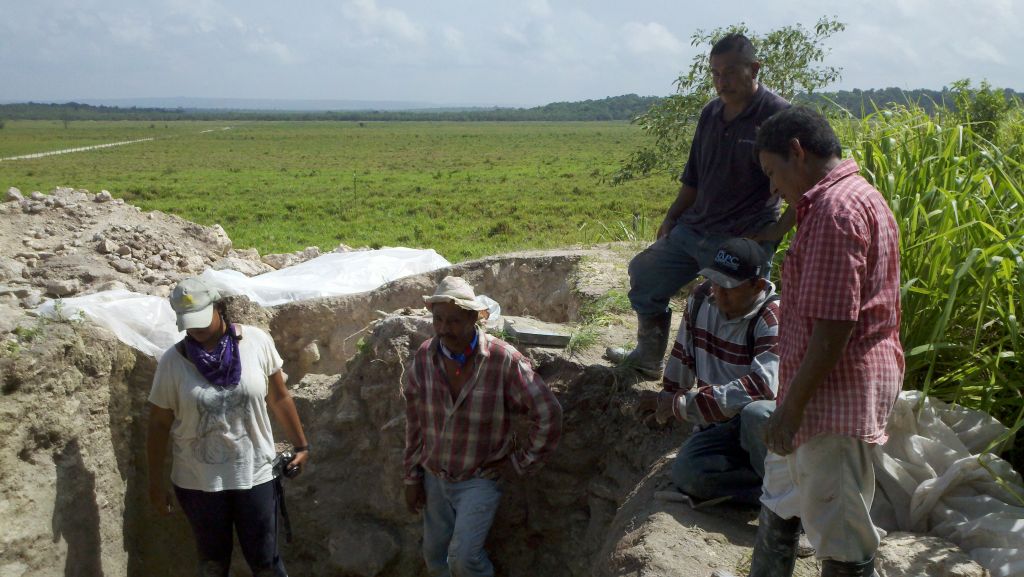
watching the excavation of the first burial.
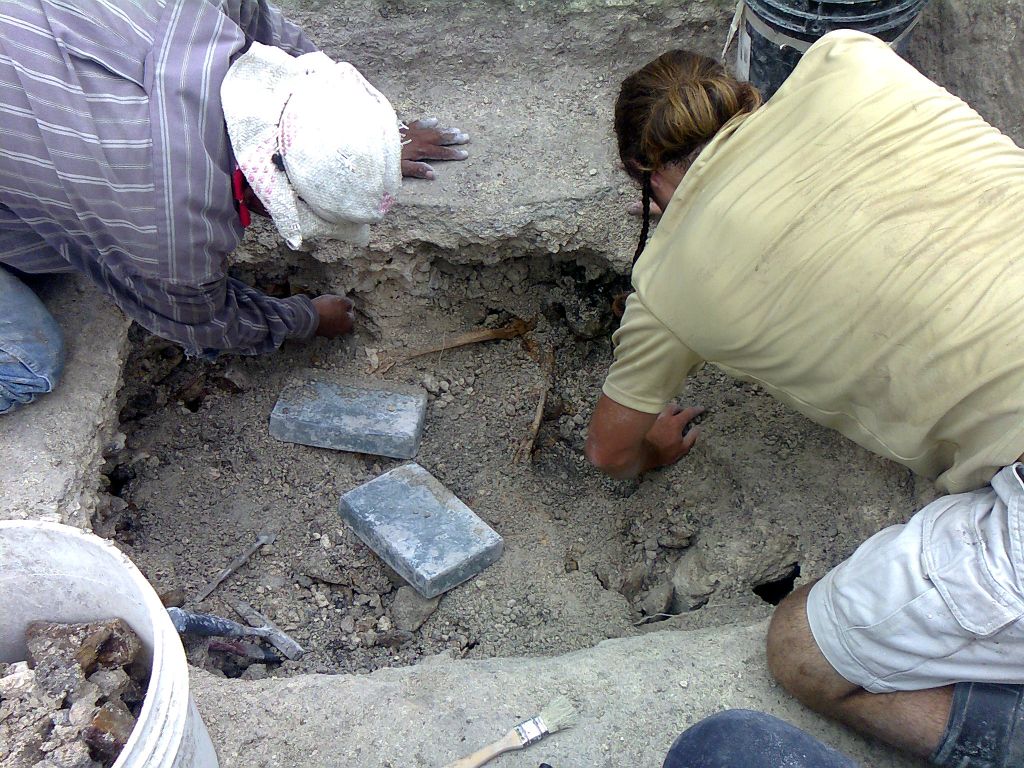
First Burial that had the ornaments that follow under its skull. The skull was smashed by a rock on top of it Cleaning the bones and looked at the Manible and what was there of the Maxilary
Reference:: Human Osteology by White and Folkens that was in the lab: page 343 estimation of age all molars have erupted suggesting the individual was 21 years or older.
page 346 Estimation of age Maxilary and Mandibular attrition compared to the two sections of the mandible show attrition compared to the naive American population 45 to 55 years old. Only saw one molar on the maxilary that is in place and having attrition and being the forward molar suggests and individual of at least 40 years old. Talking to Dr Raben (dentist) and Dr. Peer H. Moore-Jansen (Biological Anthropologist) it is likely the person was much younger than 55 due to the high abrasive content of their diets.
http://www.uic.edu/classes/osci/osci590/10_1Non-Metric.htm
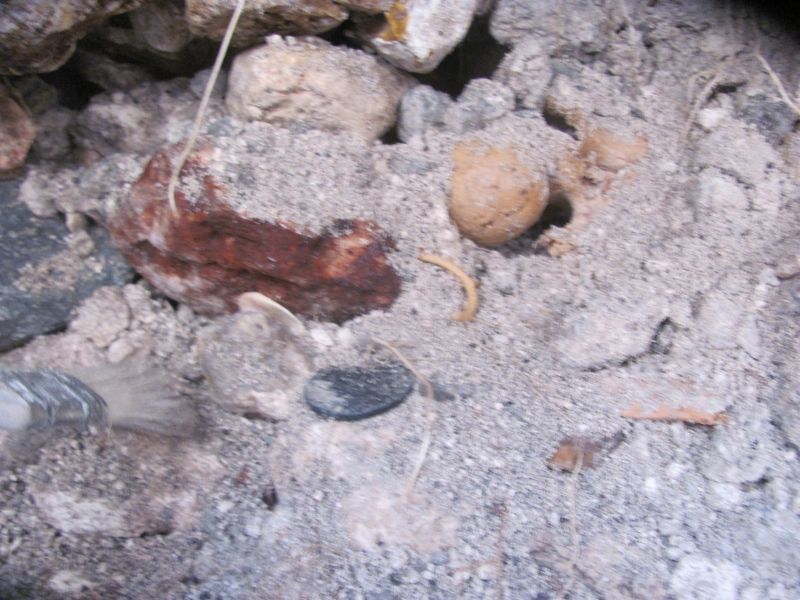


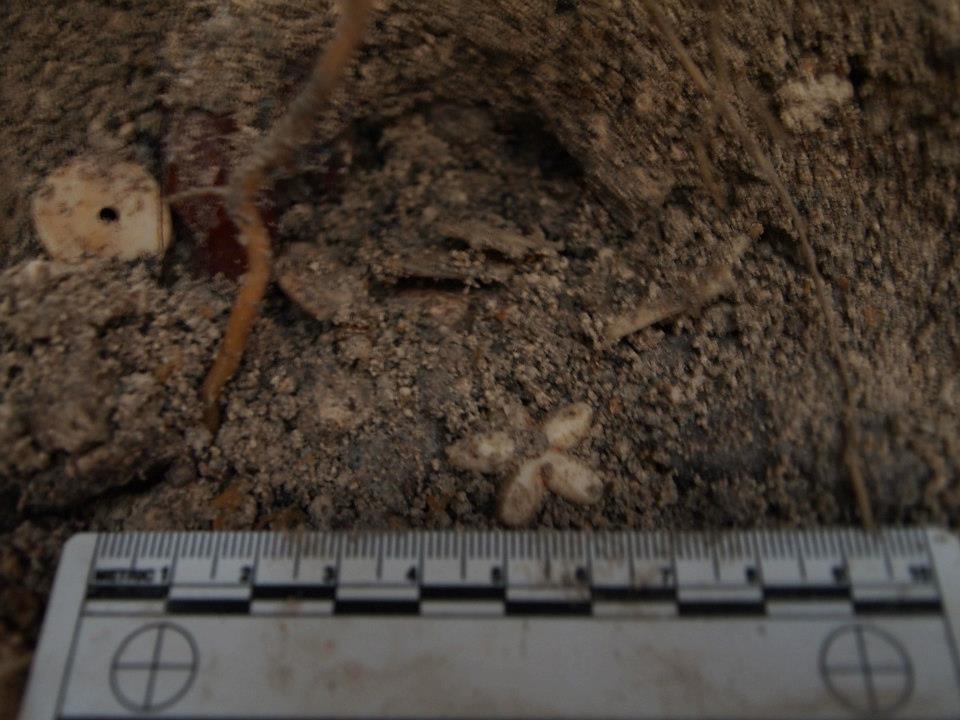
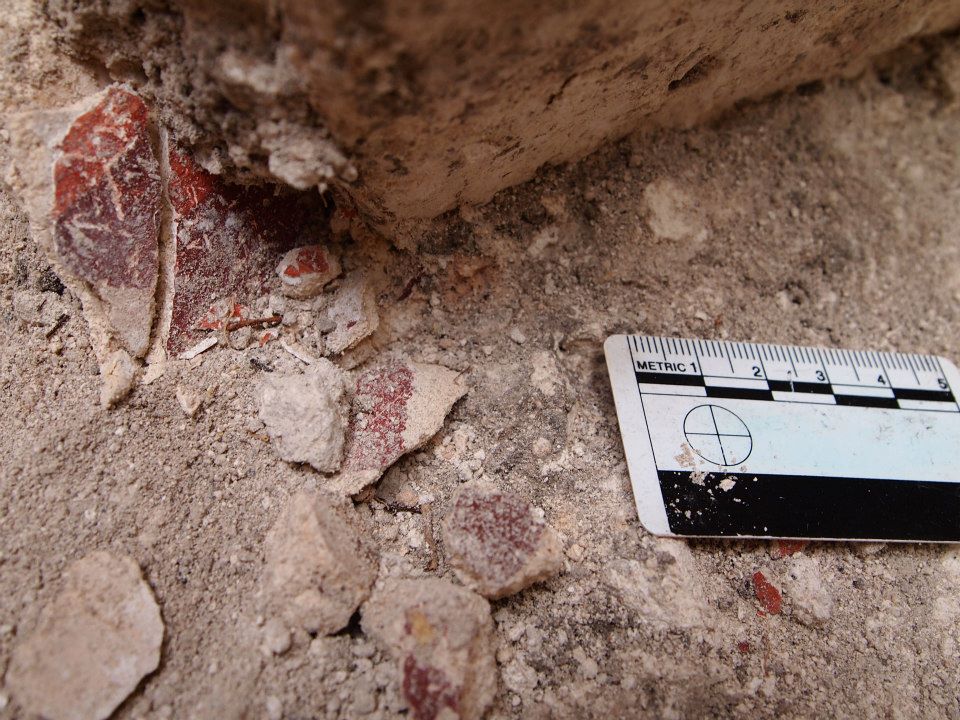

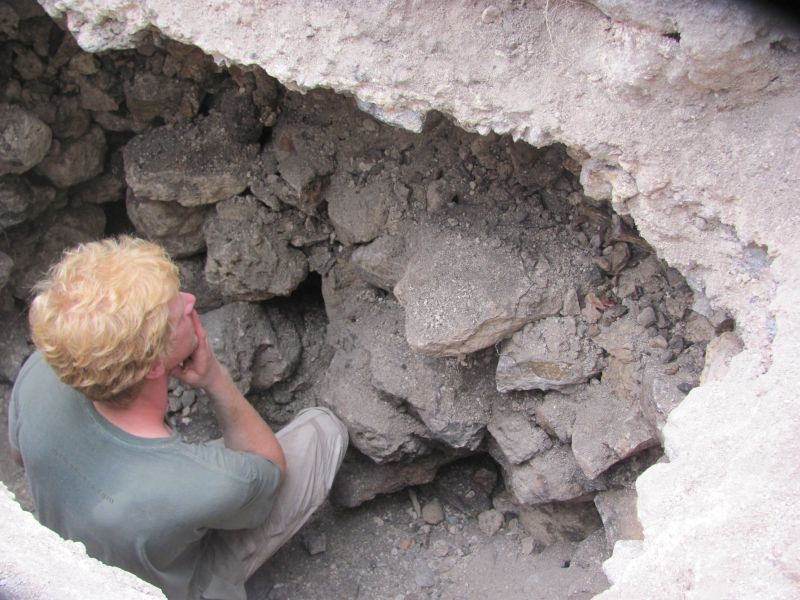
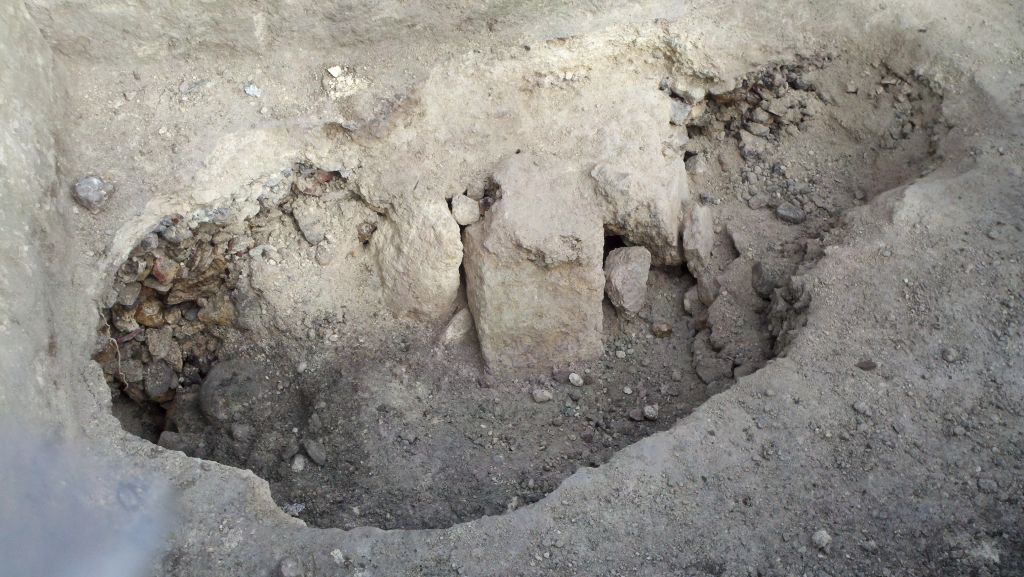
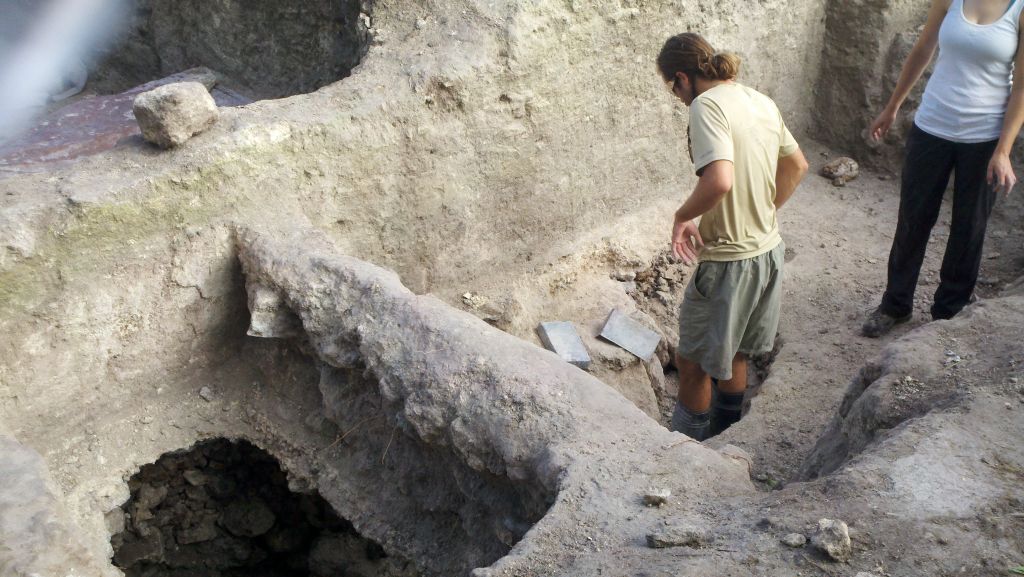
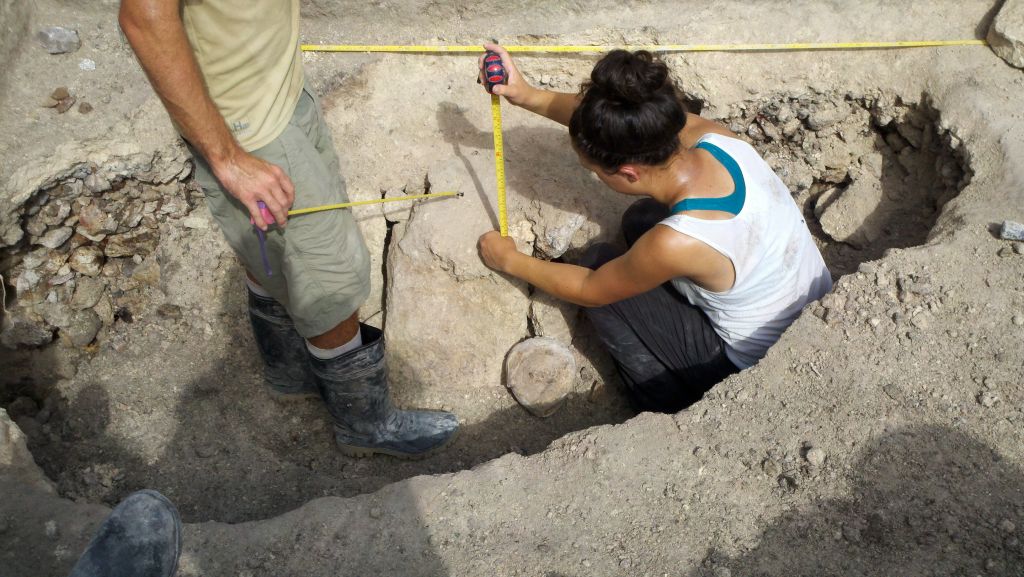

large Chert boulder found flat side down on bed rock. It has marks as if scored on purpose.
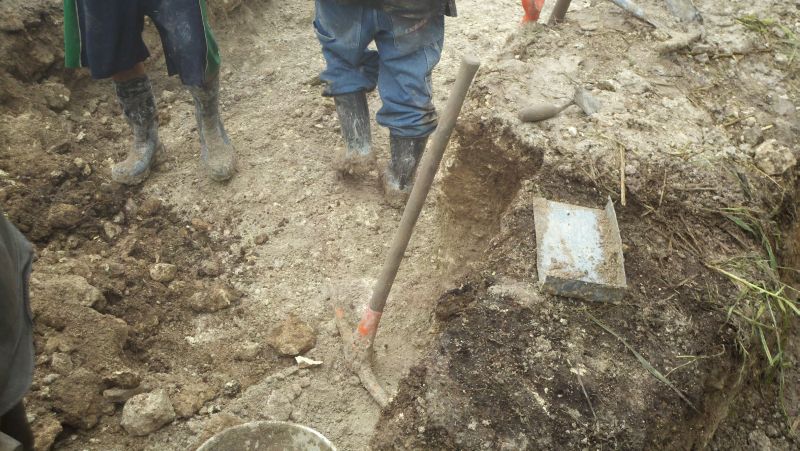
Odd stuff. ...Gail Hammond crew chief (University College London)... sent me to the other side to shovel dirt..
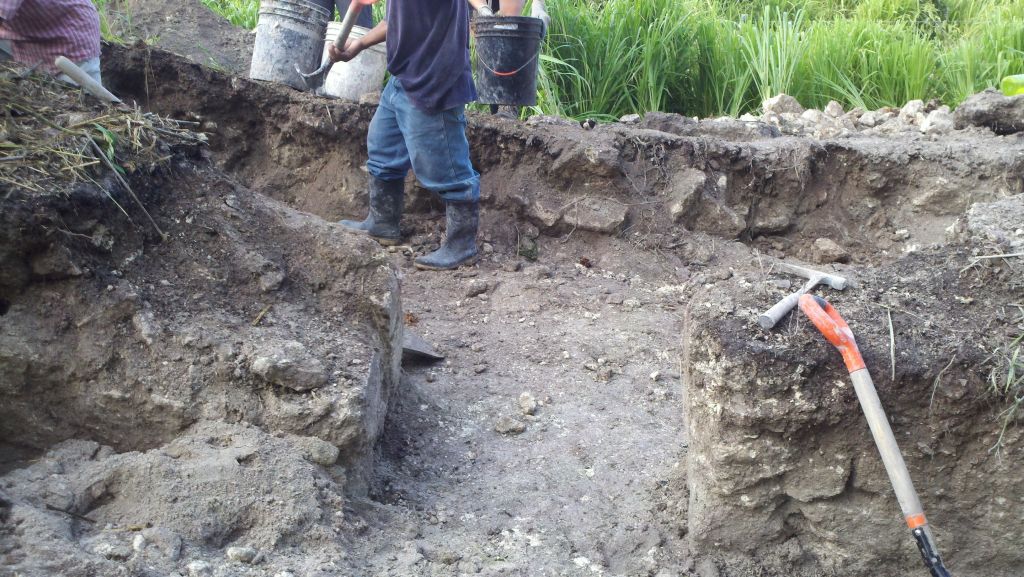
Very nice door in structure G that revealed a cache of at least 4 bi faces of the same size and some broken pottery. There was a limestone wall stone pointing down at the cache so it is likely not the only thing there but that will be for next season to find out.
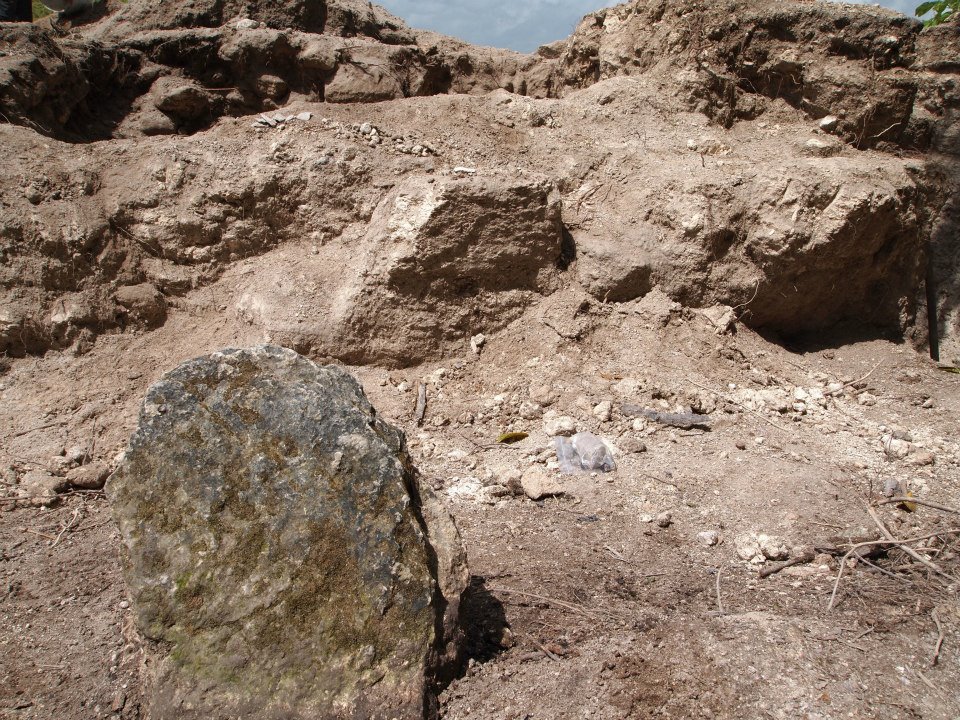
The stelle in front of structure 9 was likely plaster covered and decorated.
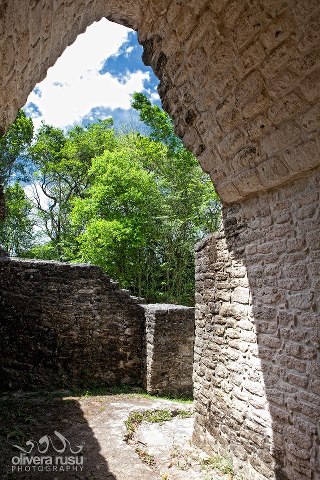
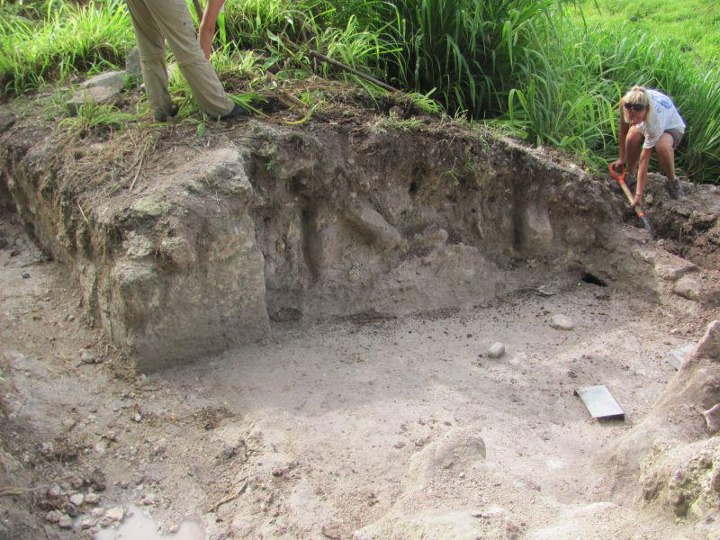
On the left is an example of a standing arch roof and on the right what one looks like collapsed into a structure. The limestone is finished with biface tools.
Across from the cache south was another broken Olla big pot. Likely more of it will be found when they remove the wall fill next season. Then there is a picture of out back packs and my water bottle in our lunch area which is between pyramid 1 and 2 on an ancient wall that separated the two plazulas plazas from each other. Great place to watch the grey fox. He also likes chicken. Then there is a series of pictures of the second burial that included the guy’s cranium. More shell beads from the first burial. The crew chief and native workers are watching the reveal. There are some structures G pictures that show how much dirt we were removing at that end of the room. There are some vault pictures of the second burial before the reveal and mapping. The wall cache dark ring on the wall is actually a pot in the wall. The one on the other side contained human remains and is called a closure deposit by these people. Includes close up of the lip.
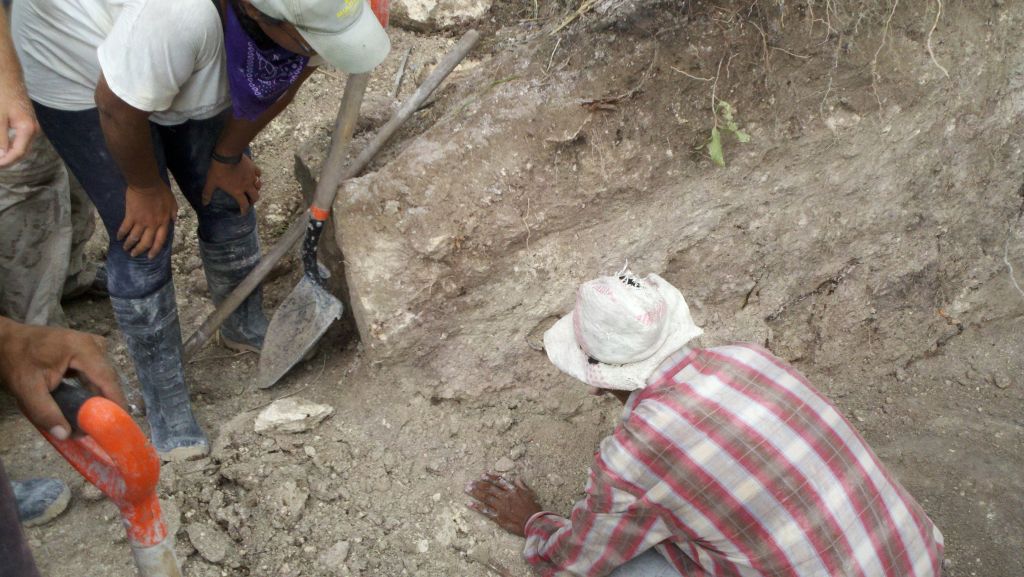
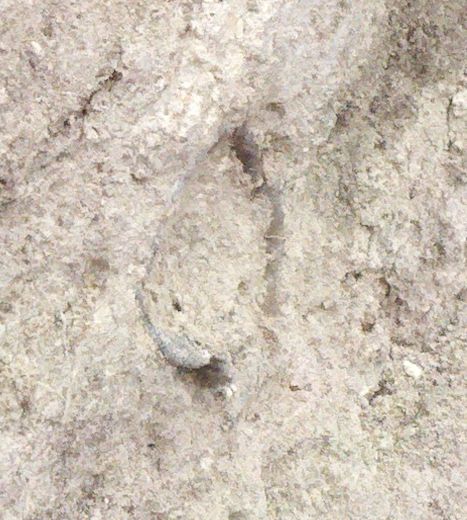 lip
lip
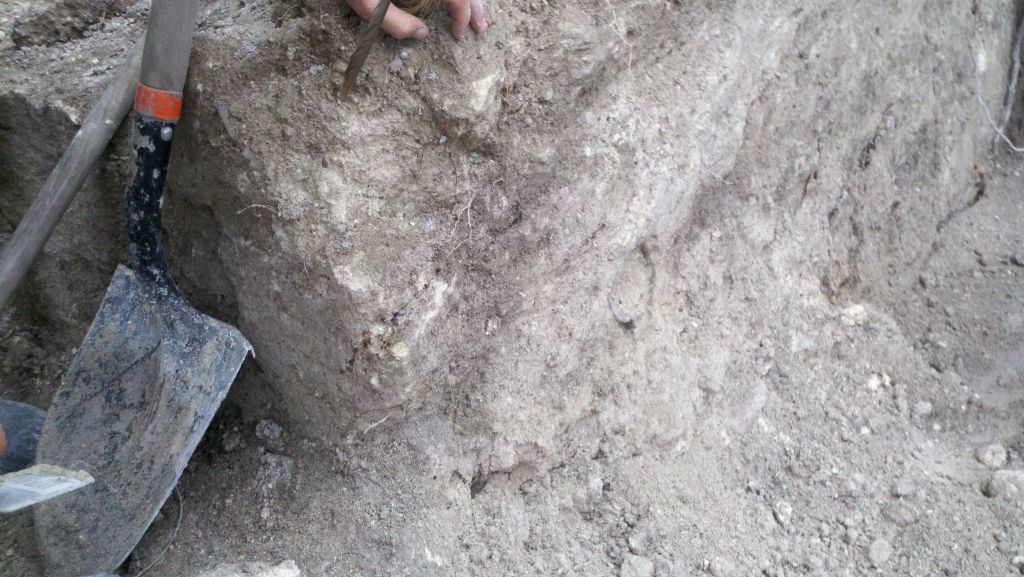
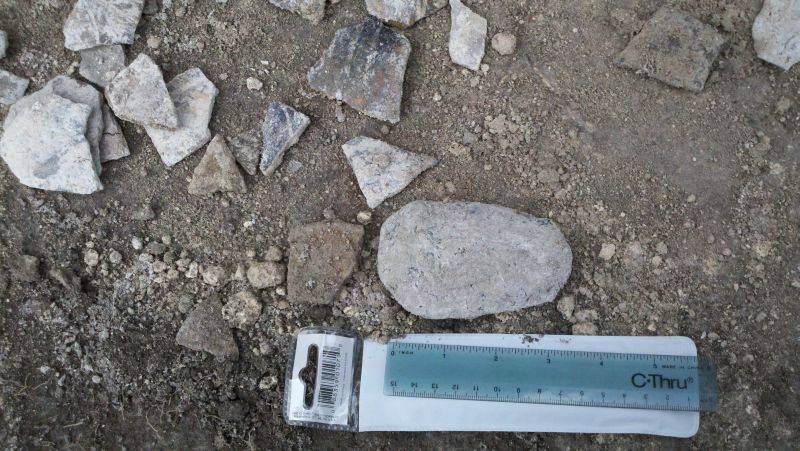 biface and sherds of pottery
biface and sherds of pottery
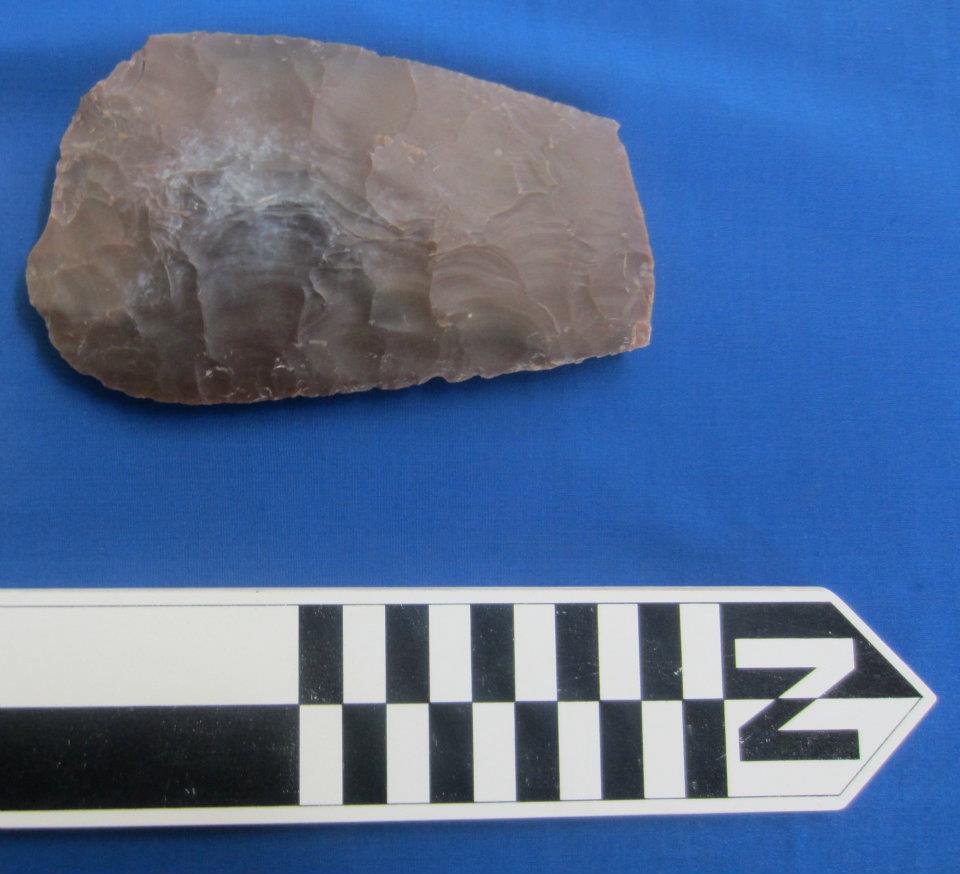
Example of broken biface that were found in the site.
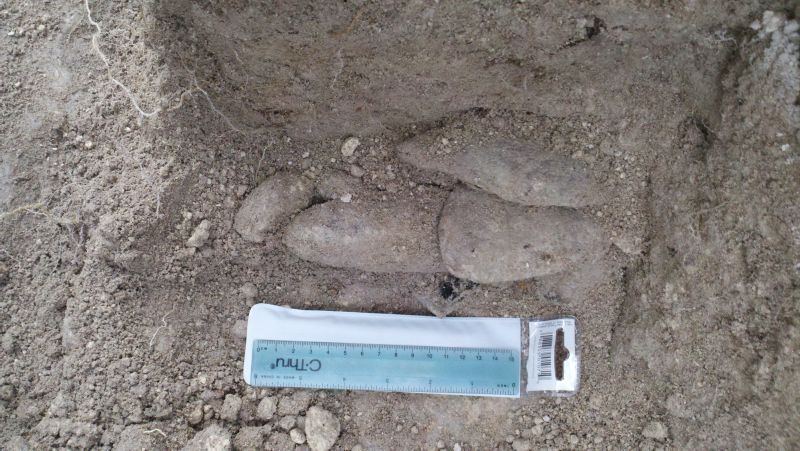 biface cache not quite exposed.
biface cache not quite exposed.
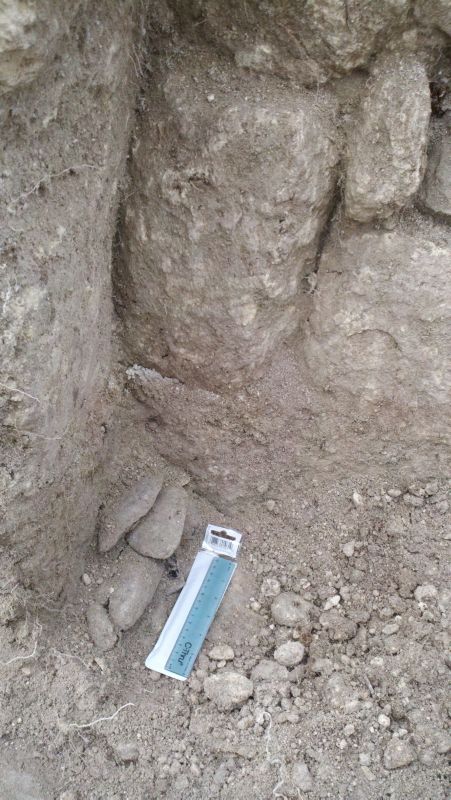 Fidel saw this limestone as pointing down to the cache
Fidel saw this limestone as pointing down to the cache
different view of the biface cache.
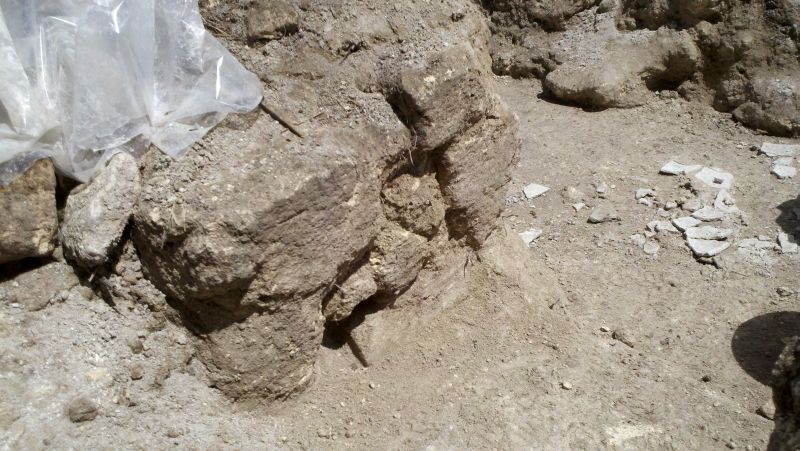
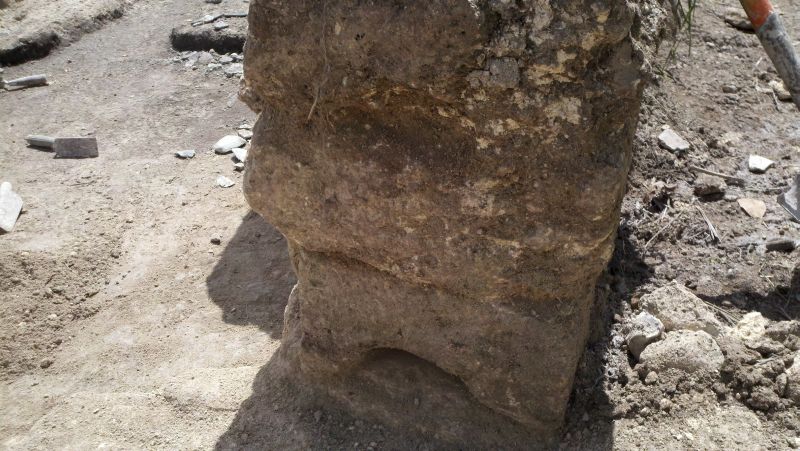
odd semi circular coves in the base of the doorway... biface in the background to the left.
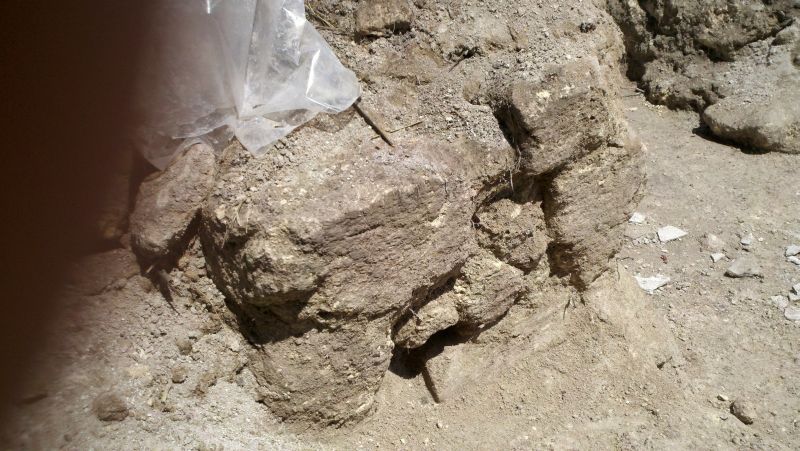
the other side with some more fill removed around the semi circular cove.
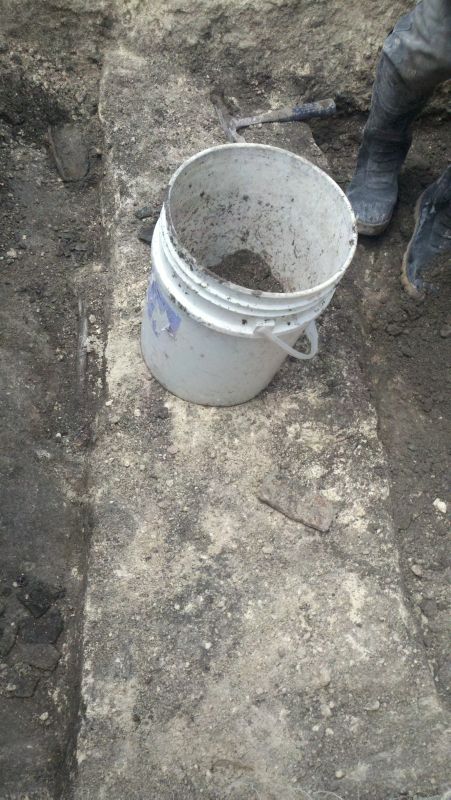
shallow bench ?
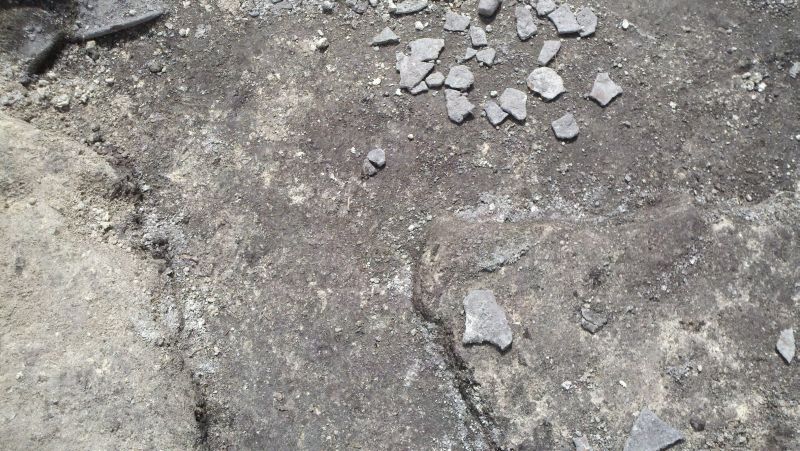
pottery associated with the shallow benches
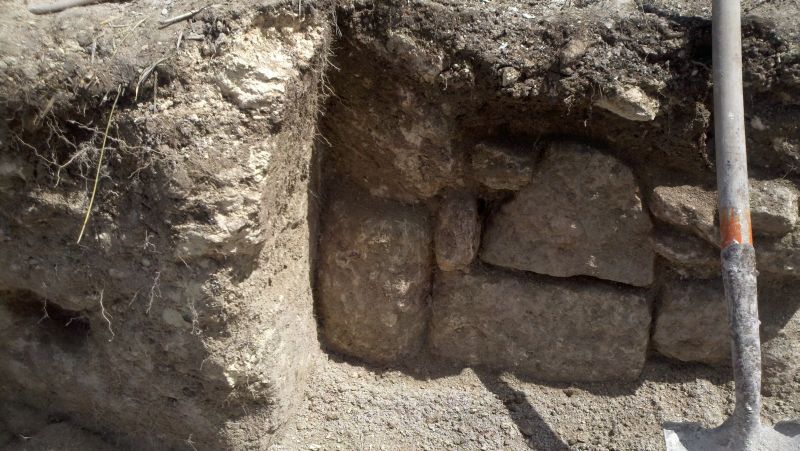
niche not yet to the floor.
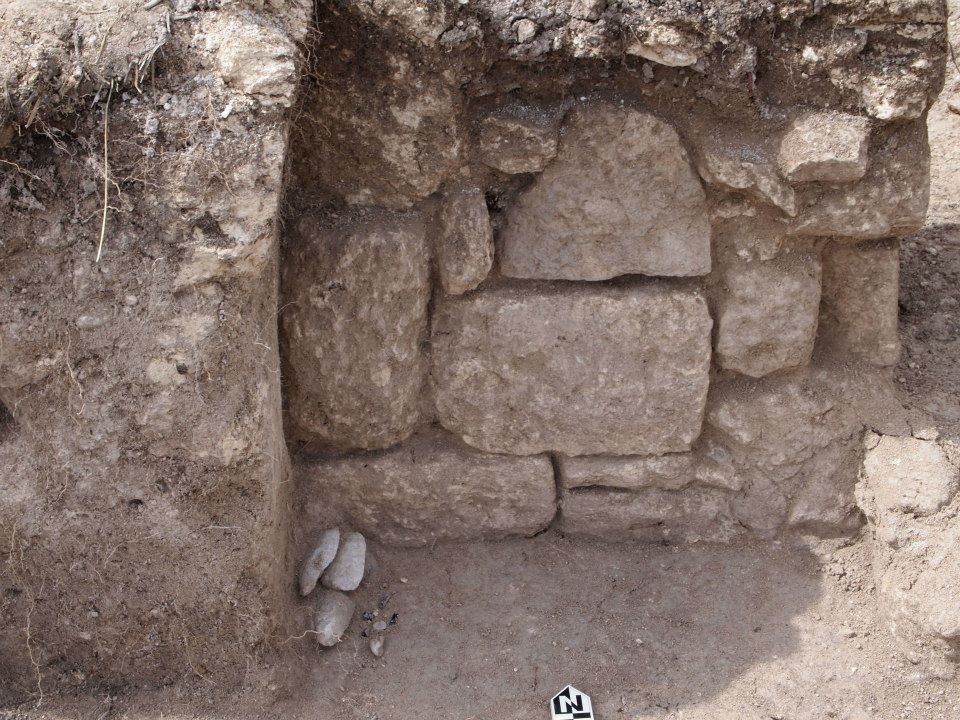
Four Bi Faces cache with a shell a broken obsidian blade and a red round pottery part that looked like a game piece.
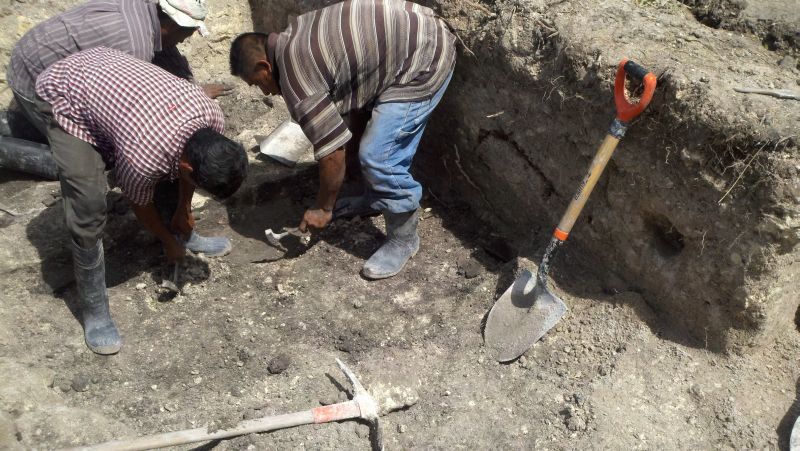
dark earth on each side of the shallow benches.
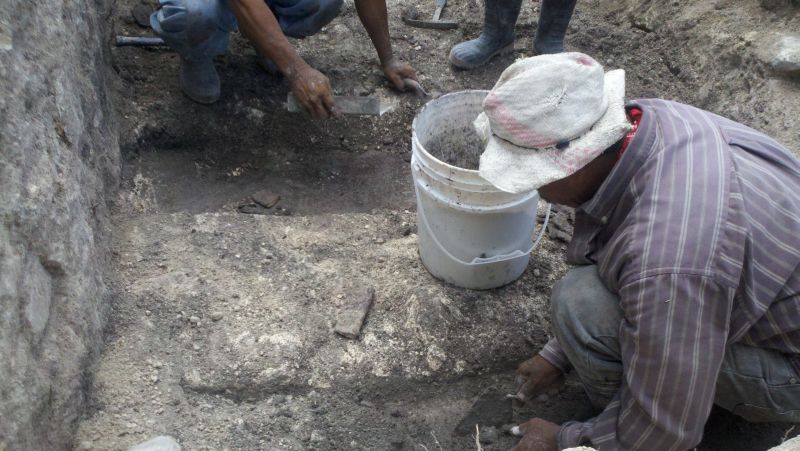
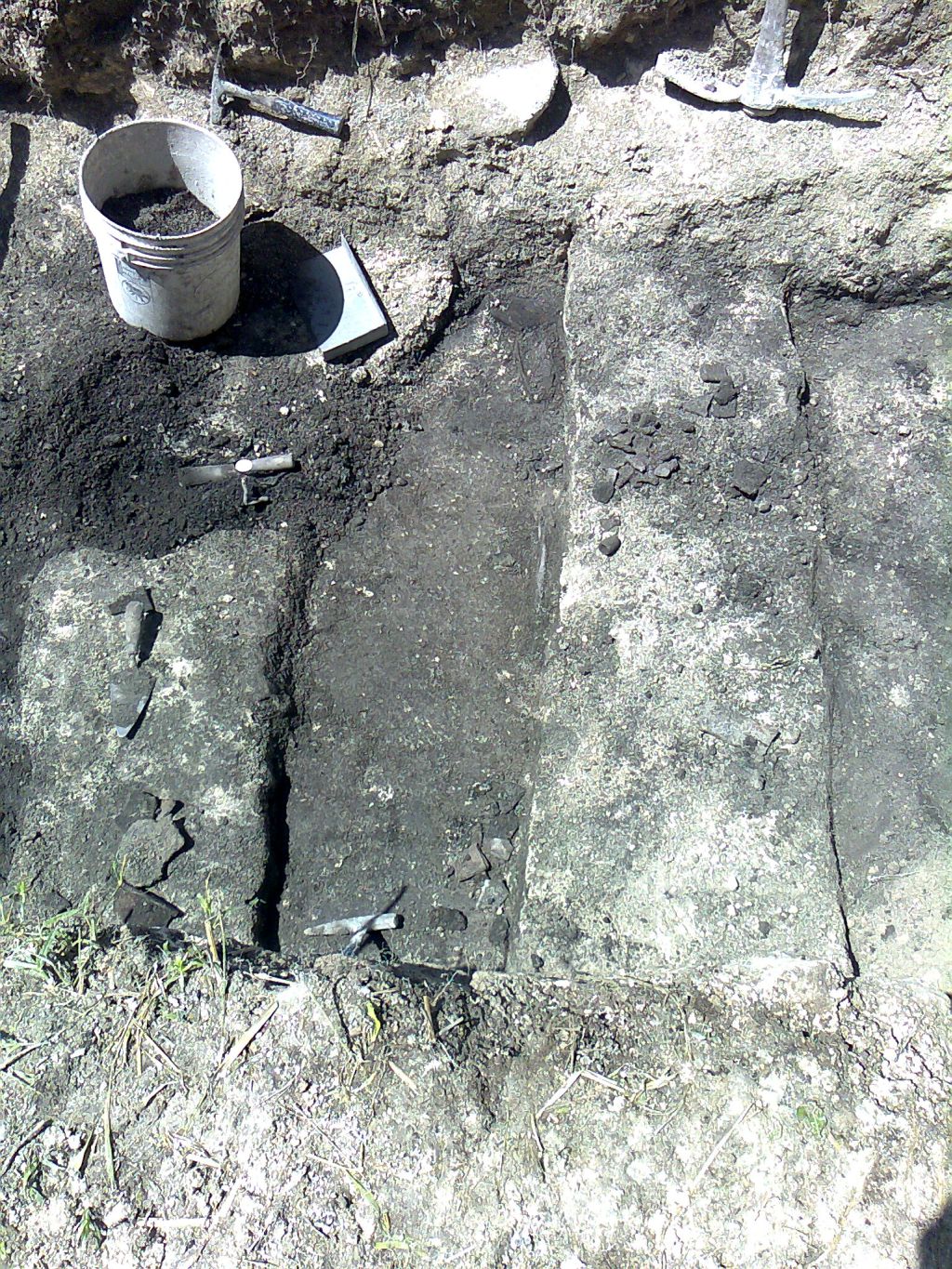
Something to study next year... Notice the long bone upper right center. view looking south
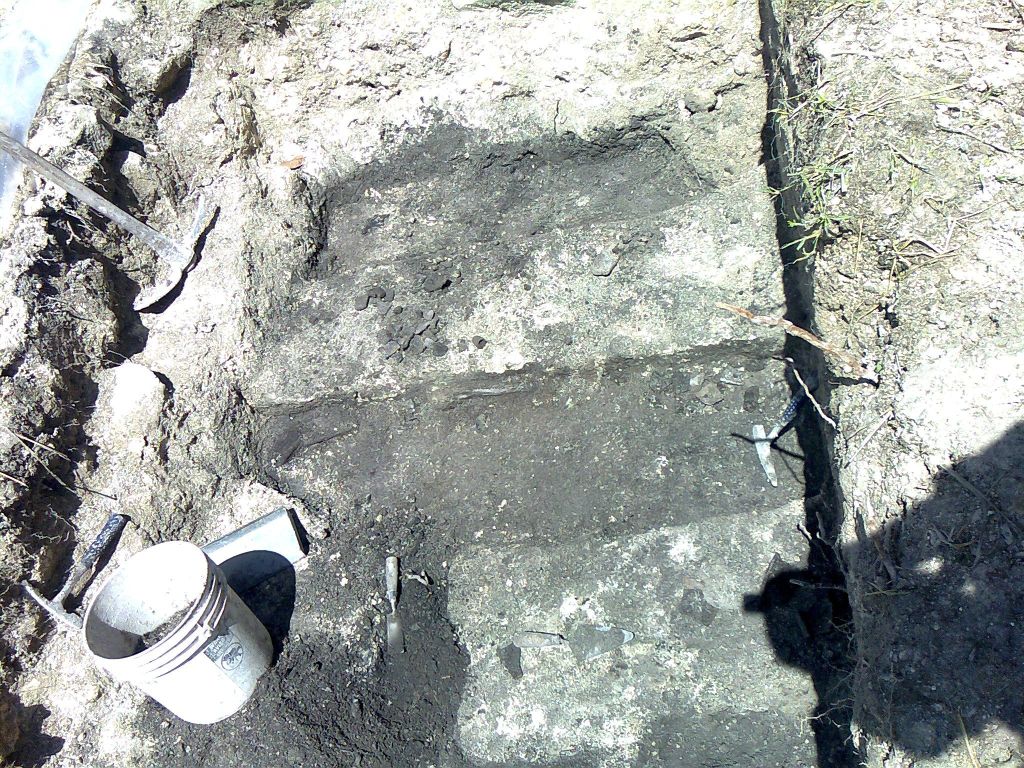 the floor of Structure 9 looking west.
the floor of Structure 9 looking west.
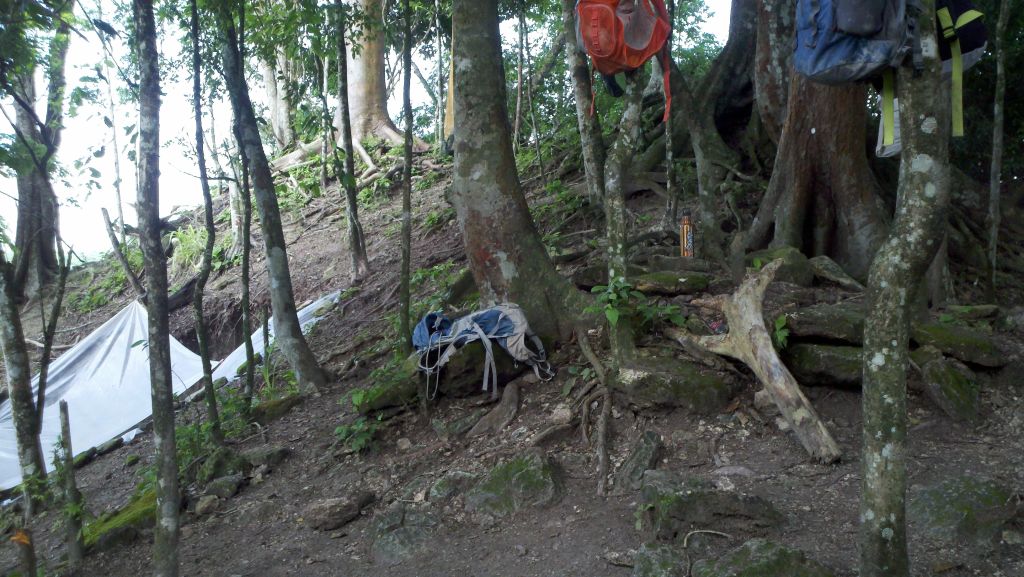
Lunch area on the structure between structure one and two. Structure 2 is shown in the background.. west
July 26 was hot. I did some holding the stick while the crew chief and Ian recorded numbers for elevation.. I would taken azimuth and run a tape for distance from what I remember in out methods class. Well anyway I was distracted and didn't hold it very well so I got sent to dig in the dirt. Today was very humid but not as much as yesterday. They found another burial very close to the floor of the room and lots of pottery There are sherds on the floor with some unique artifacts. One was a small pottery incense bowl. Like I said yesterday we had already uncovered the broken Olla across from the bi face cache in the pictures. There was a obsidian blade a small button size pottery object and a shell like on necklaces. My picture of that did not come out for some reason. trying to take pictures with a cell phone that lost its mind when I removed the memory card and it does not have service down here so it stuck pictures in weird places on the phone. Holley Moyes gave a lecture on the Belize cave project that she is working this summer.
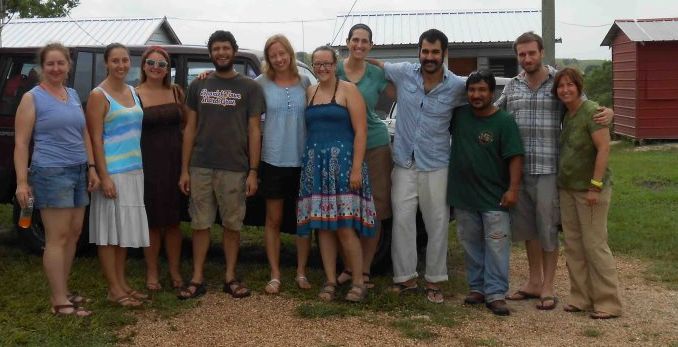
Holley was a professor at WSU back about 05 and moved to S. Calif. She just walked in after being in a bat guano cave for all day. Looks like mud but is bat shit. she was clean for here presentation last night. She is a nice lady but I did not do very well in the class. This is sort of scattered like my thoughts right now. I am looking forward to getting home and a warm wife, dog and shower. My dirty clothes really smell. that is it
for now.
Norm
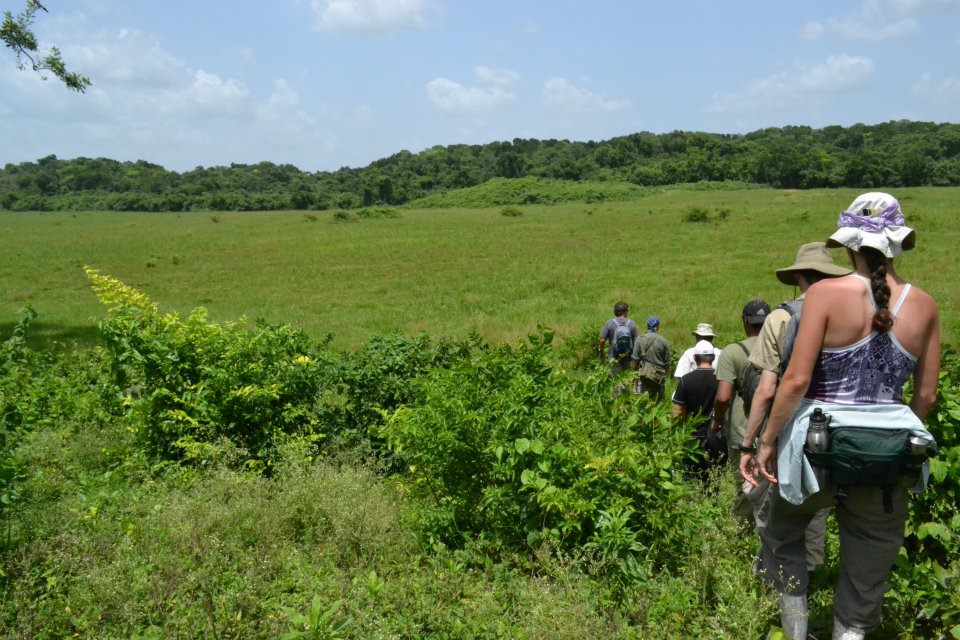 heading NNW
heading NNW
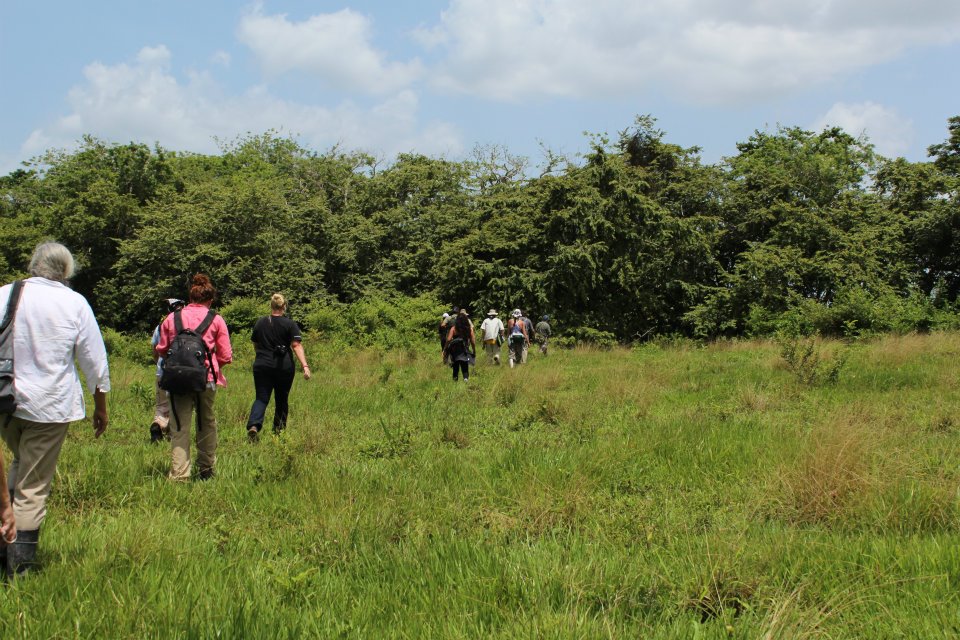
hiking to Blue Creek we got a tour the last day of our Session 4 2012
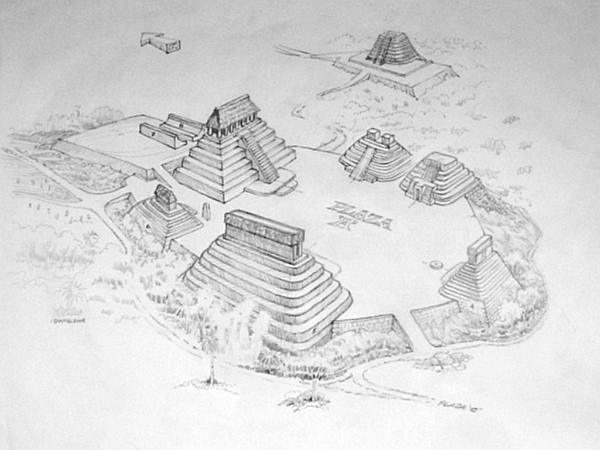
Plaza A Blue Creek
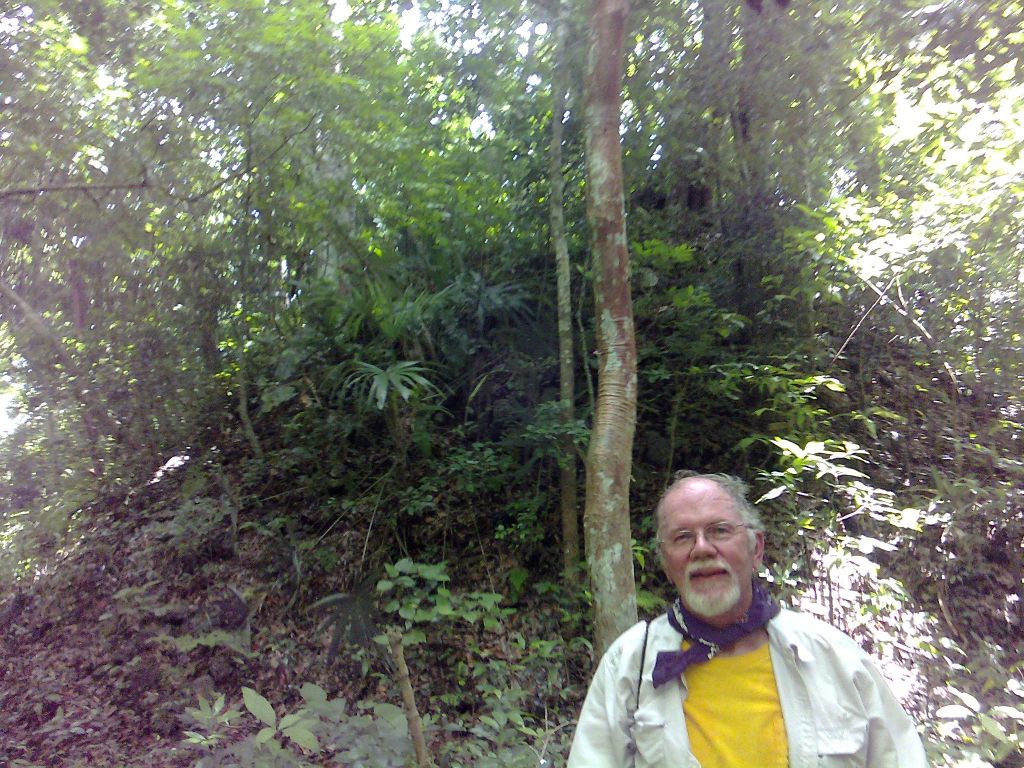
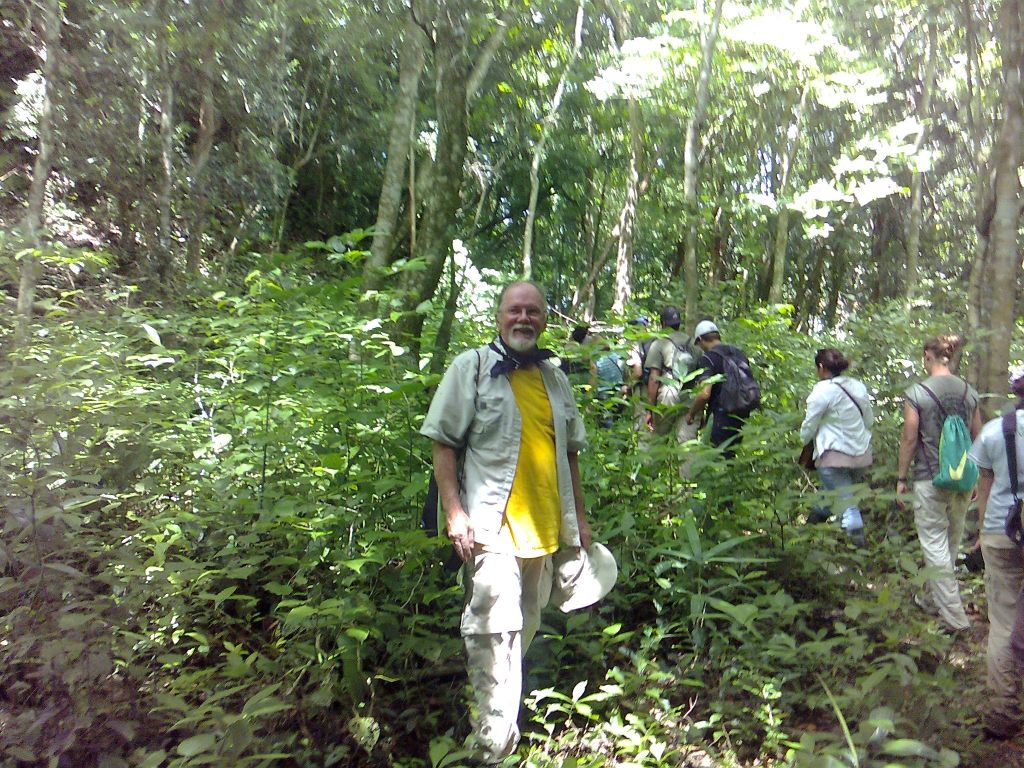
two years growth at Blue Creek
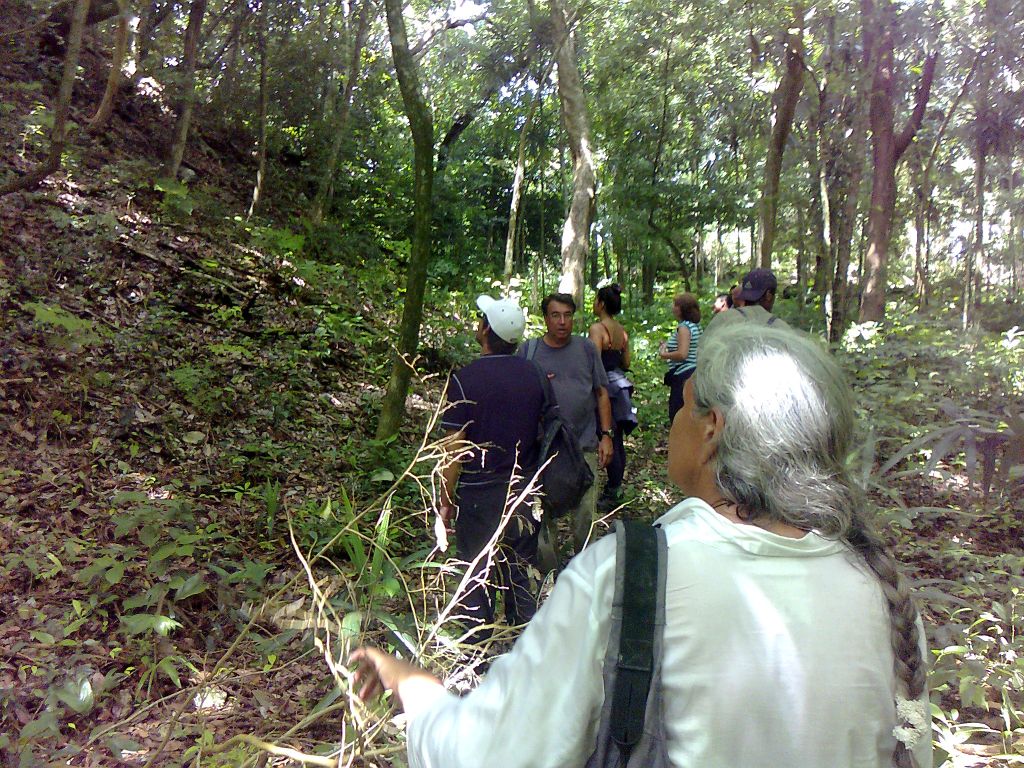
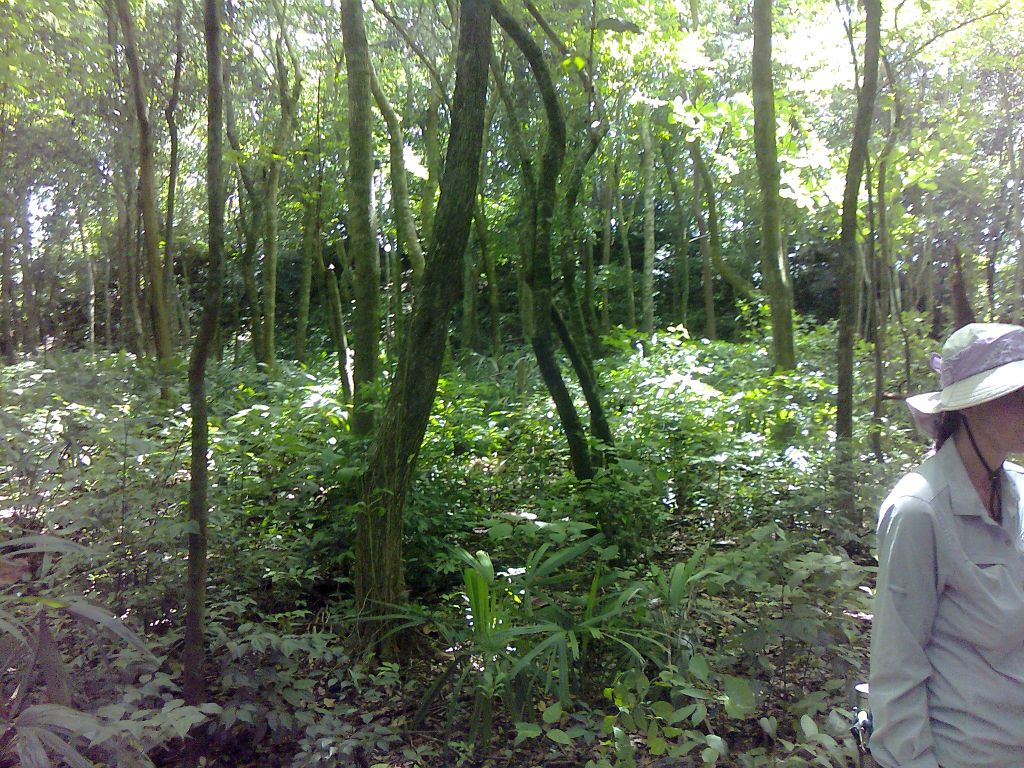
two years growth on the floor of Plaza A
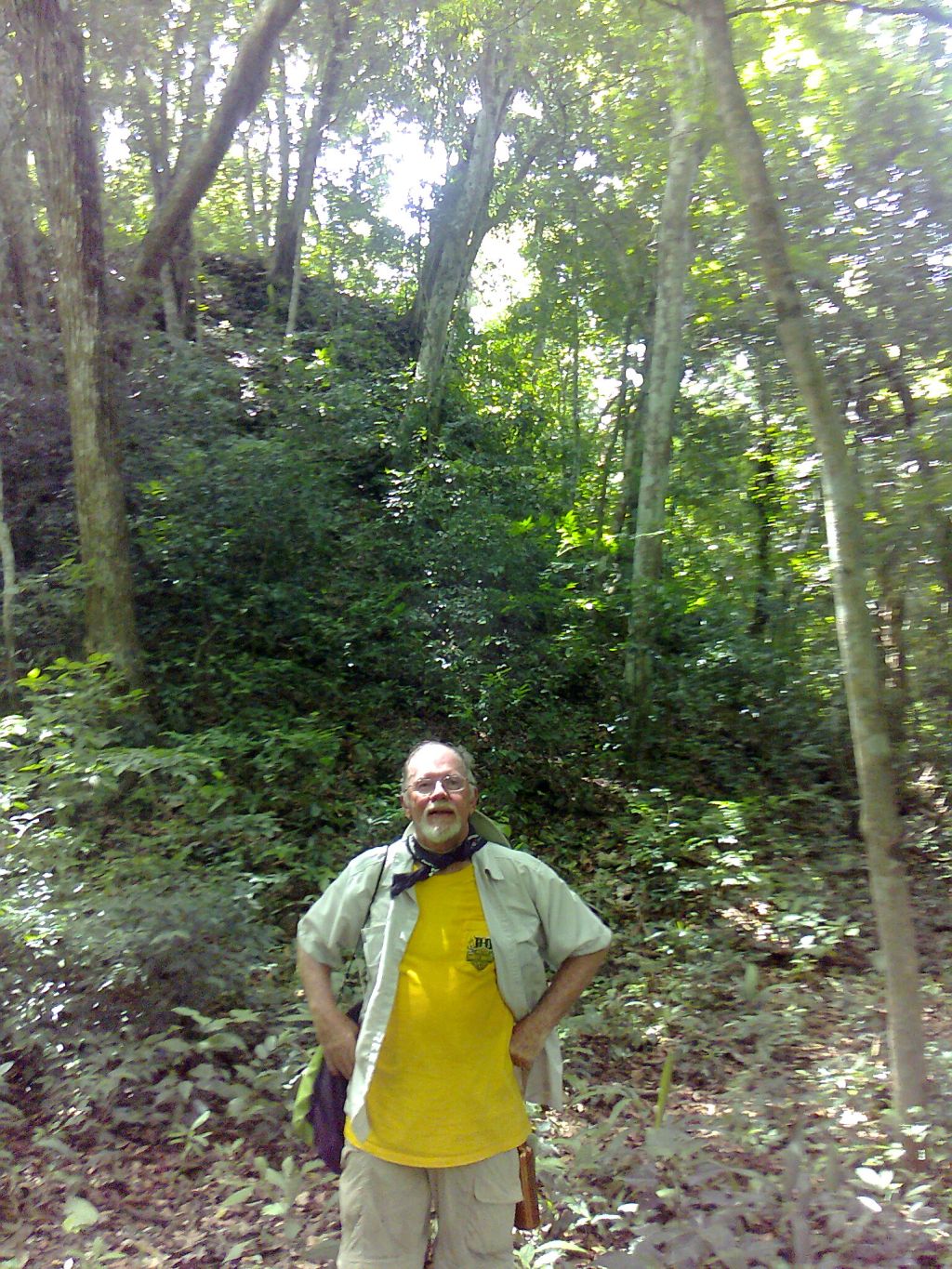
The highest structure at Blue Creek today is backfilled and covered with vegitation.
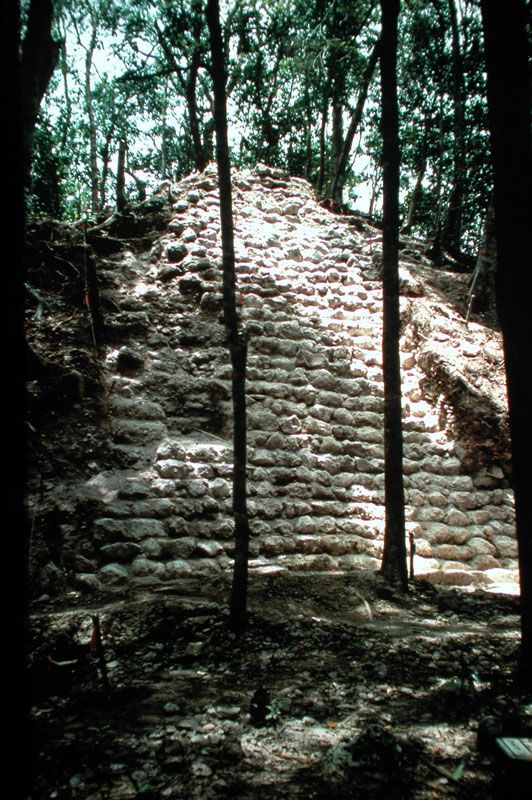
The highest structure in Blue Creek when excavated.
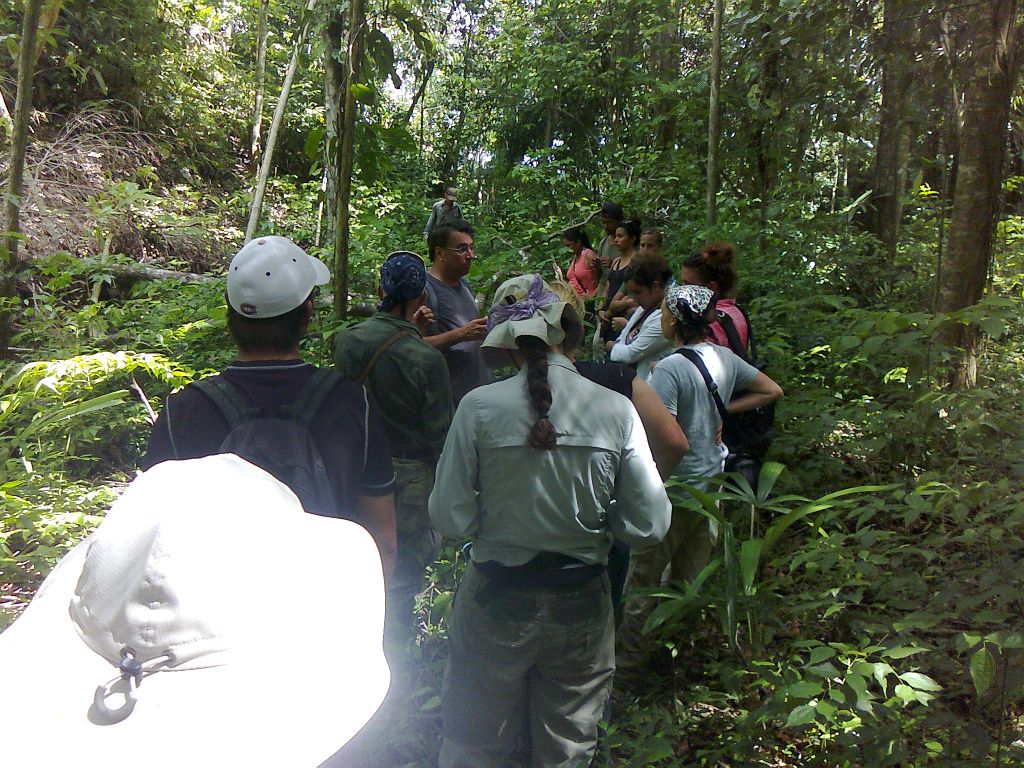
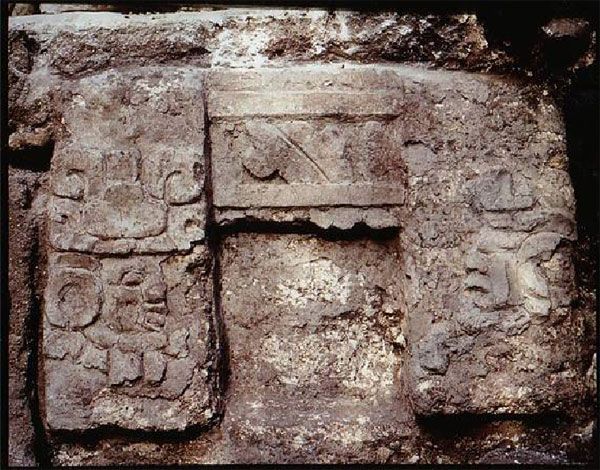
Ahau mask on the side of the Structure 9 plaza A at Blue Creek when it was excavated. It is backfilled today.
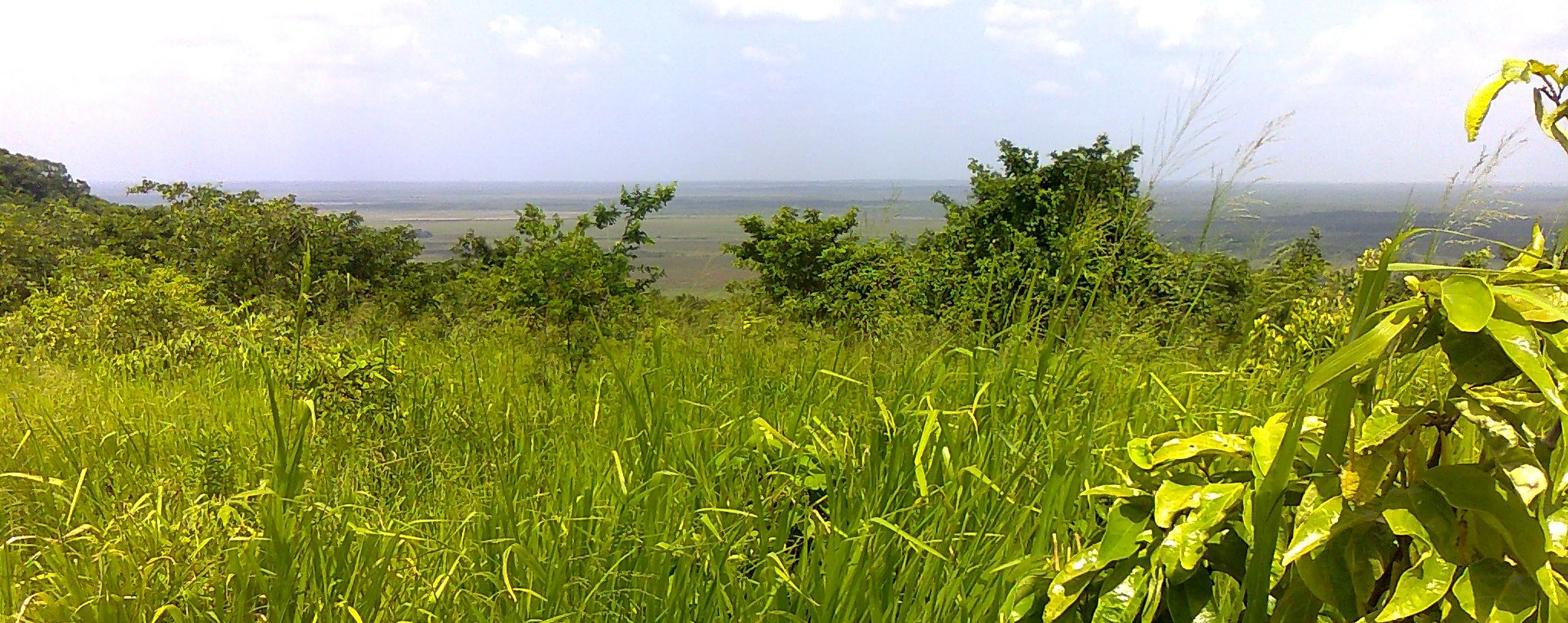
Looking out over the Rio Hondo Escarpment from the site of Blue Creek
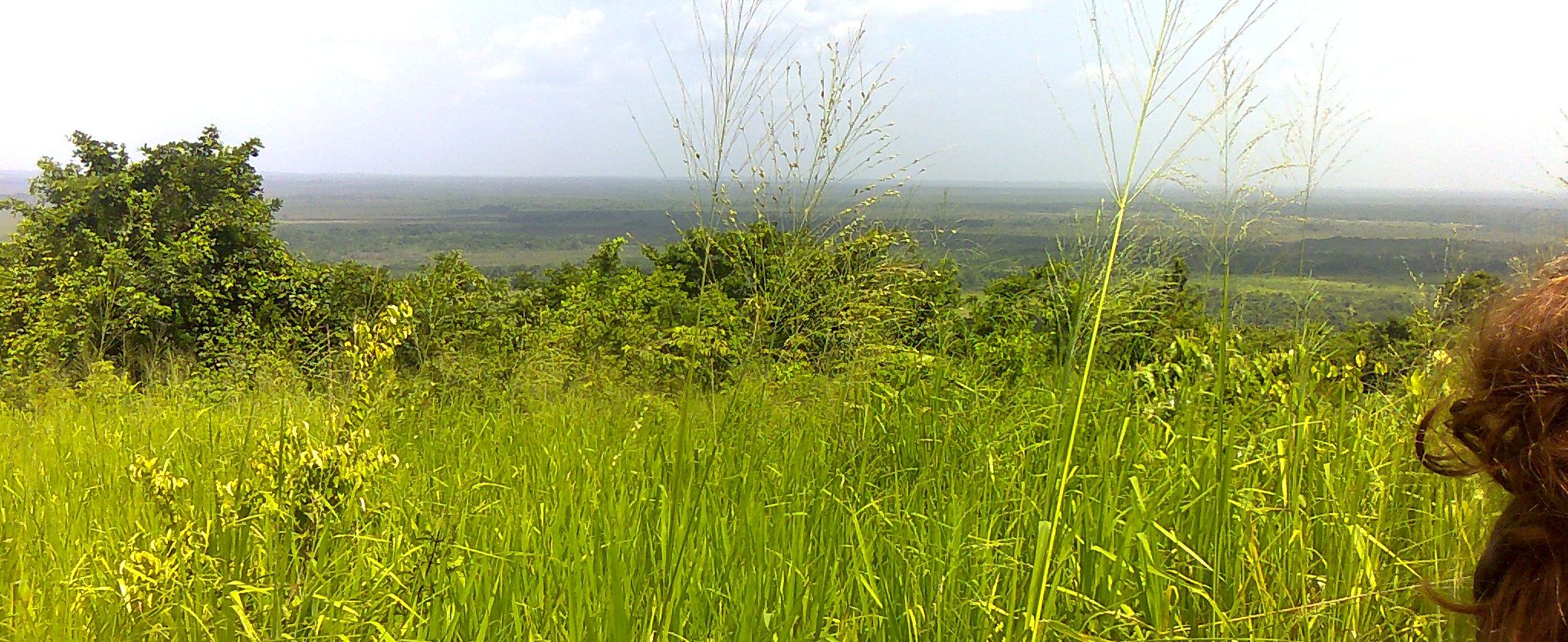

The town of San Felipe is in the distance. Today Maya live there and work in the area.
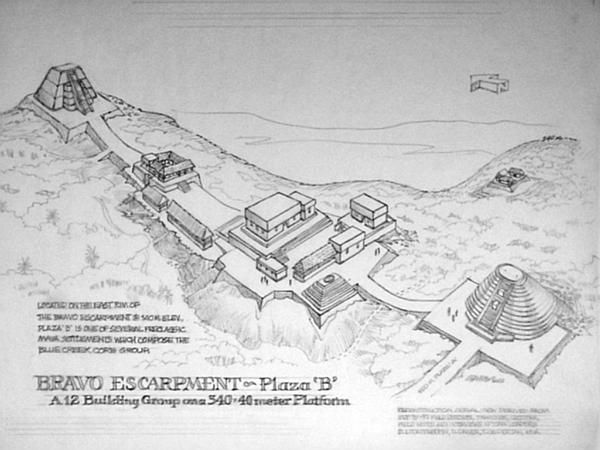
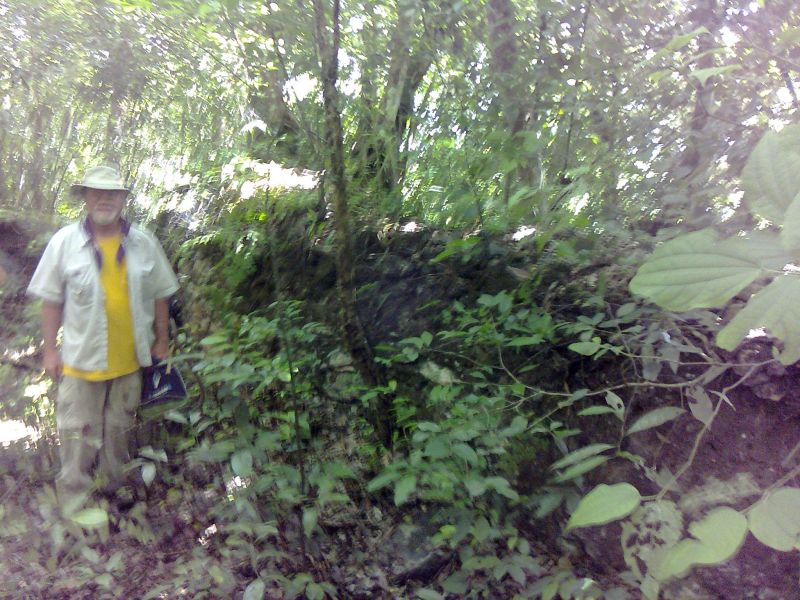
Long room on an elevated platform on the west edge of Plaza A Blue Creek, Orange Walk district
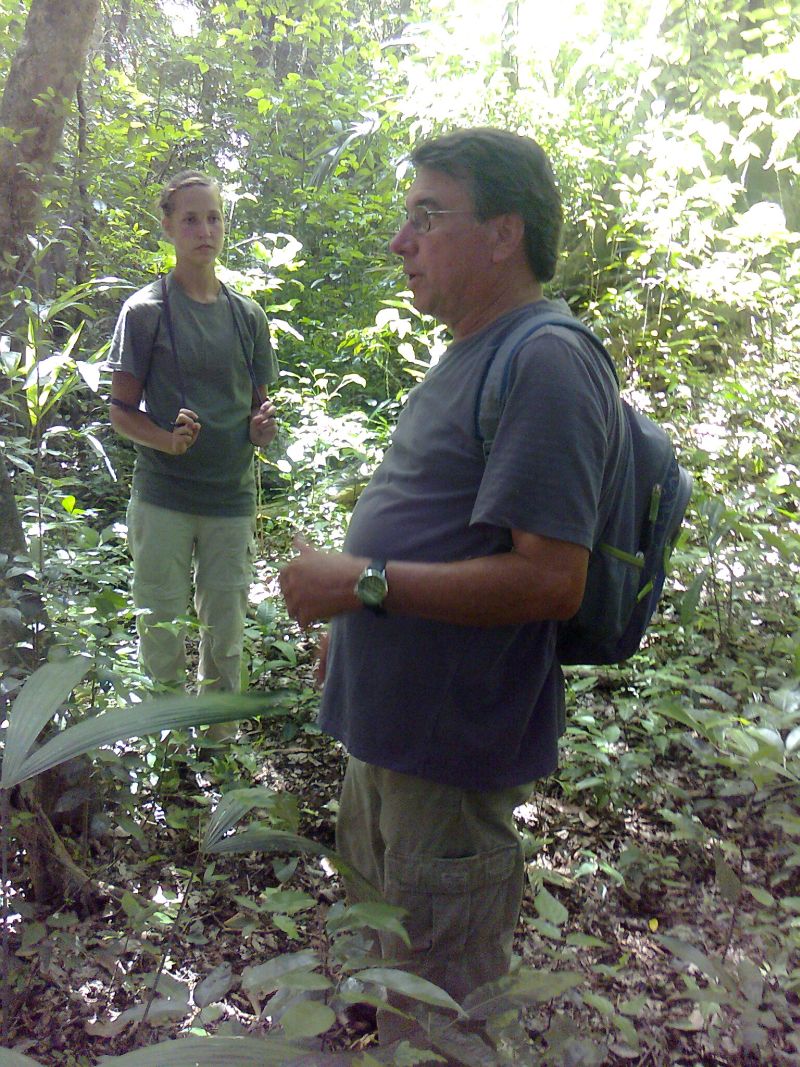
Dr Tom Gunderjan MRP director lecturing Sara Doll watching.
What The Howler Monkey sounds like when you walk through the rain forest
The sound of Howler Monkeys like those at Blue Creek
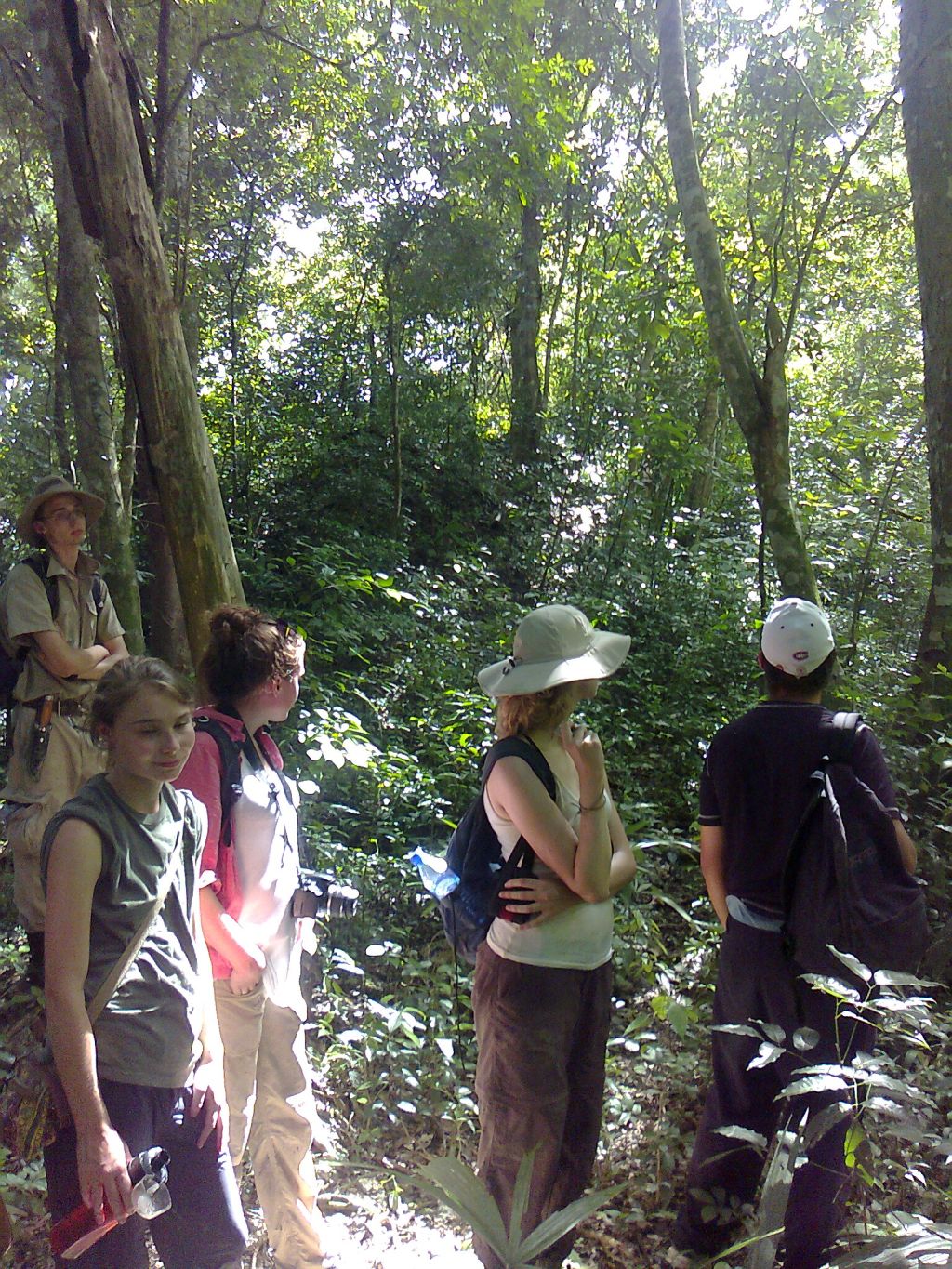
Structure 10 at Blue Creek has an unique alignment
Traveling to a from the research station in Blue Creek Orange Walk Belize
3 gate guard at the airport
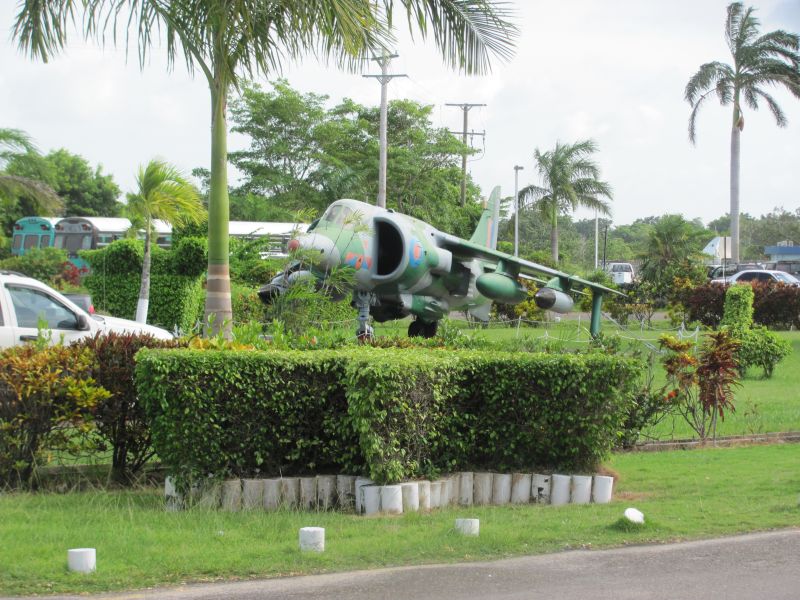
The day before significance of the beer picture is my Belize Tel Co cell phone number. My hours are good till Oct. 2012.
The pictures of 9 is where I am staying but may have sent that already. The kitchen picture is our cook Margaret and her Maya help. She does good for such a crew. The main building where we eat and the kitchen library, bar is from the 70's when it was used like a block house by drug runners. The beam was used to weigh the bales and my laundry is under the table in the middle of the picture.
The big double door storage was used for bales of Cocaine. The top was to watch for the Belize defense force and when seen the people would cut out the back way and head for Mexico. From the Mennonites autos bikes etc. some may be flying Mary Jane out today to make money. On another subject I asked for Najol Nah site leader to get some copal so I can smell it burning. The ancient Maya used it in ceremonies. I also had a picture
of the palapa we meet under for evening lectures and the back of the 'house' with the attached kitchen. They have a good water well and lots of water as seen from the pictures of the tank. The shower/ bathroom is to the right of the tanks. The interesting thing to me is the trouble smokers here go to get cigarettes. Well that was Thursday.
Norm
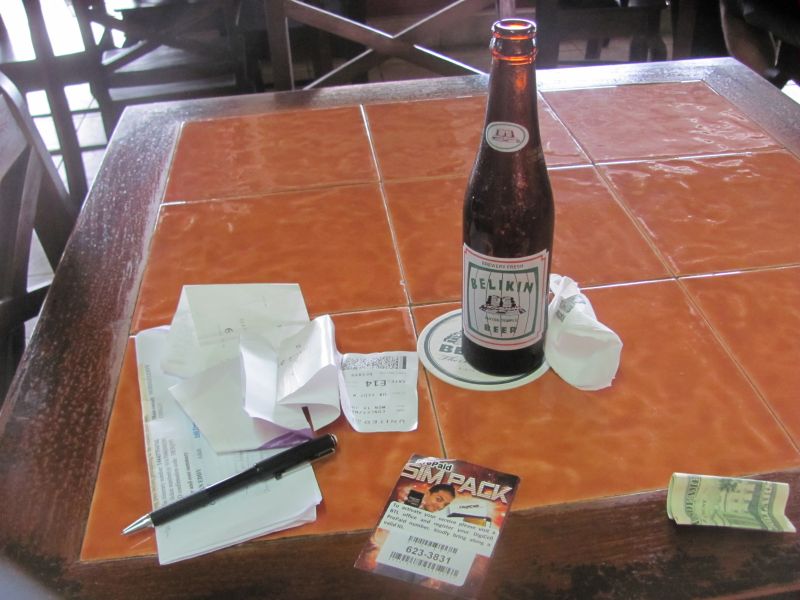
Check out the cost of the lunch menu in Belize dollars

Cessna Carvans are the aircraft of choice for commuters in Belize. 737-700's are the large aircraft that fly into the airport.

Pictures of us new arrivals waiting for the last airplane at the airport that closes at 6 pm
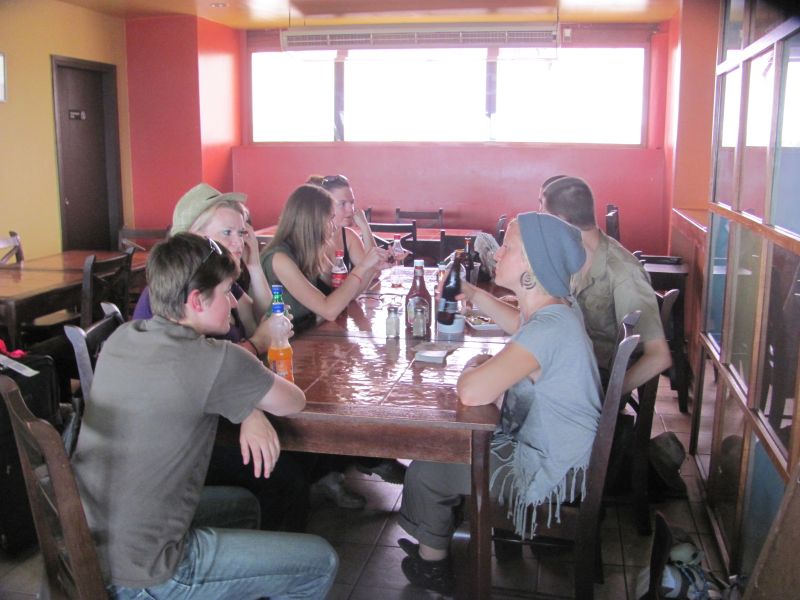
Eclectic mix of students and therefore I fit right in...
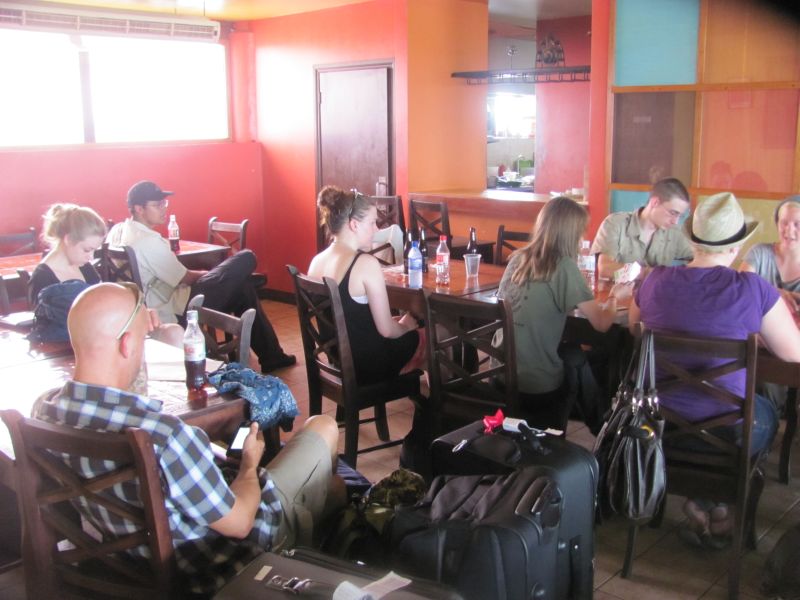
Archaeologis and Crew Chief of Ixnoha site, Tim Presten is playing games on his phone while we all wait for the last airplane to arrive.
Various pictures of the ride to Blue Creek research station .....here from the air
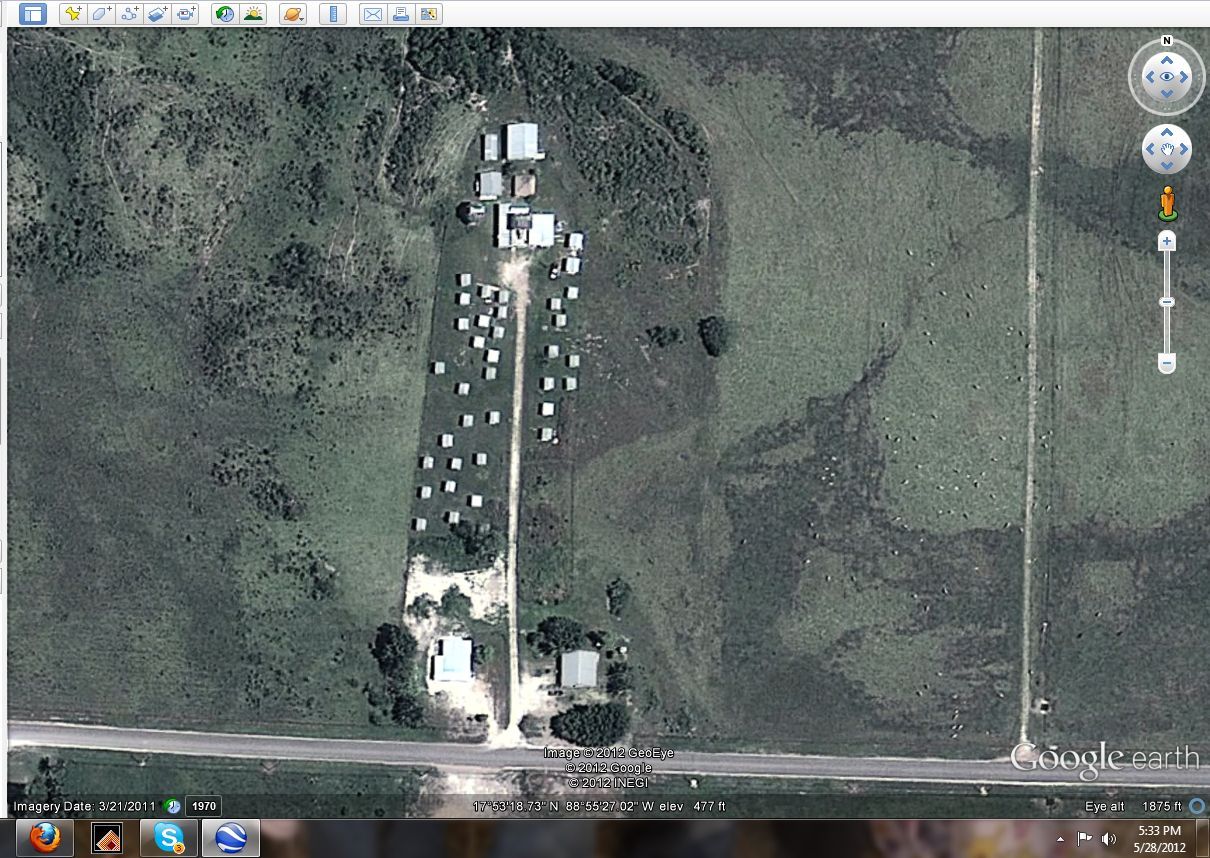
My bed
45 my bed
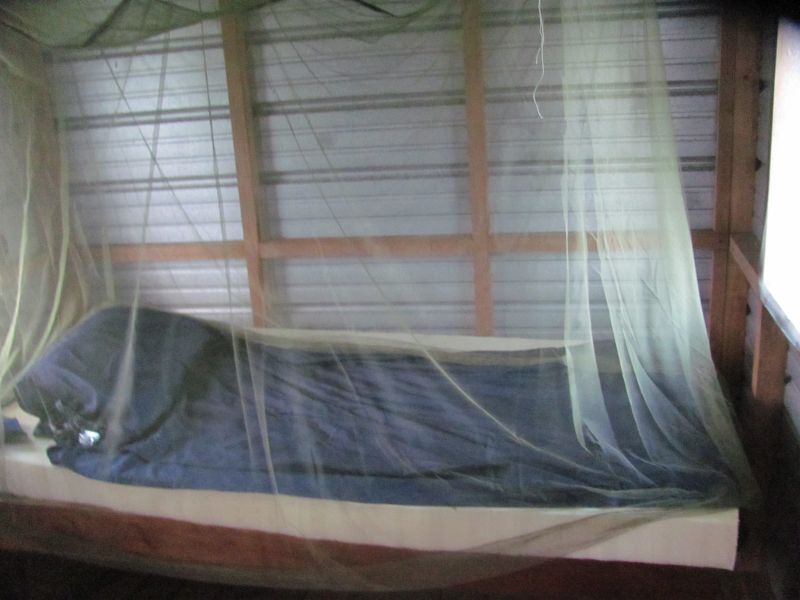
Sleeping under Mosquito netting with a battery powered fan and a head lamp for night time.
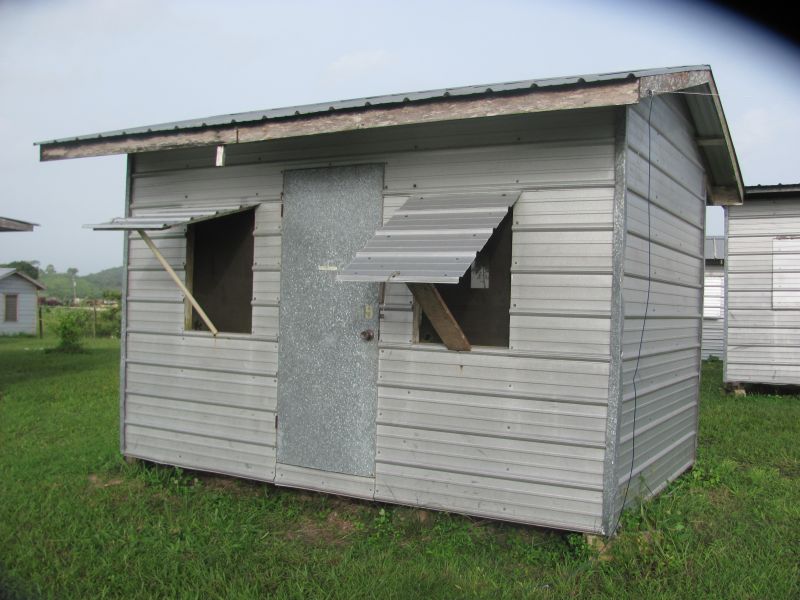
Cabana 9 which sported a WSU emblem when I left... notice the window props
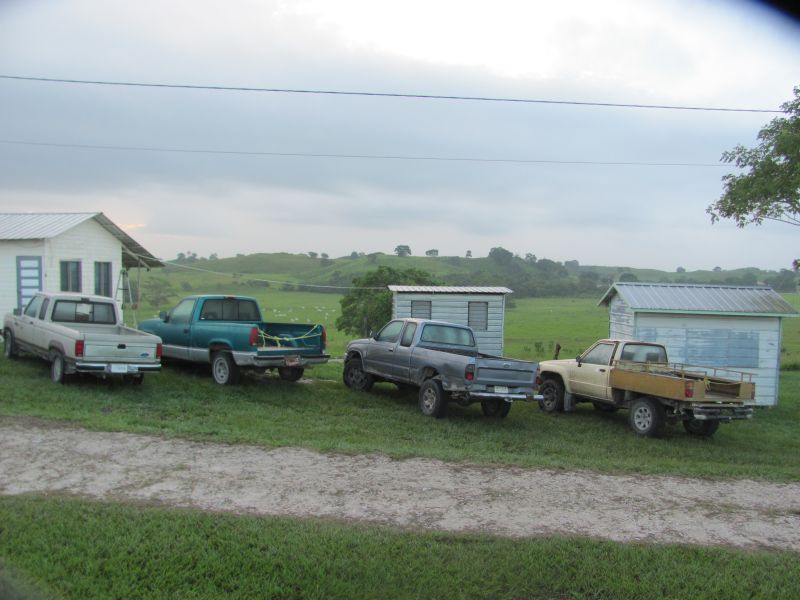
and pictures of the fleet of trucks I see out of my Cabana
Looking east to the Rossita group ruins and a sample of the truck fleet. One day 4 were broken down.
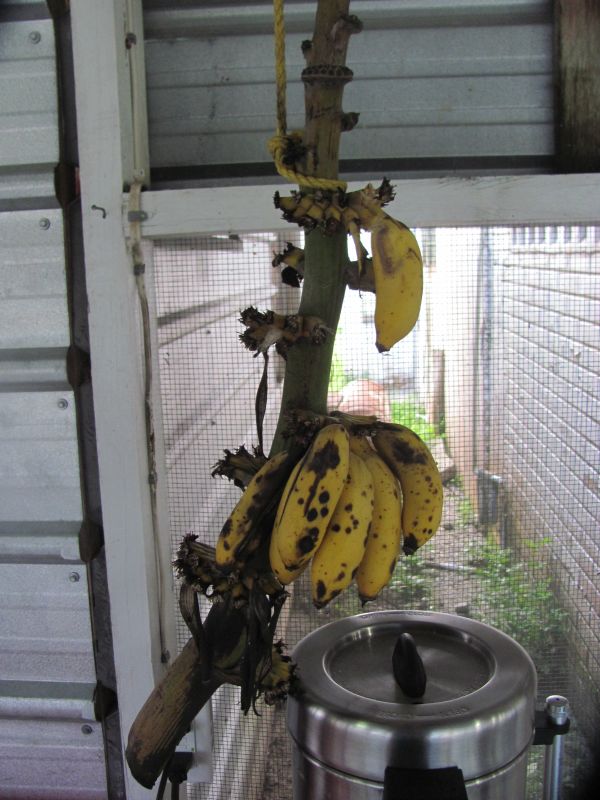
Apple Banana’s in the real world
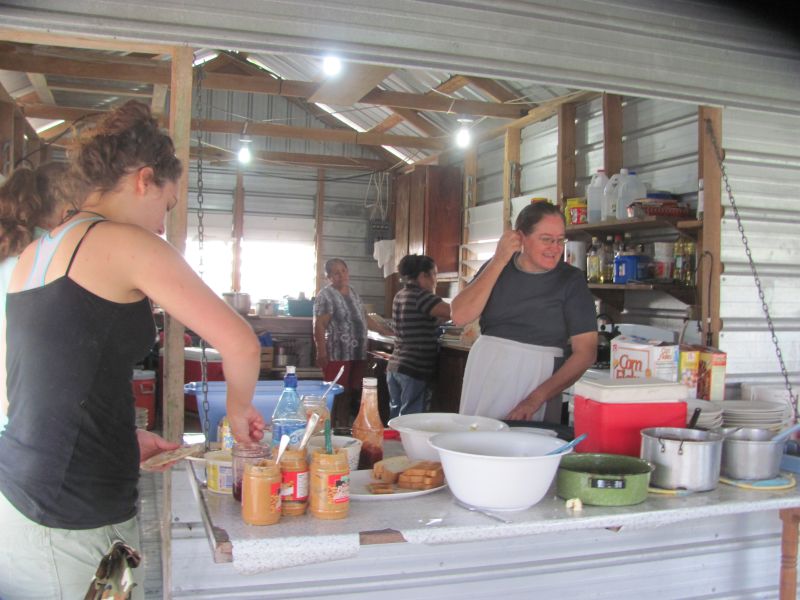
Kitchen with Margaretha smiling and Alberta cooking not sure who is into the PB&J
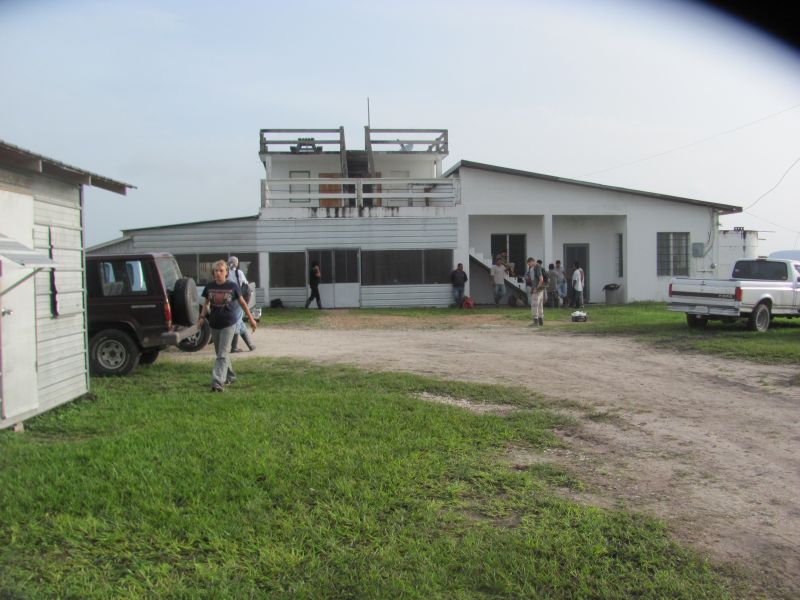
The white ford truck on the right froze up on us when we rode in it at Lamani workers waiting to go to the sites
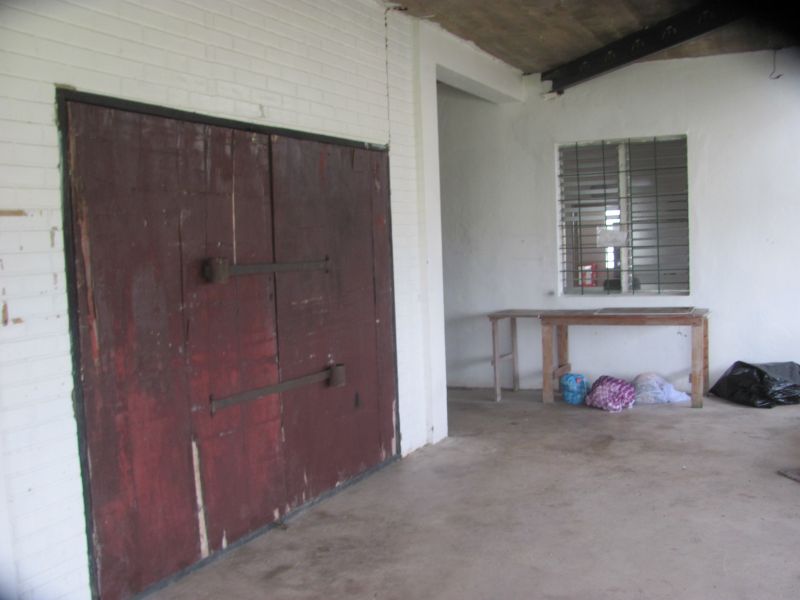
the Storage for artifacts was used for bales of cocaine in the 70's. The table was for dirty laundry below and clean returned on top
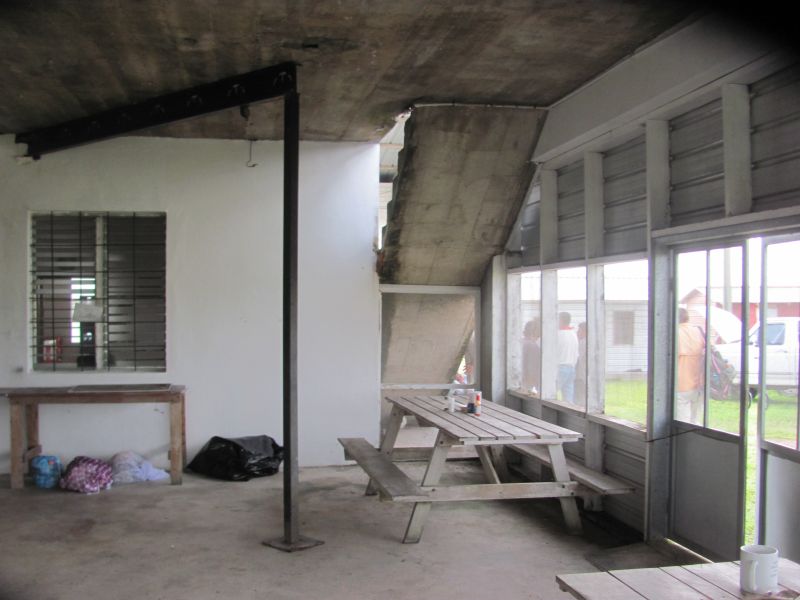
The AARP dinner table with the beam and hook used to weigh cocaine bales in the 70's.
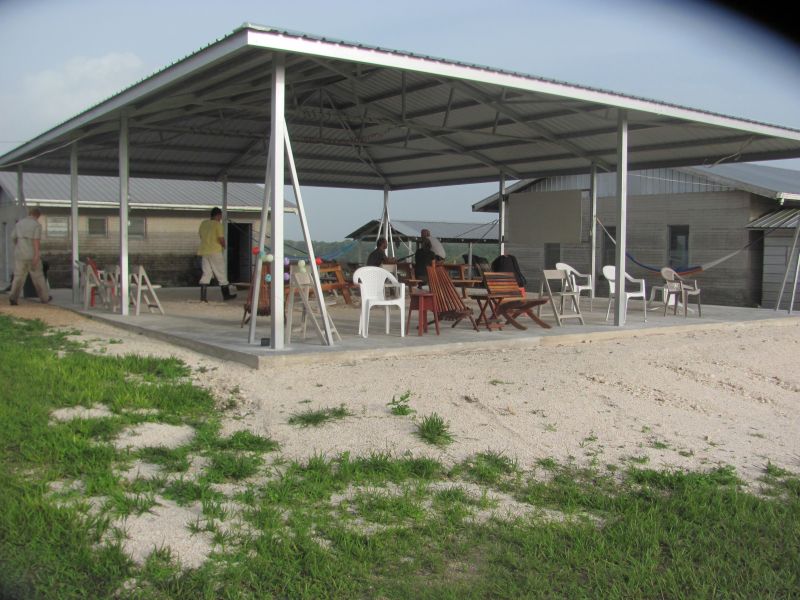
Much Improved Palapa used for lectures after a day of working.
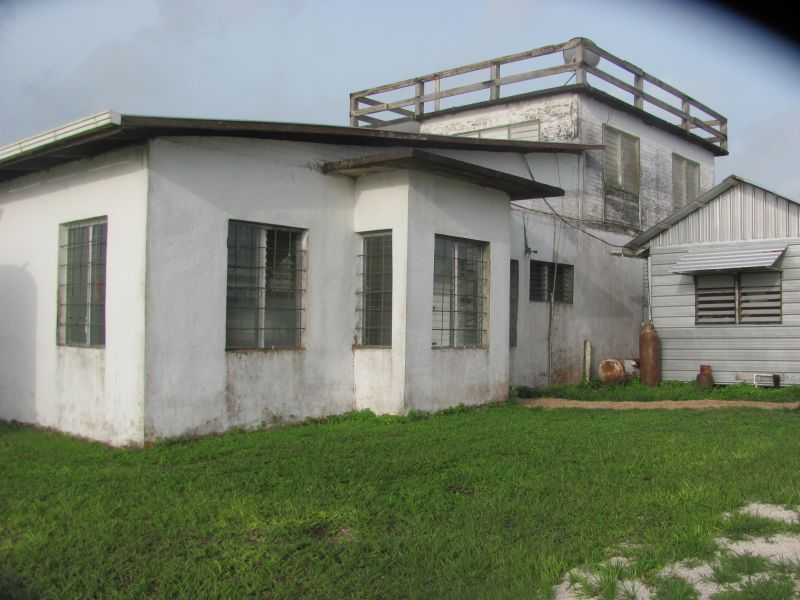
Designed for lookouts. The metal extension on the right is the kitchen.
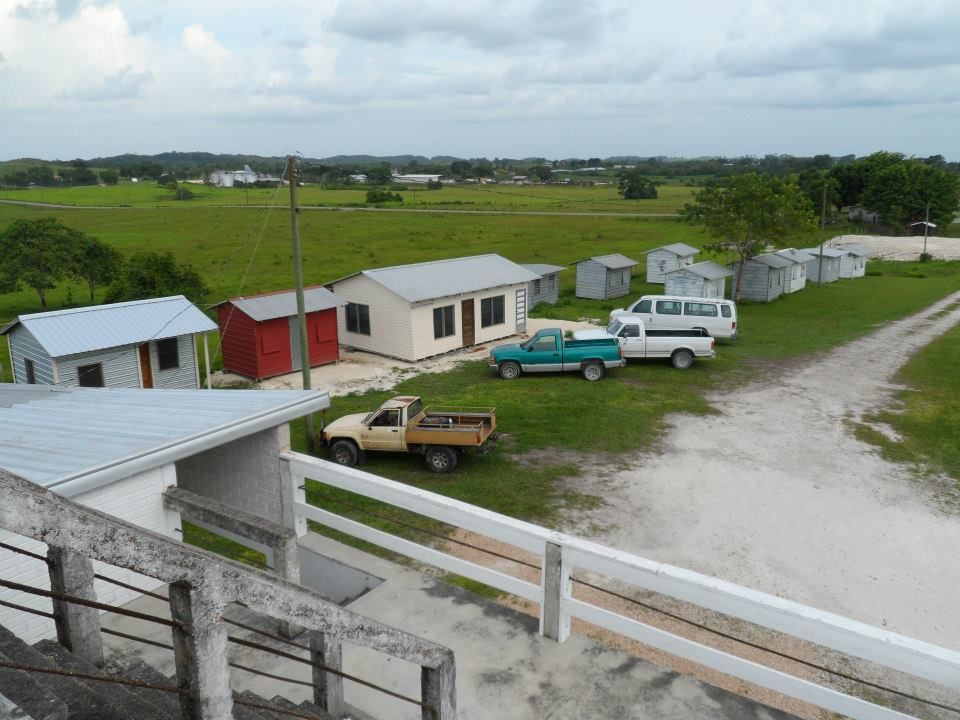
View from the Roof of the Cabanas.
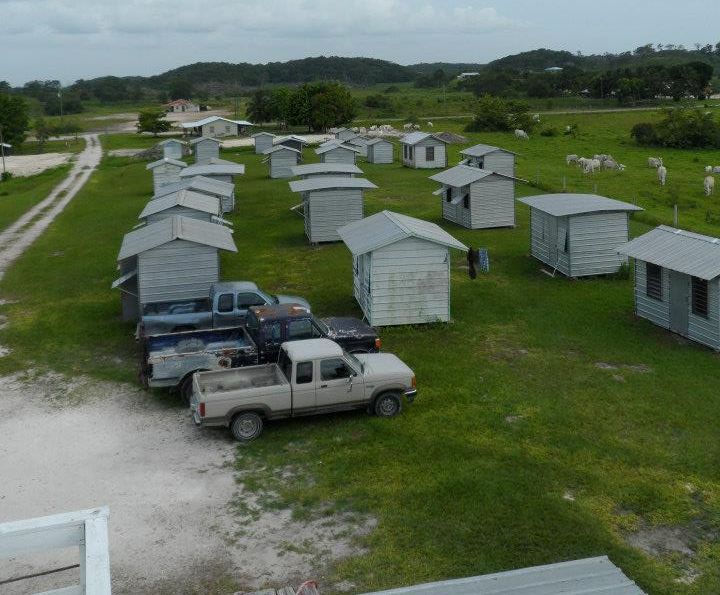
row of cabana's on the left and the third one up was mine. Notice the 'Brangus' Cattle in the field next to the camp.
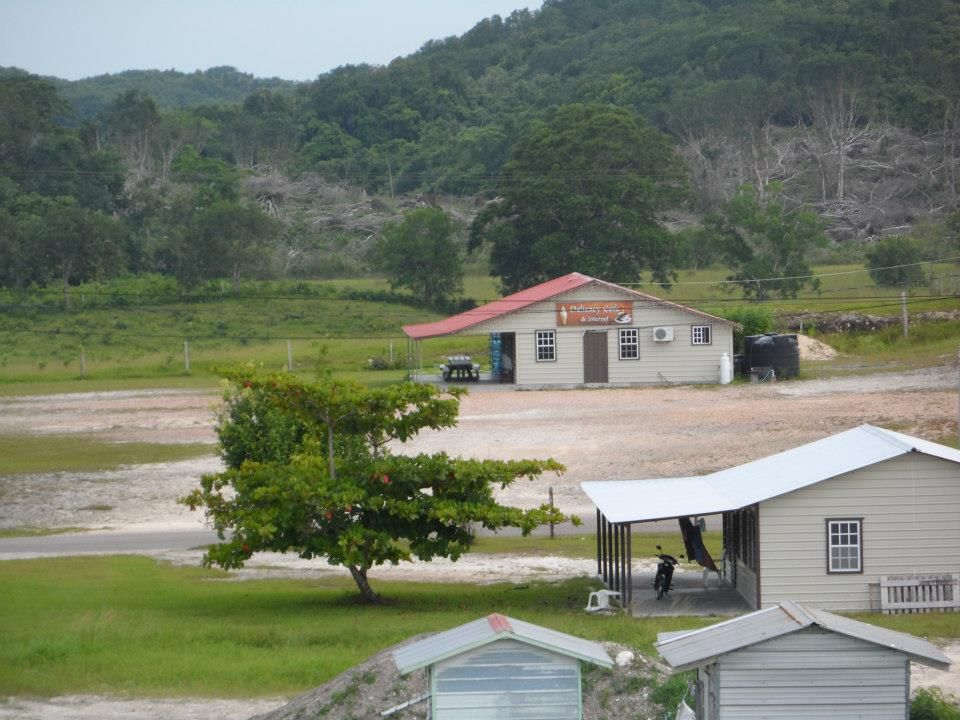
Delicacy Cafe and Internet across from the camp on the south side of the road.
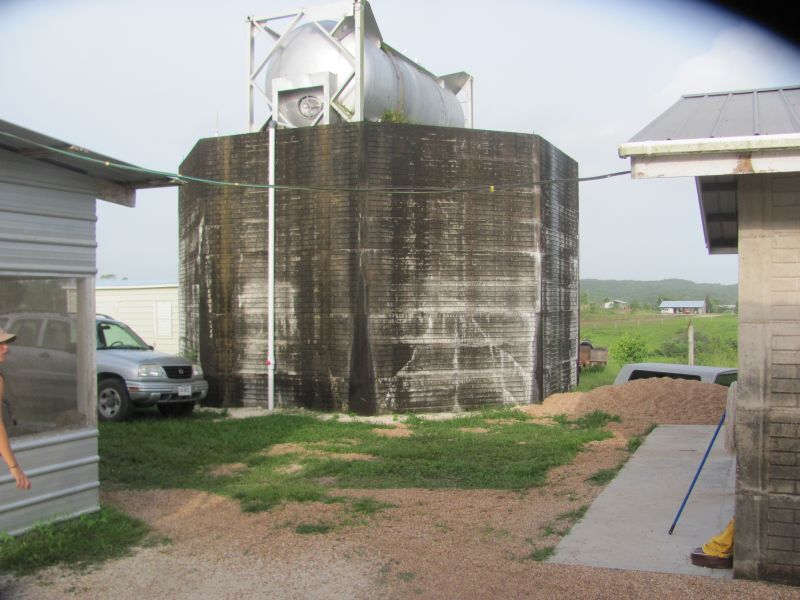
Well and water supply for all of the Blue Creek community. Very good water.
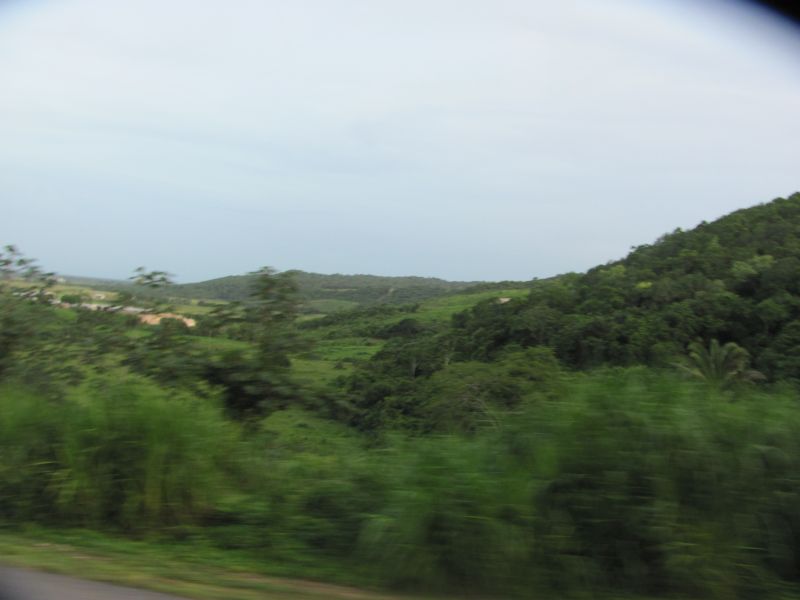 the hills of Blue Creek
the hills of Blue Creek
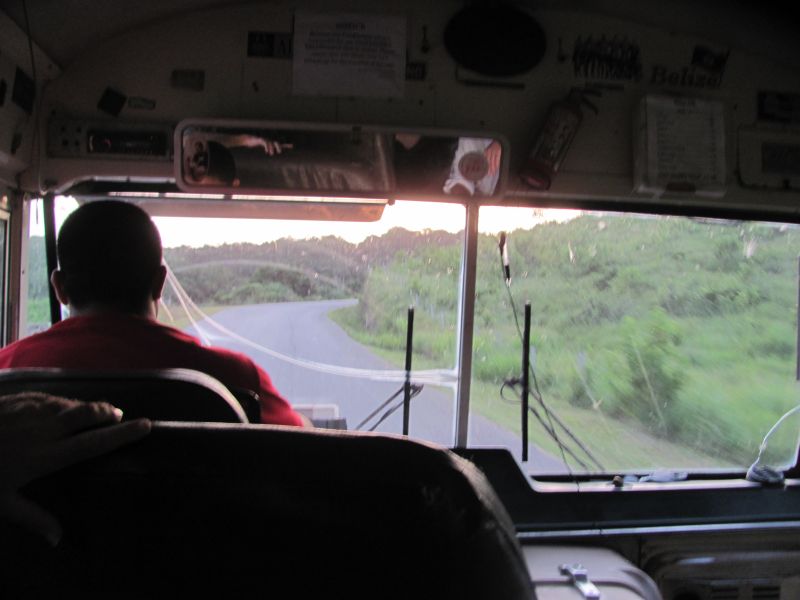 climbing the escarpment in the bus up.
climbing the escarpment in the bus up.
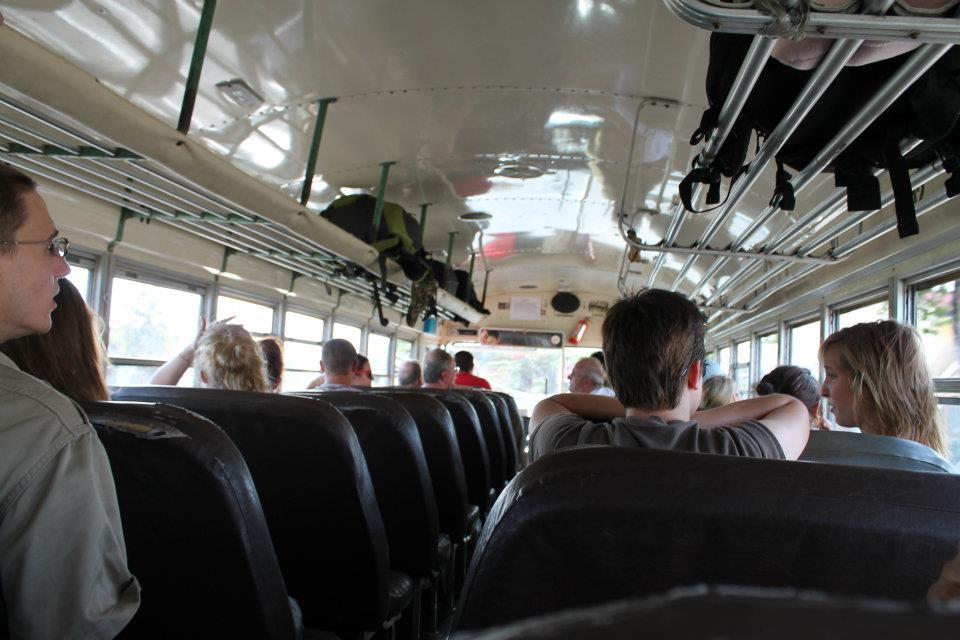
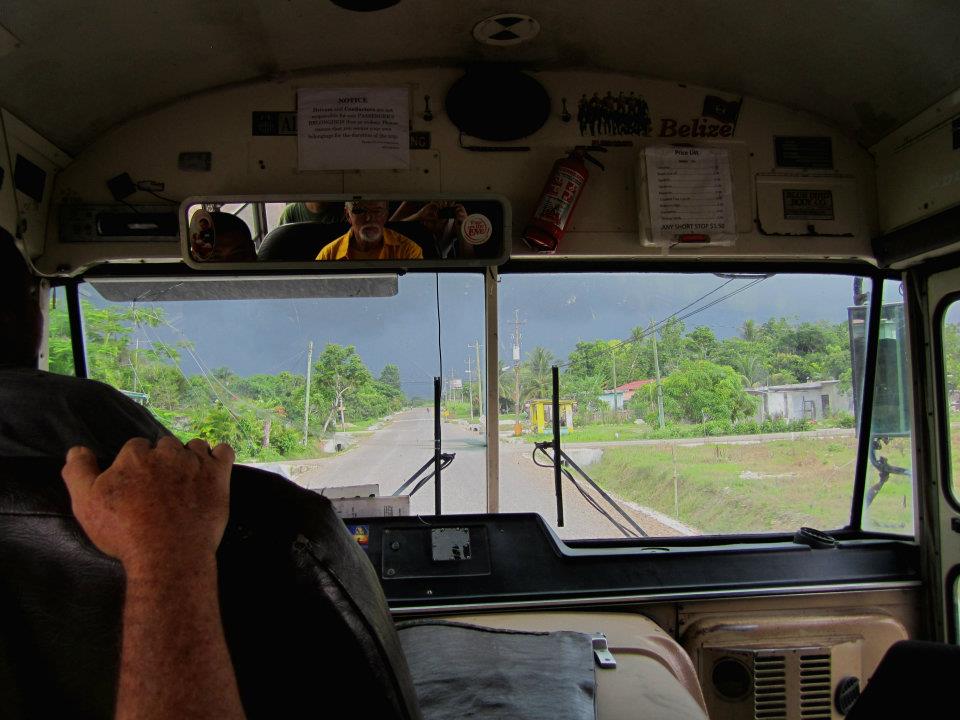
Rain clouds on the bus back to the airport withmy big hand inthe picture and a reflection of me in the rearview mirror.
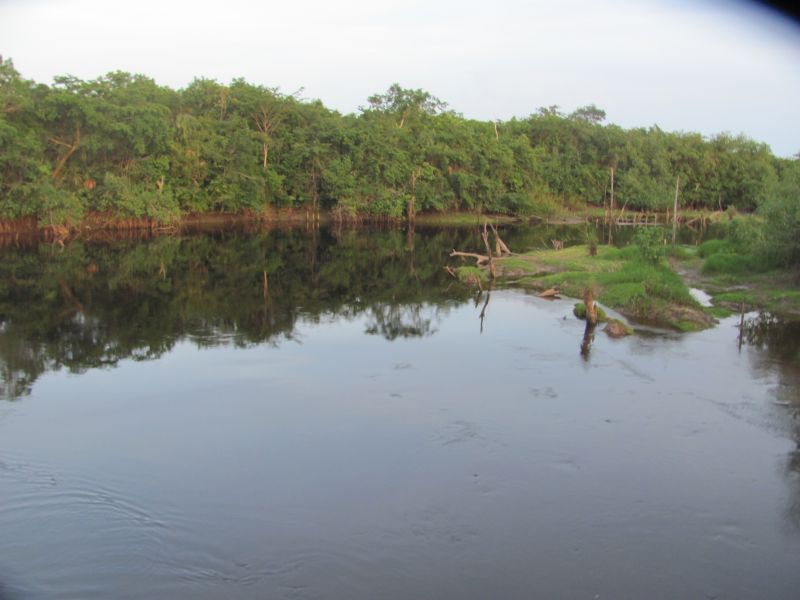 the Rio Hondo river
the Rio Hondo river

This was the first view of the Rio Hondo escarpment where Blue Creek is located and the MRP research station.
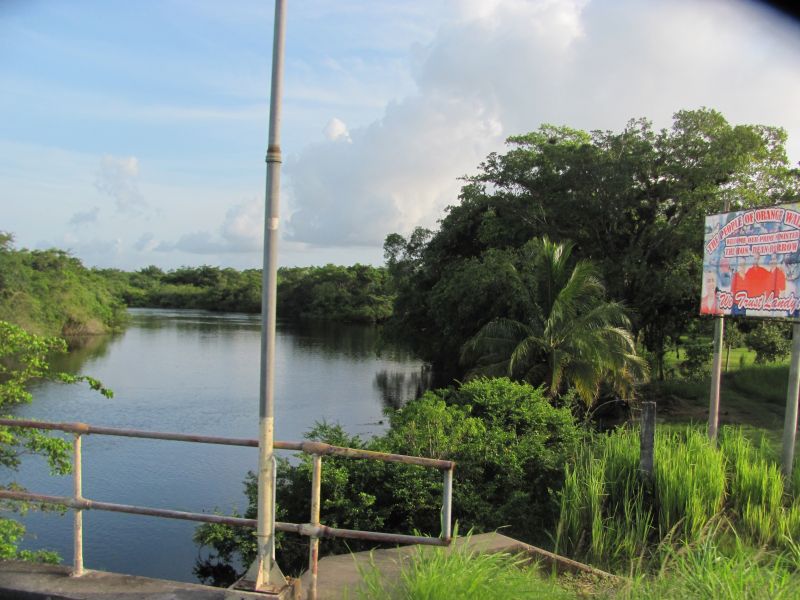 toll Bridge Orange Walk town
toll Bridge Orange Walk town
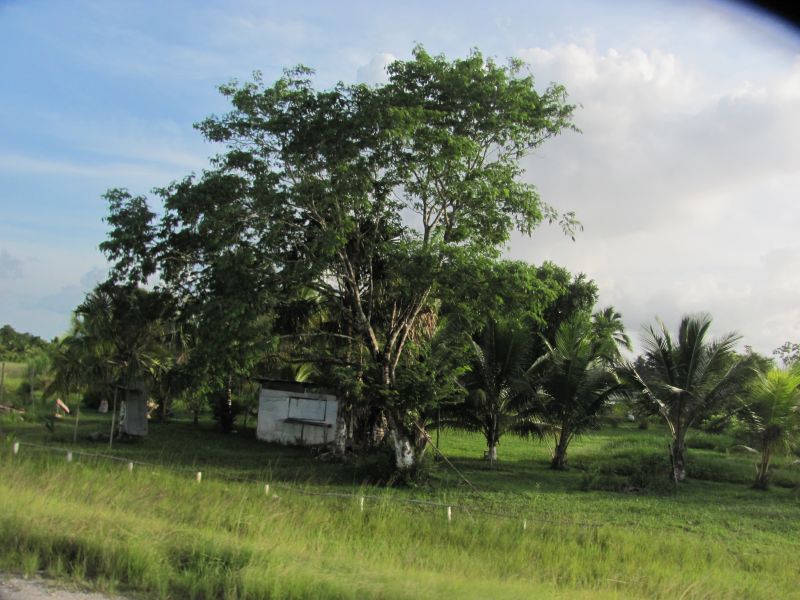 Palm Trees
Palm Trees
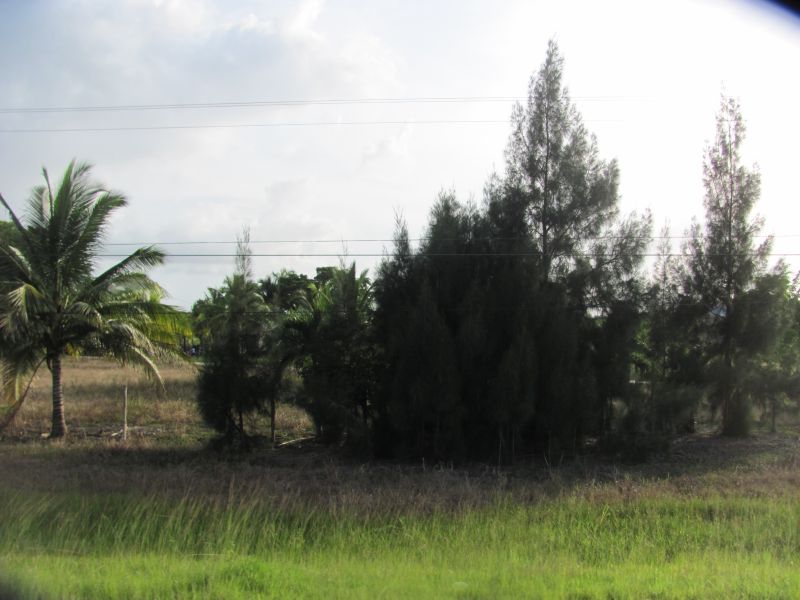
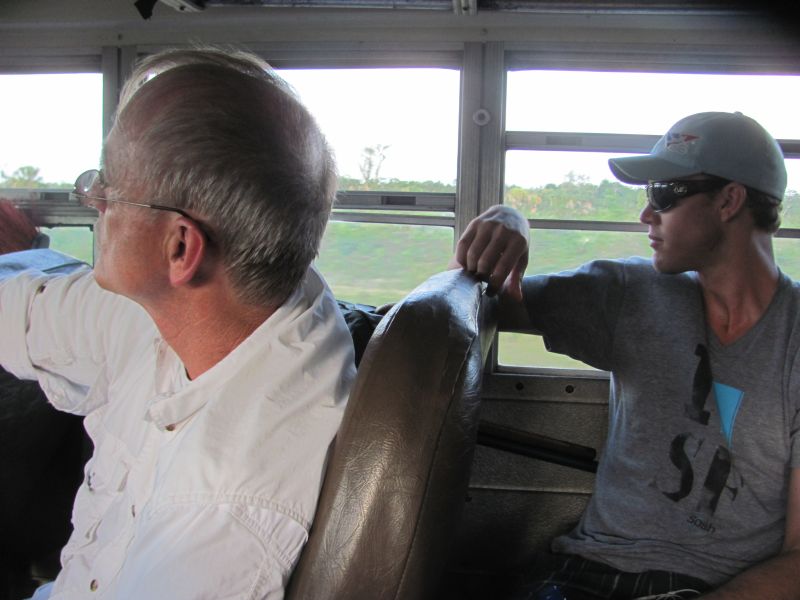
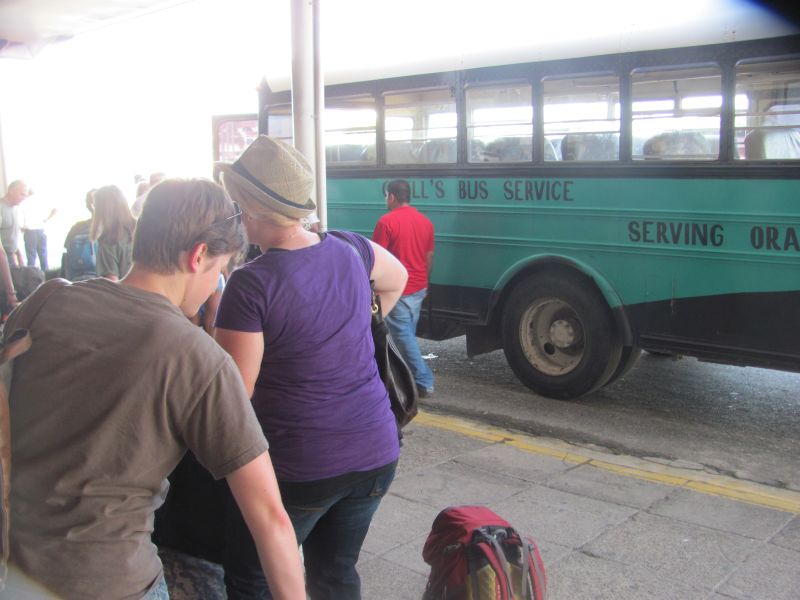 The bus taking us to Blue Creek
The bus taking us to Blue Creek
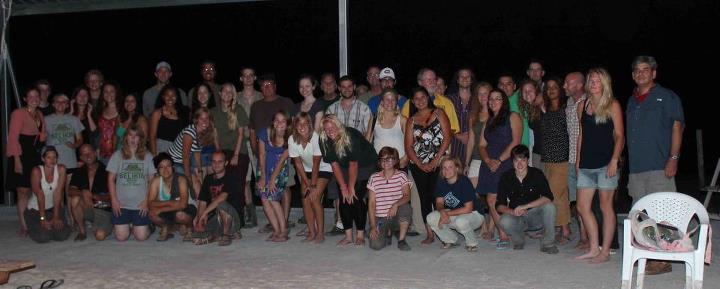
Session 4 group the night before we left
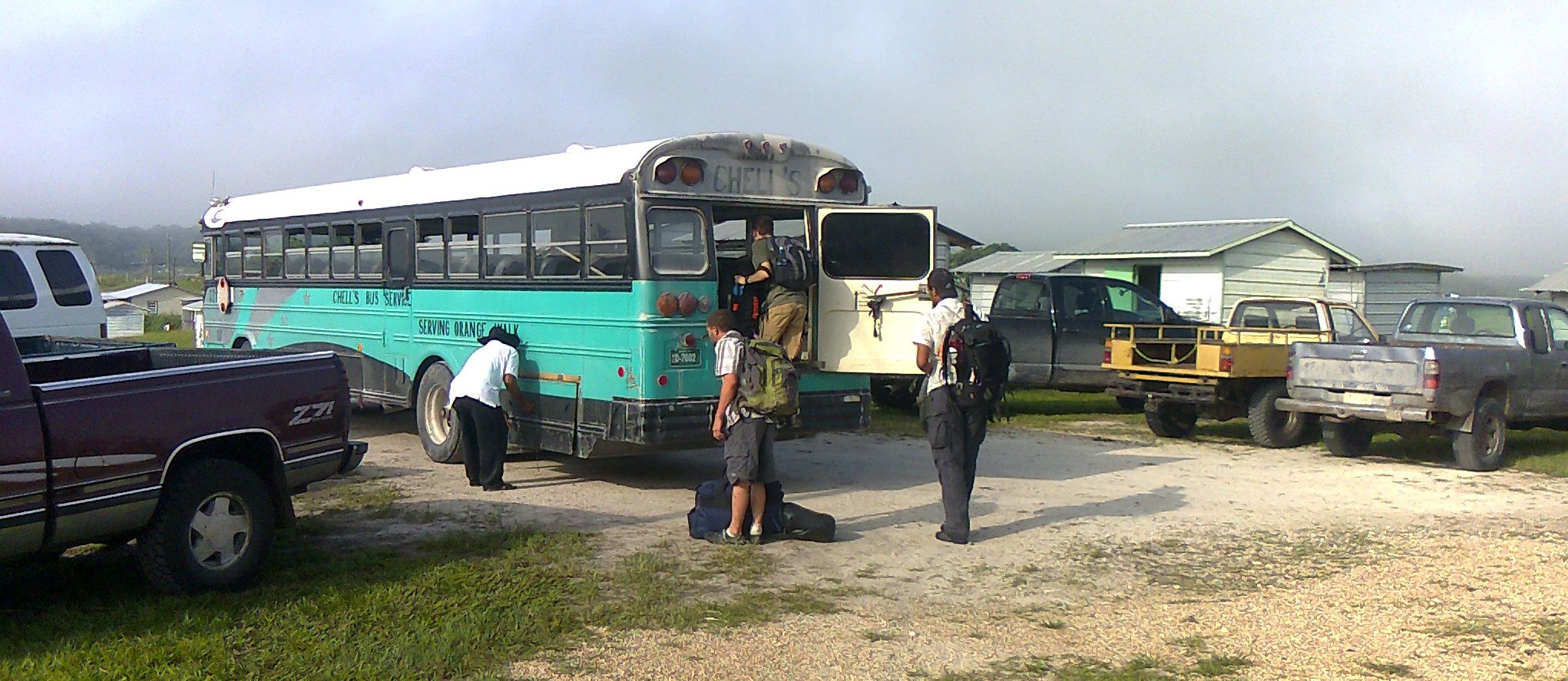
loading up at the station for the trip back to the airport.
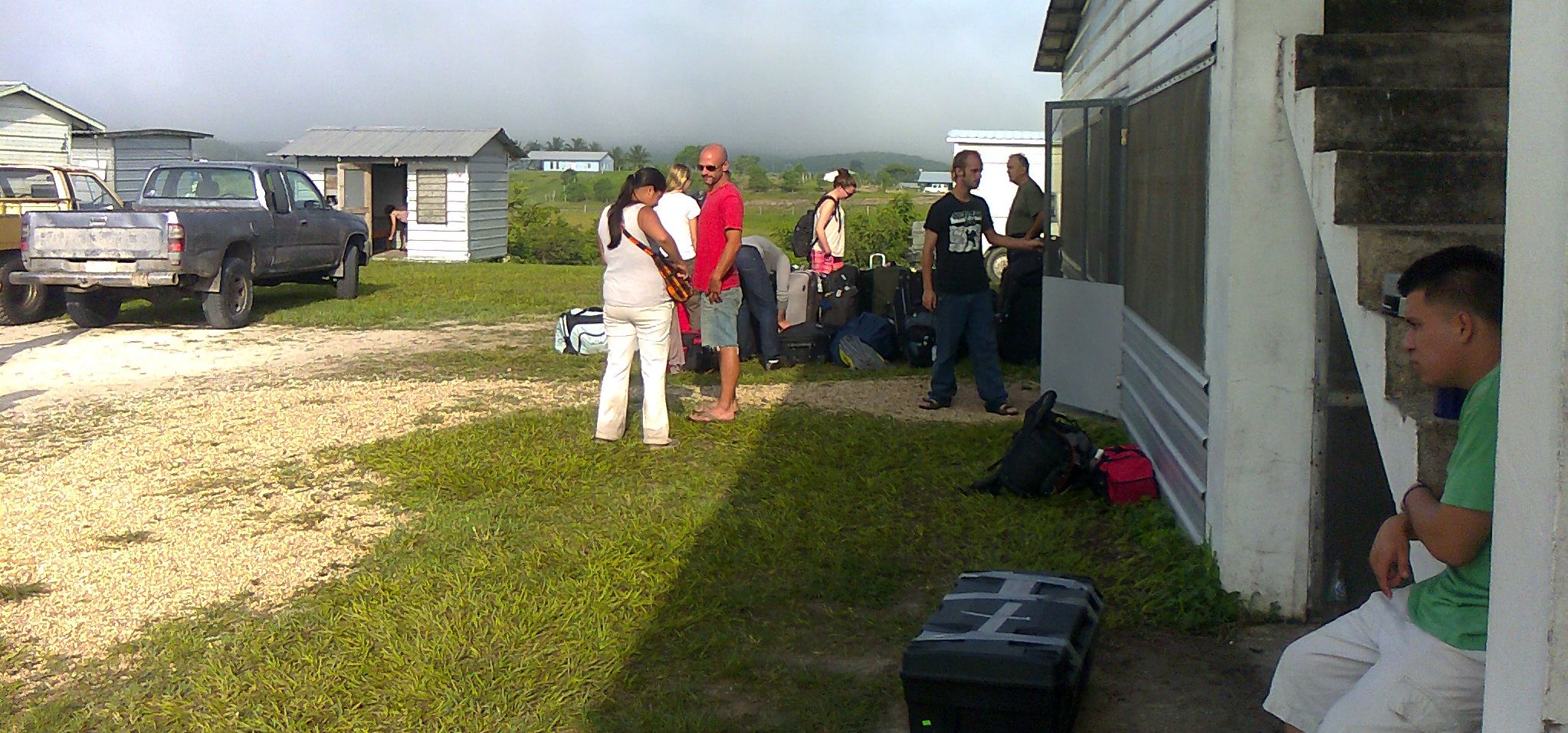
Leaving Blue Creek 4 July 29, 2012 last session of the season for MRP
THE GREAT MAYAN SACRED TREE OF LIFE: "LA CEIBA"
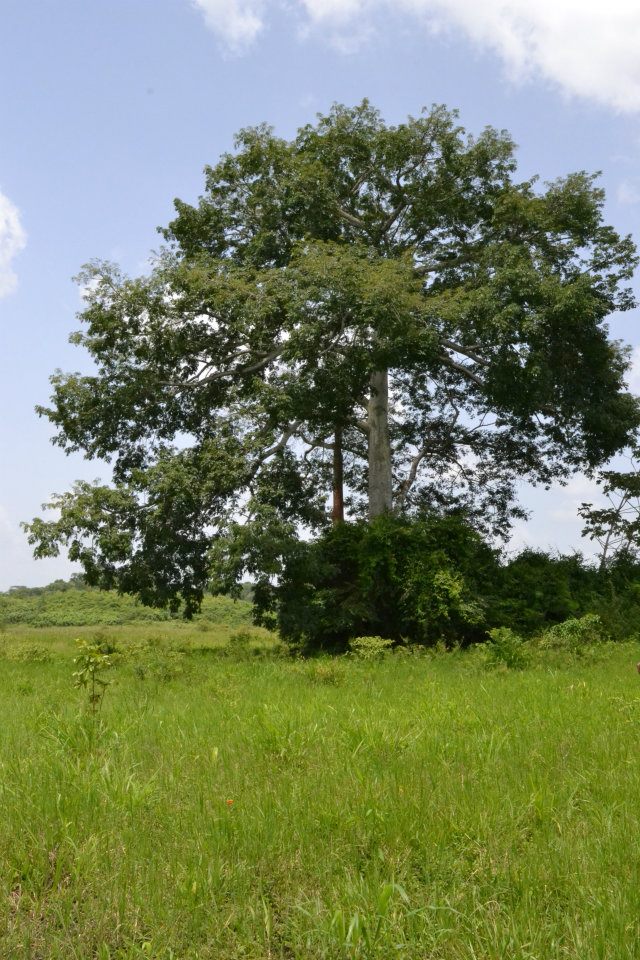
This Tree is in a field on the way to Blue Creek, Orange Walk, Belize
used for making canoes due to the straight grain of the wood and its durability.
The Mayan Sacred Tree of Life is a Kapok tree generally referred to as "La Ceiba" in Yucatan and Guatemala, a Spanish common name for the Ceiba pentandra tree; this tree is also known as the Java cotton or Java kapok.
 SCIENTIFIC CLASSIFICATION:
SCIENTIFIC CLASSIFICATION:
Kingdom: Plantae
Division: Magnoliophyta
Class: Magnoliopsida
Family: Malvaceae Bombacaceae
Genius: Ceiba
Species: Ceiba pentandra
The tree figures in the mythologies of pre-Columbian Mesoamerican cultures, in particular that of the Maya civilization, where the concept of the central world tree is often depicted as a Ceiba trunk, which connects the planes of the Underworld (Xibalba), the terrestrial realm and the skies. The unmistakable thick conical thorns in clusters on the trunk were reproduced by the southern lowland Maya of the Classical Period on cylindrical ceramic burial urns or incense holders. Modern Maya still often respectfully leave the tree standing when harvesting forest timber.[2]
The Ceiba or Yaaxche as the Maya call the Kapok tree Ceiba pentranda, is themost sacred of all Mayan sacred trees. Central to the Mayan ethno-medicine healing traditions (medicinal plants used by the Mayan Healers in the Peninsula of Yucatan and other Maya regions: Chiapas, Belize, Guatemala) that are still kept with great respect and taught verbally by Mayan J-Men who actively practiced the Mayan holistic healing arts; such natural way of holistic Mayan healing is taught from one generation to the next by example and careful study of the Maya medicinal plants in the wild since ancient times.
La Ceiba is sometimes referred simply as the Kapok tree in many parts of the world. This fascinating tropical tree is not only a revered sacred symbol in Maya mythology but an important element in the Mayan Cosmovision, even today.
Kapok or Ceiba, is a tropical tree of the order Malvales and the family Malvaceae (once separated in the family Bombacaceae) native to Mexico, Central America and the Caribbean, northern South America, and (as the variety C. pentandra var. guineensis) to tropical west Africa. Adult trees produce several hundred 15 cm (6 in) seed pods; each pod contains many seeds surrounded by a fluffy, cotton-like yellowish fiber that is a mix of lignin and cellulose.
The fiber obtained from these treesseed pods, is called in Maya “pochote” and was used by the ancient Mayan for various life comforts including clothes. An adult Ceiba tree will normally grow 60-70 m (200-230 ft) tall and has a very substantial trunk up to 3 m (10 ft) in diameter with buttresses. The trunk and many of the larger branches are densely crowded with very large, robust simple thorns, especially when young. The leaves are compound of 5 to 9 leaflets, each up to 20 cm (8 in) and palm like. To read full details click here.
Maya Wiseman or J-Men celebrate even today a highly respected sacred ceremony named: Ya’axche’ : this ceremony represents the connection between Heaven, Earth, Man, and the Underworld for the Maya. Any Sacred Ceremonial Site will have this ceremony performed prior to its full service to the Maya community traditions. In Chichen Itza, such ceremony was celebrated by the J-Men in 2007 when the Hacienda Chichen owners donated a vast portion of their private Maya Jungle Reserve to the Mayan Healers and Priests to continue their Spiritual Mayan traditions in the manner their ancestors taught them. Since then, this sacred site has served as the grounds of many Mayan holistic rituals and sacred mystical ceremonies.
The Ceiba Tree of Life plays an important central part at each Mayan Wedding Ceremony and in other Mayan holistic rituals as well as in many Mayan mythological legends still belief by the Mayan rural people to be part of supernatural dark energies in the form of demons and legendary beings, such as is the case of the Ix Tabay or X'Tabay.
In Chichen Itza, Yucatan, Mexico, Hacienda Chichen has committed to protect the flora (plants) and fauna (animals) living in its private Maya Jungle Reserve and Neo-tropical forest where many Ceibas grow tall and new have been planted to reforest a vast area of land. You can enjoy reading and observing a few photos of the many indigenous animals (Yucatan endemic species) living there, such as: mammals, birds, reptiles (iguanas), butterflies, bees, spiders, mantis and other insects and creatures.
Why did the Mayan civilization collapse (sublimation) in 800's? Trade problems, climate change among the factors cited in new research
A new analysis of complex interactions between humans and the environment preceding the 9th century collapse and abandonment of the Central Maya Lowlands in the Yucatán Peninsula points to a series of events – some natural, like climate change; some human-made, including large-scale landscape alterations and shifts in trade routes – that have lessons for contemporary decision-makers and sustainability scientists.
In their revised model of the collapse of the ancient Maya, social scientists B.L. “Billie” Turner and Jeremy “Jerry” A. Sabloff provide an up-to-date, human-environment systems theory in which they put together the degree of environmental and economic stress in the area that served as a trigger or tipping point for the Central Maya Lowlands.
The co-authors described the Classic Period of the Lowland Maya (CE 300-800) as a “highly complex civilization organized into networks of city-states,” in their perspective article published yesterday in the online Early Edition of the Proceedings of the National Academy of Sciences.

The ancient Maya in this hilly and riverless region confronted long-term climatic aridification, and experienced decadal to century-level or longer droughts, amplified by the landscape changes that they made including large-scale deforestation indicated in the paleoecological record.
Previous to the collapse, the Maya occupied the area for more than 2,000 years, noted the authors, “a time in which they developed a sophisticated understanding of their environment, built and sustained intensive production [and water] systems, and withstood at least two long-term episodes of aridity.”
They document the human-environment interactions that were severely stressed during the 9th century arid phase.
“This environmental stress was complemented by a shift in commercial trade from across the peninsula to around it, which reduced the economy of the ruling elite to keep up the livelihood infrastructure to prevent the tipping point,” said Turner, a Distinguished Sustainability Scientist with the Global Institute of Sustainability at Arizona State University.
“The decision was made to vacate the central lowlands rather than maintain the investment. This theory is not only consistent with the data on collapse but on the failure of the central lowlands to be reoccupied subsequently,” said Turner. “It acknowledges the role of climate change and anthropogenic environmental change, while also recognizing the role of commerce and choice.”
Co-author Sabloff noted that rather than a monolithic period of collapse, there were many variable patterns, which is consistent with the thesis Turner and he advance. “The only way to explain the variability is to take a complex systems view,” said Sabloff, president of the Santa Fe Institute.
“The Maya case lends insights for the use of paleo- and historical analogs to inform contemporary global environment change and sustainability,” wrote the authors. “Balance between the extremes of generalization and context is required.
“Climate change, specifically aridity, was an important exogenous forcing on human-environment conditions throughout the Maya Lowlands,” they concluded. “Complex system interactions generated the collapse and depopulation of the (Central Maya Lowlands) and fostered its long-term abandonment. This lesson – increasingly voiced in the literature – should be heeded in the use of analogs for sustainability science.”
Their article, ‘Classic Period collapse of the Central Maya Lowlands: Insights about human–environment relationships for sustainability‘ is available from the Proceedings of the National Academy of Sciences.
Source: Arizona State University
Experimental Archaeology burning Copal.
Copal
This is tree sap from Mexico that is similar to Frankincense. When burned it has a crisp, clean, sharp scent that is almost citrus-like. Copal is sacred to the native peoples of Mexico, as it is a gift 'pleasing to the gods.' Because copal is the blood of trees, it is offered to honor the enormous gift given to us by all of the tree people of our planet. Burning Copal is best done on Charcoal 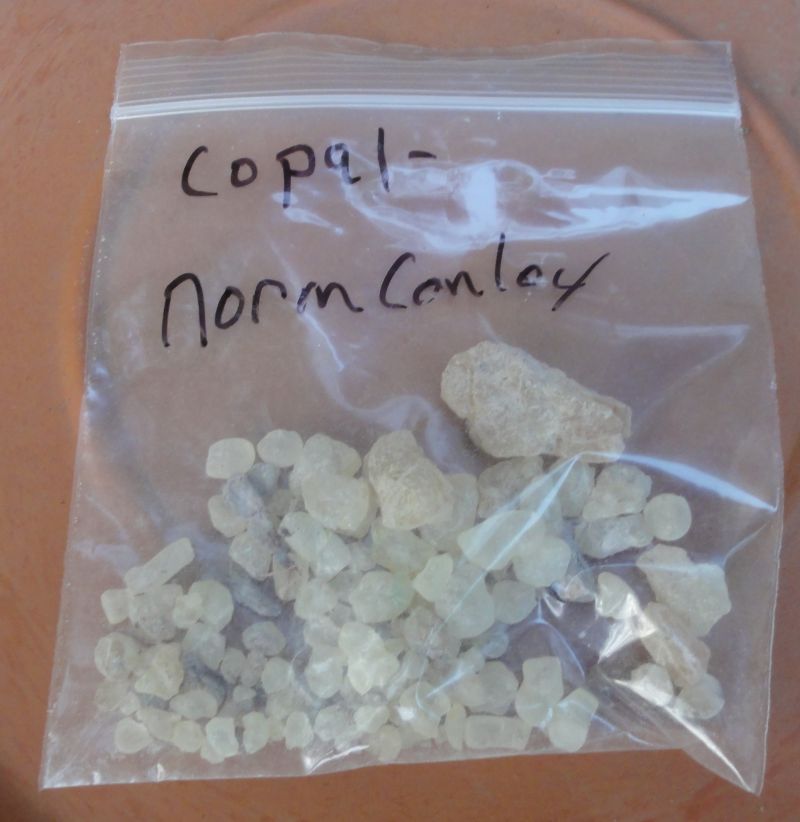
Sacred Offering
The ancient Maya believed that copal resin was very sacred. The ancient Maya burned the resin in balls or lumps, both lower and upper classes. Incence burners that the ancient Maya used ranged from ceramic and wooden burners to ones made from gourds. When the incense burned, the ancient Maya thought the gods came down to eat the smoke.
On a side note to this, one kind of glyph shows a god diving down with a ball of copal in each hand. This may have something to do with the idea that the gods came down for the smoke.
Unburned copal also seems to have been given as an offering. When the Well of Sacrifice at Chichen Itza was excavated, one of the things they found was balls of copal. These balls had been painted blue-green and sometimes had shaped pieces of jade -- such as disks and balls -- set into them.
Practical Uses
Copal resin also had other uses. In order to get cinnabar to stick to greenstone carvings, the ancient Maya would use copal as a glue. They would place a thin layer of copal where the wanted the cinnabar to stick. Similarly, they used copal as a binder in their paint.
Copal resin was also part of the ancient Maya's medicine. In the Yucatan area, before European contact, copal was used for various things such as curing headaches. .
The ancient Mayans had a very interesting and rather painful way of contacting the gods and their royal ancestors. They invented a ritual that used bloodletting, fasting, and smoking of tobacco as a means to induce hallucinations, allowing them to commune with their gods and ancestors.
The serpent was an important figure among the ancient Mayans. They believed that the serpent, with the ability to shed its skin, was a symbol of renewal and birth and fertility. The ancient Mayans also believed that the sun and stars moved across the heavens by hopping aboard a serpent and riding across the heavens. Their supreme god, Quetzalcoatl, is commonly depicted as a feathered, or bearded serpent, as well as many other ancient Mayan deities. 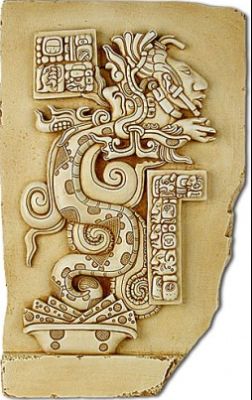
The ancient Mayan smoke serpent ritual would begin with a few days of fasting. Then the participants would prepare a fire in a ceremonial pot. Then they would light the ceremonial pipe and take a few puffs of tobacco. Then the bloodletting would begin. The participants would pierce various parts of their body, some of the most common were the tongue and an important part of the male anatomy. They would allow the blood to soak into ceremonial papers, which they would then burn as an offering to the gods. This would raise a pillar of smoke through which the vision serpent could appear. If they were successful, they would envision a serpent, which would open its mouth, and through the serpent, the gods and ancestors would speak to them.
And there you have it. A painful but effective way to induce hallucinations, and possibly contact an ancestor or a god or two. Personally, I'd rather pay a professional psychic, or utter a prayer, but there's just nothing like a good ritual to appease the gods.
The elite were obsessed with blood - both their own and that of their captives - and ritual bloodletting was a major part of any important calendar event.
Blood letting and sacrifice rituals had the combined purpose of sending human energy skyward and receiving divine power in return. It was also a way of calling forth the Vision Serpent, from whose mouth ancestors from the otherworld would appear and speak.
Murals have been discovered where the Lady Zok of Yaxchilan, holding a bowl of paper soaked with her own blood, sees her vision serpent arise from another bowl of bloody paper. Emerging from the serpent's open jaws is the founder of her husband's lineage.
Methods employed
A king used an obsidian knife or a stingray spine to cut his penis, allowing the blood to fall onto paper held in a bowl. Kings' wives also took part in this ritual, shown on many examples of Mayan art, by piercing their own tongues and threading a thin rope with thorns attached through the hole, thus letting the blood run down the rope to the paper. The blood-stained paper was then burned, the rising smoke directly communicating with the Sky World.
Although not exactly like Gonzola ____ described I obtained Copal resin and charcoal burned it in the closest thing to an incense burner with a Olla over it. It does put plumes of smoke up that look a little like a serpent. The smell is like a mild incense. As a scientist I also bought some Myrrh and Frankincense and tested them. The smell was disappointing with the Myrrh was a little woody that might have been because it did not look 'cleaned'. The Frankincense was sort of non descript but more pleasing smell. I tested a second source for the copal today and the smell and results were the same as the first batch. I tried the Myrrh again with better results but the copal smells the best. I understand why is is sometimes used in the Sun dance sweat lodges. I did not observe any serpents eating the smoke but that is just me...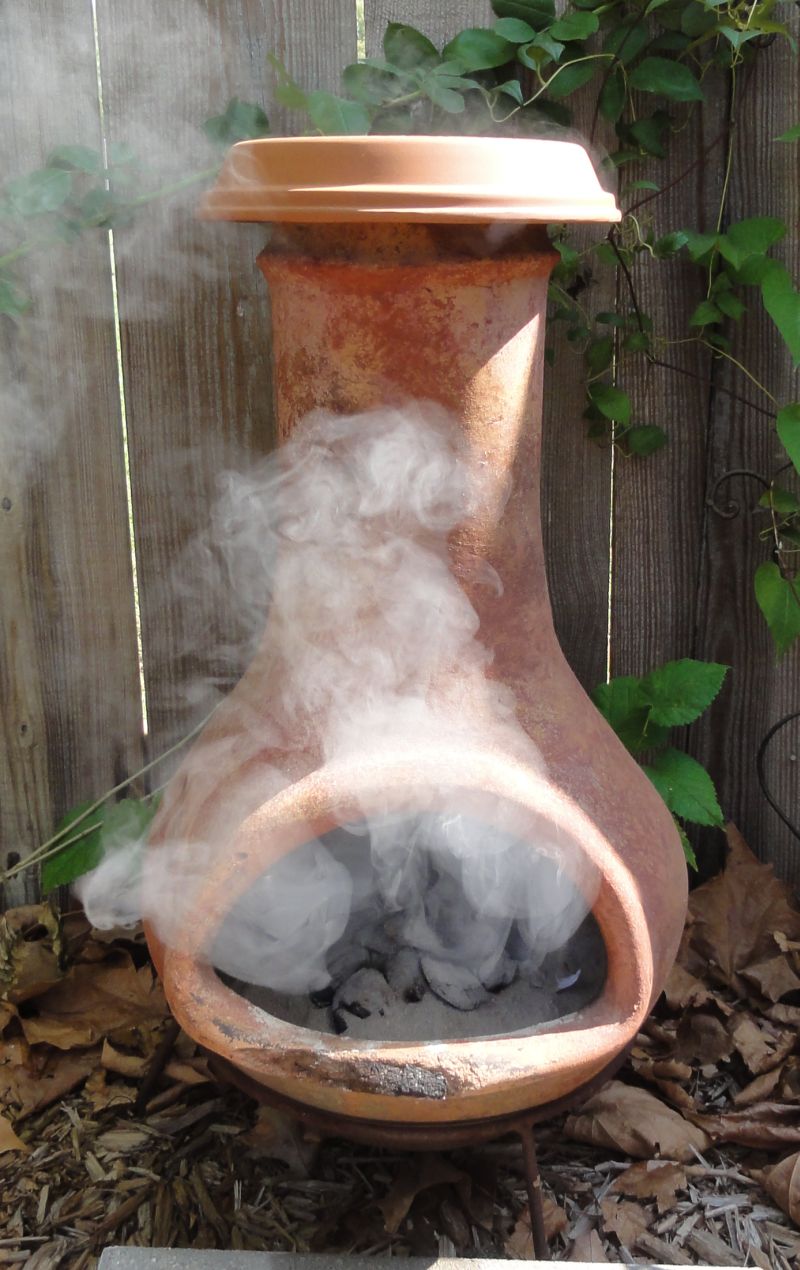
The Maya elite consumed Chocolate
here is
Belize Organic Single Batch chocolate.... The cotton Tree is the The Mayan Sacred Tree of Life
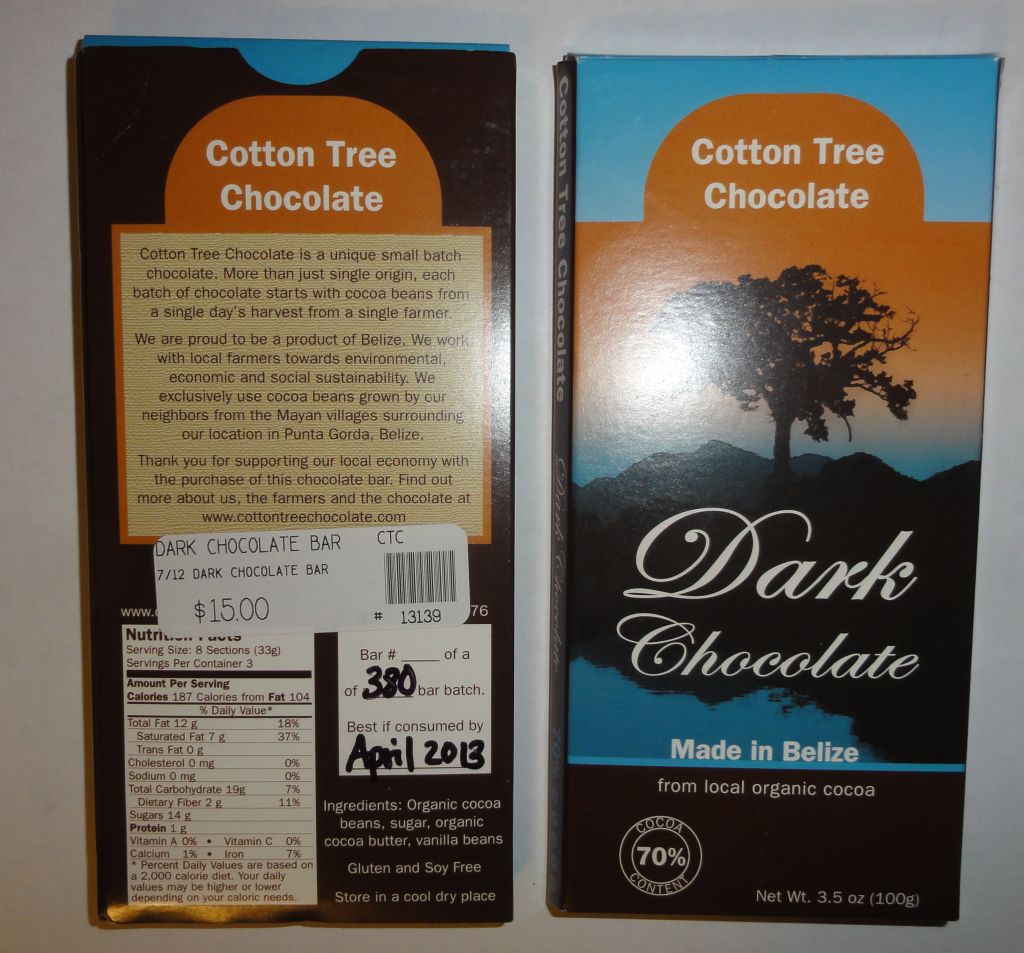
The Cacao bean, and chocolatl
Peter Singfield here -- From Belize Central America, the land that invented "chocolatl" -- or natural viagro.
The Cacao bean was real currency. Traded by the Cacahuateros. 6 beans bought a turkey, according to Bernal Diaz del Castillo in his work "The Conquest of Mexico" (1517-1521)
Only the very rich could afford to drink their money!! And the reason for this incredible value was the simple fact that the drink "chocolatl" was reliable in expanding the artery leading to the penis thus allowing regular sexual activity in older men through sustainment of a good erection.
Do not confuse this with the genetically altered brand of "Chocolate" you consume. It has no such properties!!
Personally I drink chocolatl every morning -- like most people drink coffee -- which I do not. Chocolatl is a great way to break the coffee habit. I could write reams on this subject -- but have neither time or inclination.
The modern "craze" for chocolate is so far separated from its historical use that there just is no point to rain on all your parades.
Suffice to say -- the real chocolate (which is no longer available -- what you all love is a genetically bred variation that replaces the real stuff with fat -- except what I have growing in my back yard here -- which is directly descended from the original Mayan stock) was neither prepared or used as it is today.
The beans are fermented in a mash made from the sweeter pulp of the fruit. These seeds when extracted are "bitter". This then lightly roasted and ground into a powder. The bean used in trade (cash) is simply the dried bean. I have some laying around that must be at least 100 years old!! So they have a great shelf life in that form.
A very close equivalent to the real stuff is produced in Jamaica and is called: "Roma Cocoa"
According to the nutritional facts printed on the side of the can, Total Fat -- 0
So no fun for the modern Coco "nut"! Though this product is not the original, it is as close as one can come.
Here is how I brew "chocolatl"
Boil up 12 ounces of water -- pour into a blender which has --
6 large Jabenero Chilli Peppers
2 ounces honey
2 table spoons (heaping) Roma Cacoa "powder"
Blend thoroughly.
Drink in tiny sips -- over at least one hour!!
For the people that may try this -- start with 1/4 of one jabenaro pepper. It takes about two years to "build" up to a real chocolatl drinker!!
Of further interest: The Honey!!
The Honey was very special -- known for its aphrodisiacal properties. Modern science of about 40 years ago labeled it testosterone honey.
Theoretically still available here -- I have not been able to acquire any quantities for the past five years. It is getting very modern in Belize these days and even the most isolated Mayan villages have TV and practice being "American" now -- so customs are a changing.
I must say -- that the many American Expats living here, that I have introduced to this old technology, highly appreciate it.
This is a natural product that supported Cocoa production as a literal "money" tree for many thousands of years -- trading with nations as far as Egypt long before the modern USA was even a twinkle in the eye of history.
Just thought you might be vaguely interested in what Cocoa was before being "commercialized".
Foot note -- it would require very little investment to start producing the "real" thing again. But why bother -- you do have "sweet fatty Cocoa" to pleasure your taste buds and viagro to do the other thingy. You "moderns" are such a trip:)
Further details on how this works...
Original Theobroma Cacao contains theobromine. Caffeine (coffee), theobromine (Cacoa) and theophylline (tea) are all closely related derivatives of Xanthine.
Xanthine, found in urine, liver and muscle, as well as tea leaves, is related to uric acid and to other purine derivatives occurring in the plant and animal kingdoms.
Caffeine is a vasoconstrictor (diminishing blood volumes) -- keeps the dick limp!! Keep in mind, that Viagro works by vasodilation of the blood to the penis. So coffee is poison to sex life in older men.
Caffeine is the strongest stimulant -- however -- of the tree.
Theophyline is from our common tea.
Theobromine is from Cacoa. To quote:
On the central nervous system, caffeine is the most powerful stimulant, theophylline (tea) is less stimulating and theobromine least so.
Theobromine has been and to some extent continues to be used in medicine as a diuretic, a myocardial stimulant and a dilator of coronary or peripheral arteries.
Many proprietary combinations of theobromine are marketed (shades of Viagro??)
Neither theobromine or viagro stimulates production of seminal fluid or sperm, my product "Root" does that. But Root does not loosen up the delivery system of blood that charges the "rod". Older men all suffer from varying degrees of articular sclerosis in that pathway leading to the penis. Blood is what pumps up the erection.
As for the actual recipe the ancients used -- I just have part of their ingredients. The main one being the Cacoa. Followed by the Testosterone Honey (that makes the sperm and seminal fluids increase!!) and the Jabenaro is the "vitamins".
"Root" (my proprietary product) is made from Smilax glabra (China Root or Coclmecca -- the real stuff!) and Gangweo (which has never been scientifically cataloged) brewed according to a very complicated procedures involving four extractions at varying steam pressures that requires three days of continuous work to complete.
It works by triggering the older human body to produce hormones. Kind of like a fountain of youth. Not only the testosterone, but all of them steroids and hormones -- works in woman or man. And not foreign to the body, but produced by the body. One hell of a difference.
If you have a spare three months (the length required to feel the effects) come see me and we'll run some experiments. However, there already exists a thousand or so that have and agree it works.
Medically I use it for post menstrual osteoarthritis in woman and benign hyperplasia prostrate (BHP). It also relieves arthritis of all forms.
The sexual rejuvenation that occurs in older men and woman taking this product is purely a side effect -- so just pay it no mind.
As to the classical Maya and Cacoa -- well, smilax glabra is not supposed to exist outside of China!! Must be that was part of the Cacoa regimen?? Why else would they have been raising it here, in the heart of Cacoa country??
Peter Singfield
Xaibe Village
Belize Central America
The Last Medicine Man
http://www.tzabcan.com
snkm@btl.net
For information on BPH, Prostatitis, Malaria, and Diabetes Treatments,, and just a little more "enlightened" version of medicine, click here for "Reflections of a Medicine Man".
Back to History of Ambergris Caye
Blue Creek Orange Walk District Belize grown Rice
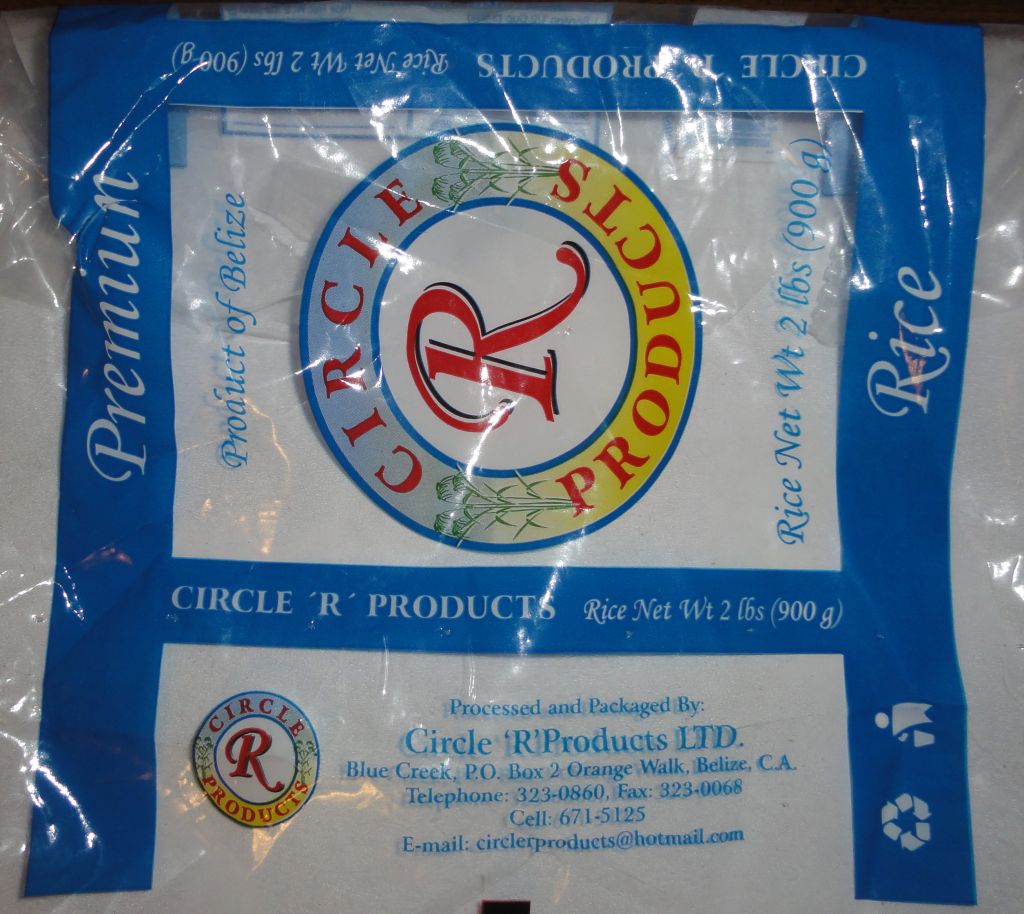
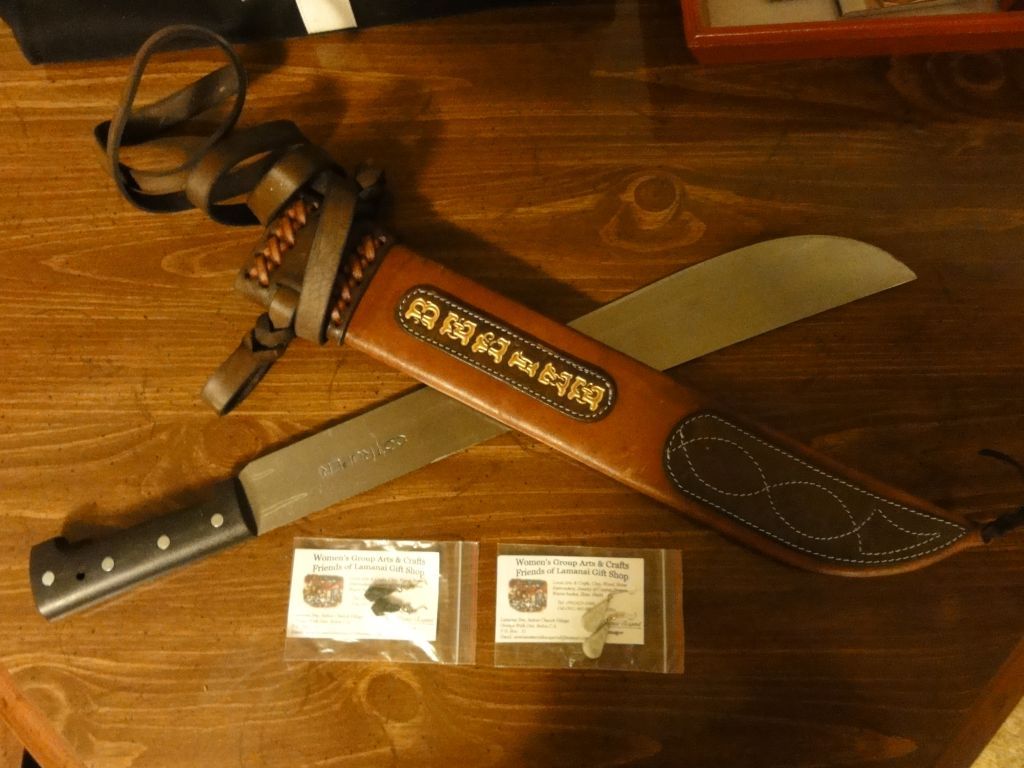
We saw the oil drilling pad site coming and going to Tulix Muul every day during the 4th session. It is south of the east west road to Tulix Muul and between Ixnoha and Tulix Muul. I believe the road maybe called Cool shade?? Google Earth image is too old to show the details. With their drilling schedule the next MRP field season the Blue Creek area will really look different. Can you imagine the job of getting the biggest component of the oil rig around the corner in San Felipe by the school?
New World Oil and Gas exploration 15 kilometers west of Blue Creek, Orange Walk, Belize
Here are Kansas Artifacts dedicated to the Archaeology of Kansas from Wichita State University (updated 10/2011)
-
Chocolate
Cacao is endemic to the lands of the Maya, who were the first to take the seeds of the fruit and roast them to make hot chocolate. The ancient Maya didn’t make candy bars, nor did they add sugar and milk to the cacao. Instead they took their chocolate as a ceremonial elixir and a savory mood enhancer.
For the Maya, cacao was a sacred gift of the gods, and cacao beans were used as currency. Ek Chuah, the Maya god of merchants and trade, was also the patron of the cacao crop. When the Spanish invaded Maya lands in the 1500s, they adopted the beverage, adding sugar and milk to make it sweet and creamy. To learn more about cacao and taste chocolate, visit the Ecomuseo del Cacao in the Puuc region of Yucatán, www.ecomuseodelcacao.com.
- Avocados and Guacamole
The avocado, originating in southern Mexico and Guatemala, is loved for its rich taste and creamy texture and was a treasured crop of the ancient Maya. Even today a person from Antigua Guatemala is called a panza verde, or green belly, because of the region's reliance on avocados in hard times.
Combined with chilis, garlic, cilantro, onions, and lime or lemon, avocados become guacamole, a sumptuous appetizer. Don’t expect to find lots of Hass avocados in the Maya world—there are many other varieties, most of which are bigger.
In 1917, Wilson Popenoe, a California Avocado Association explorer, reported why Guatemalan avocados are best: “The flesh is of a deeper yellow color, smoother, more buttery [in] texture, and richer [in] flavor than any varieties yet known in the United States.”
- Poc Chuc
This distinctly Yucatecan dish dates to the days before refrigeration, when meat was preserved with salt. Slow-cooked pork is combined with sour orange juice and vinegar to temper the saltiness of the meat. The orange juice refreshes the salted pork and gives it a tangy flavor—“sour orange” is a variety of orange; the juice hasn’t gone sour. The dish is topped with onions sauteed with coriander and a bit of sugar.
Julio Bermejo of Tommy’s Mexican Restaurant in San Francisco, which serves Yucatecan specialties, says his favorite restaurant in Yucatán is Restaurante El Príncipe Tutul-Xiu, in Maní: “They make the best poc chuc on Earth!”
- Michelada
Southern Mexicans like to add some spice to their food—and their beer. A michelada (or chelada in some parts) infuses cerveza with lime, coarse salt, pepper, and shots of Worcestershire and/or Tabasco sauce, served in a chilled, salt-rimmed glass. Some versions also include soy sauce or Maggi seasoning. It sounds odd, but it’s refreshing and well suited to a hot day—or a rough morning.
If the spices sound a bit much, try a simple version, which blends just lime juice and salt with a light beer, like Corona or Tecate. It’s so popular that Miller and Budweiser have created their own versions of michelada, but of course there’s nothing like the real thing.
- Corn Tortillas
Handmade Guatemalan tortillas provide an elemental satisfaction. In outdoor markets, you can hear a rhythmic clapping as women pat them into shape, then cook them on a comal, a big wood-fired iron or clay pan that looks like a Caribbean steel drum. These tortillas are only three or four inches across but thicker than what North Americans are accustomed to.
The Maya creation myth says people were made of masa (corn dough), and this remains the essential element of the indigenous Maya diet. Hot off the comal, tortillas are immensely satisfying, an ideal accompaniment to Guatemalan black beans, a perfect base for a layer of guacamole.
· light red drink is agua de jamaica, known simply as jamaica, (pronounced ha-MY-ka) made from hibiscus flower calyxes, water, and sugar. It’s high in vitamin C and an ideal way to temper the summer swelter.
Another popular refresco in the Yucatán Peninsula and beyond is horchata, a blend of rice milk, ground almonds, cinnamon, and sugar. Some varieties have chufa (tiger nut), vanilla, or barley. The result is almost like a milkshake but not as thick or rich. A horchata complements spicy food.
· Authentic Tamales
No culinary exploration of Maya life would be complete without tamales. Made from masa harina (corn flour) and filled with chicken, pork, vegetables, and/or cheese, tamales are wrapped in corn husks—or a banana or plantain leaf—and steamed. Then they’re unwrapped and topped with salsa. Some tamales are made with fruit or other sweet fillings. In much of the Maya world, indigenous women walk door to door selling baskets of fragrant tamales.
Enjoyed long before the Spanish invasion, tamales are a staple of Maya holiday celebrations and festivals. Tamales are even depicted in ancient Maya glyphs and excavated artifacts.
· “Dog Snout” Salsa
This fiery salsa, made with habanero chilis, is not for the faint of palate. It’s very spicy and should come with a warning label that it may make you cry. It’s called “dog snout salsa” because its intense heat can make your nose moist.
In much of the Yucatán Peninsula, this salsa, also known as xni-pec, includes not just the traditional tomatoes, onions, cilantro, and lime, but also orange or grapefruit juice. In Guatemala, less spicy fresh salsas are served alongside bottled hot sauces. For a shot of fire, grab the bottle of Maya-Ik, a hot sauce with a Tikal temple on the label. I always buy some Maya-Ik to take home, a piquant reminder of the flavors of the Maya world.
Michael Shapiro is co-author of Guatemala: A Journey Through the Land of the Maya and author of A Sense of Place. To see more of his writing, visit www.michaelshapiro.net.